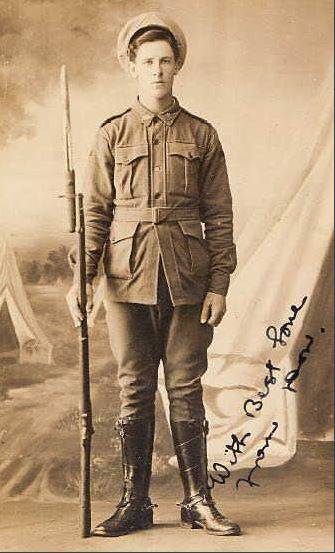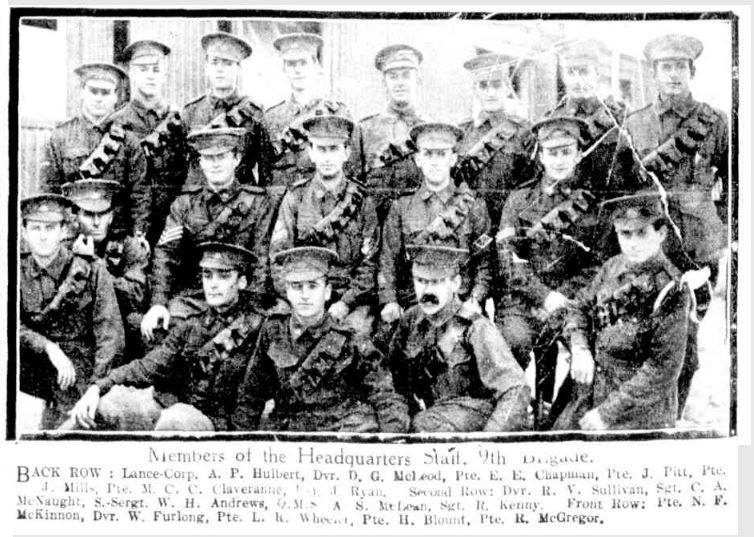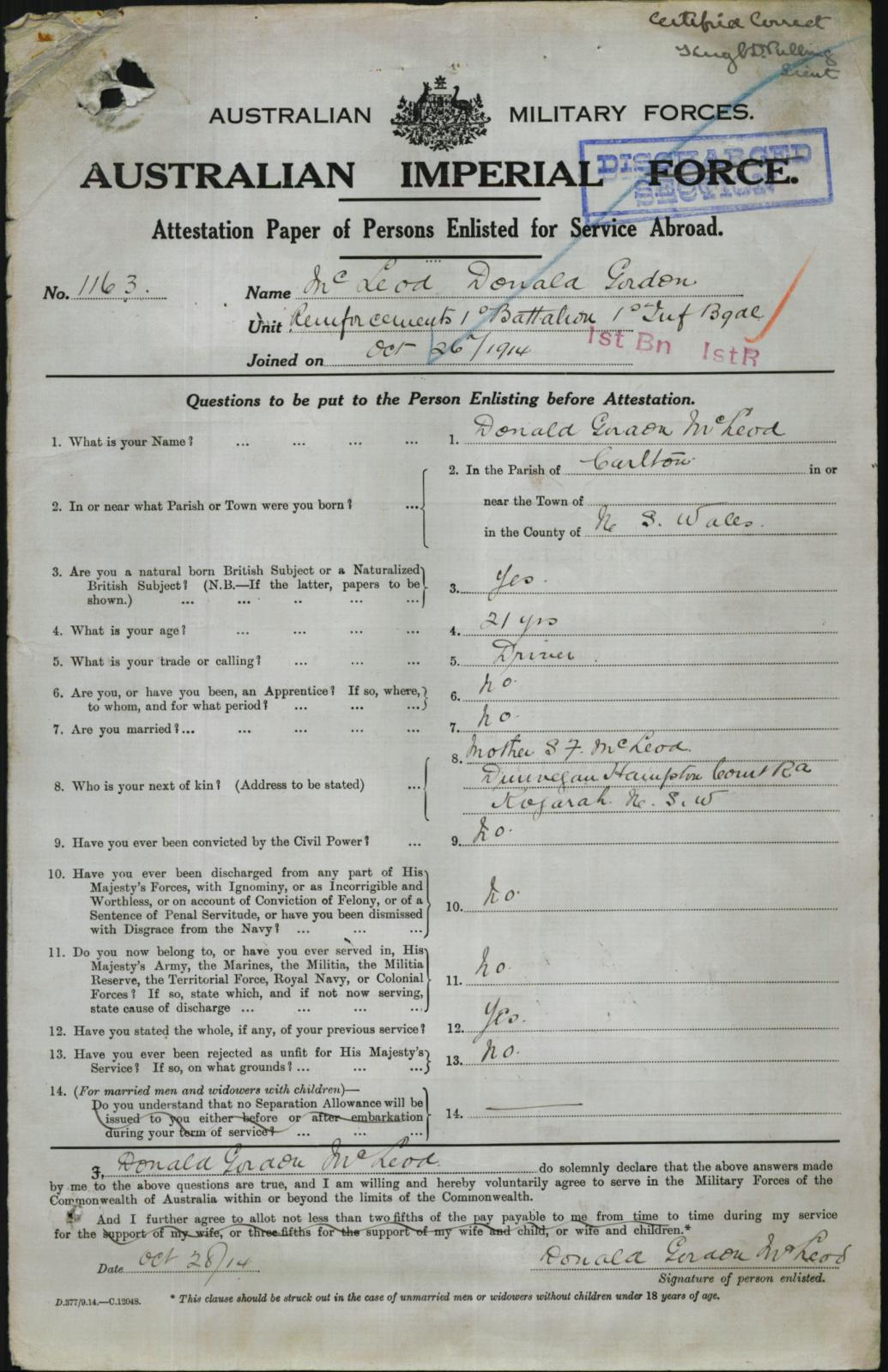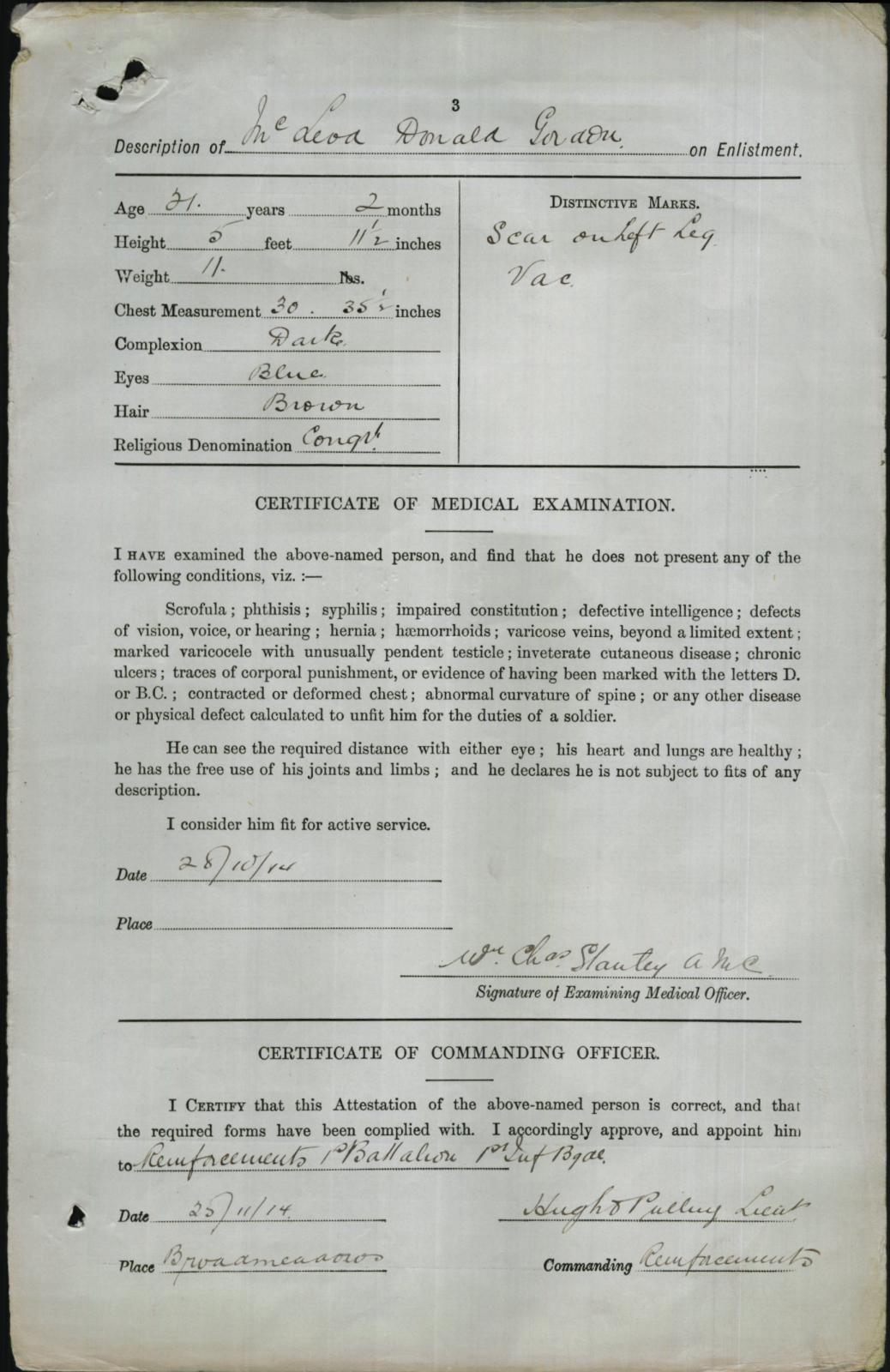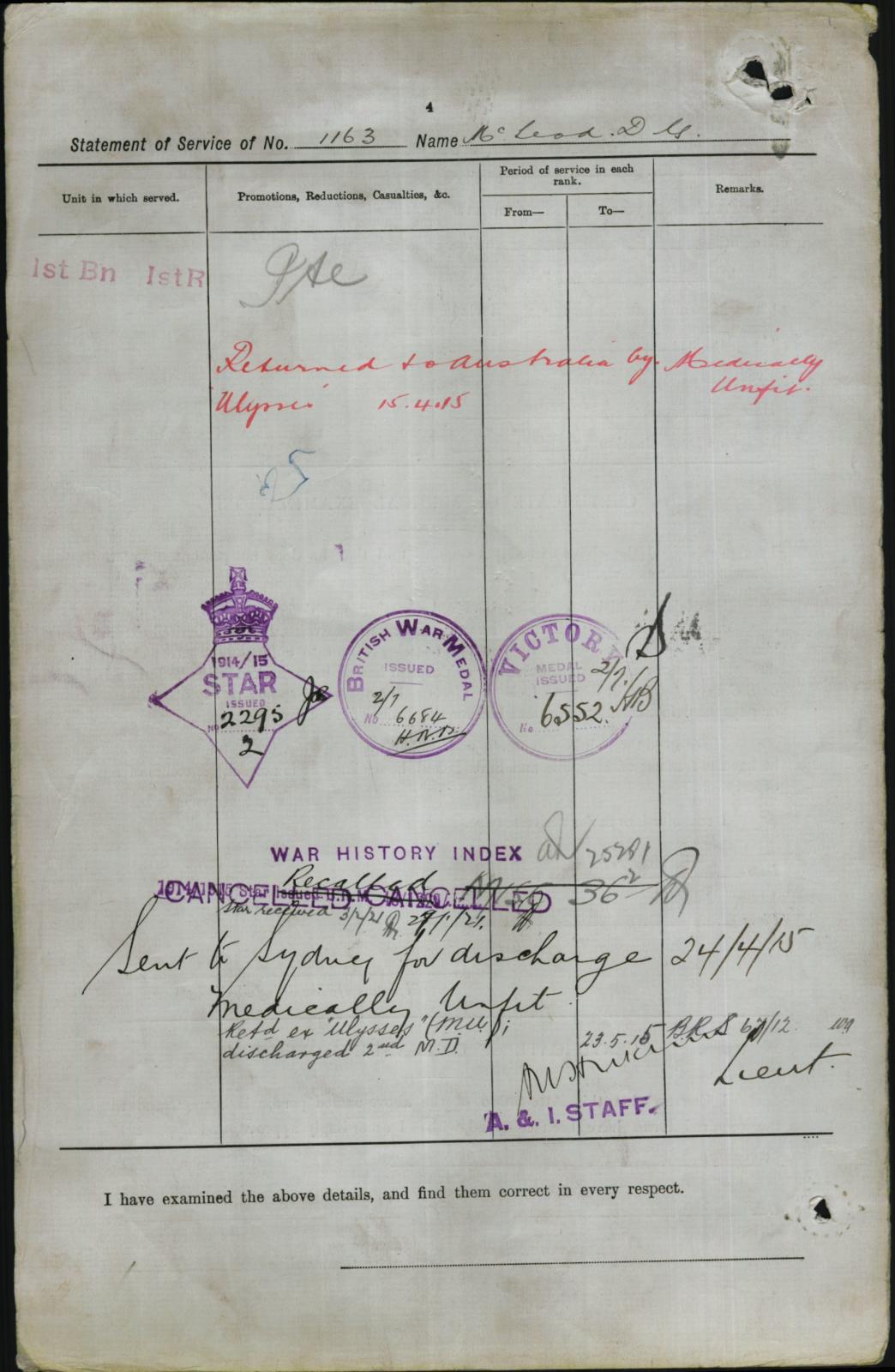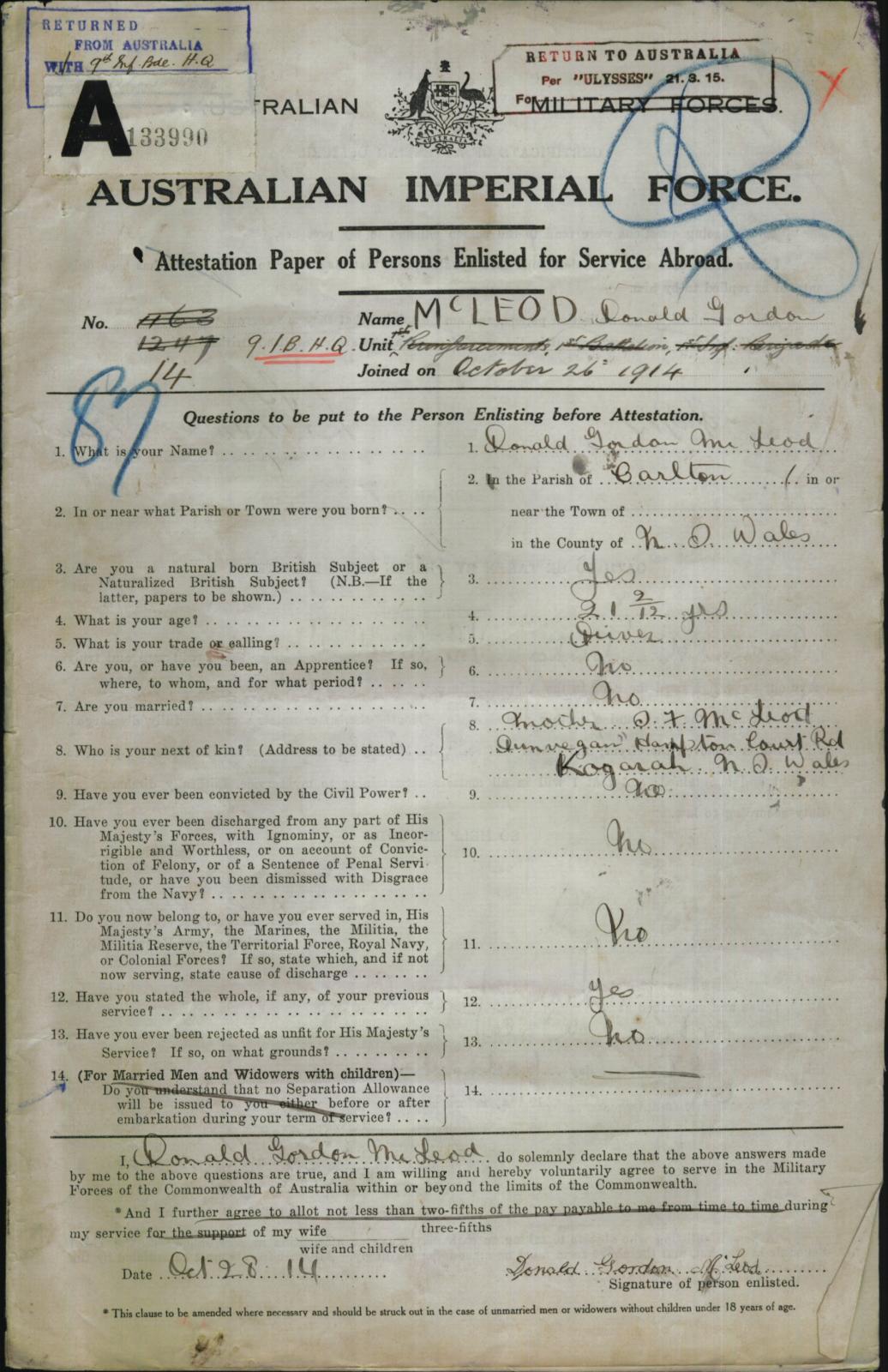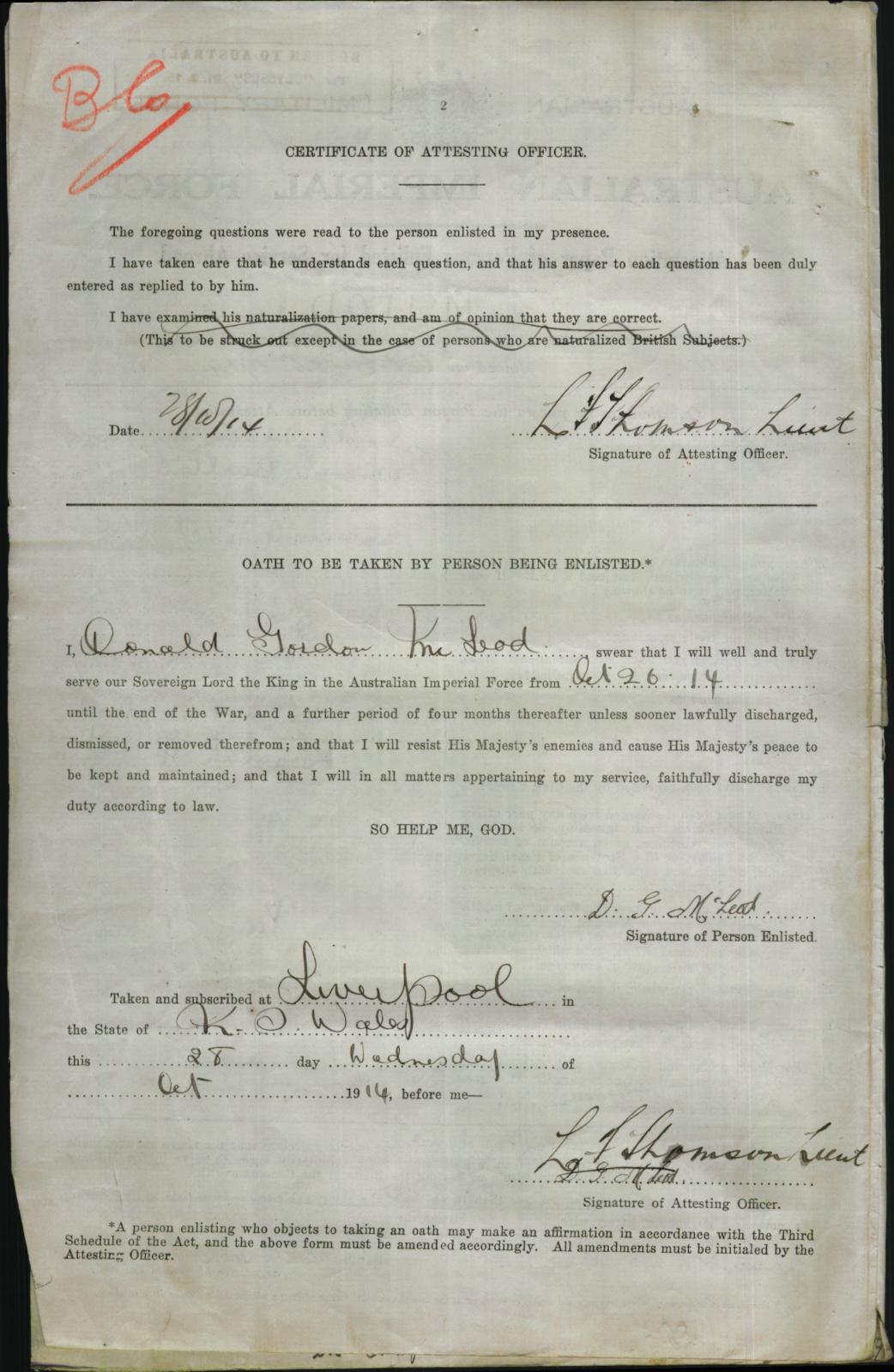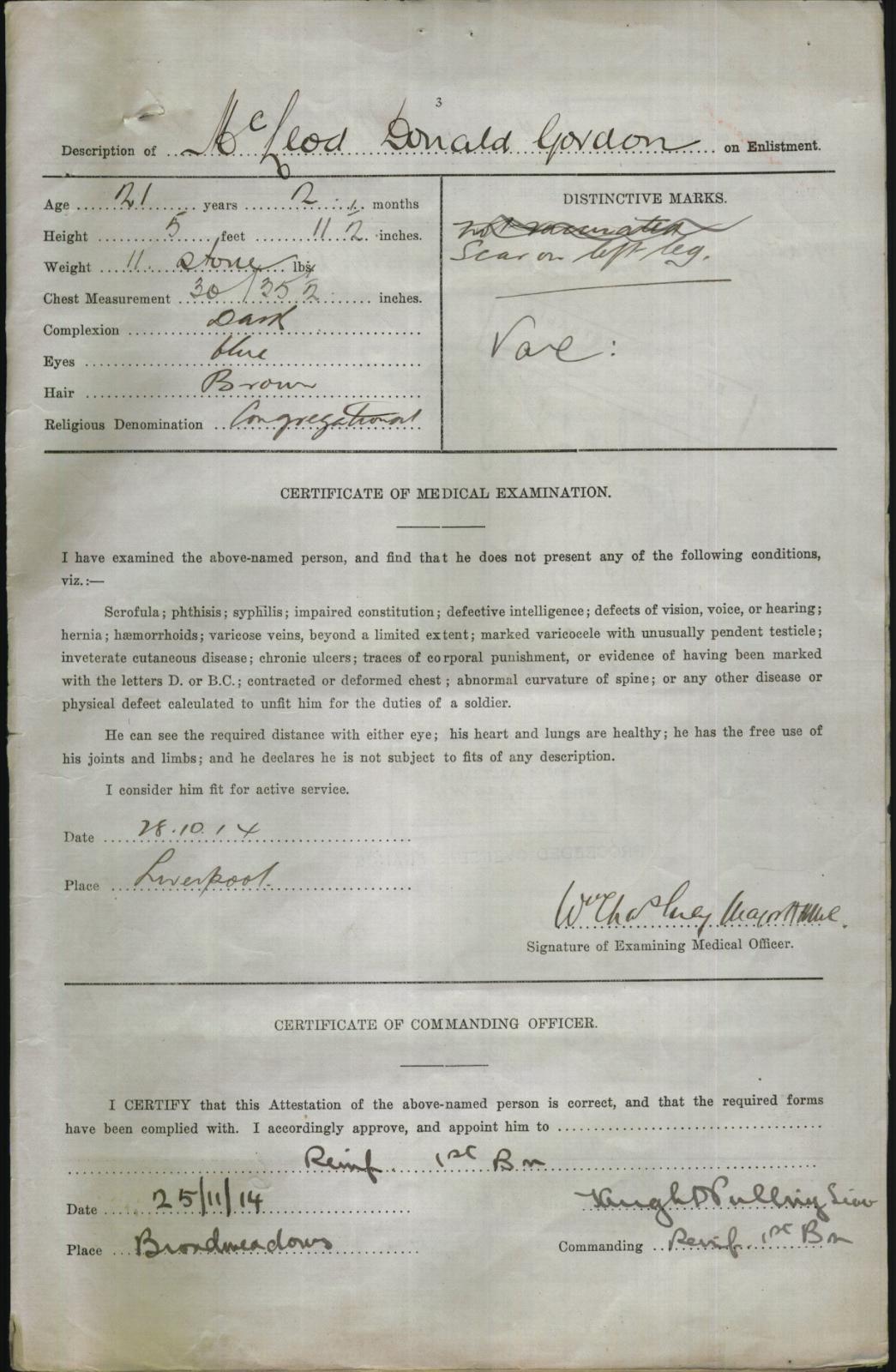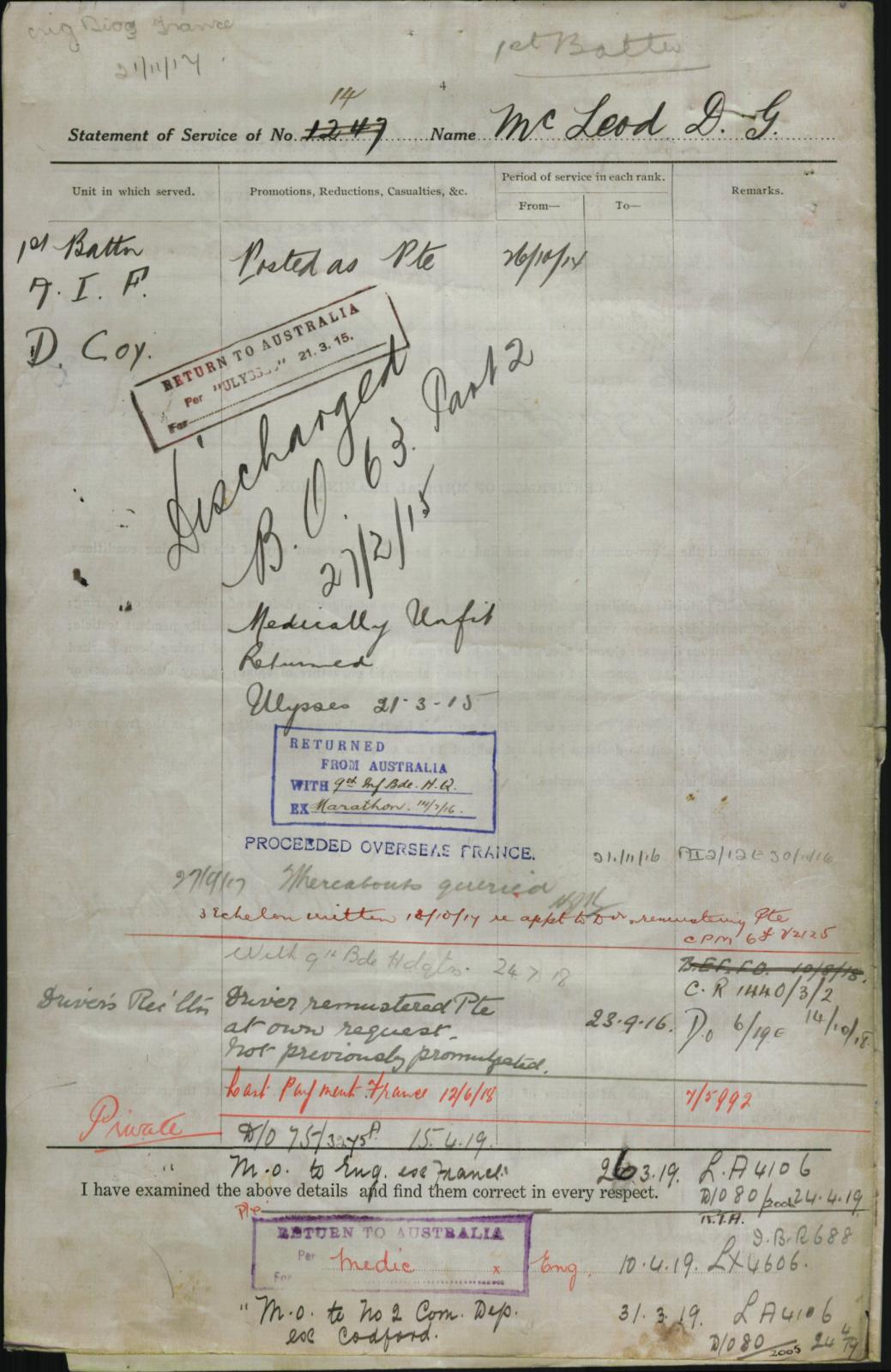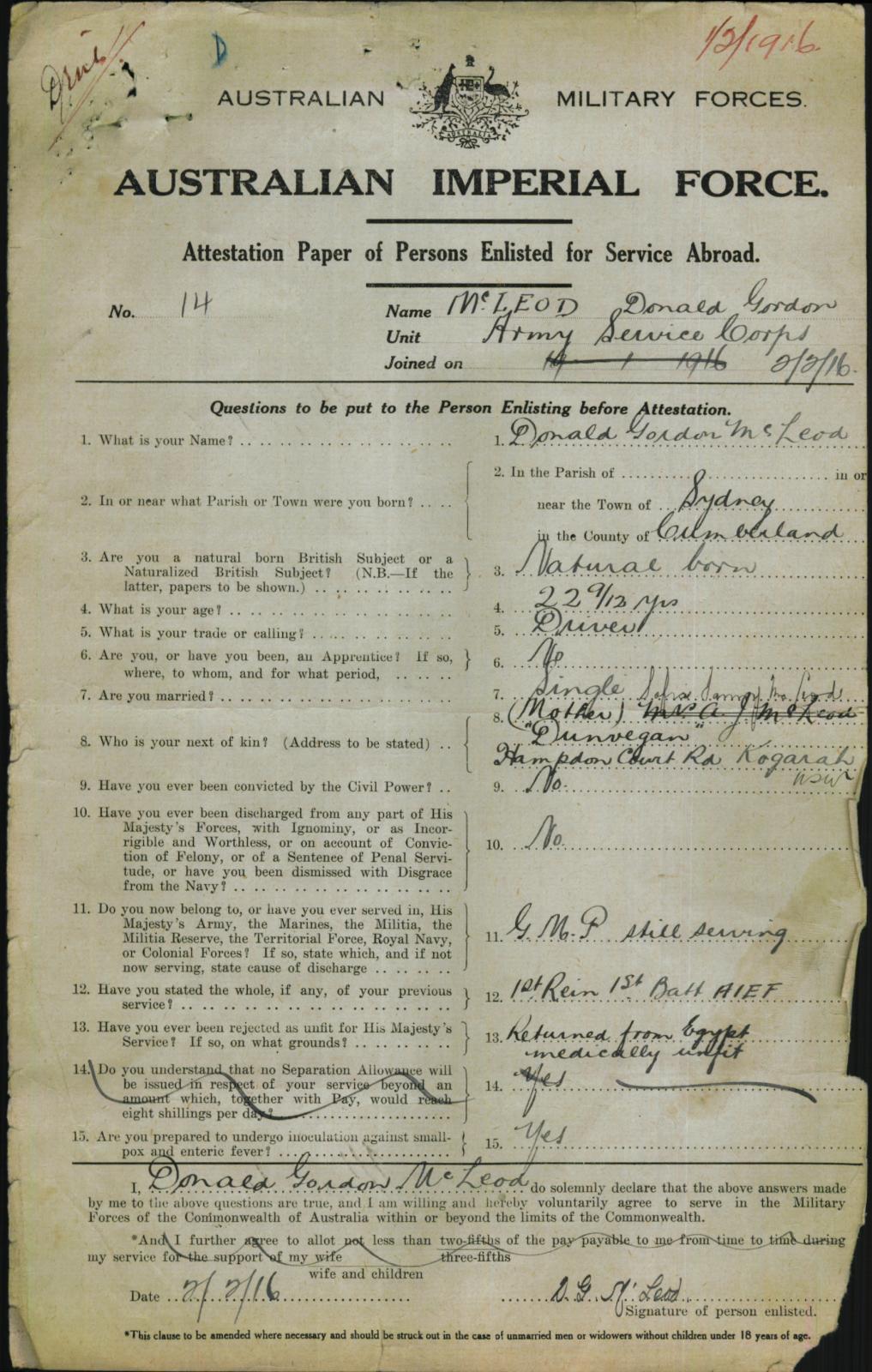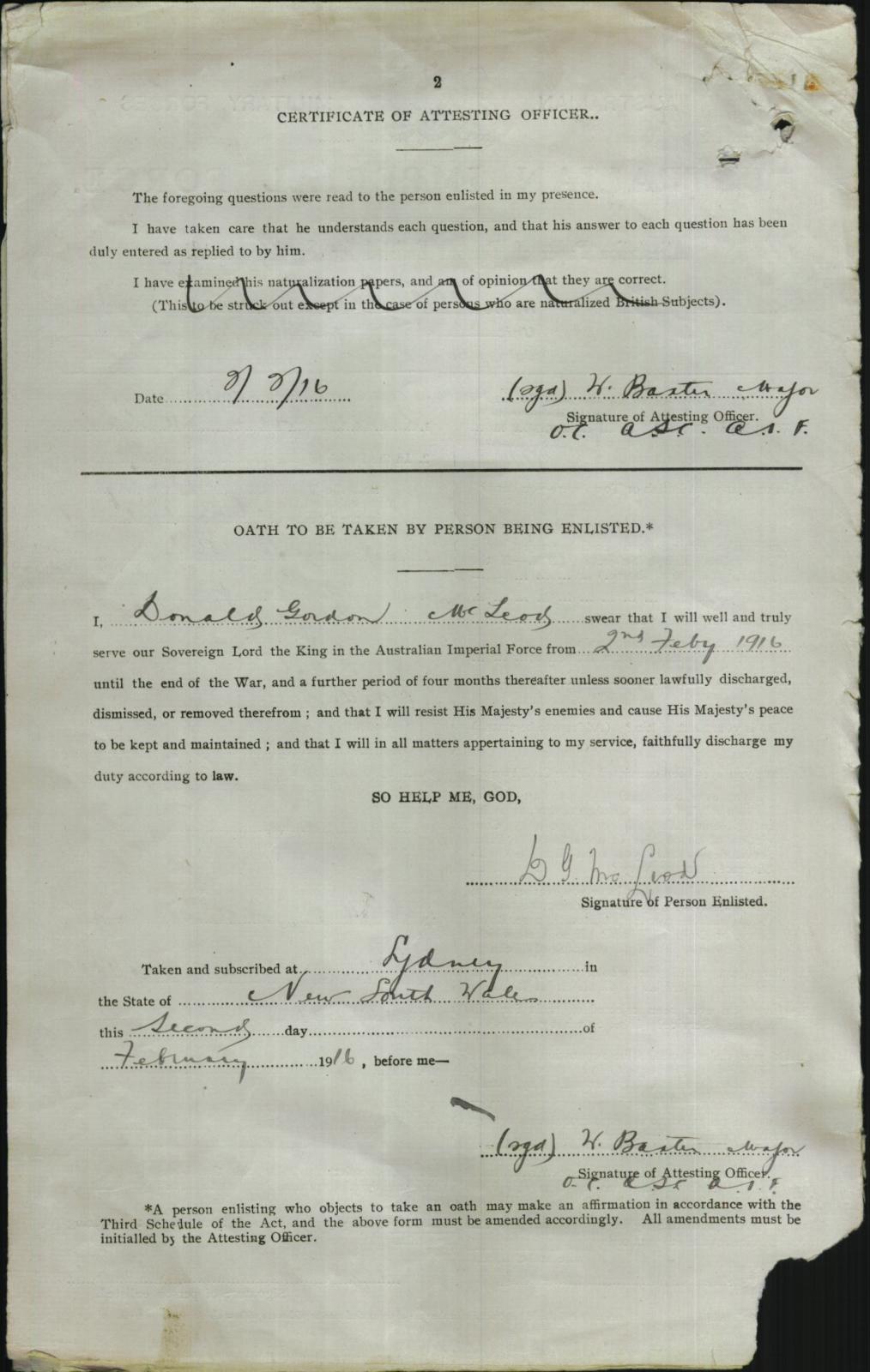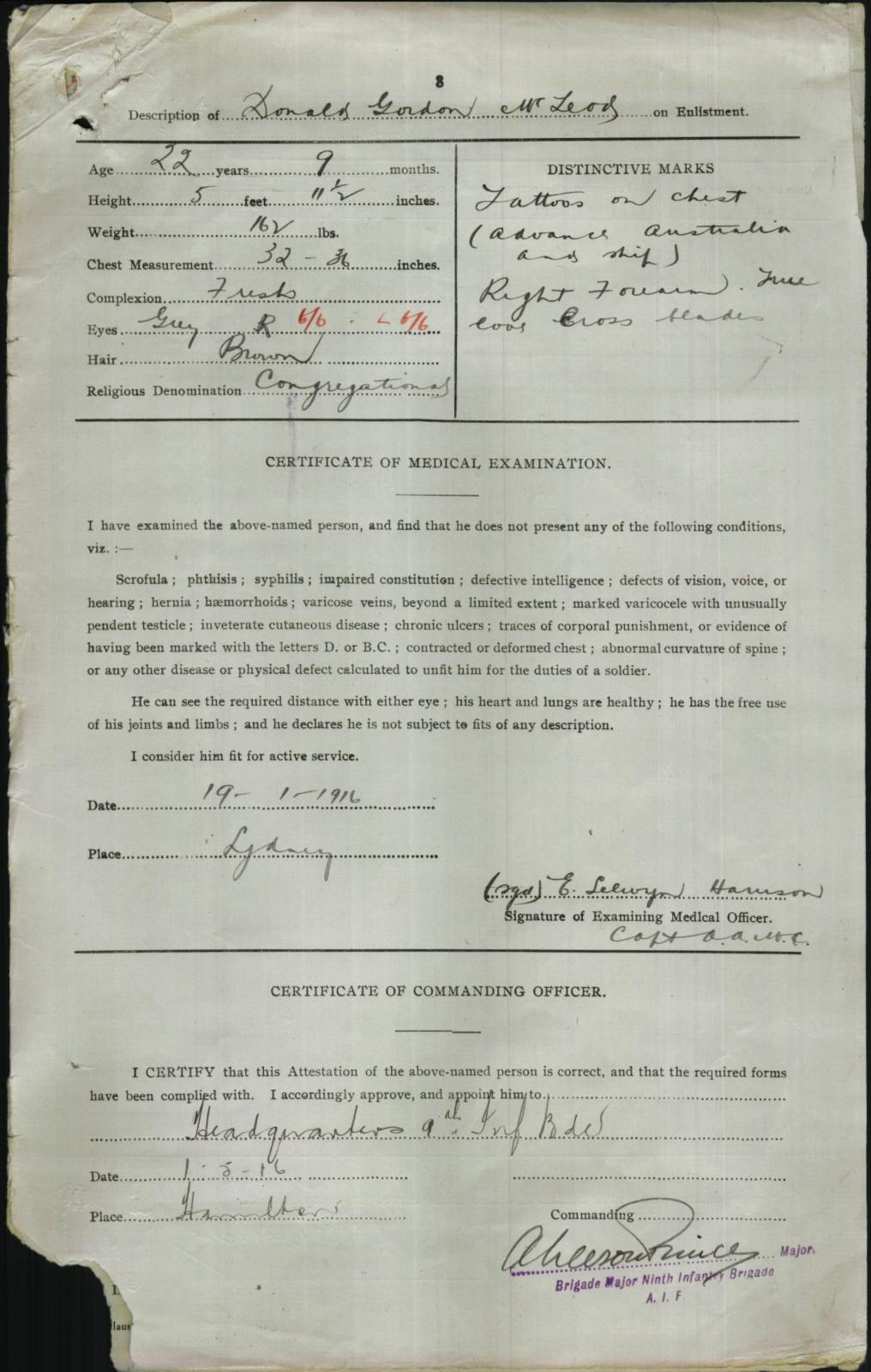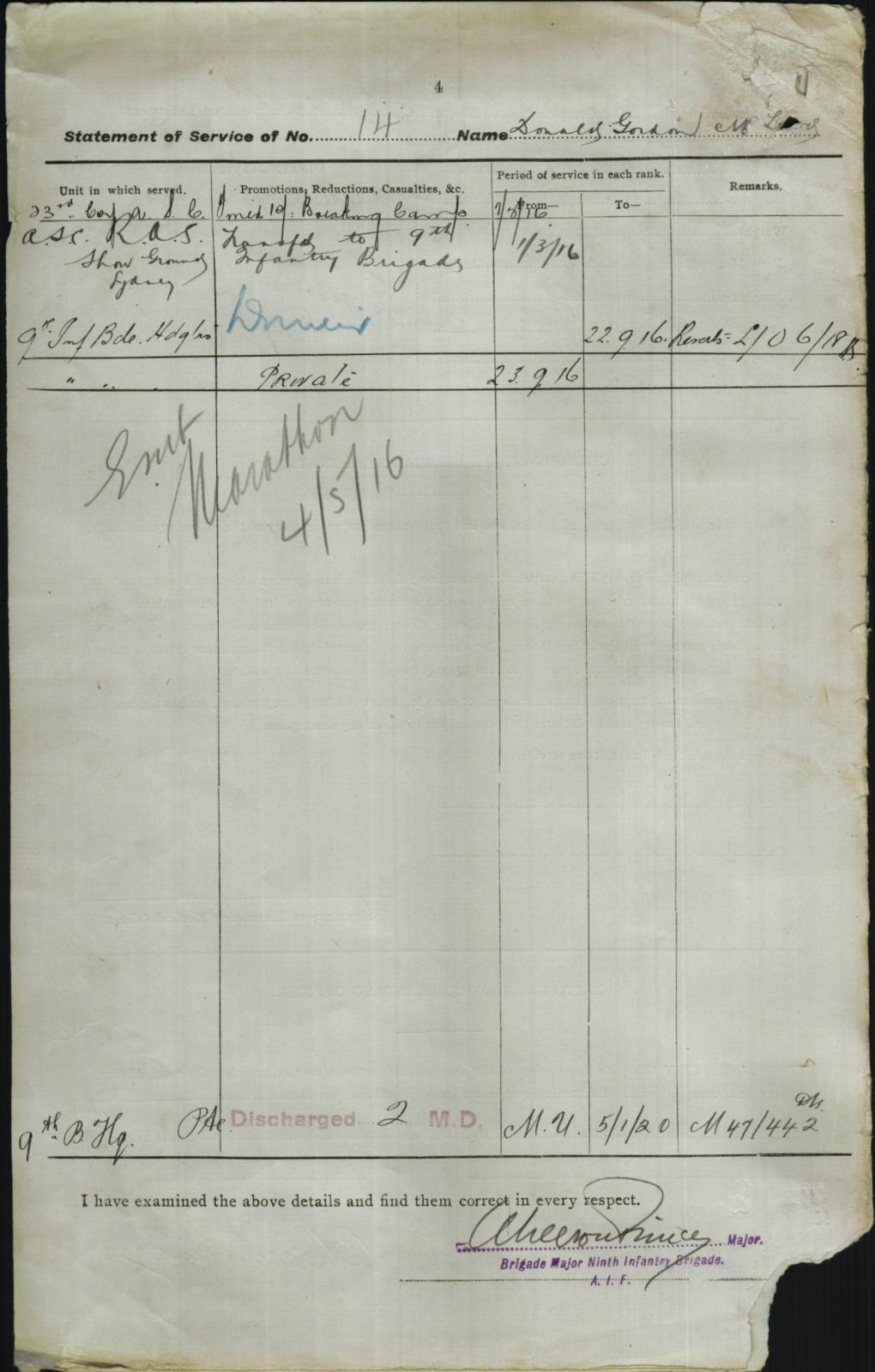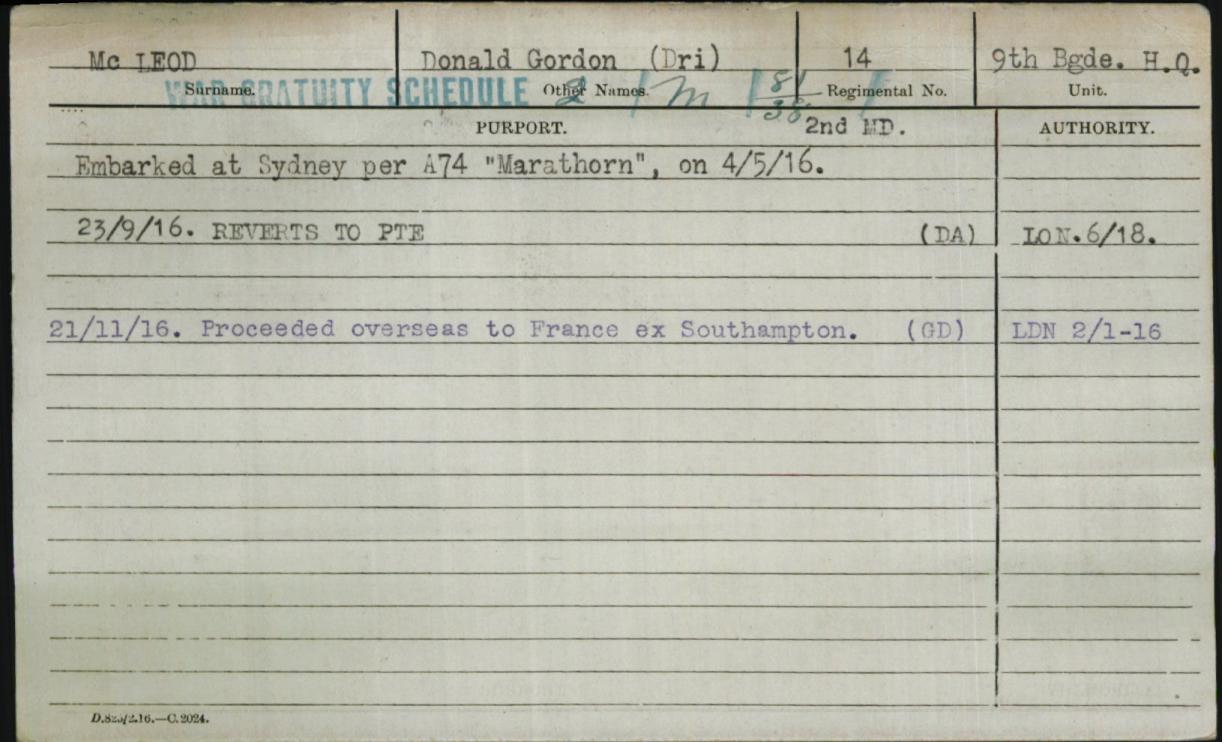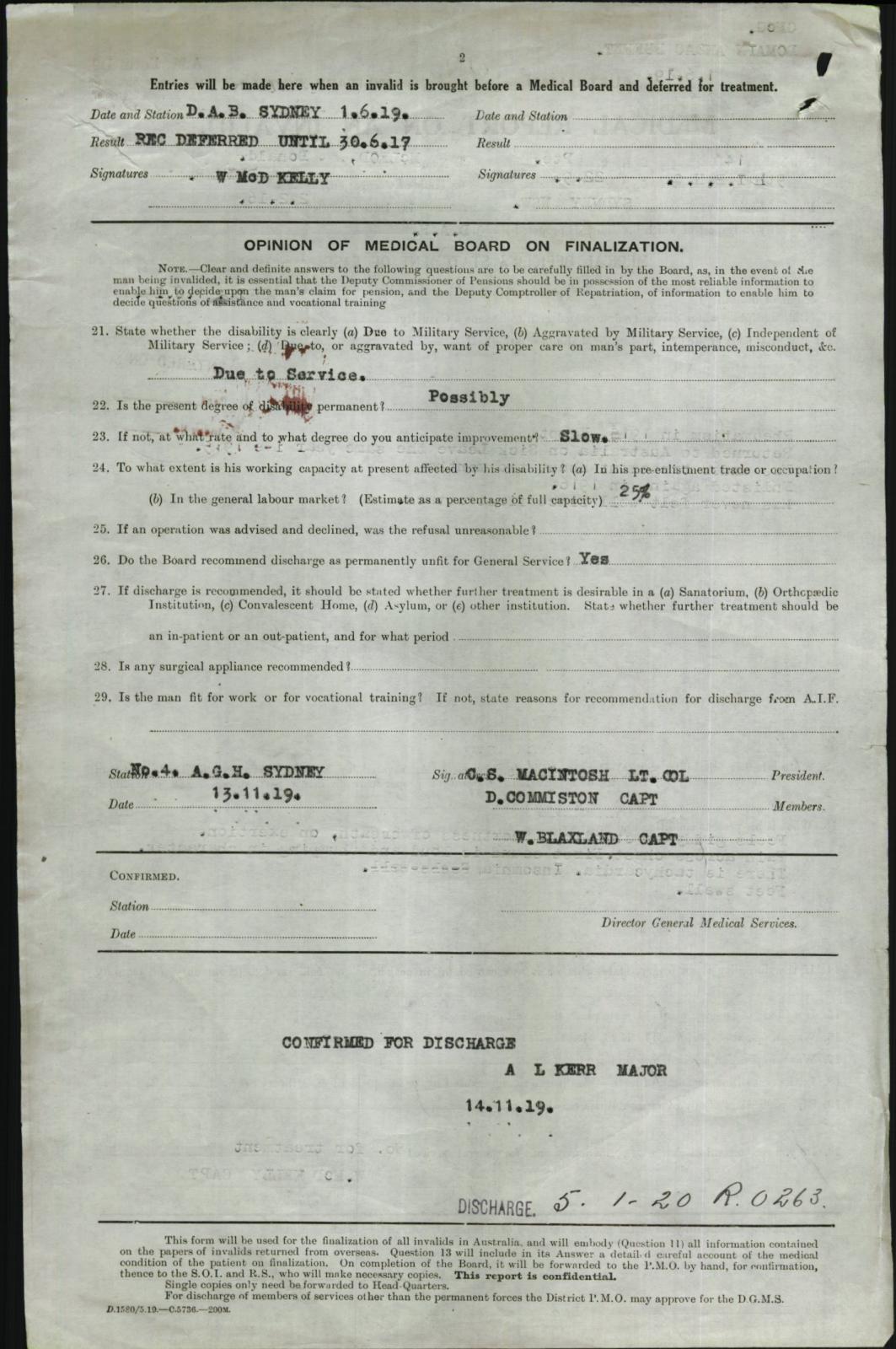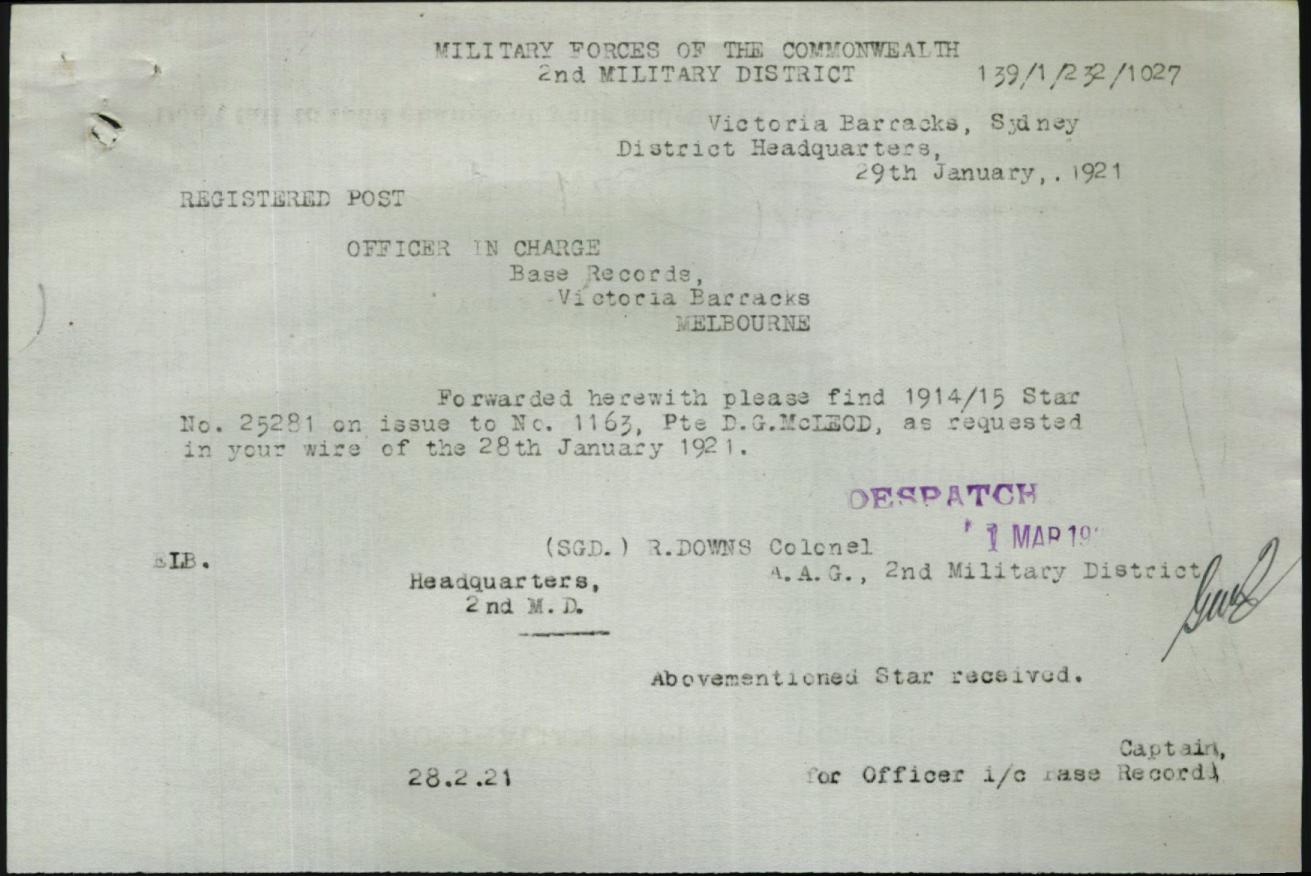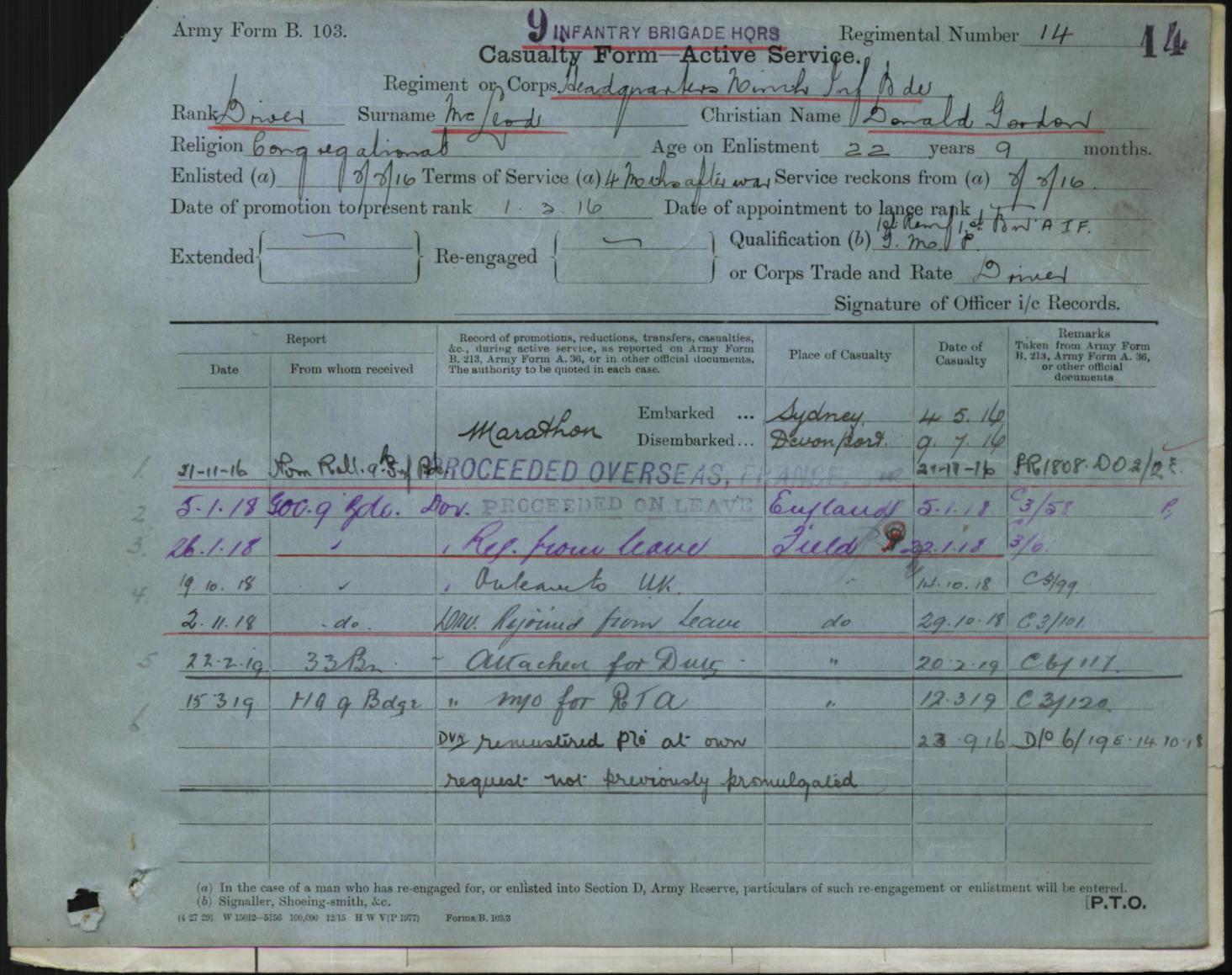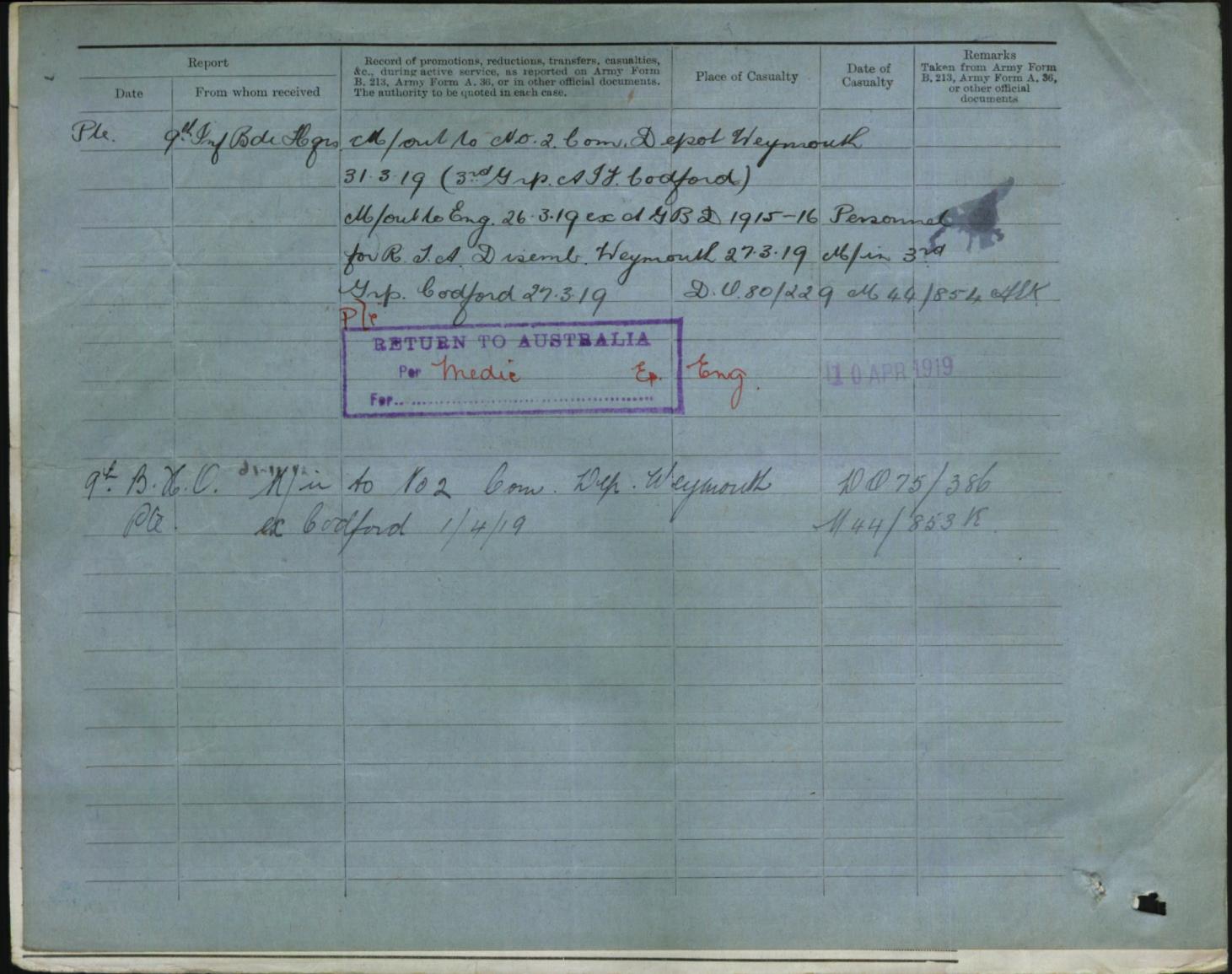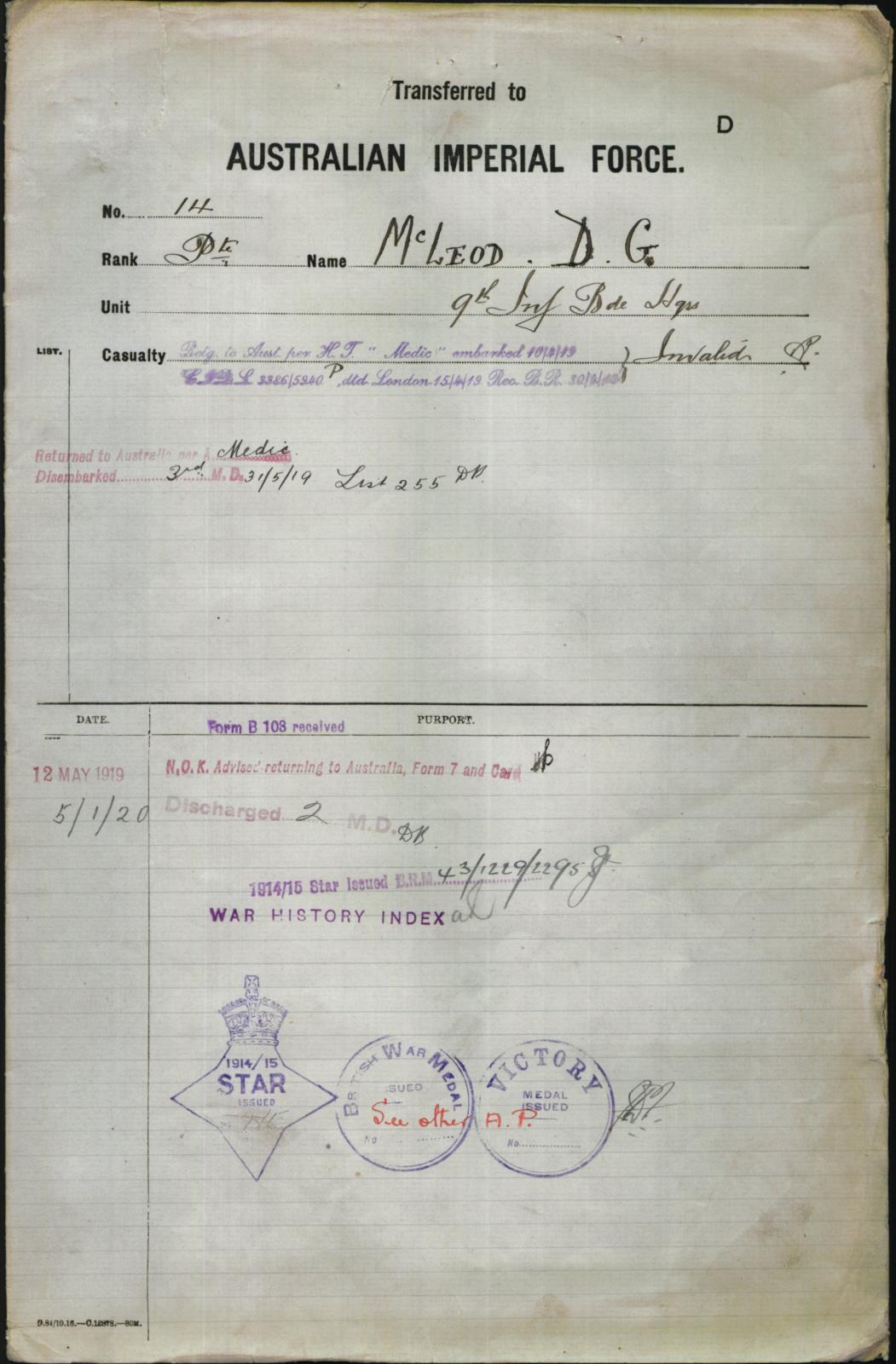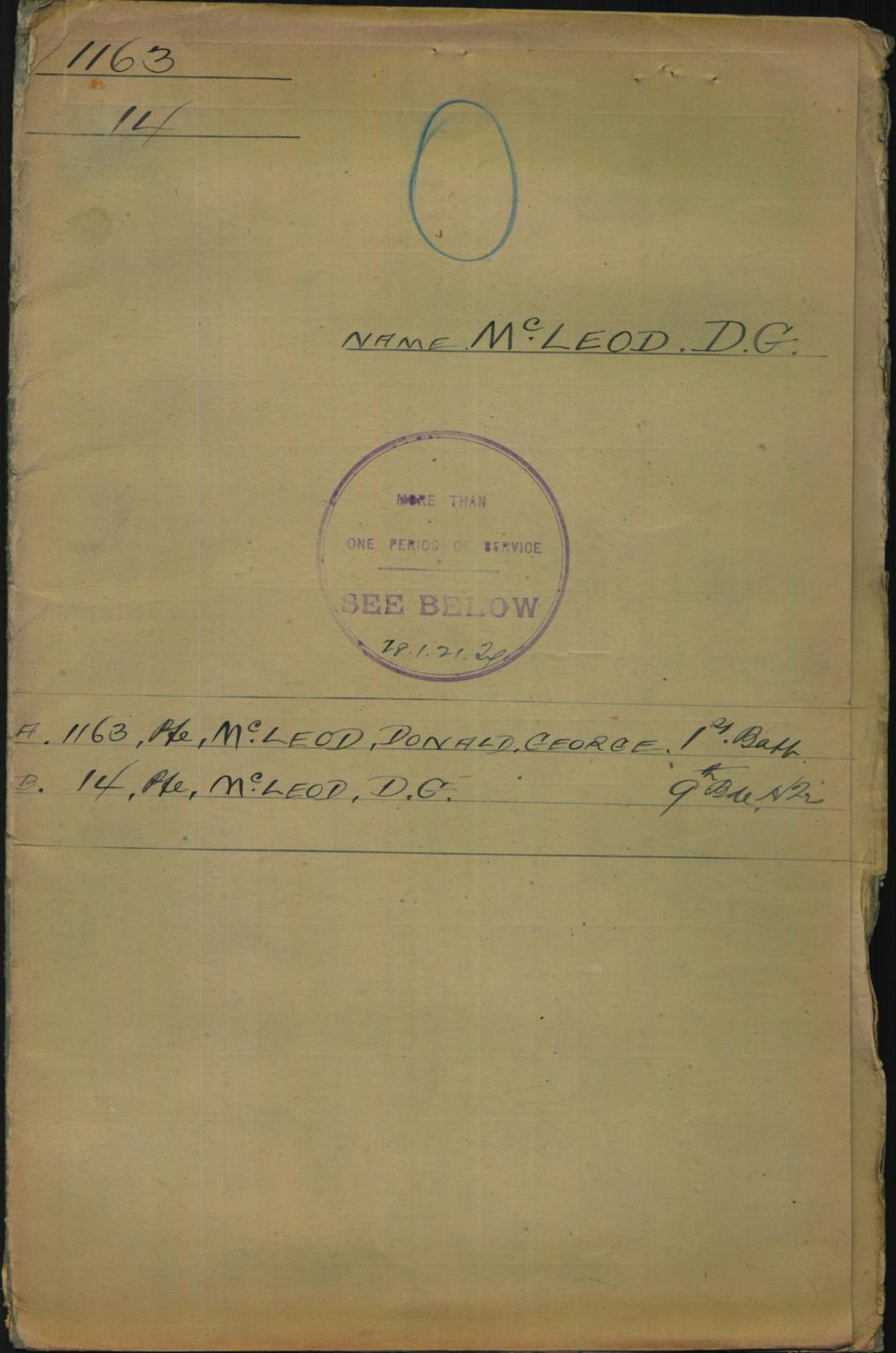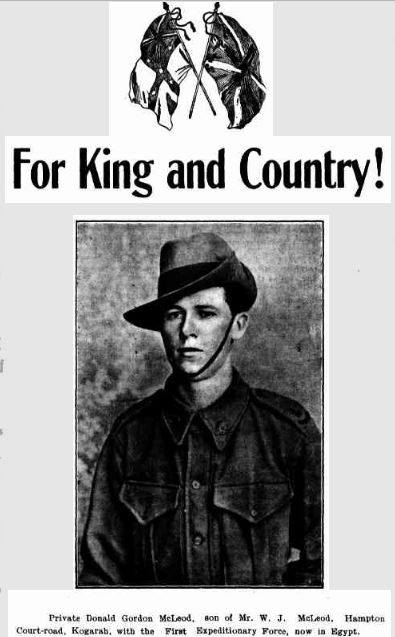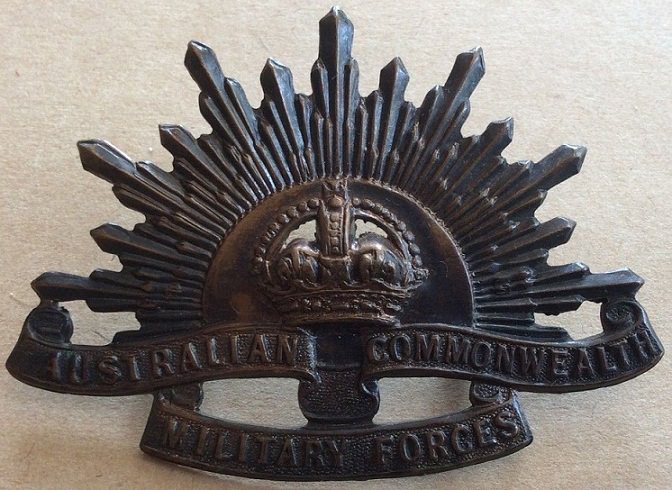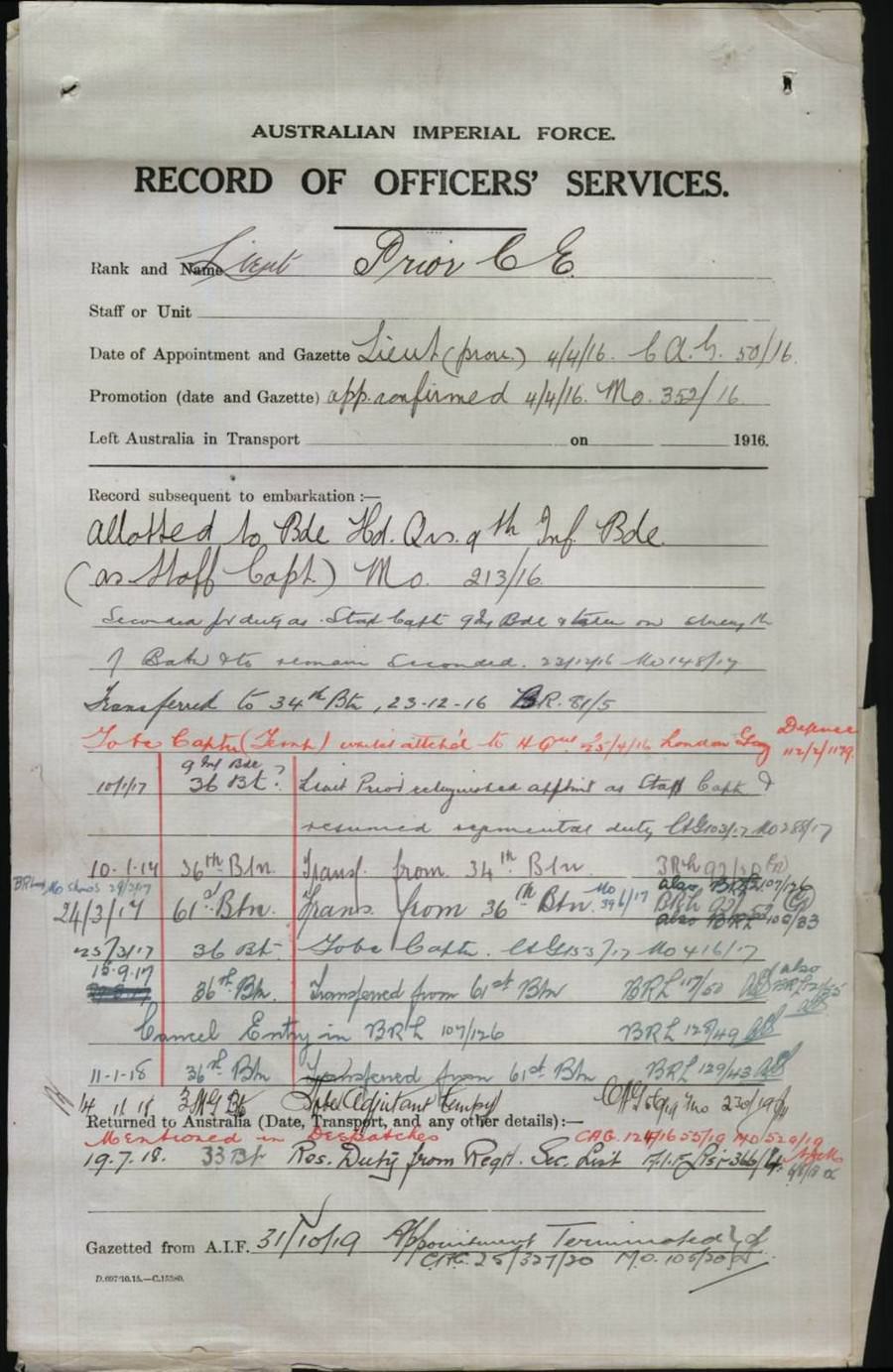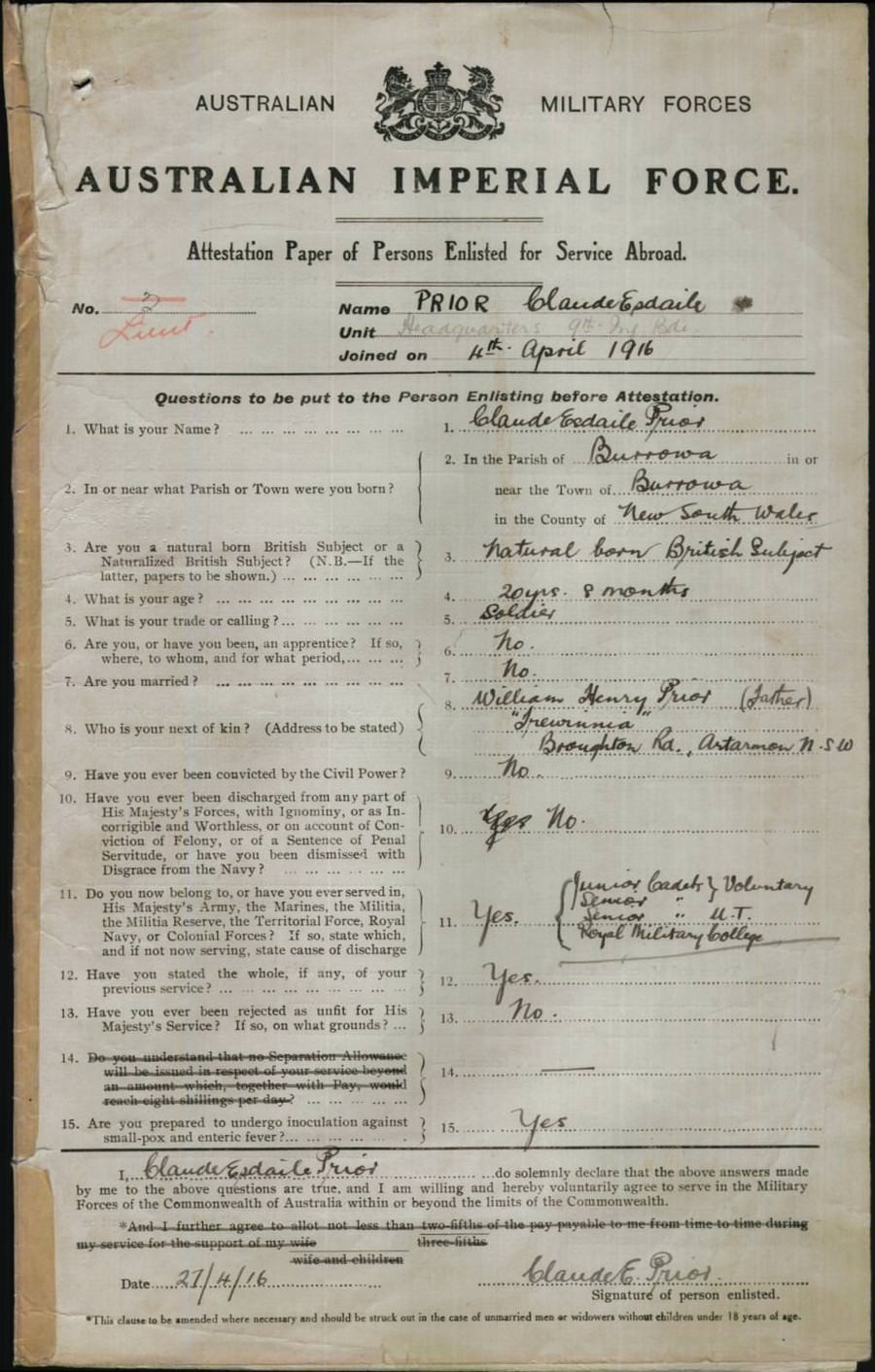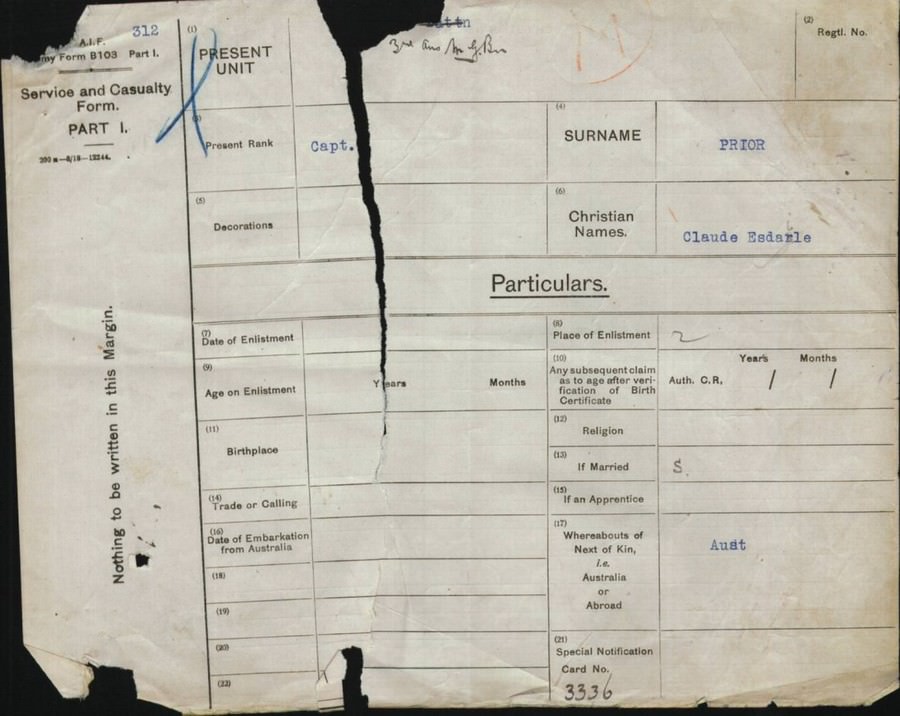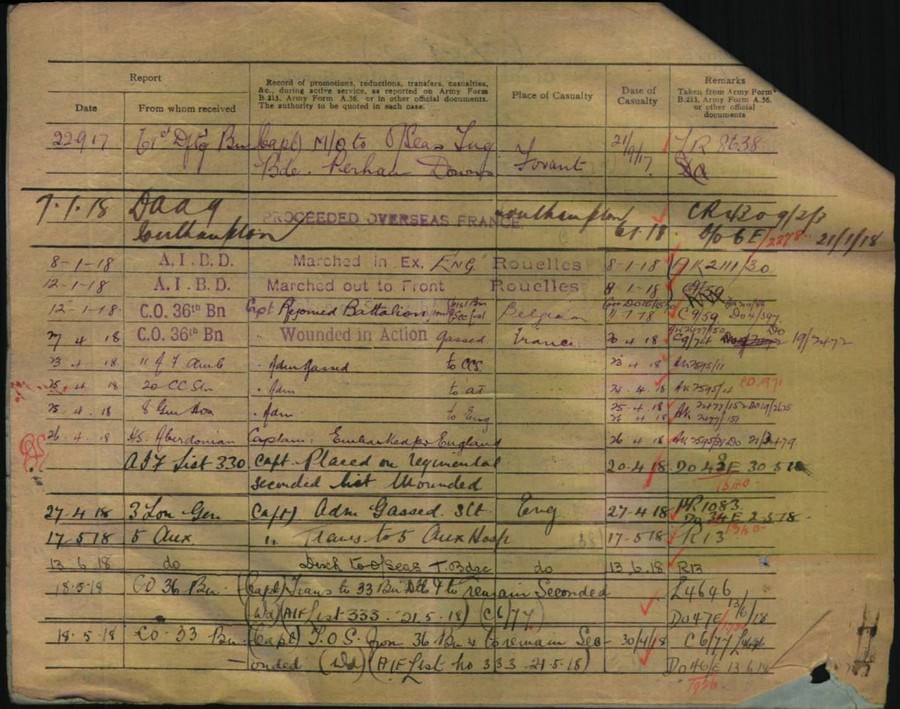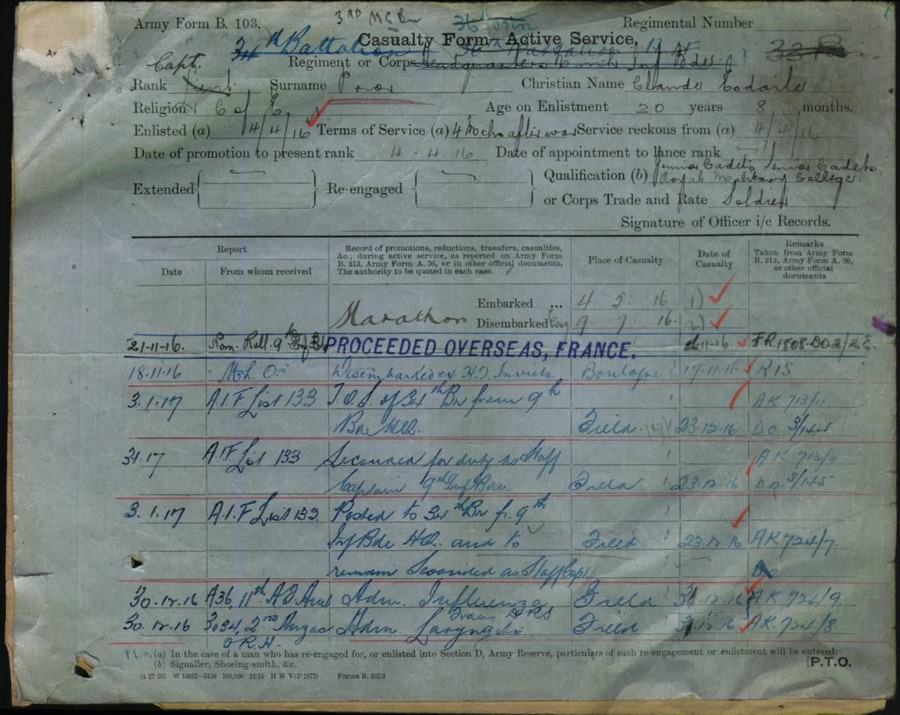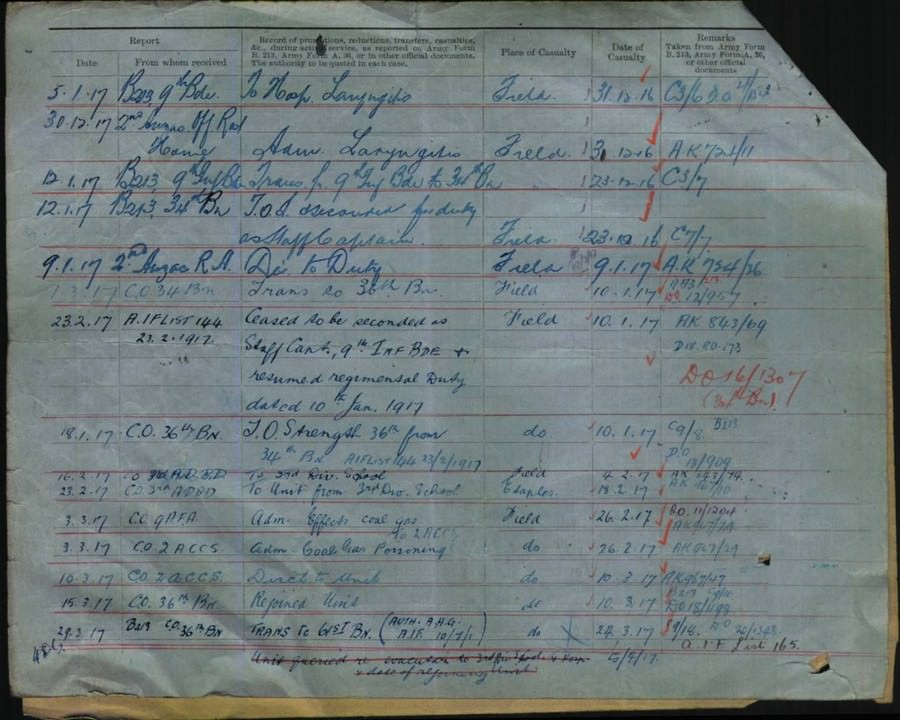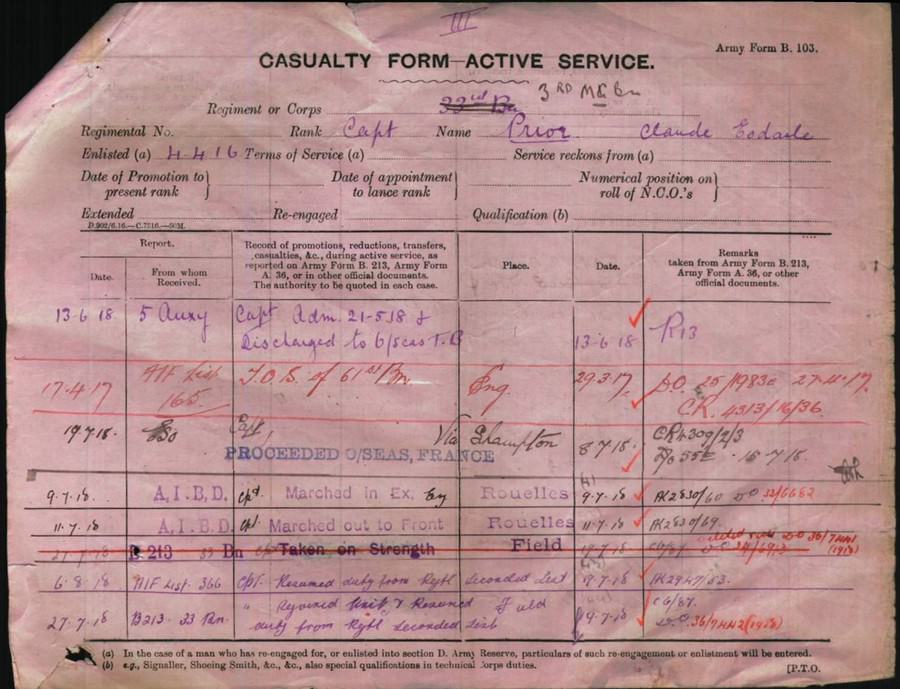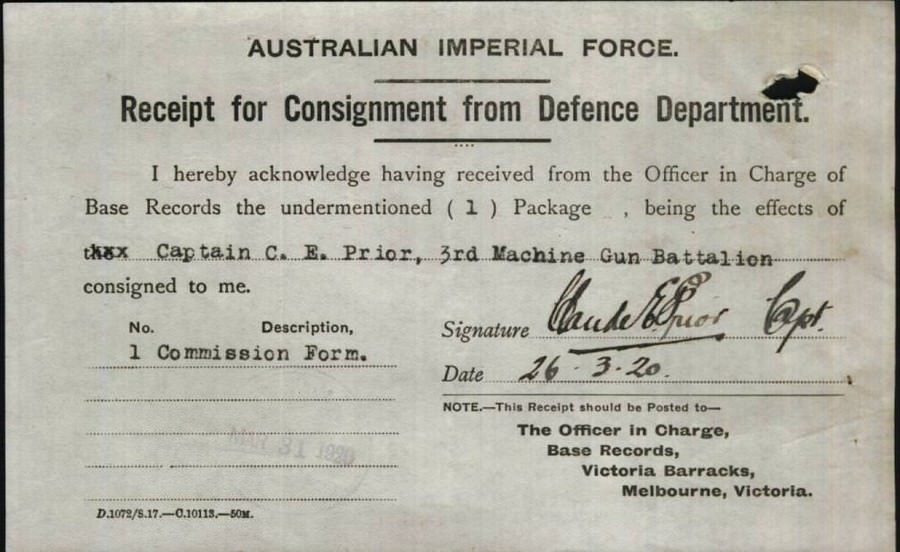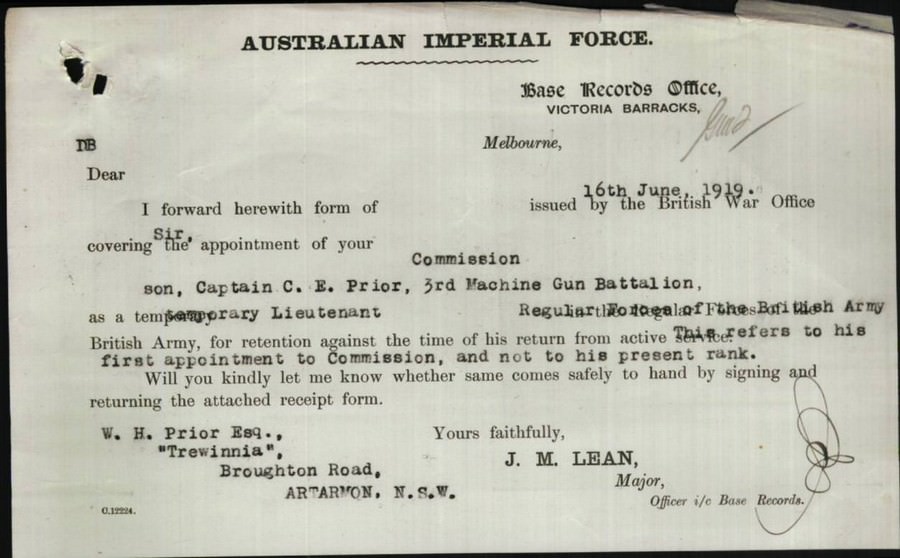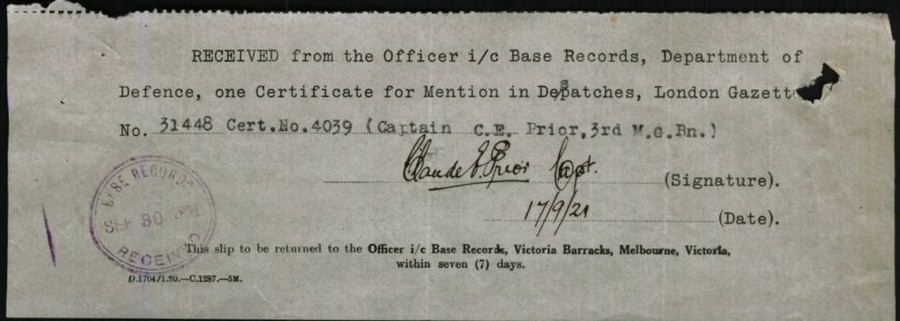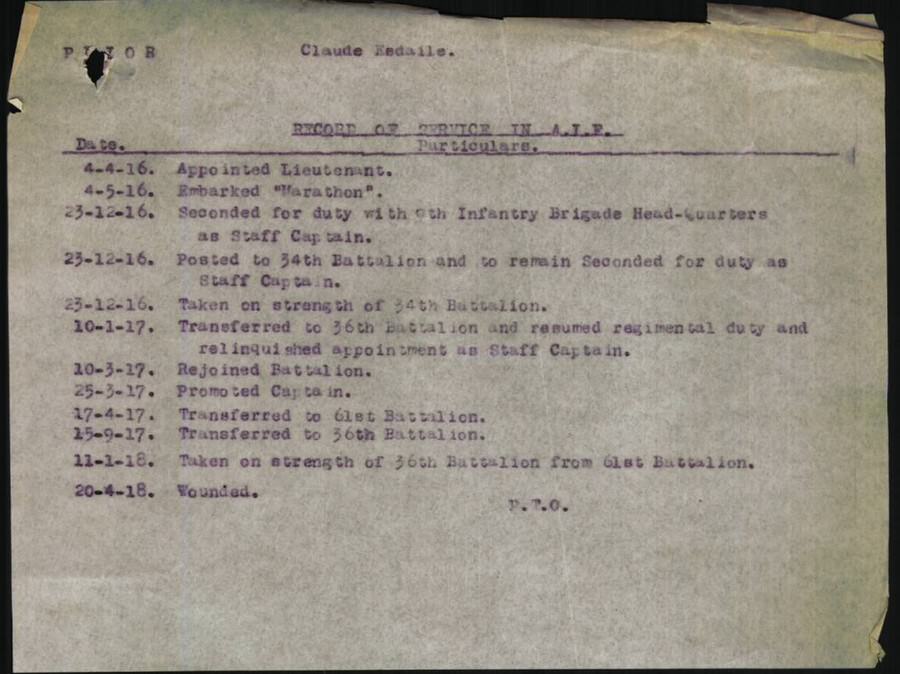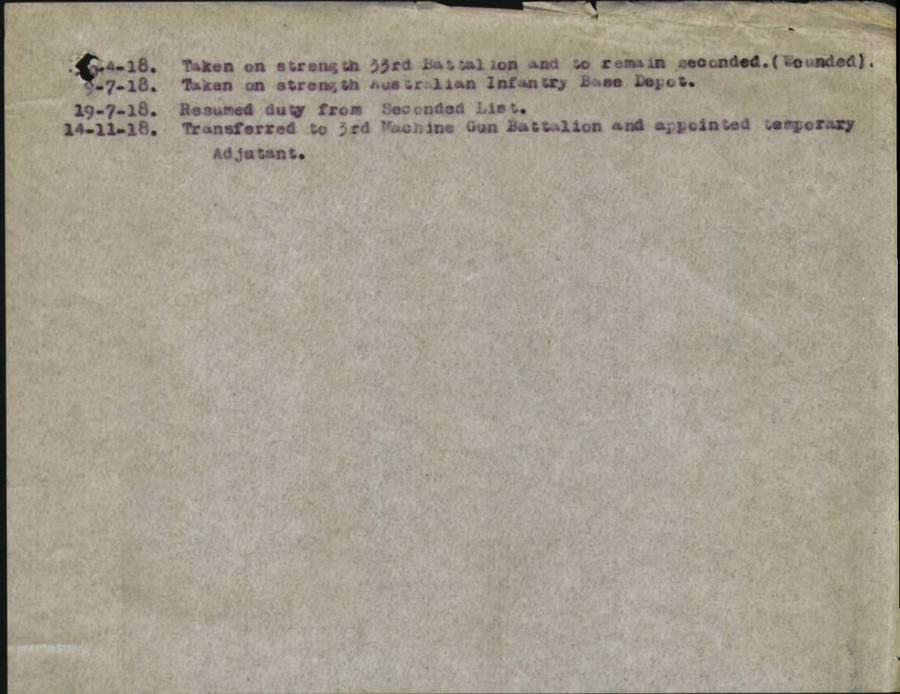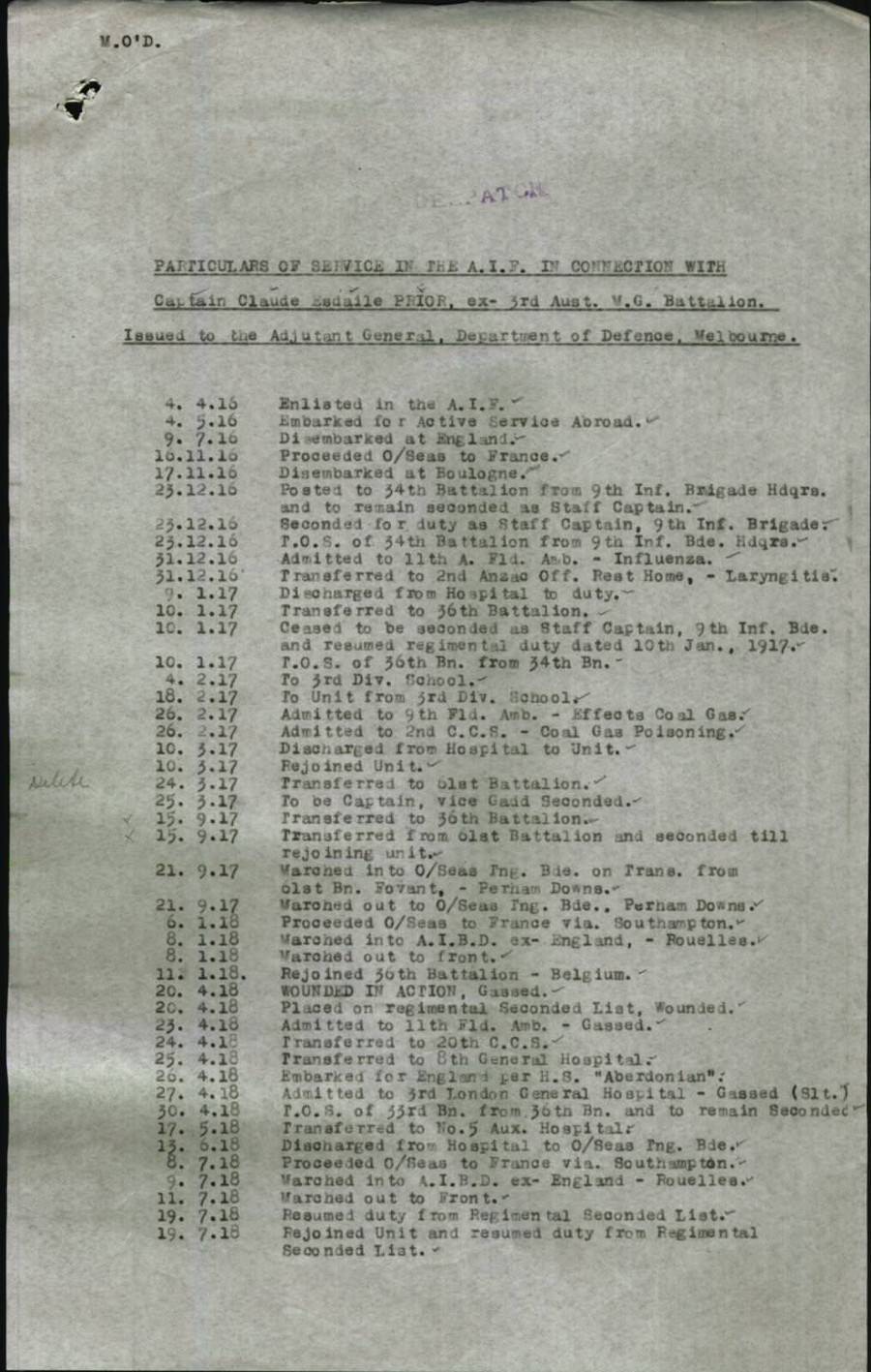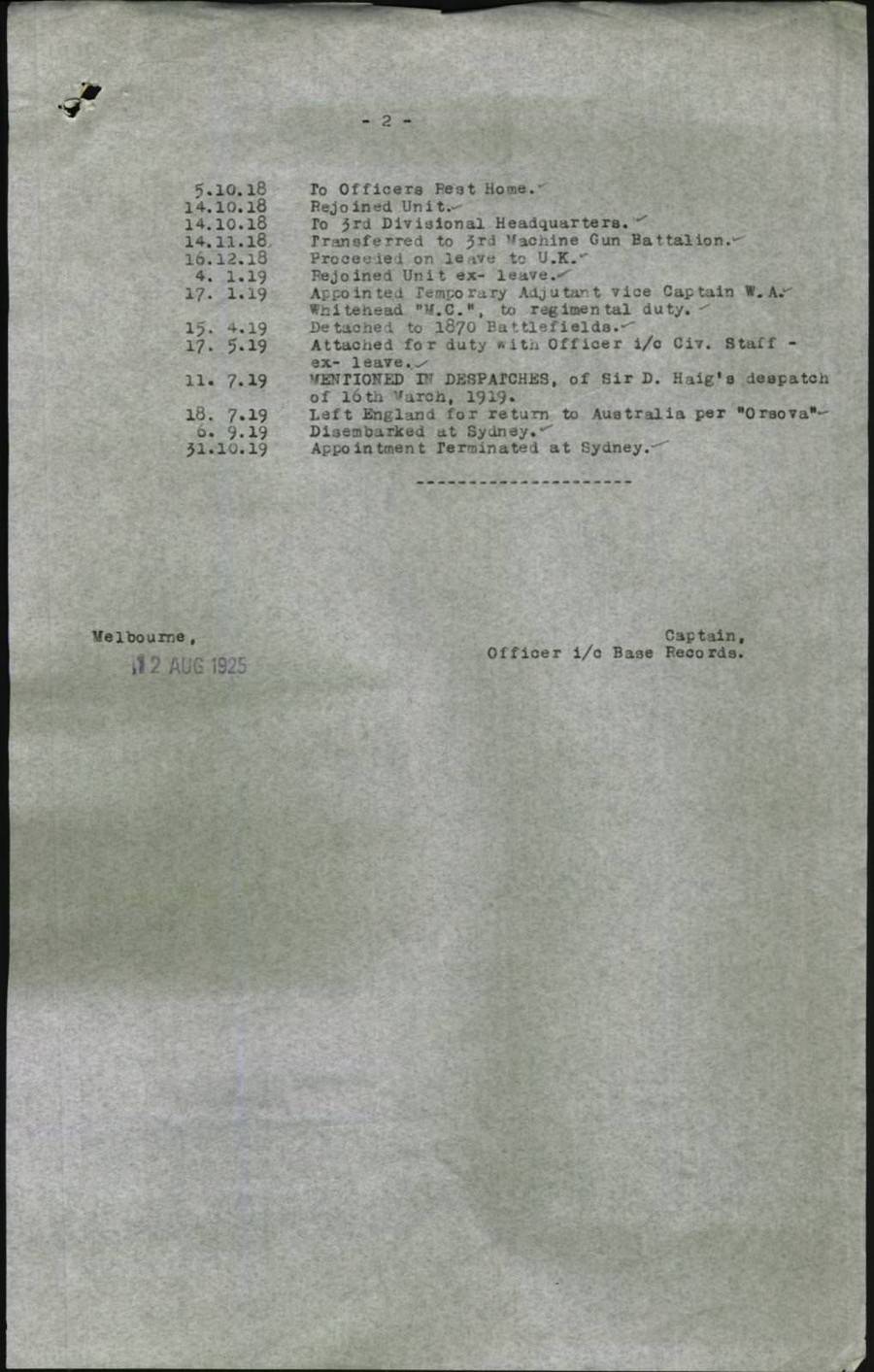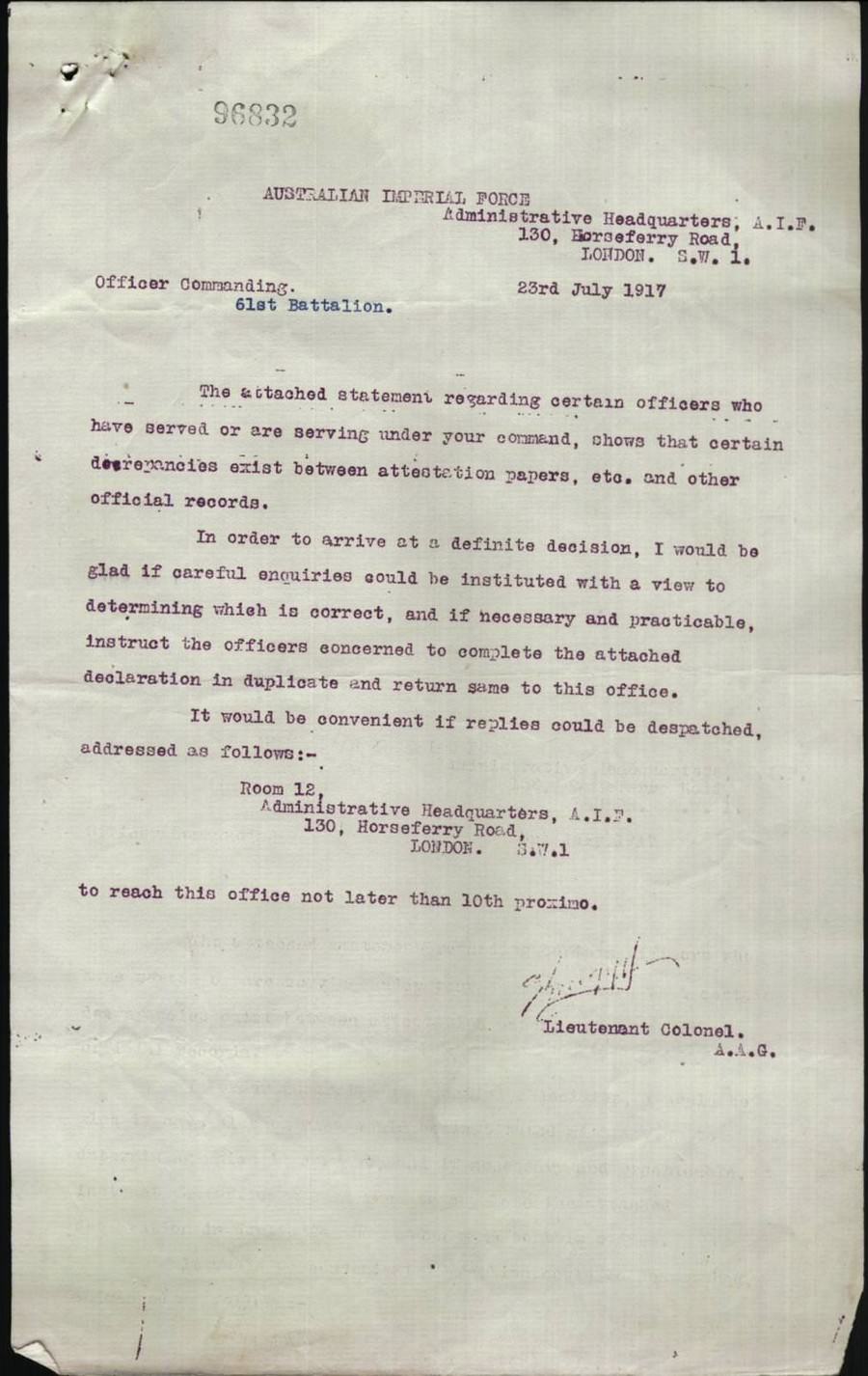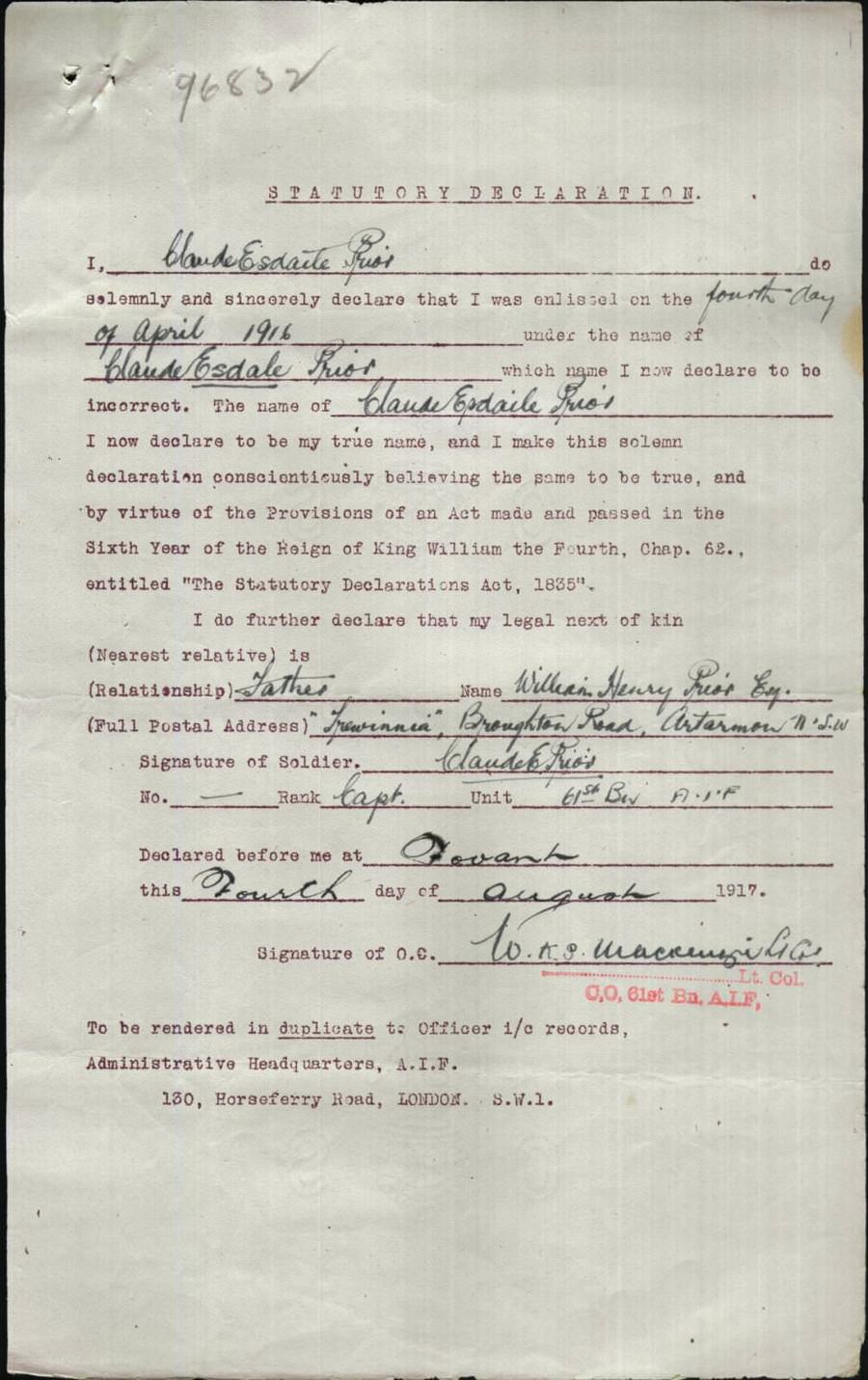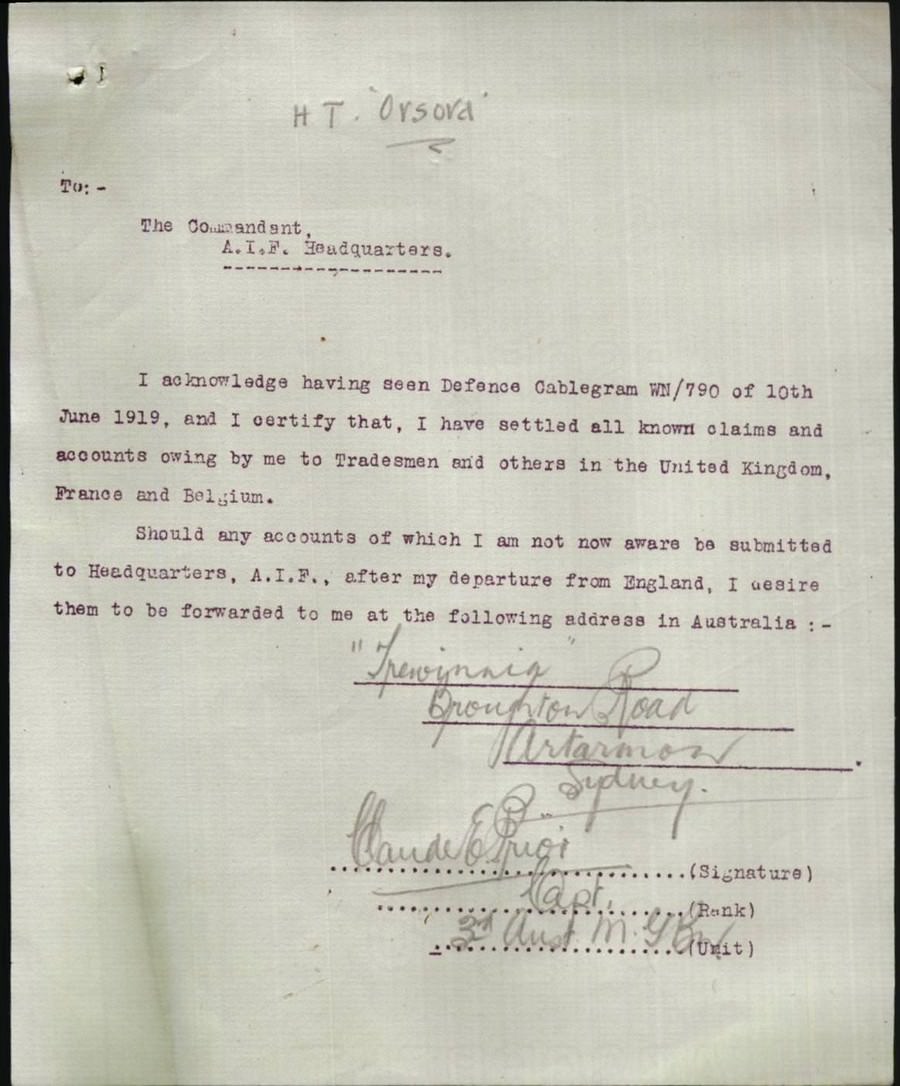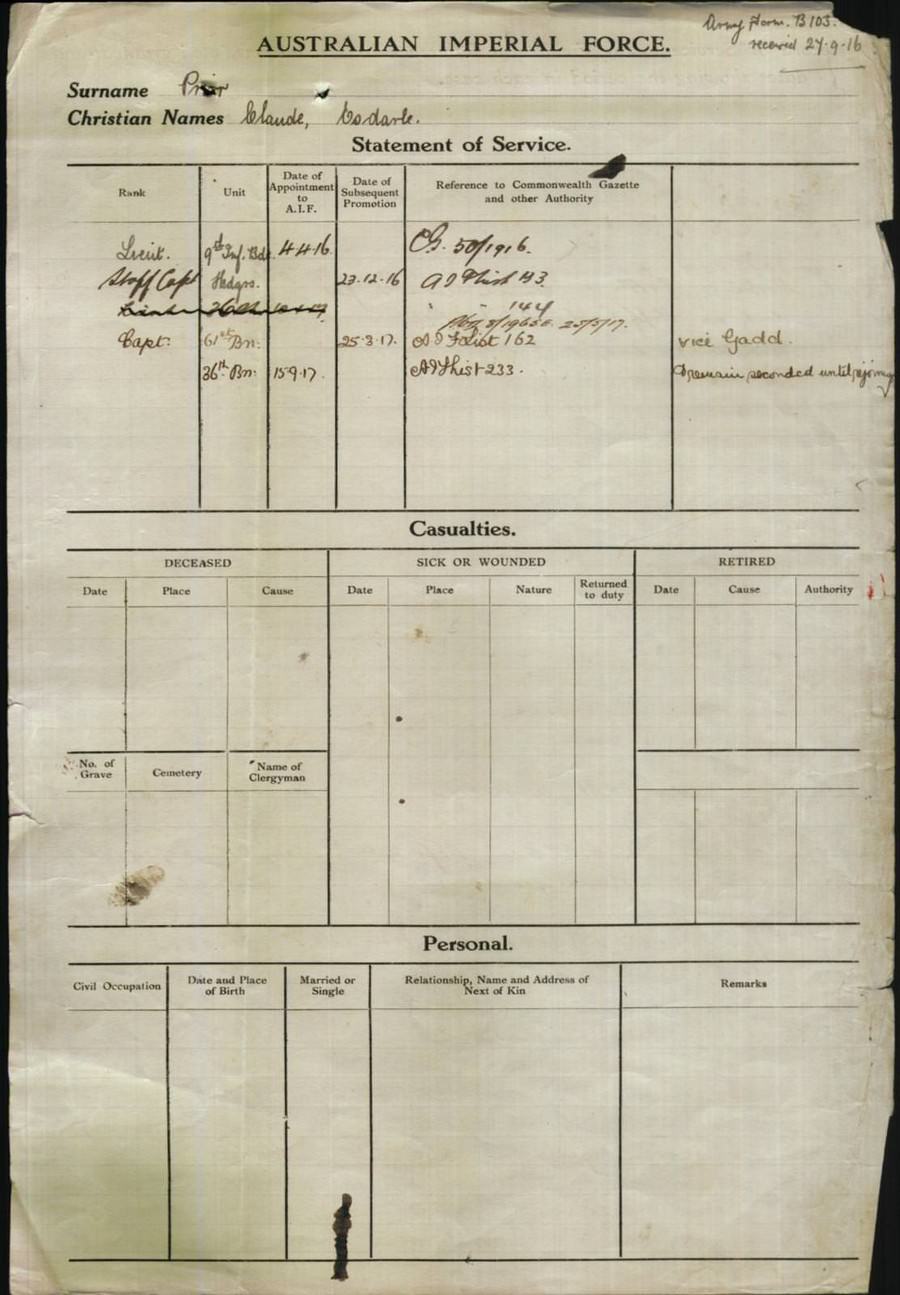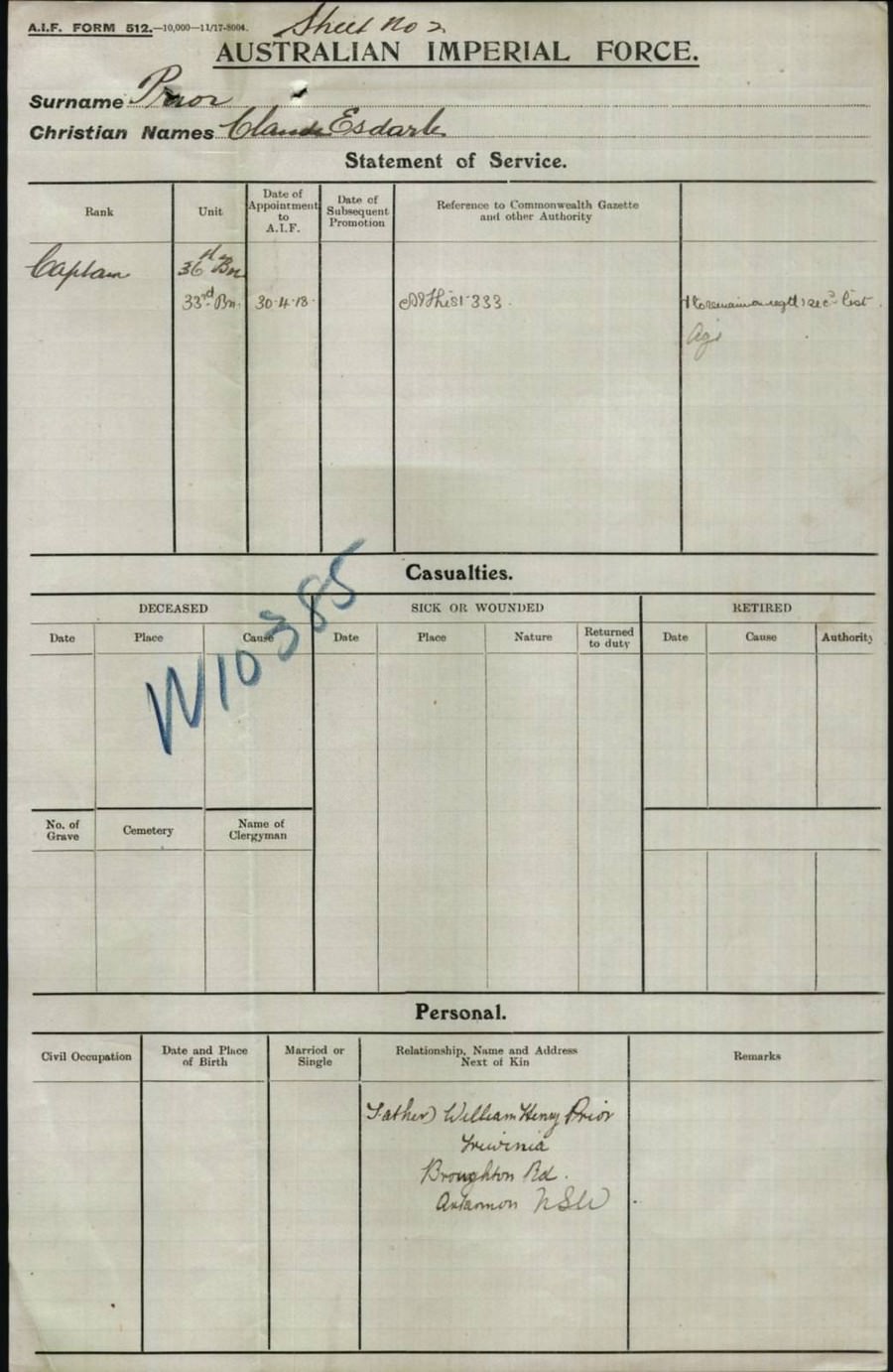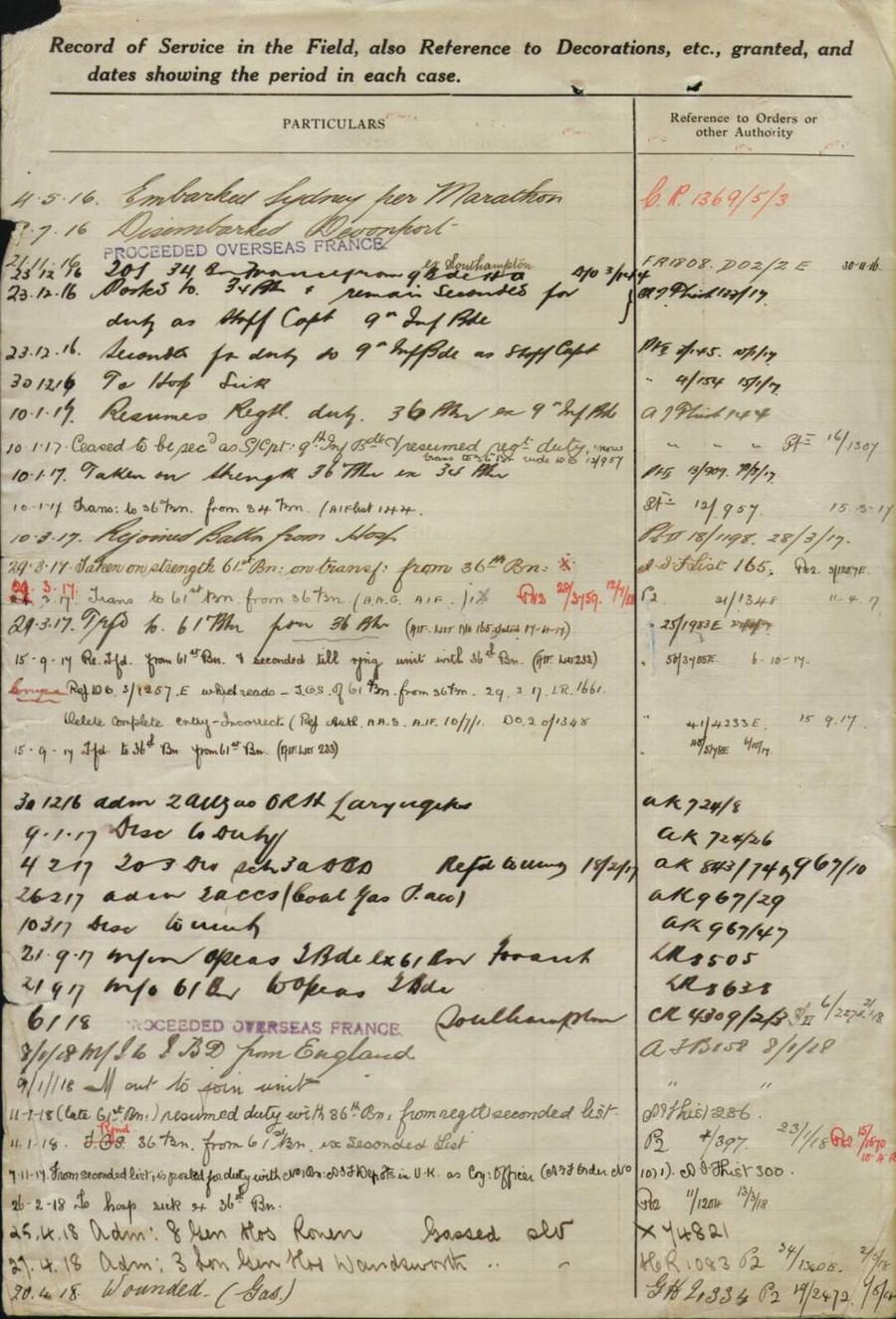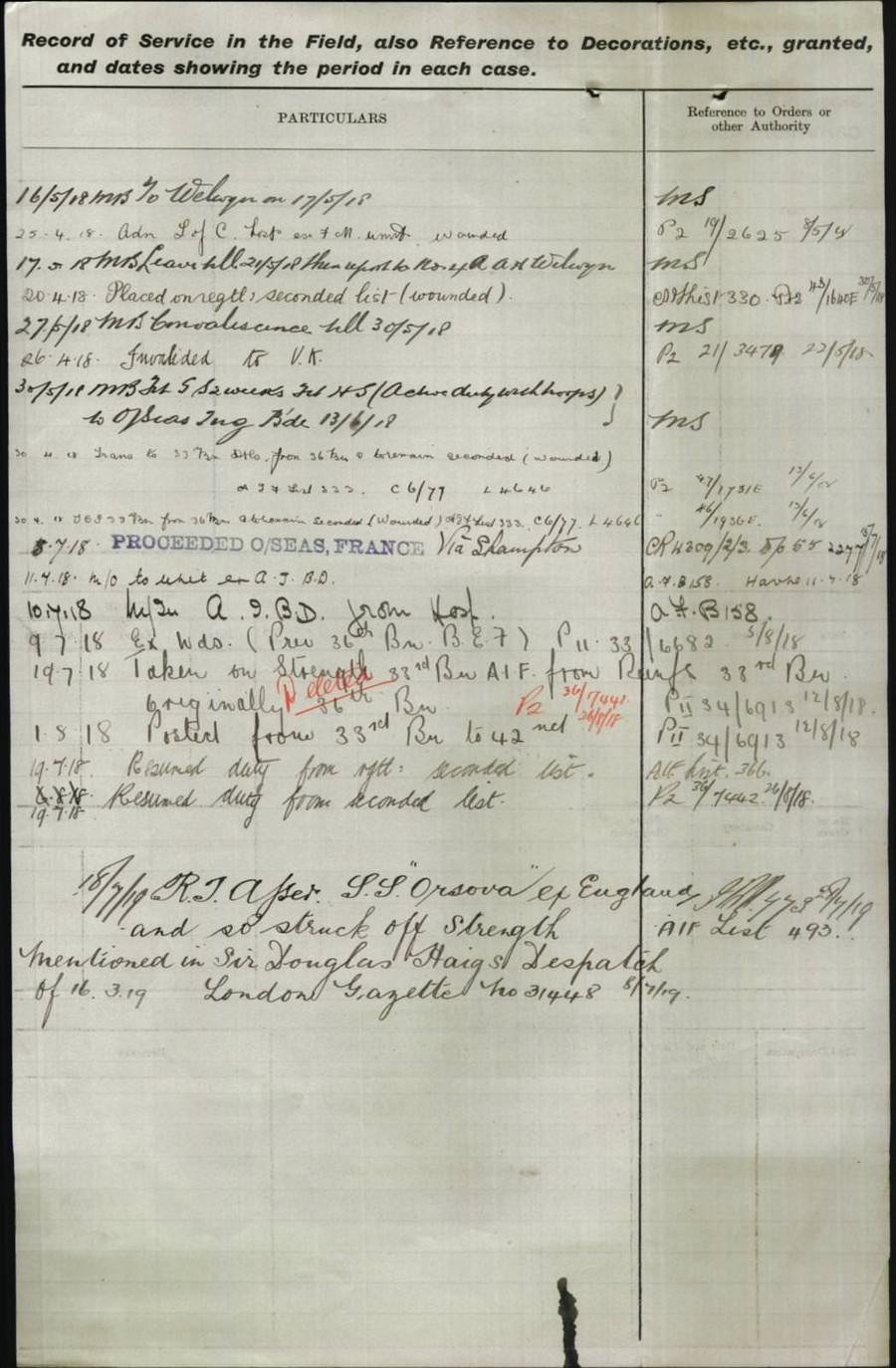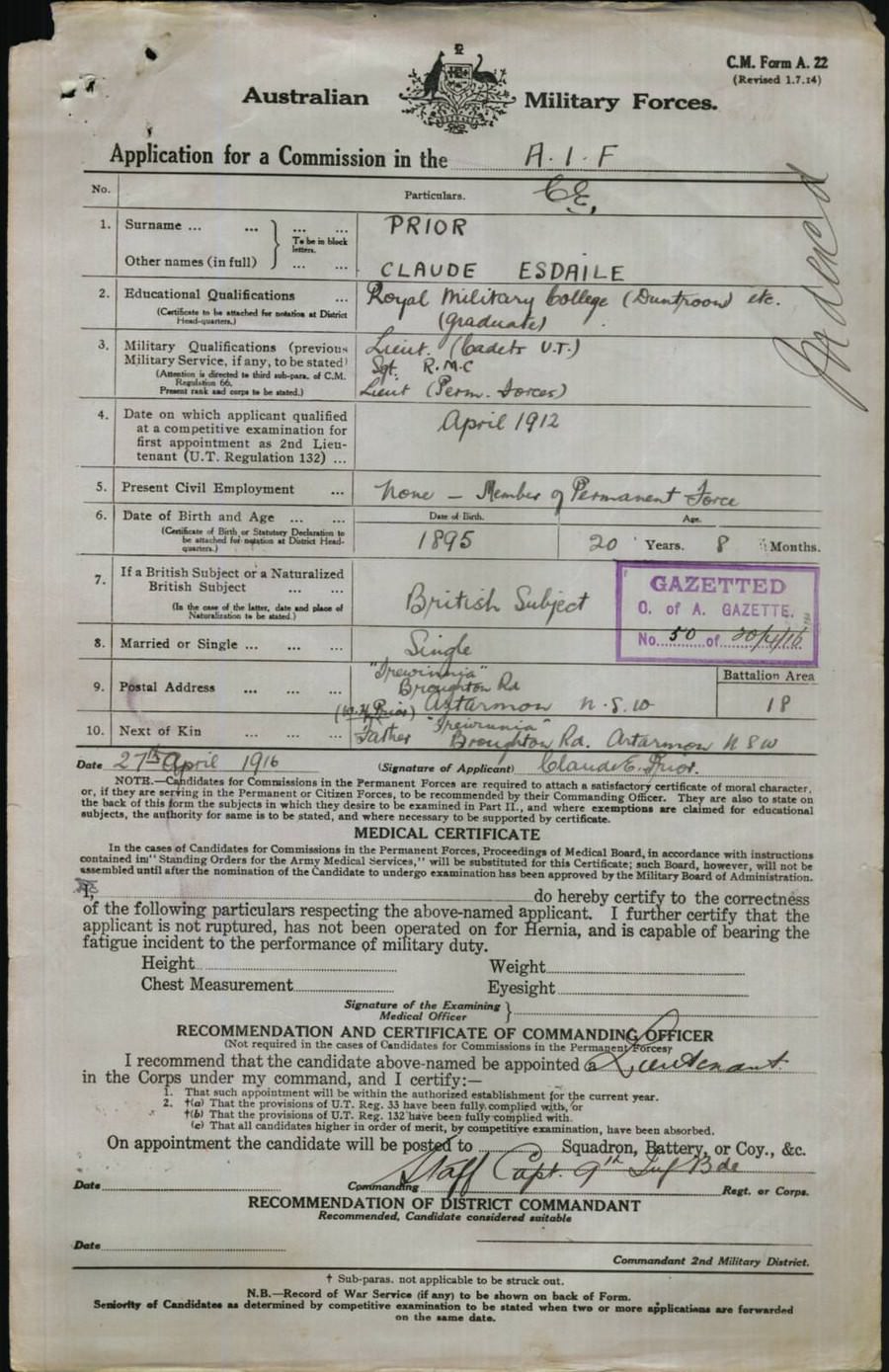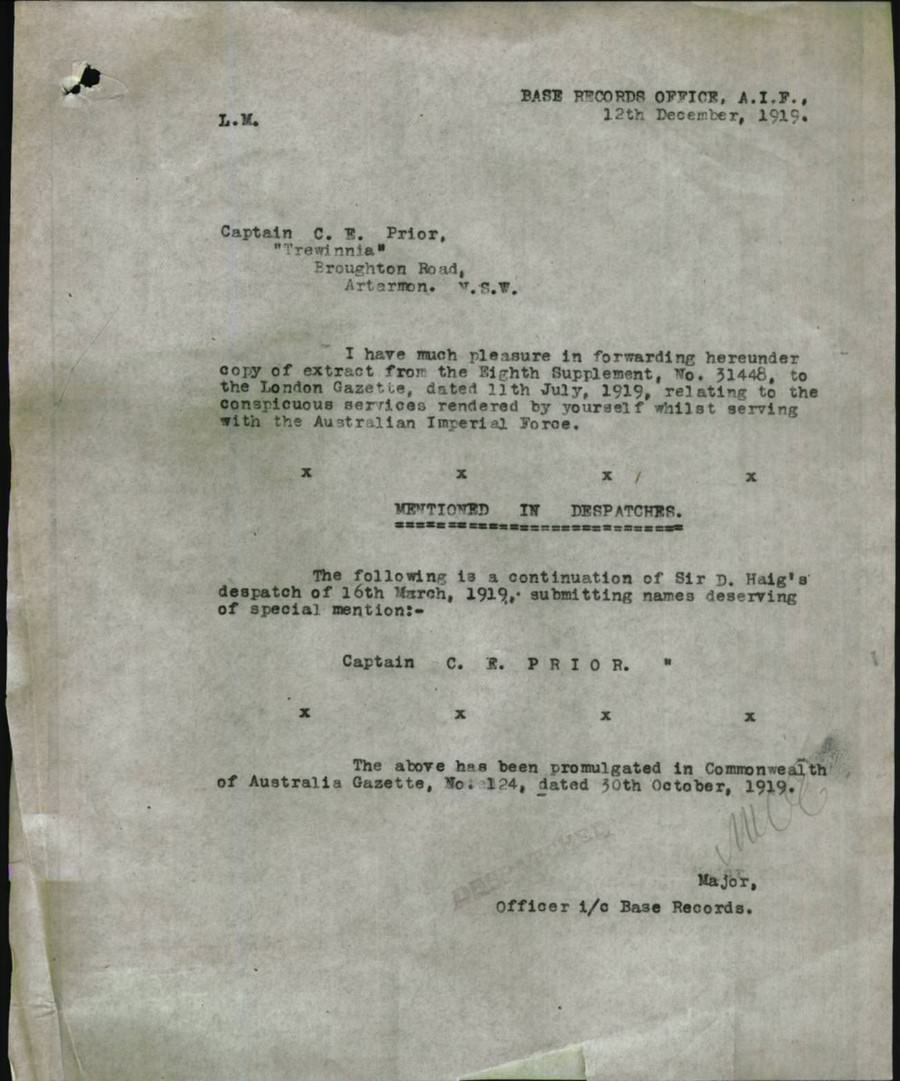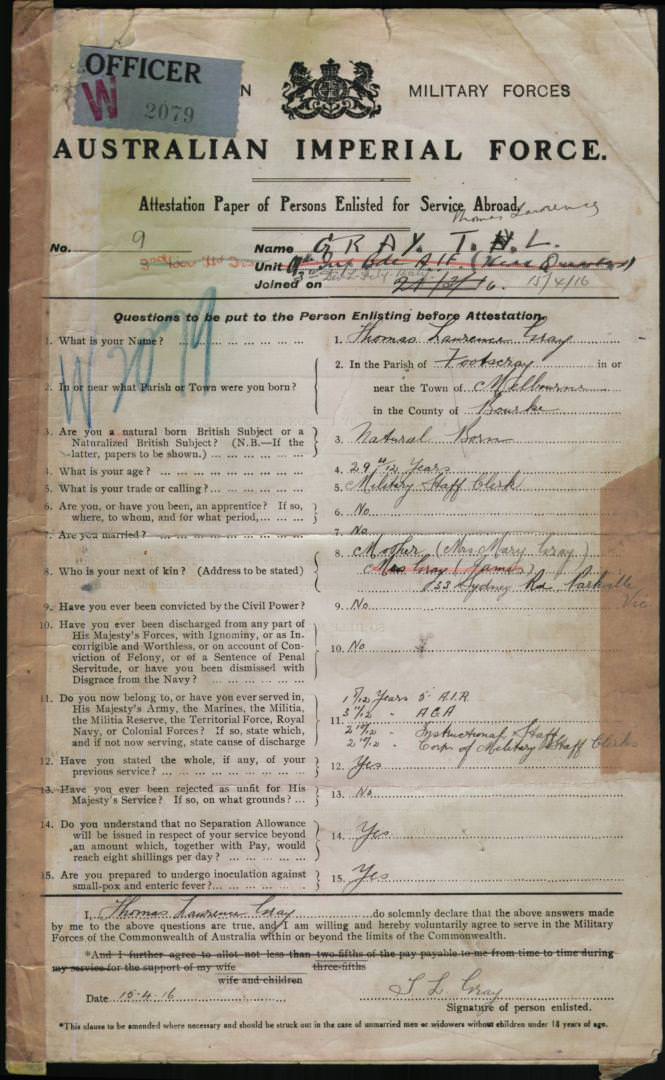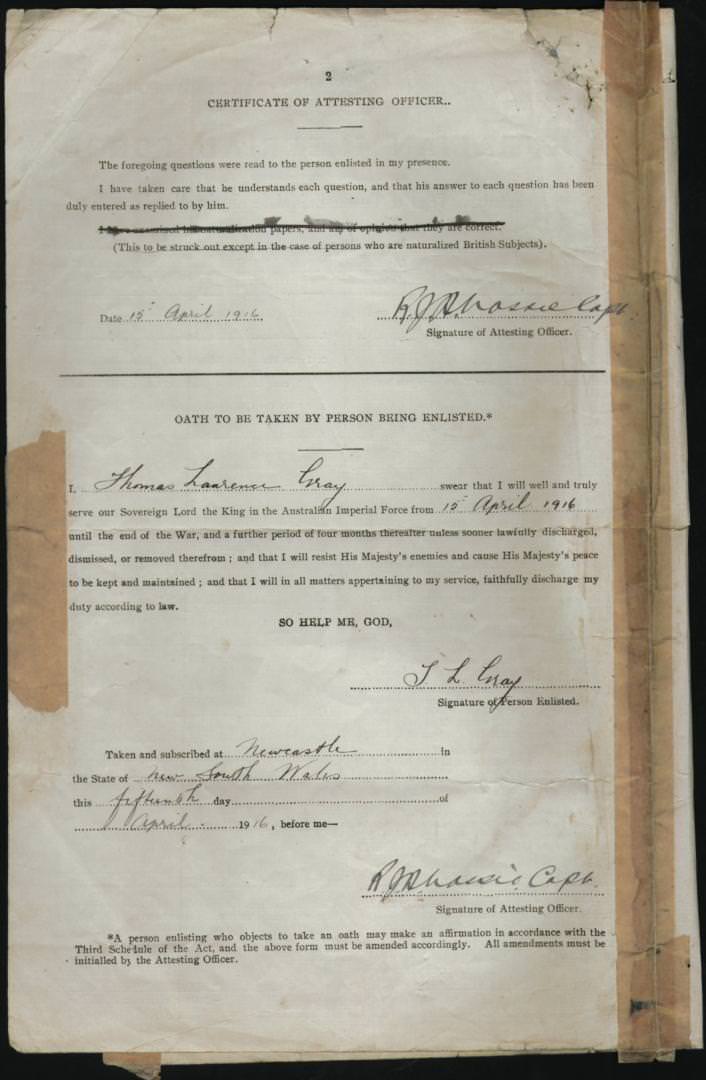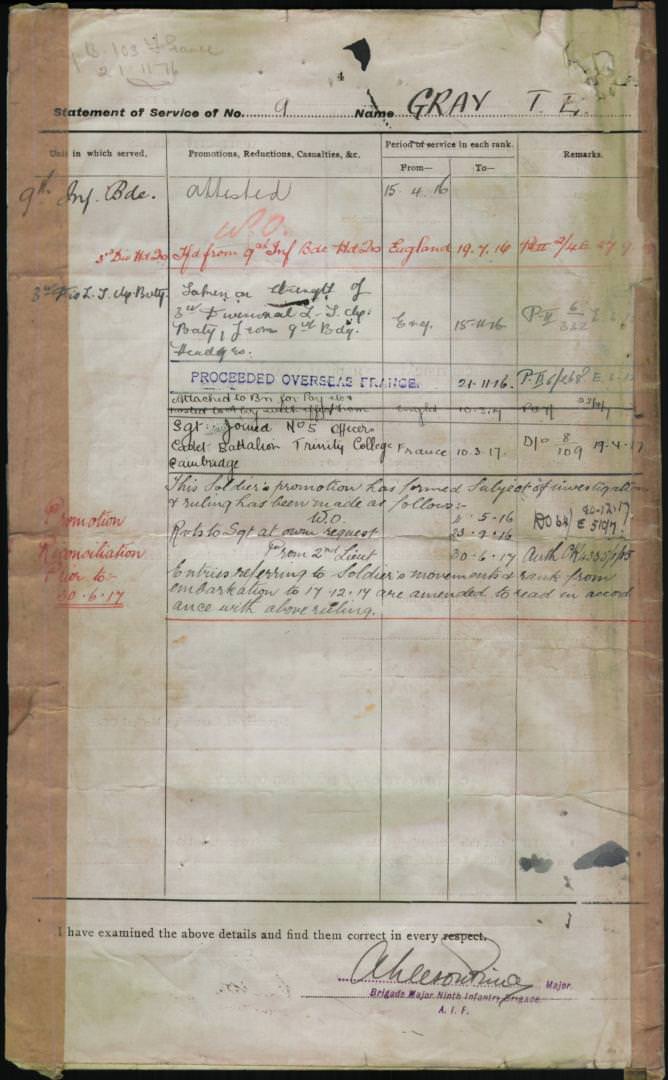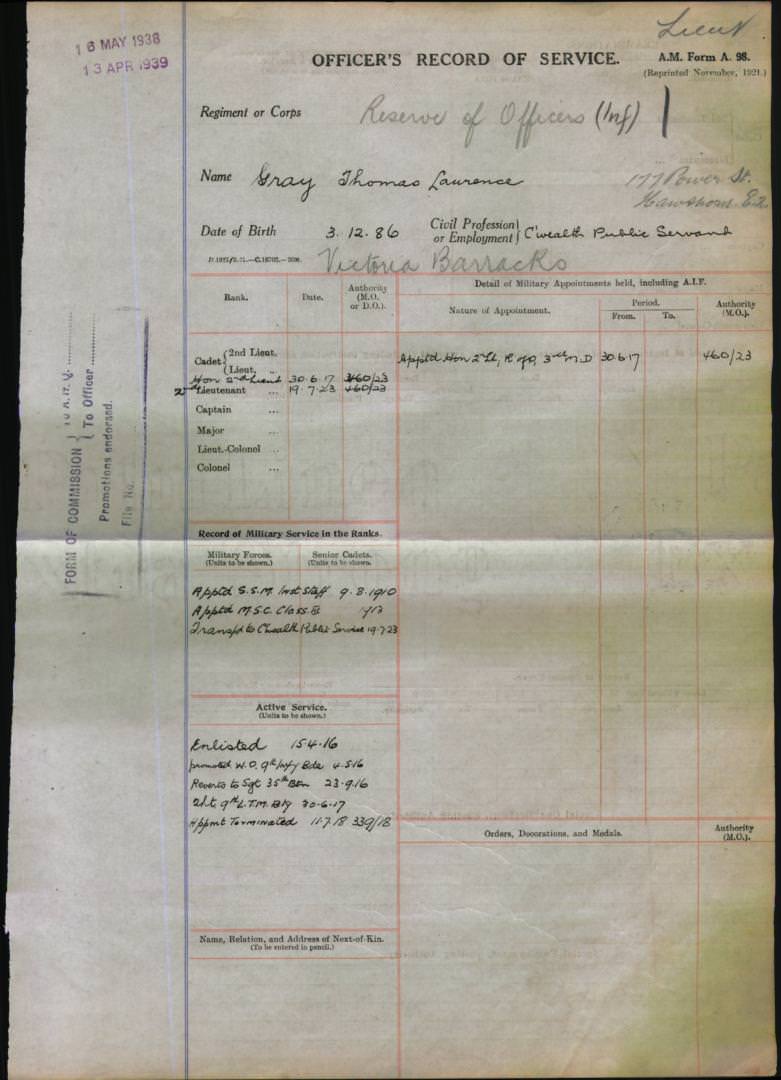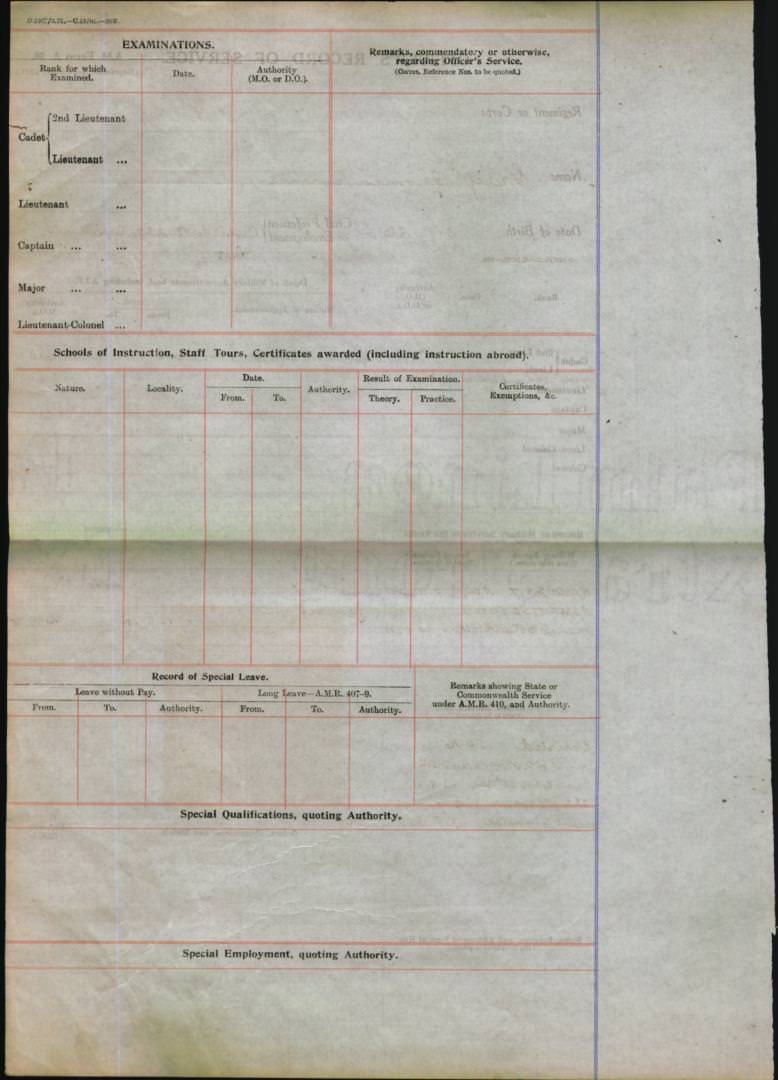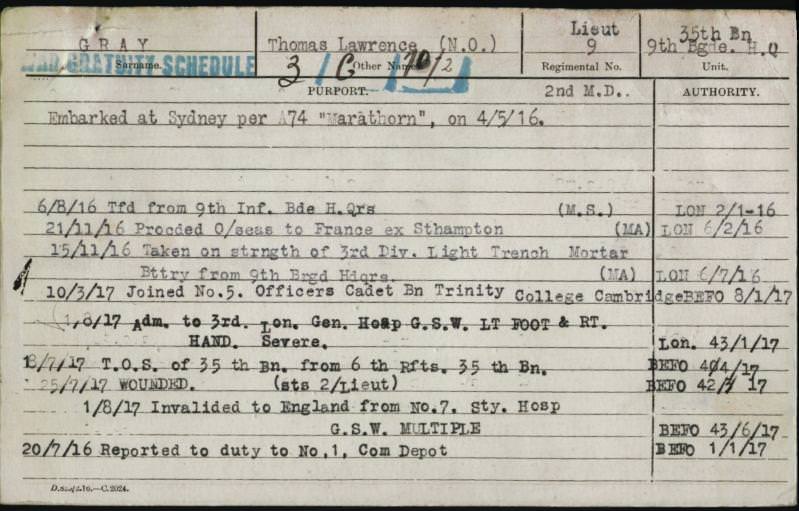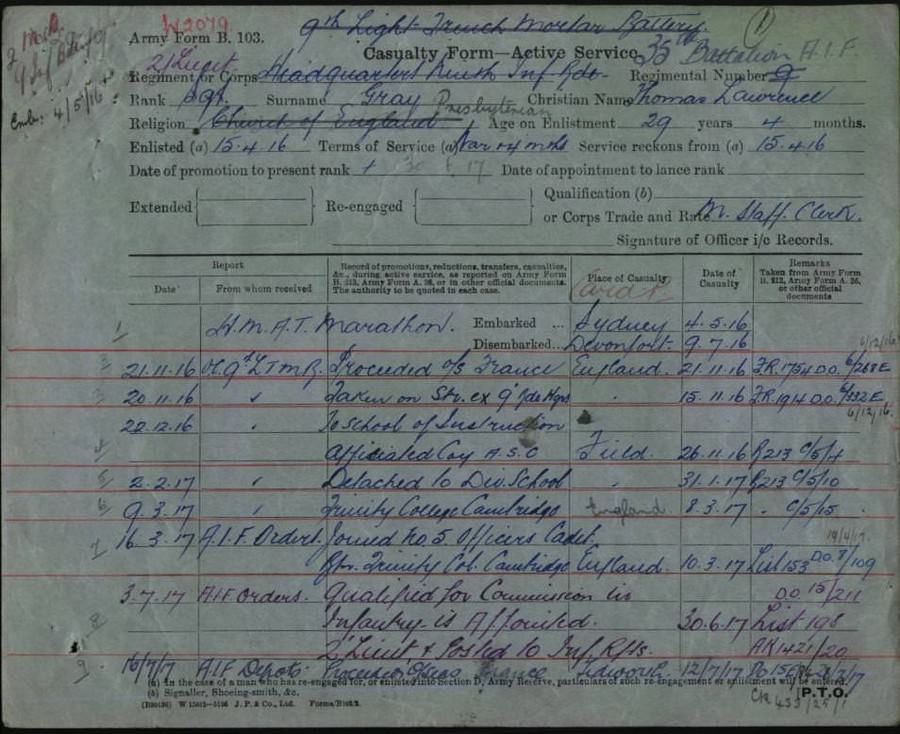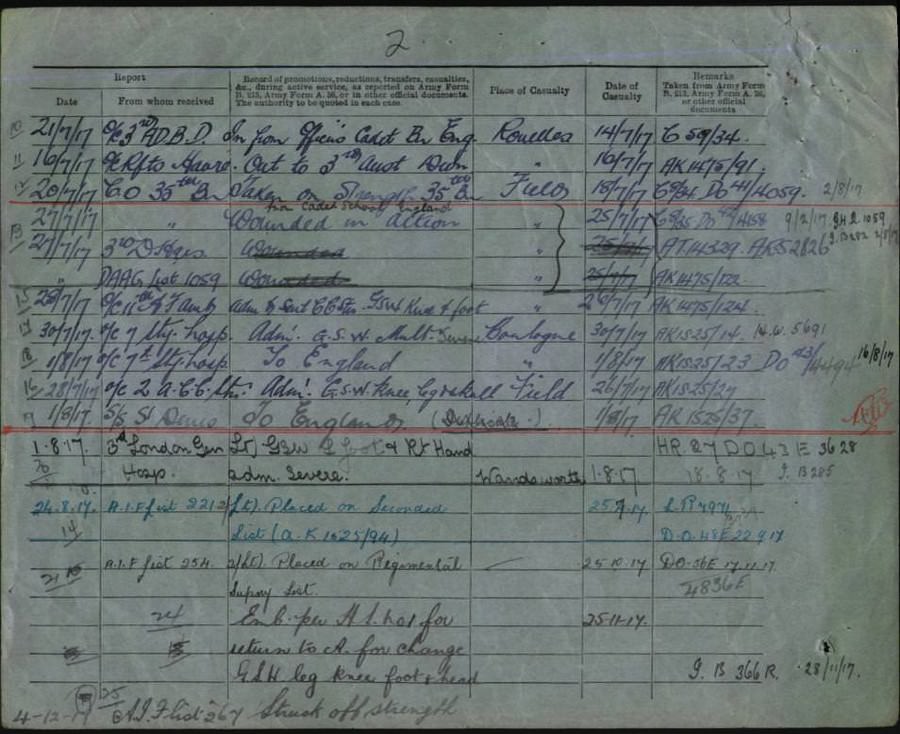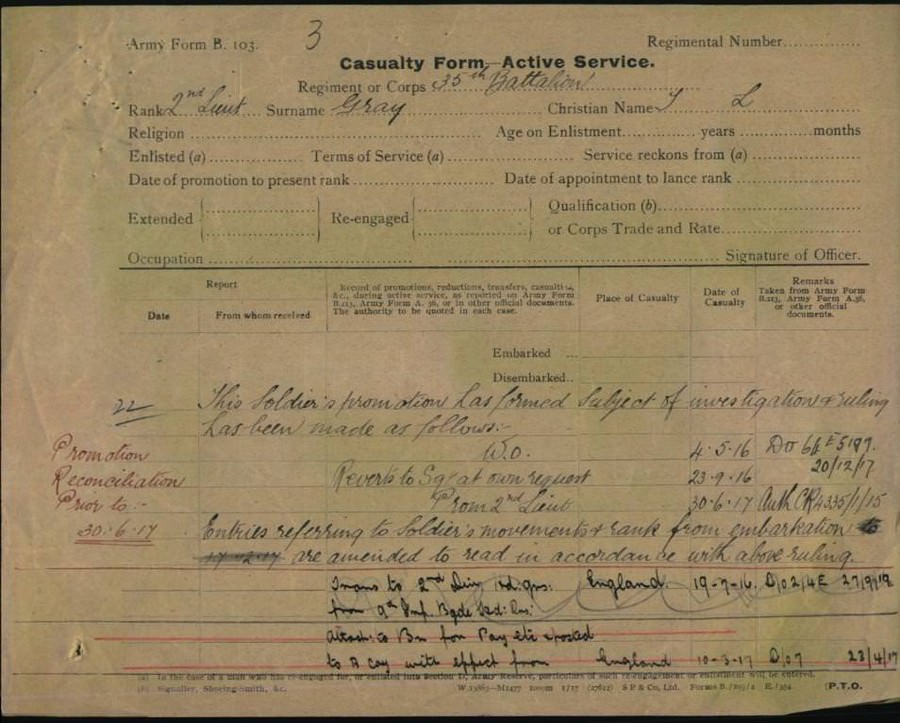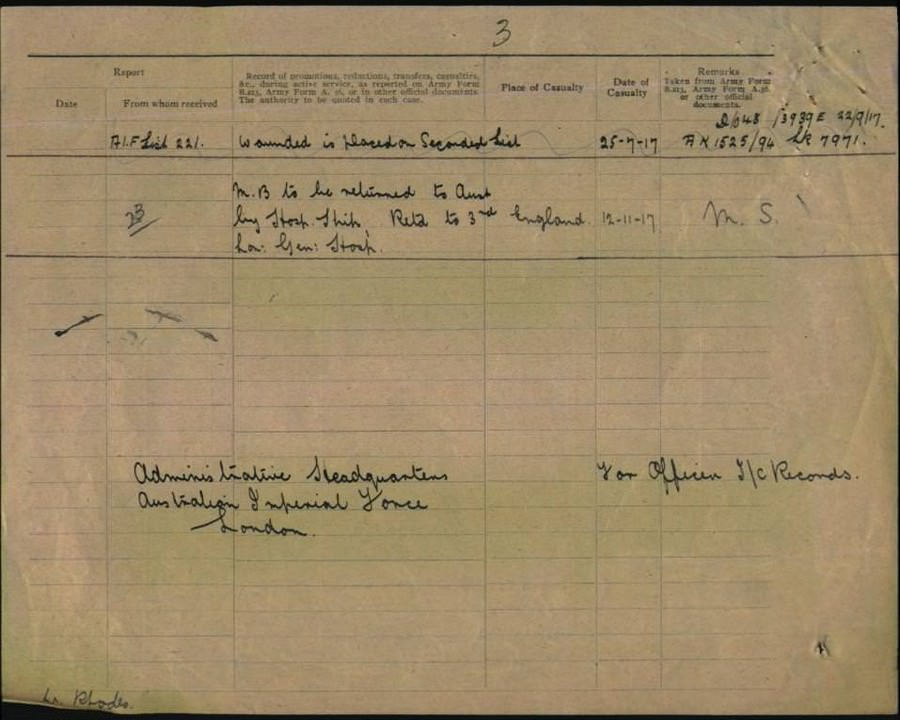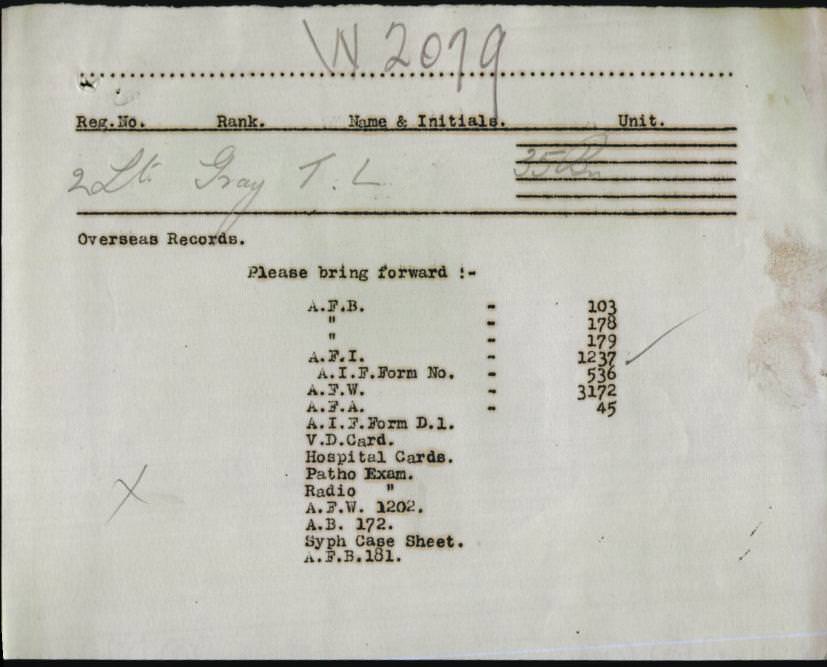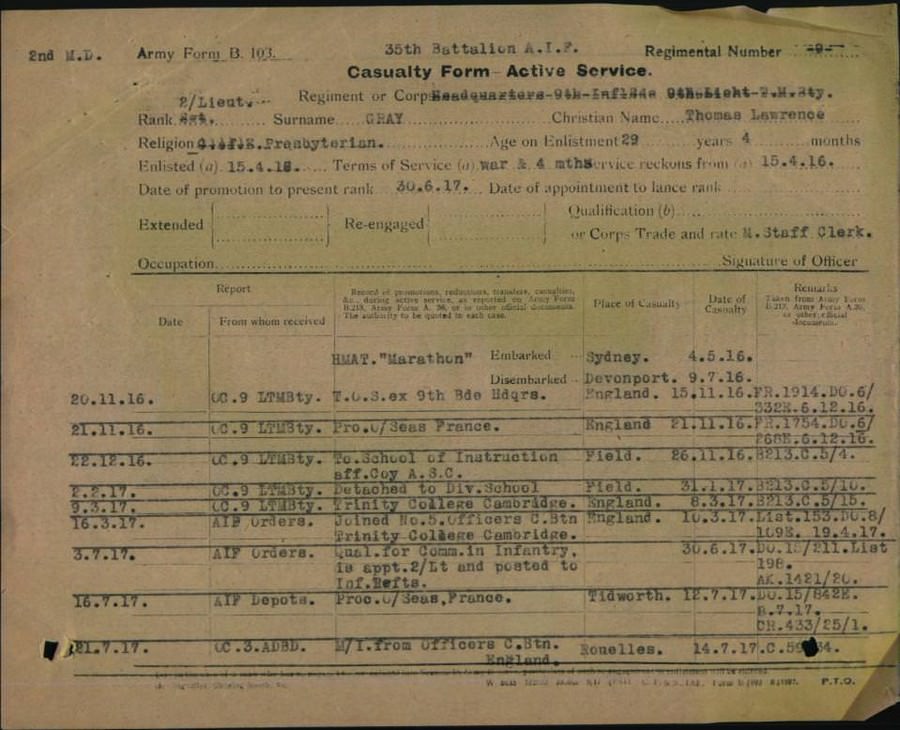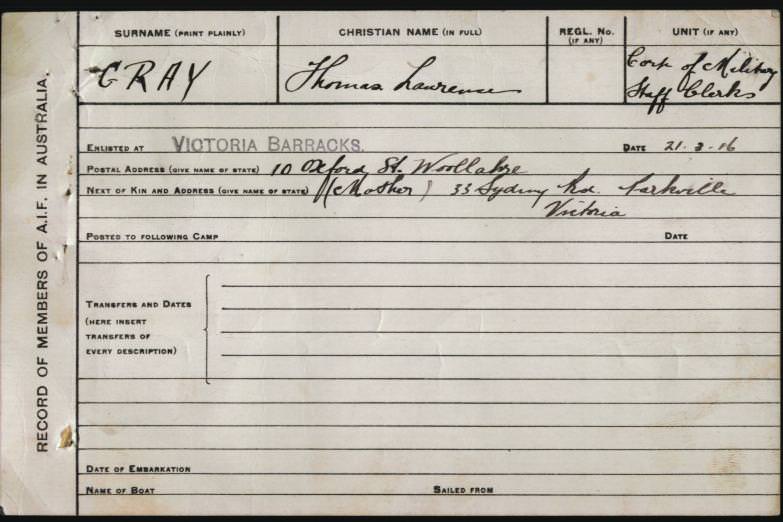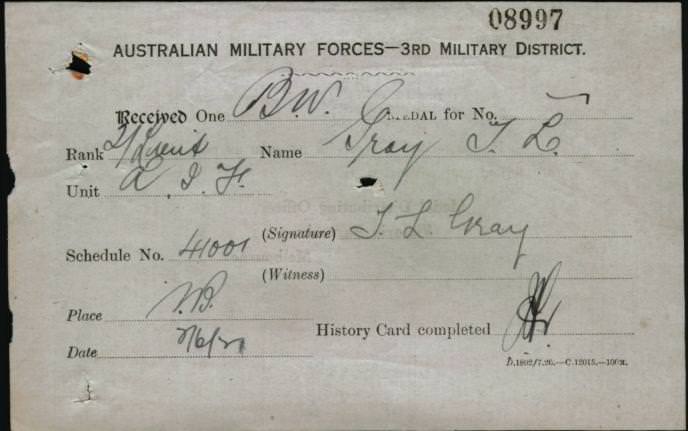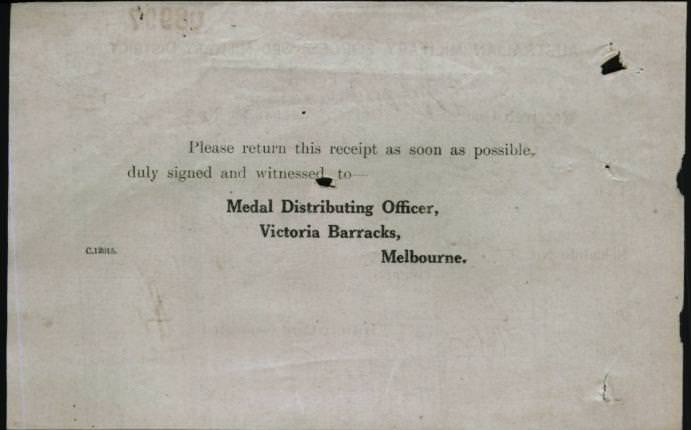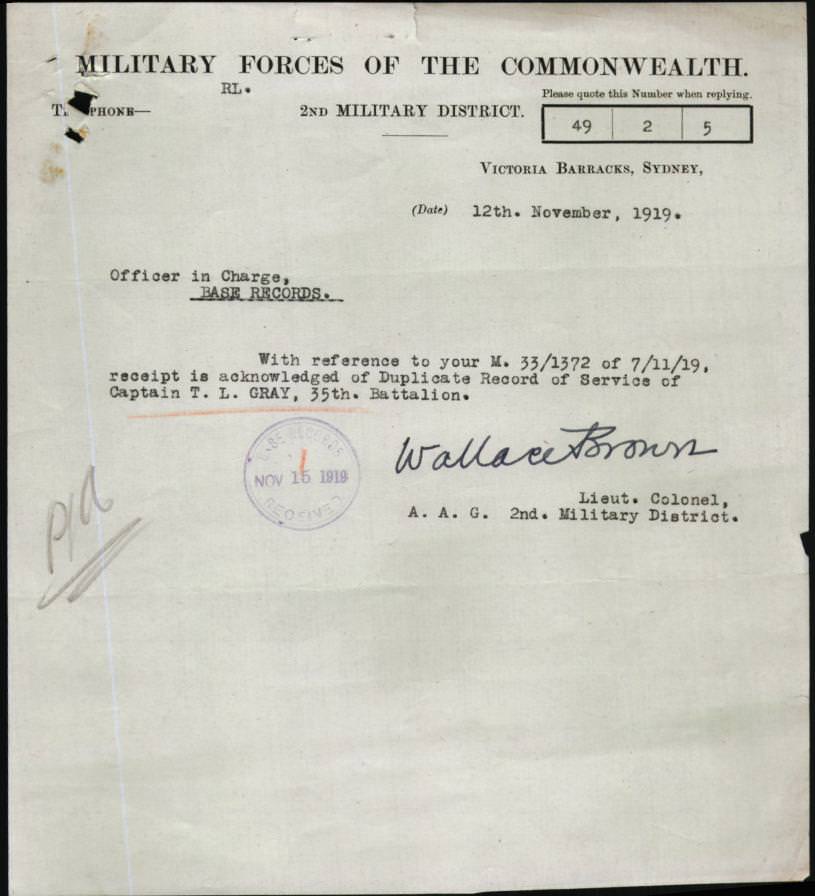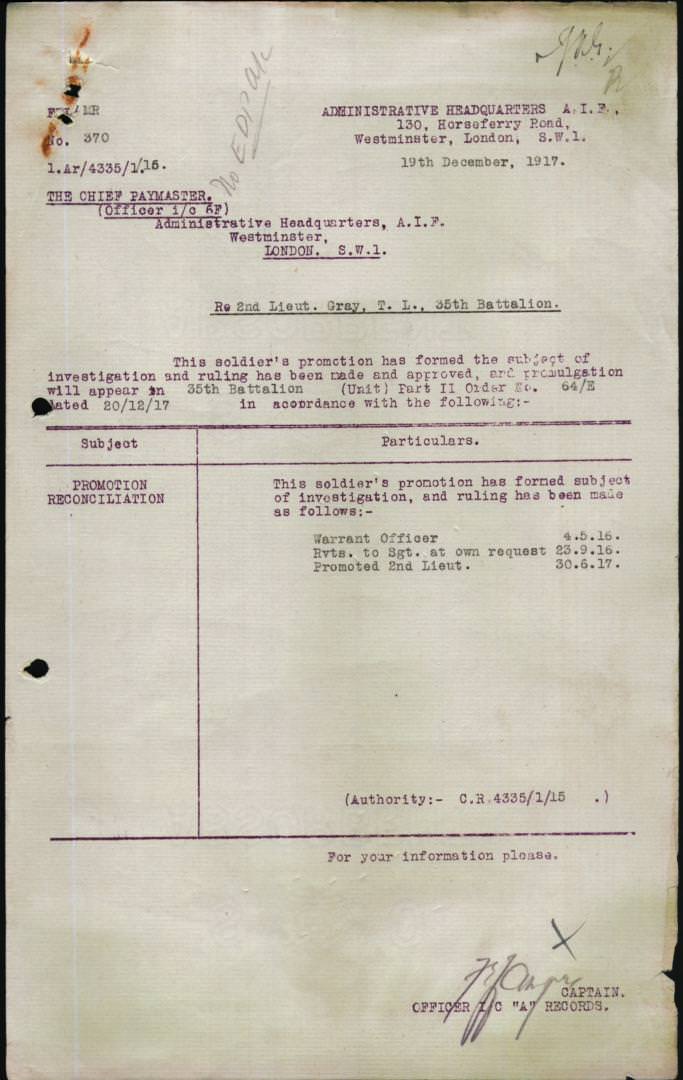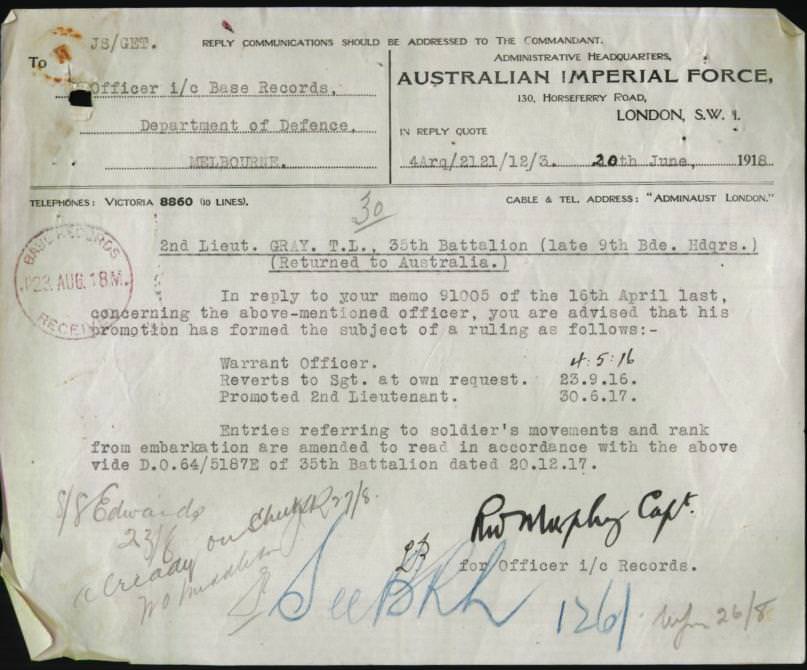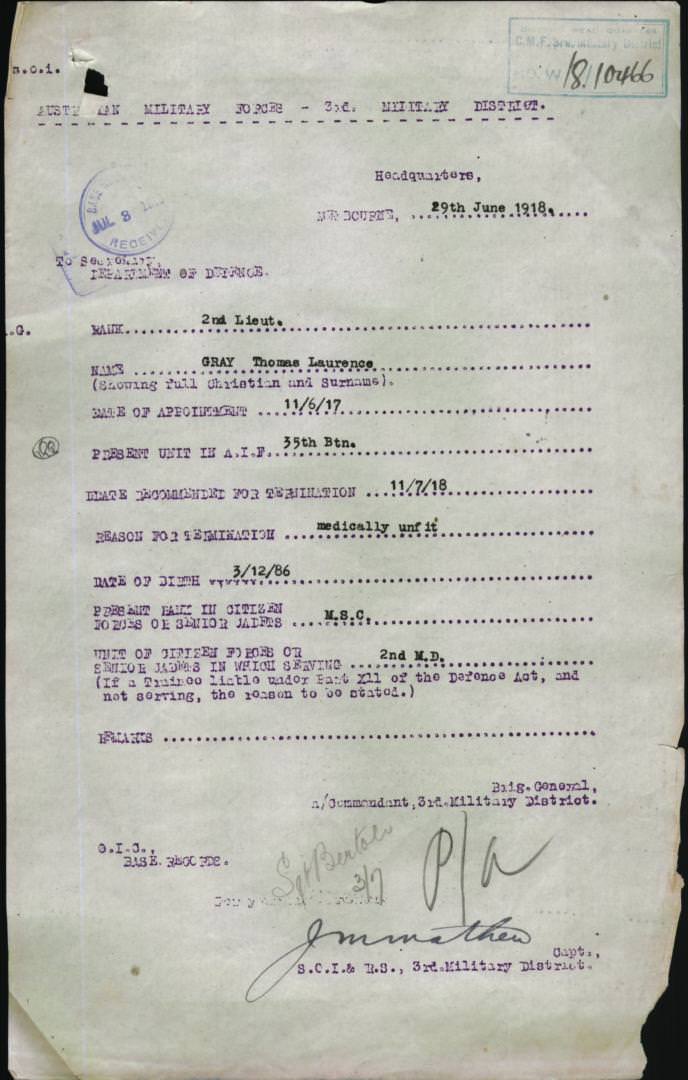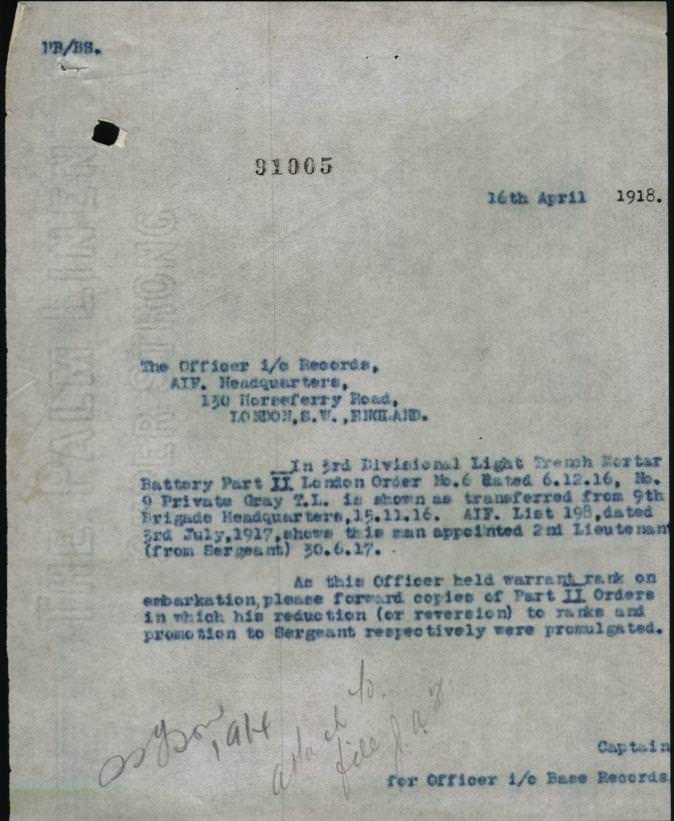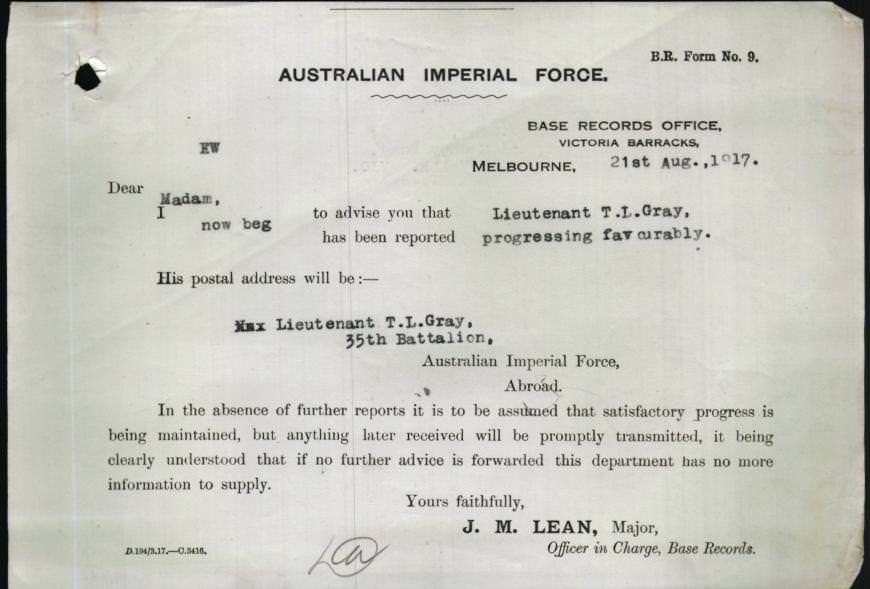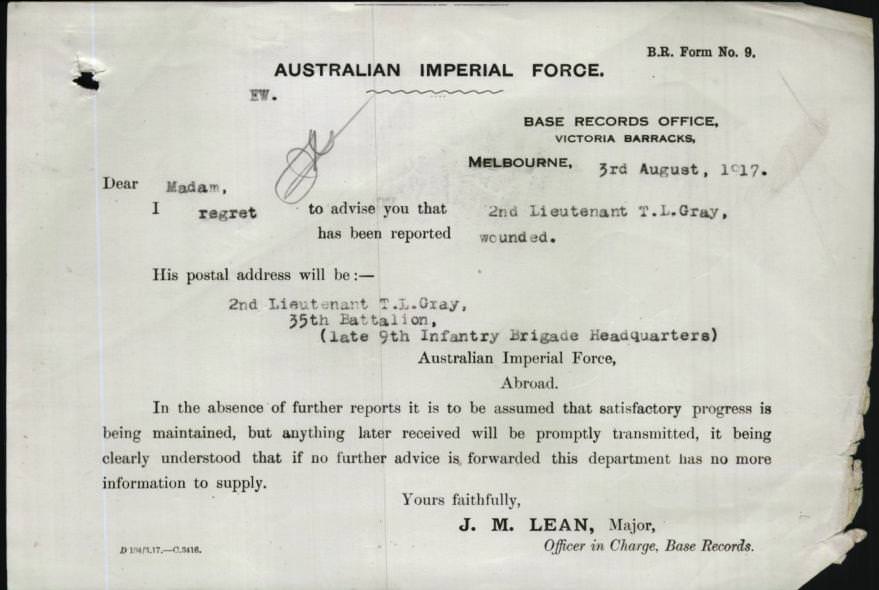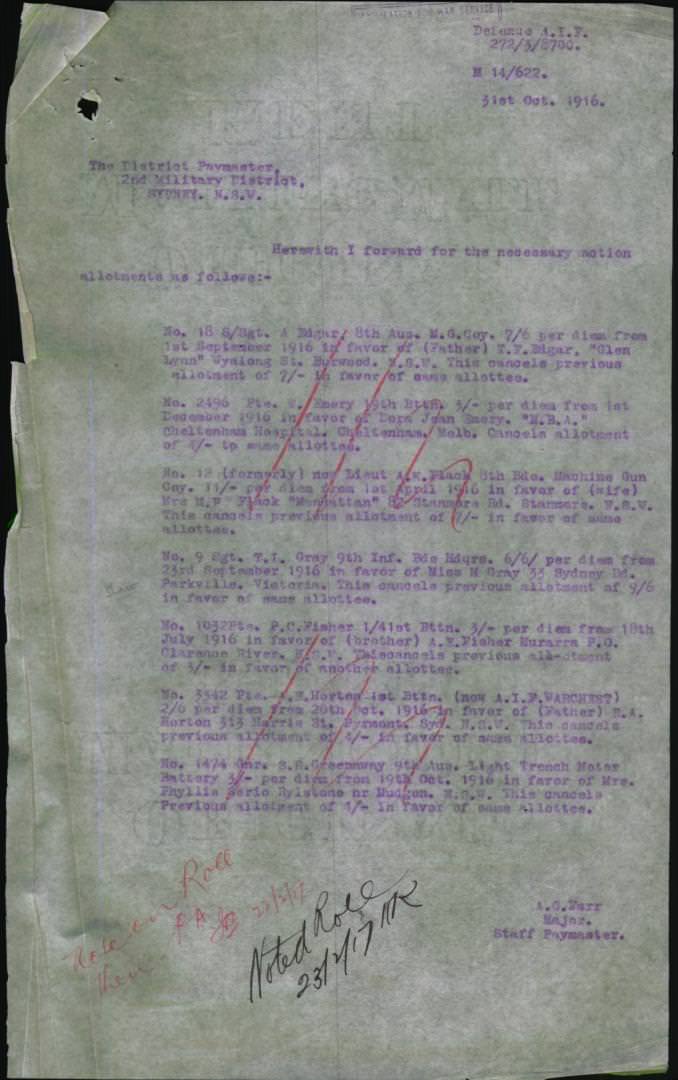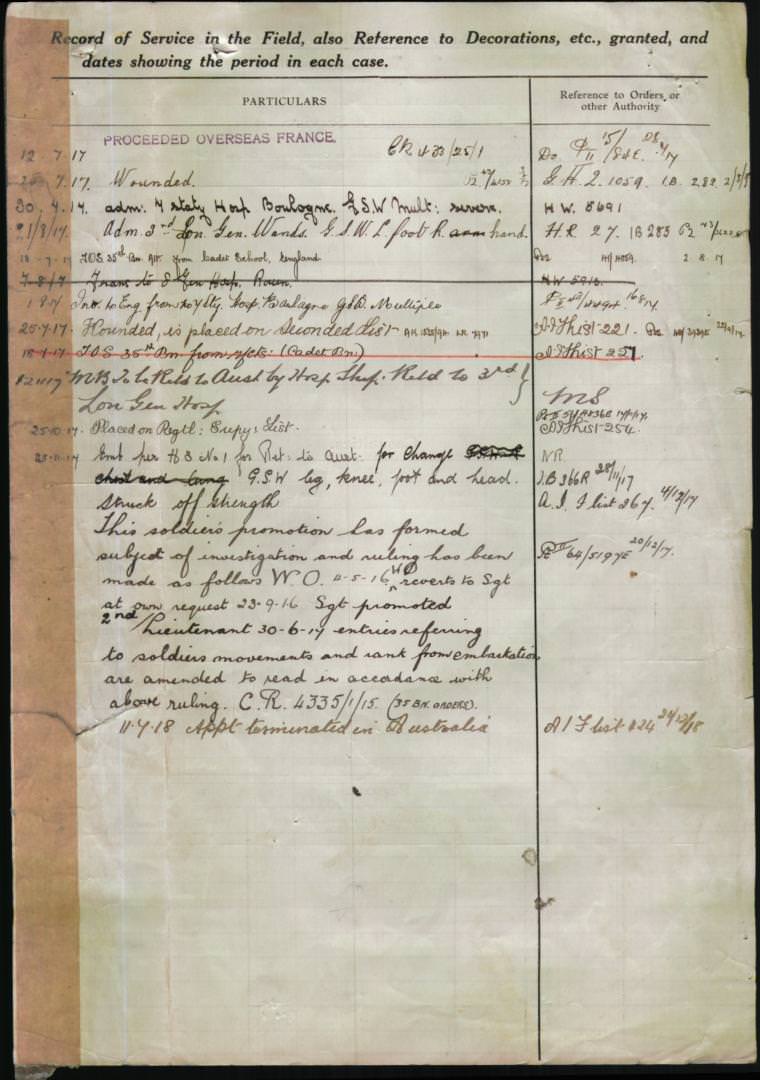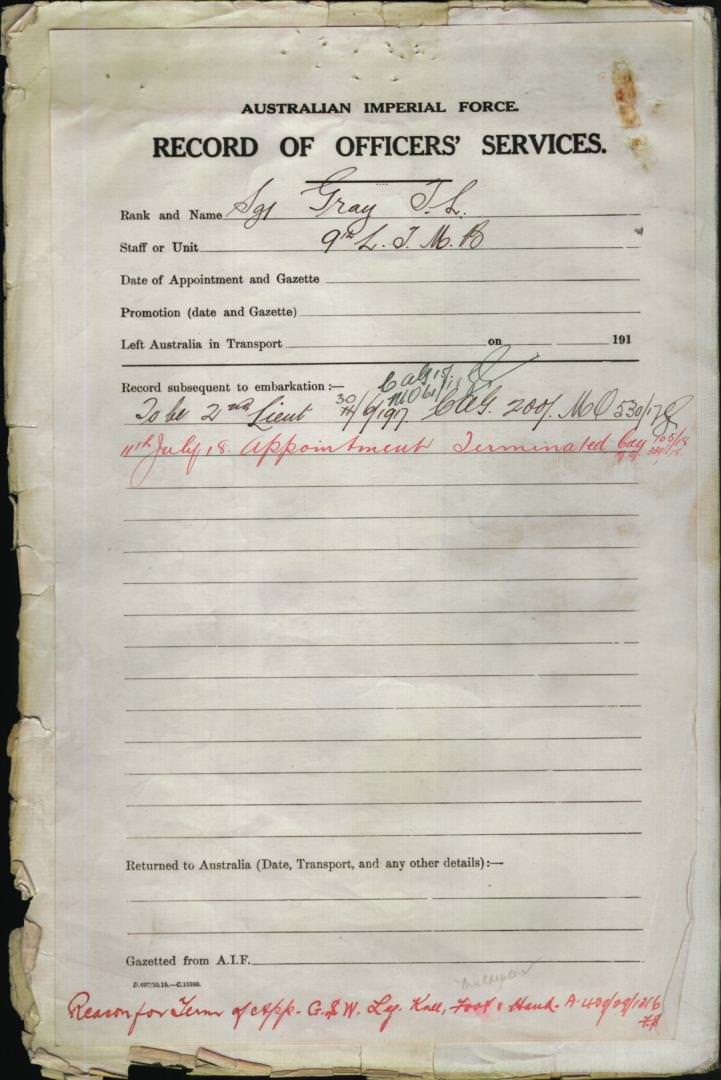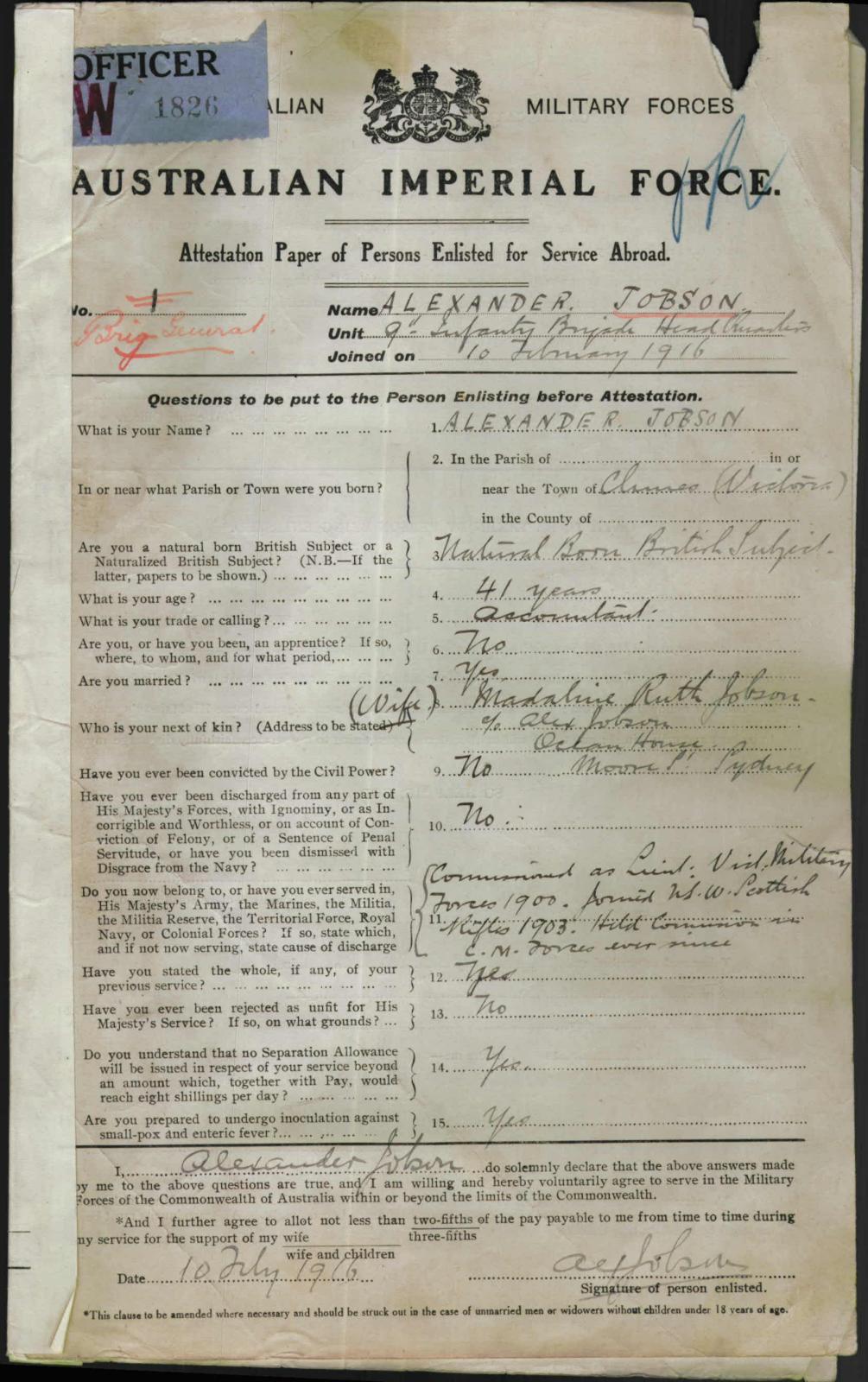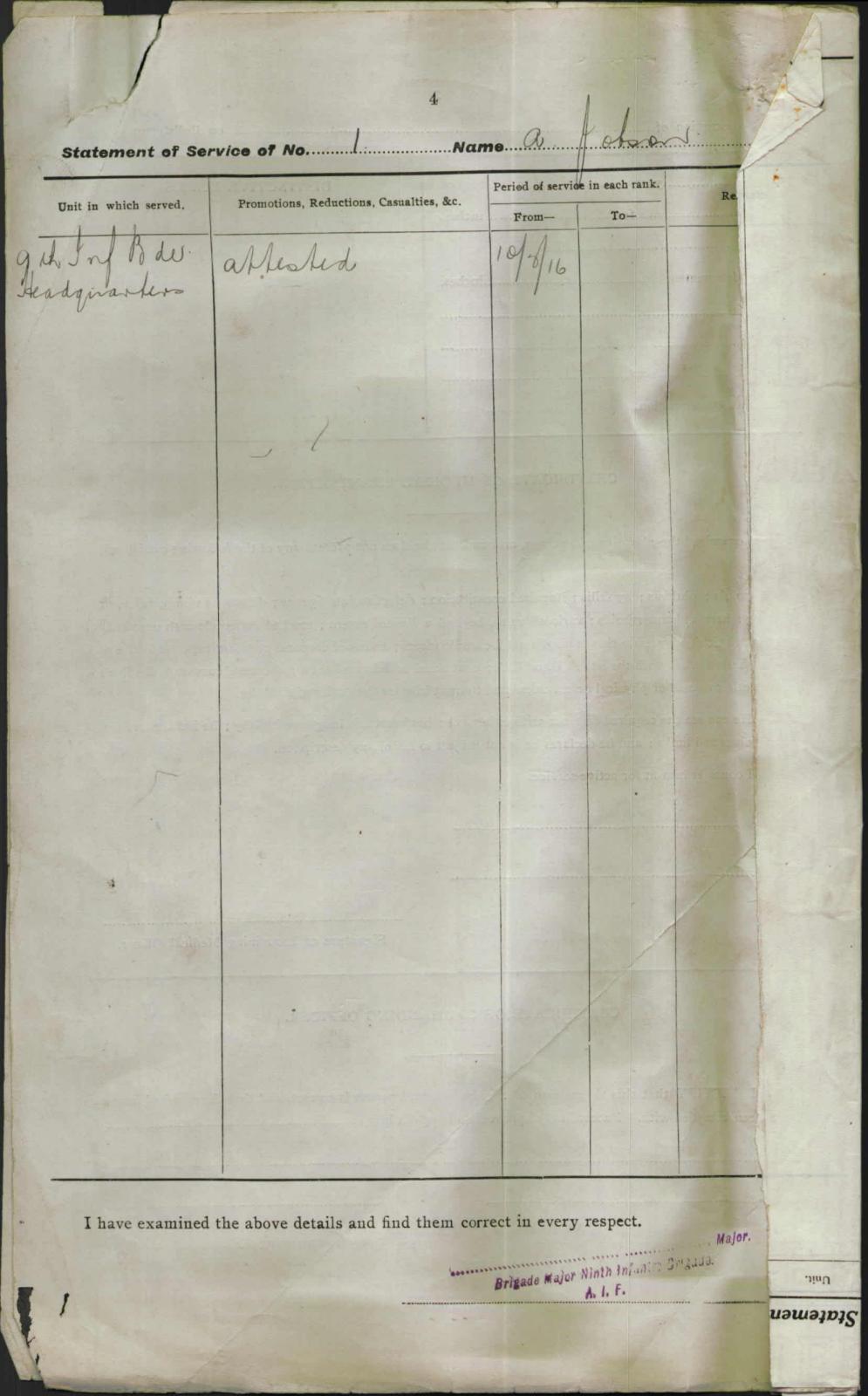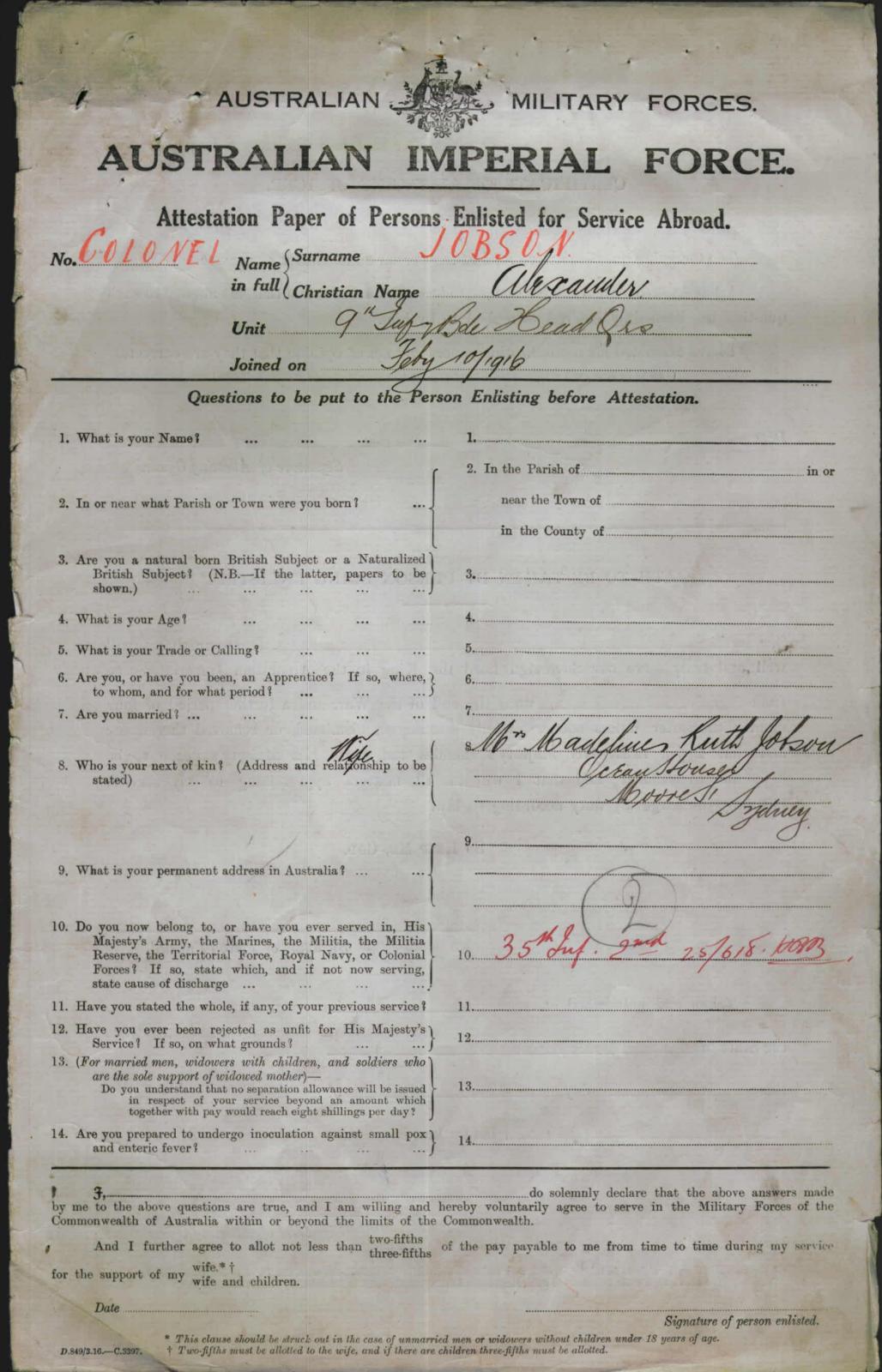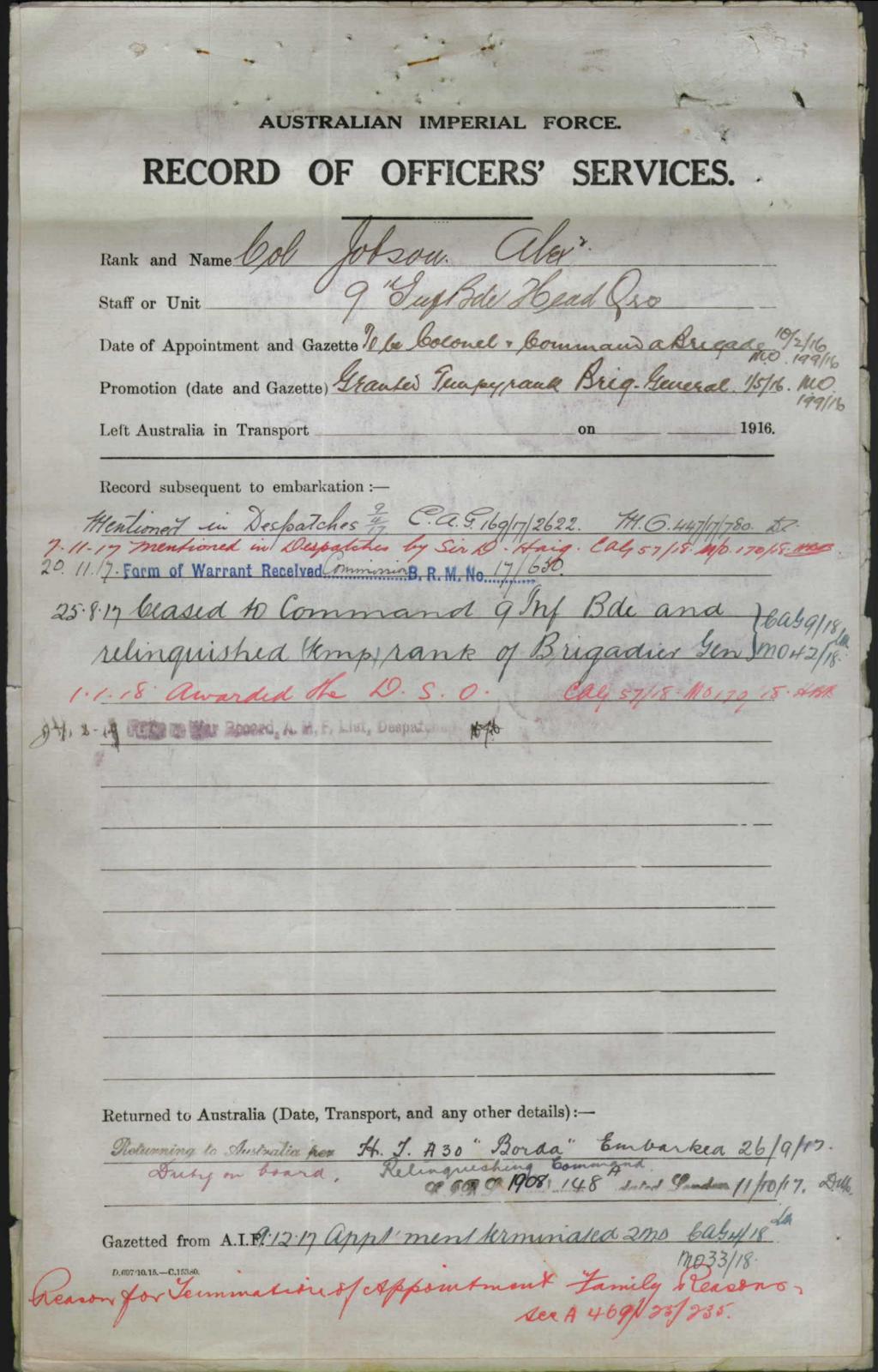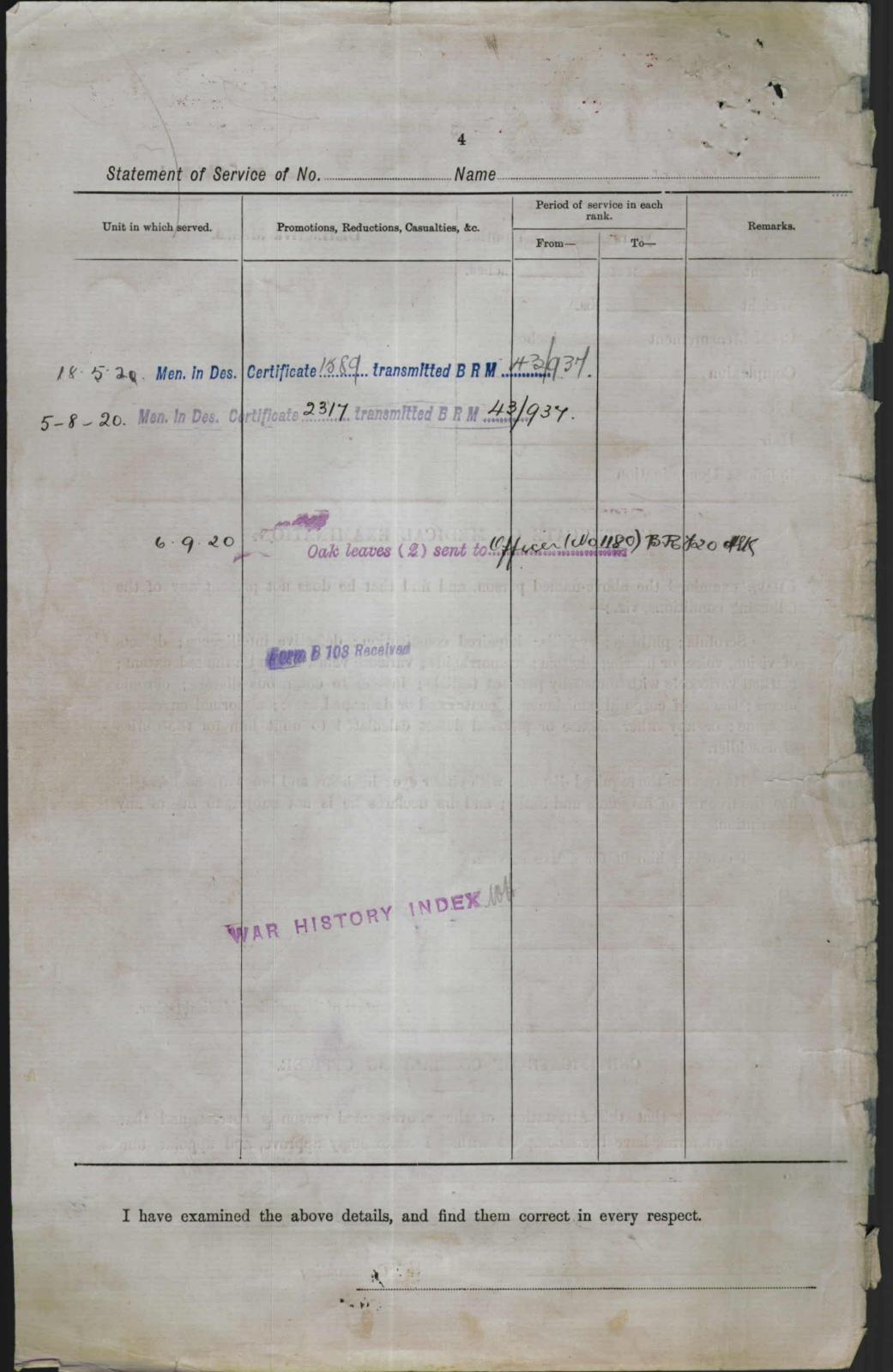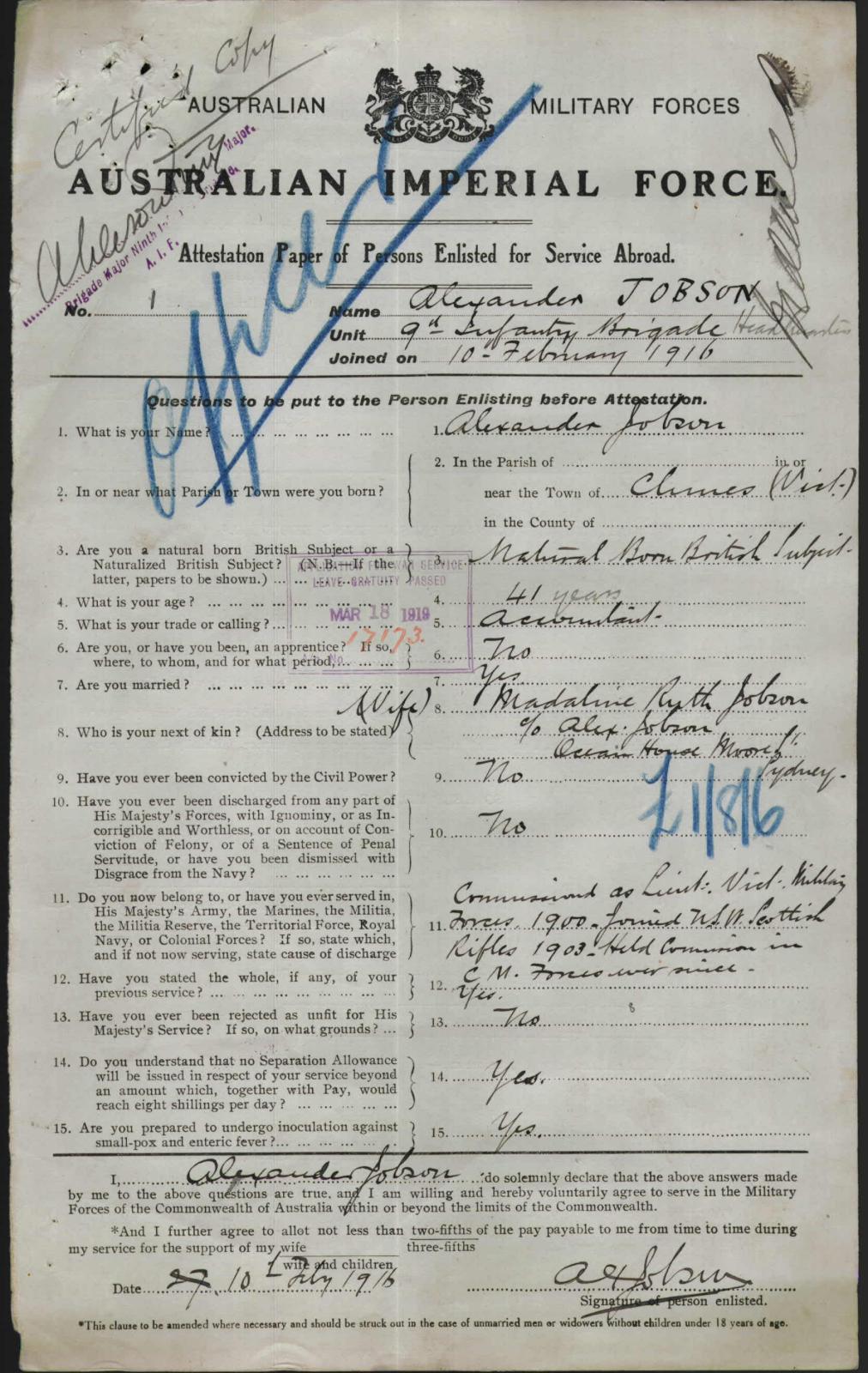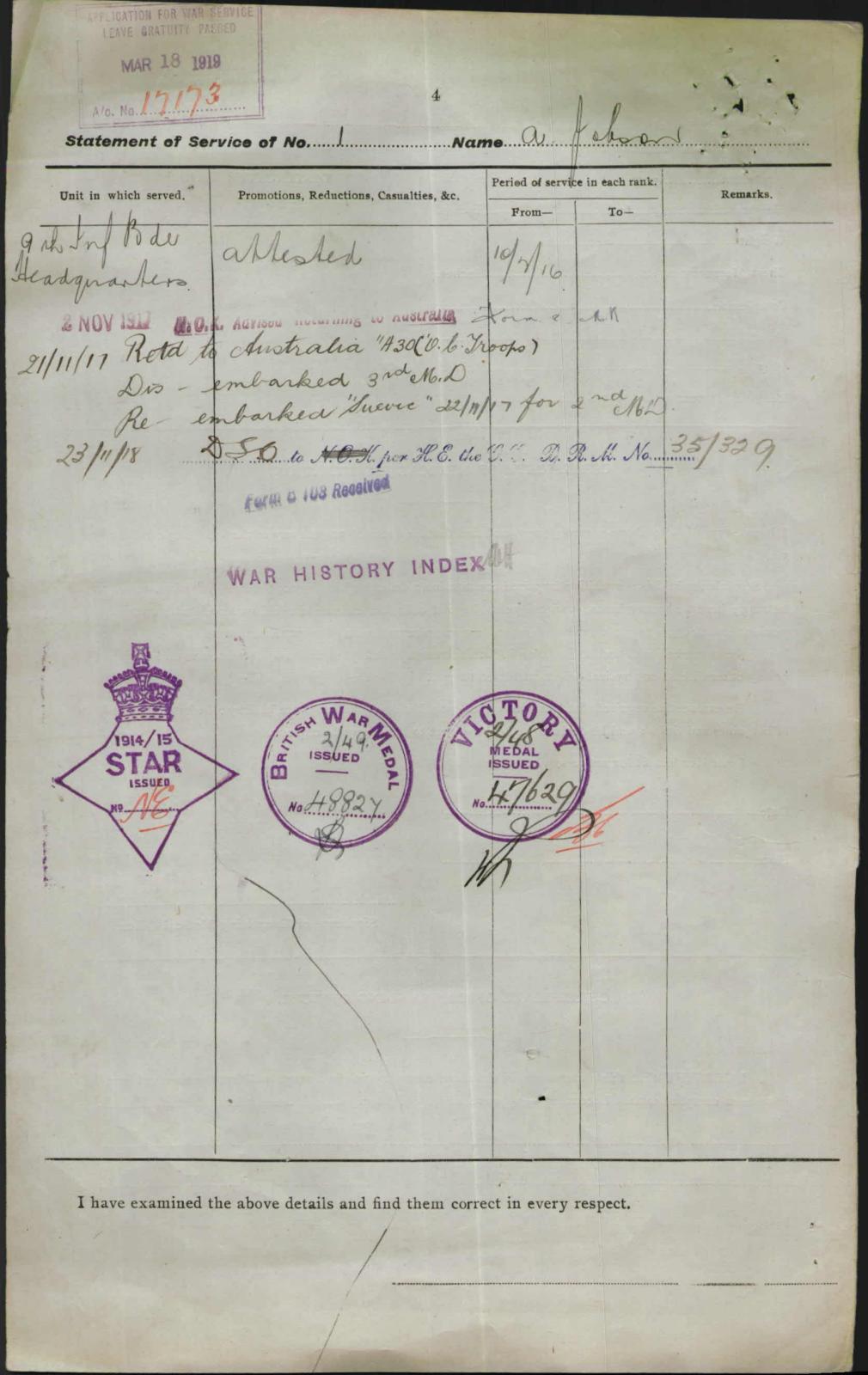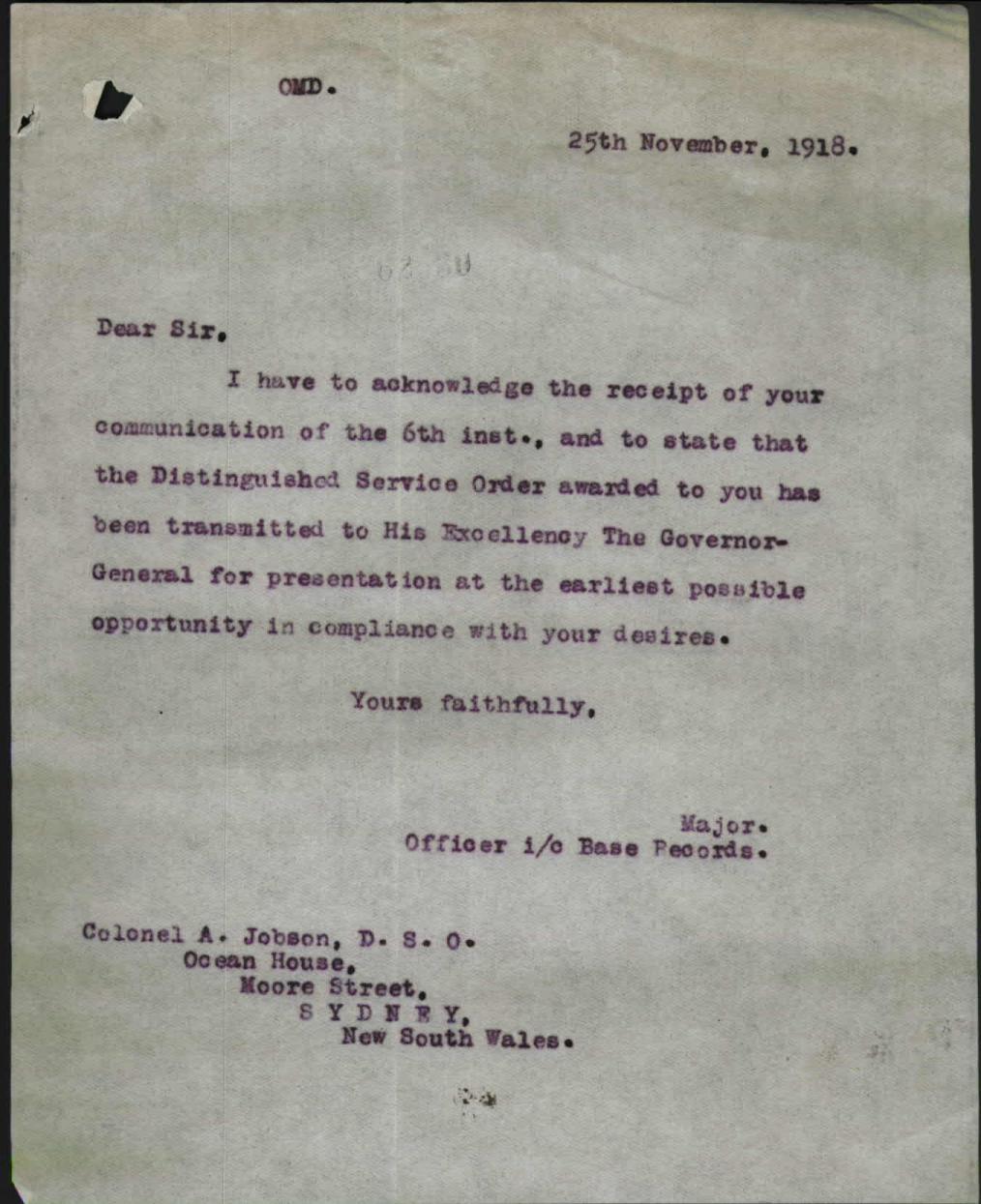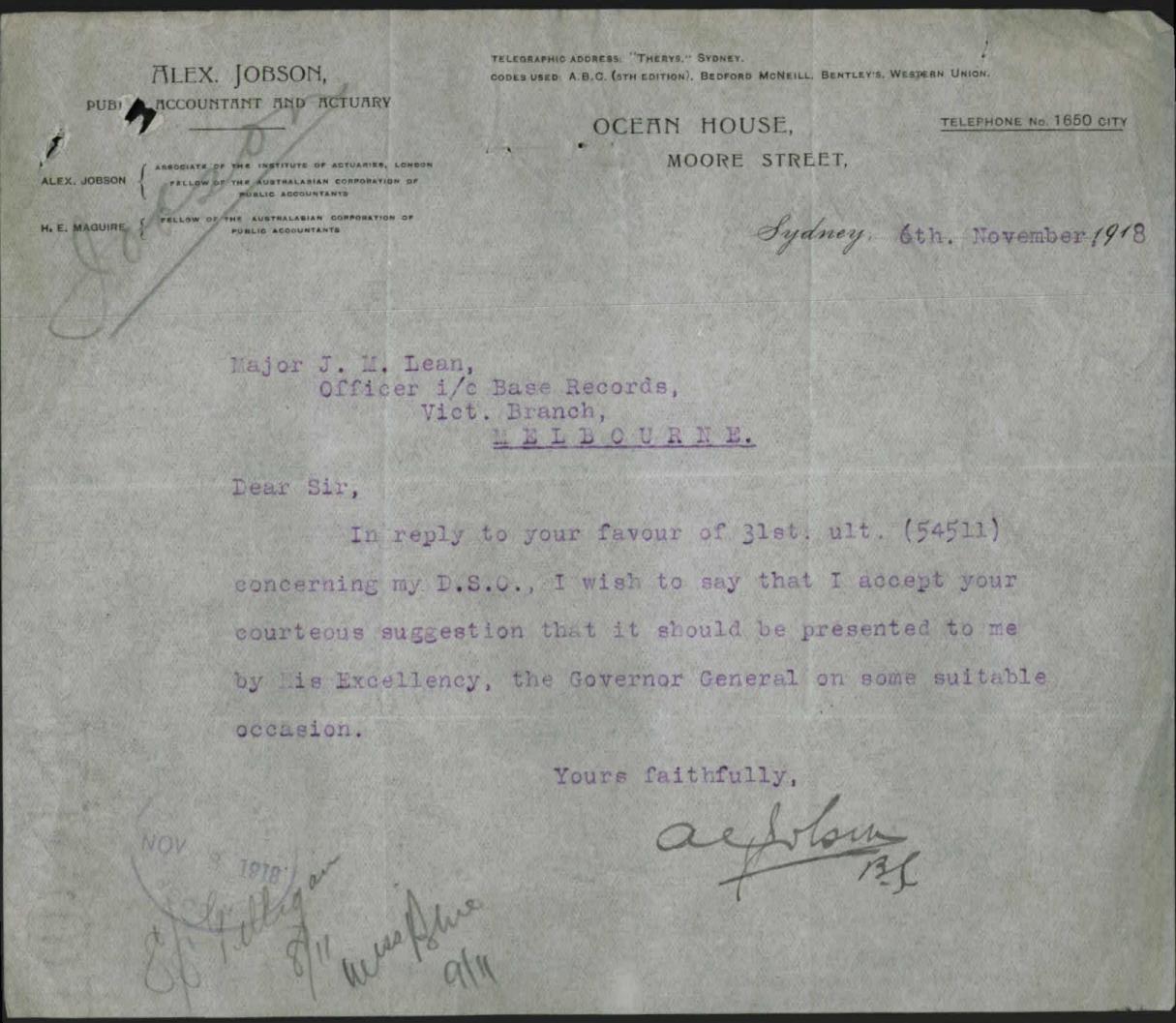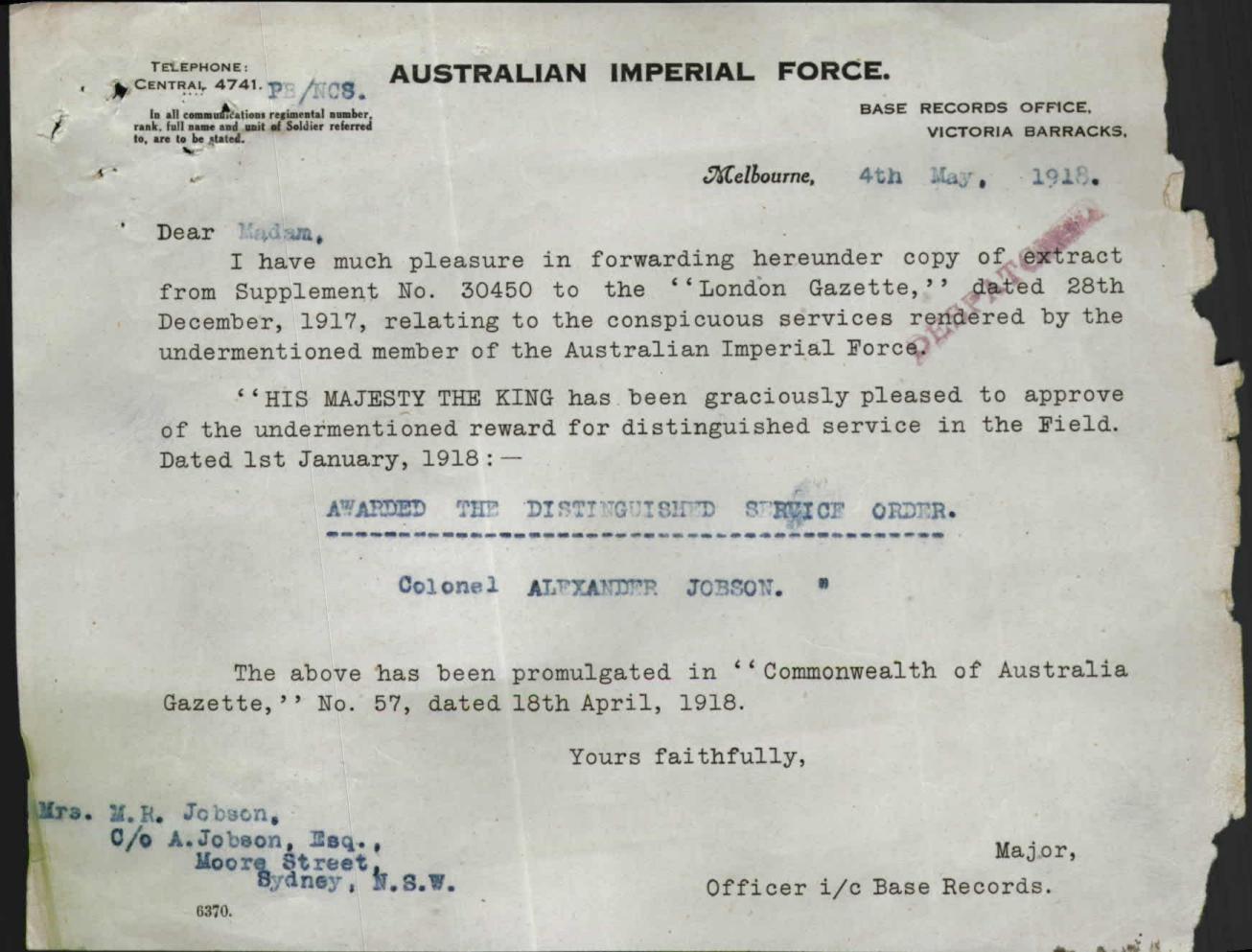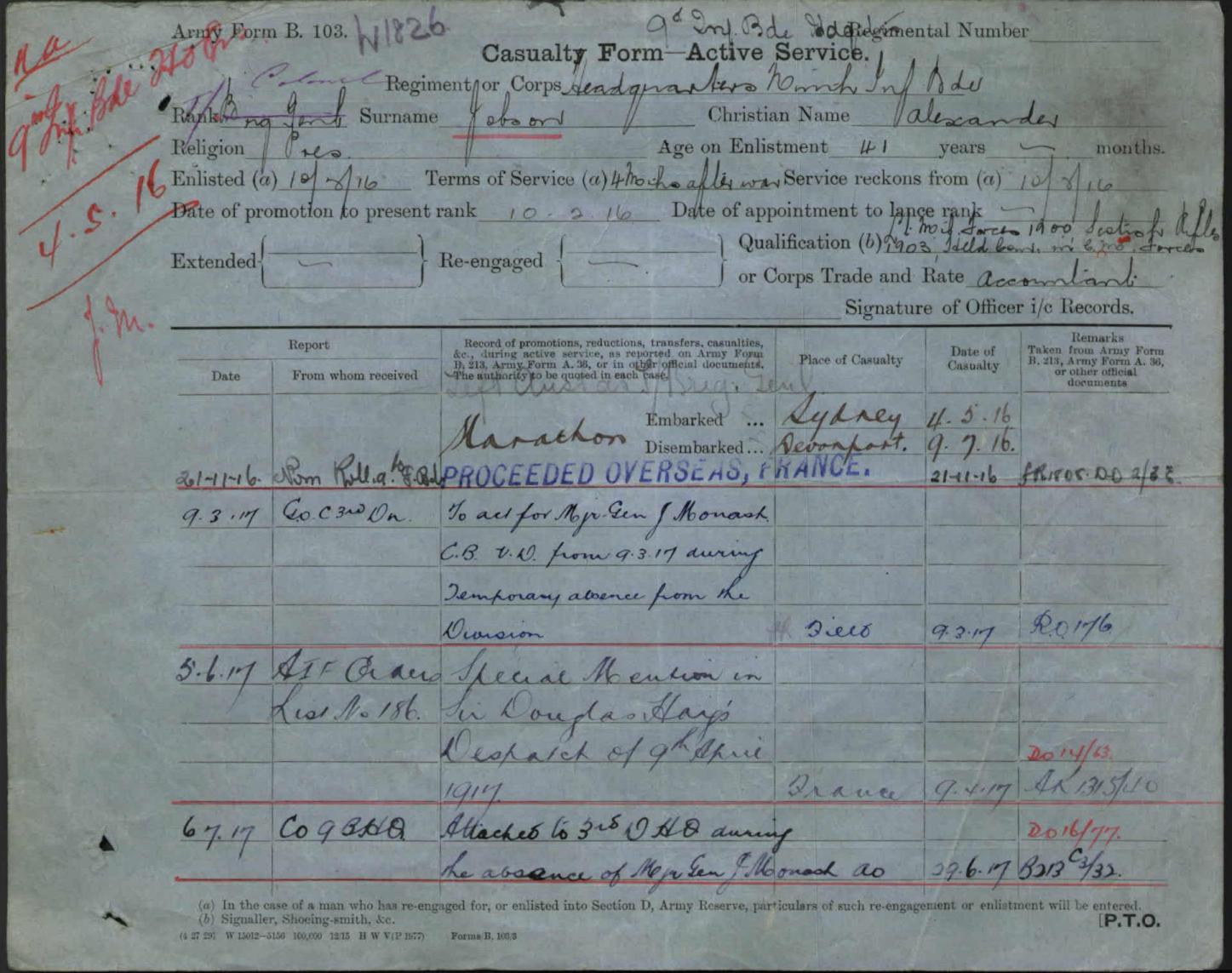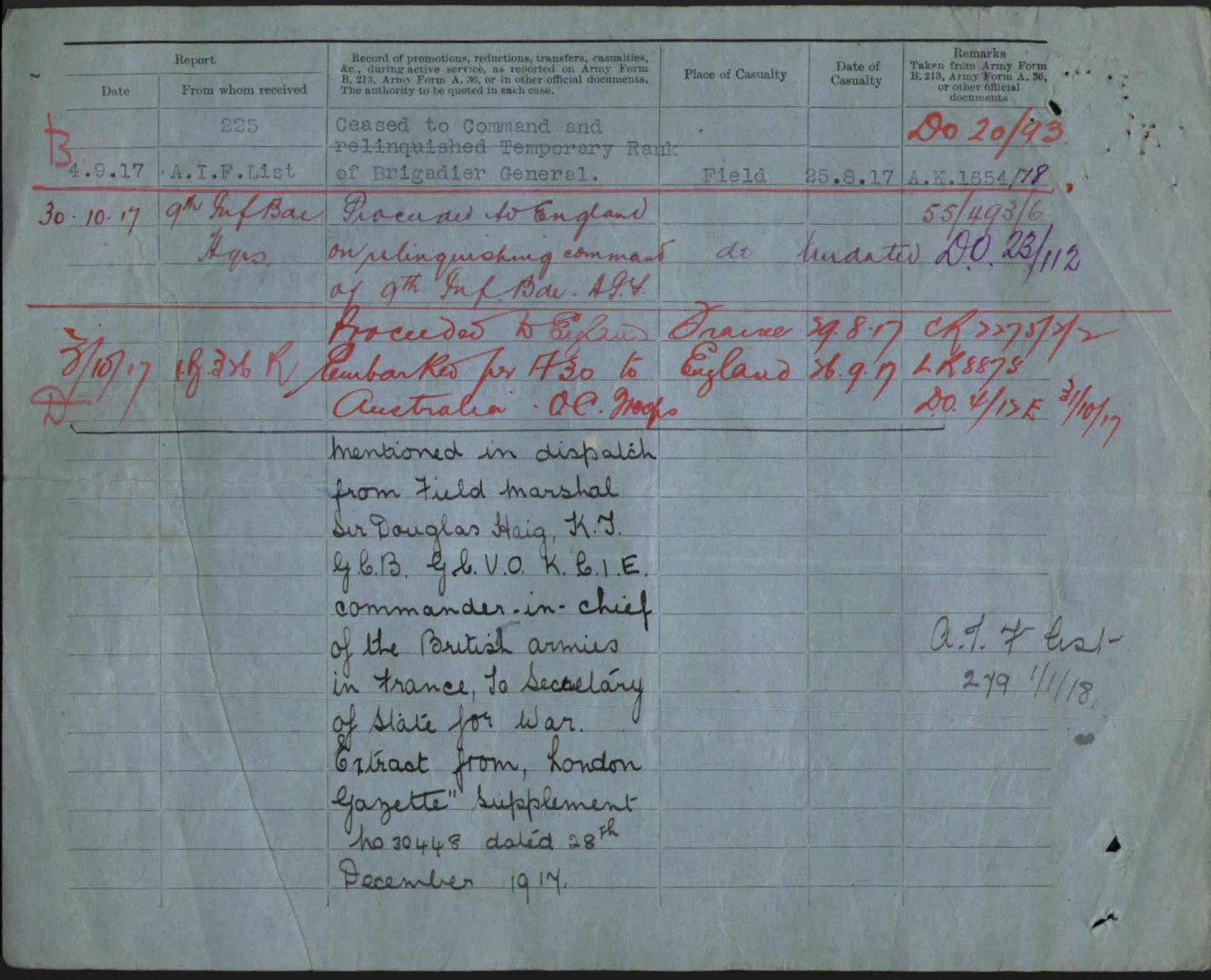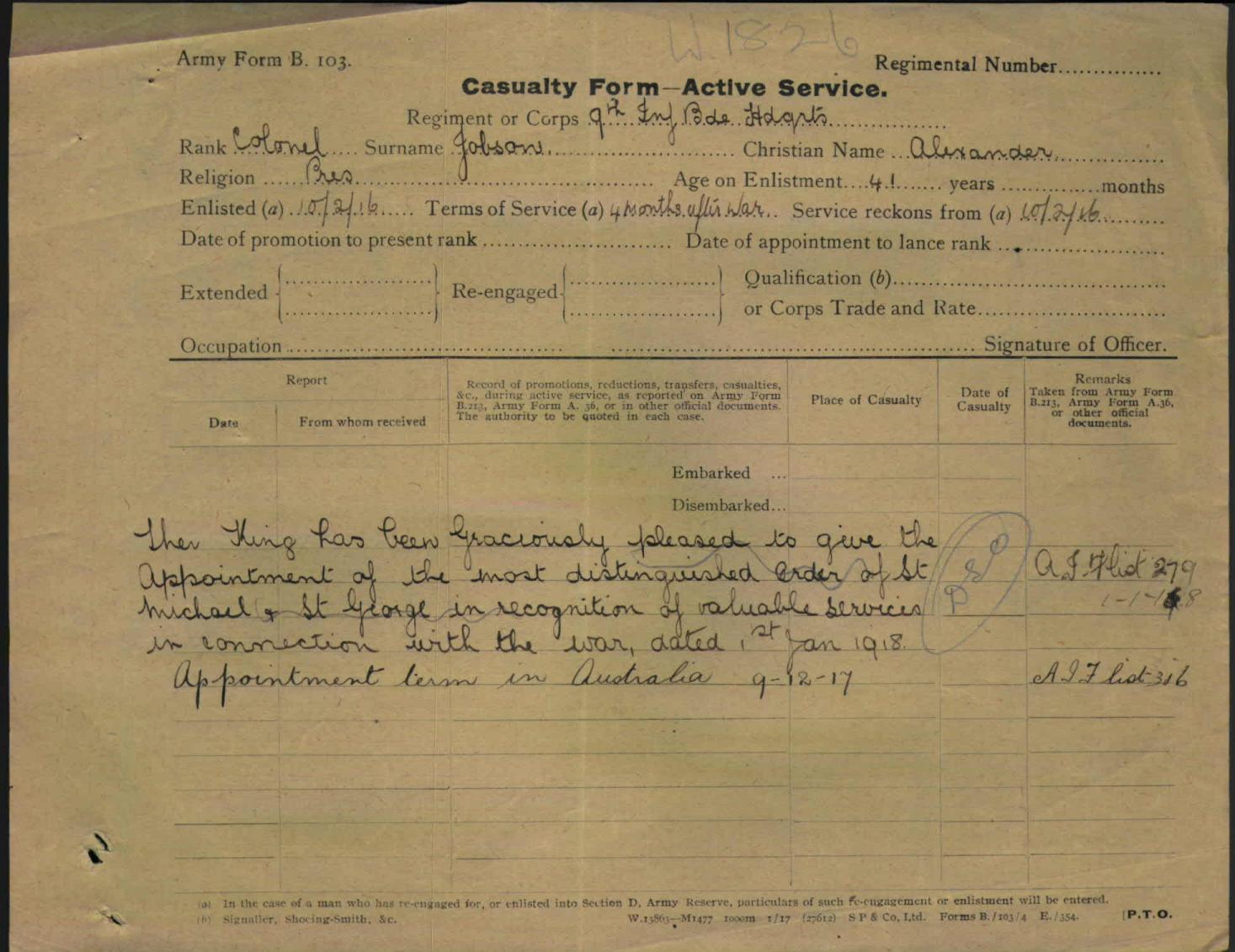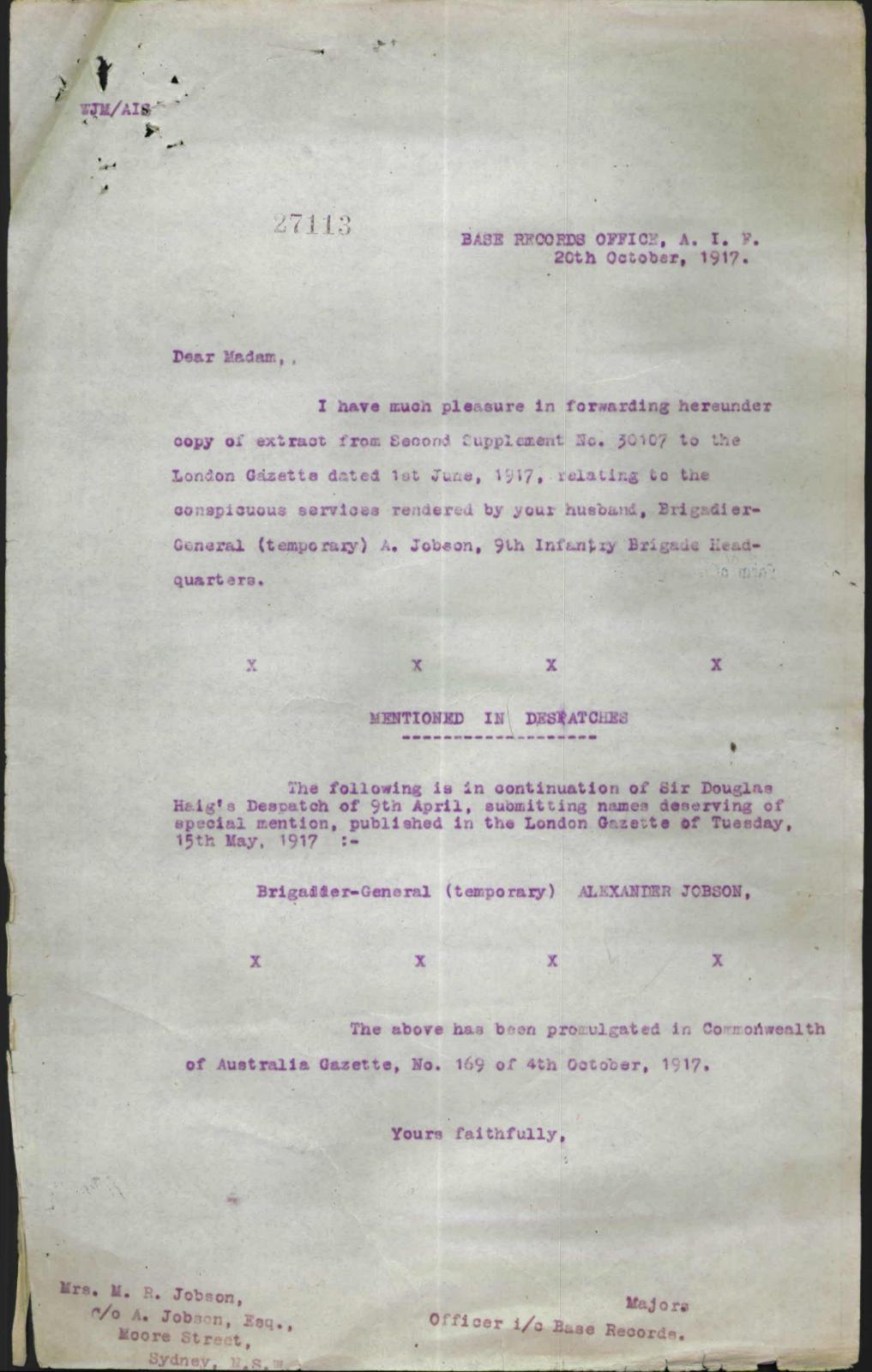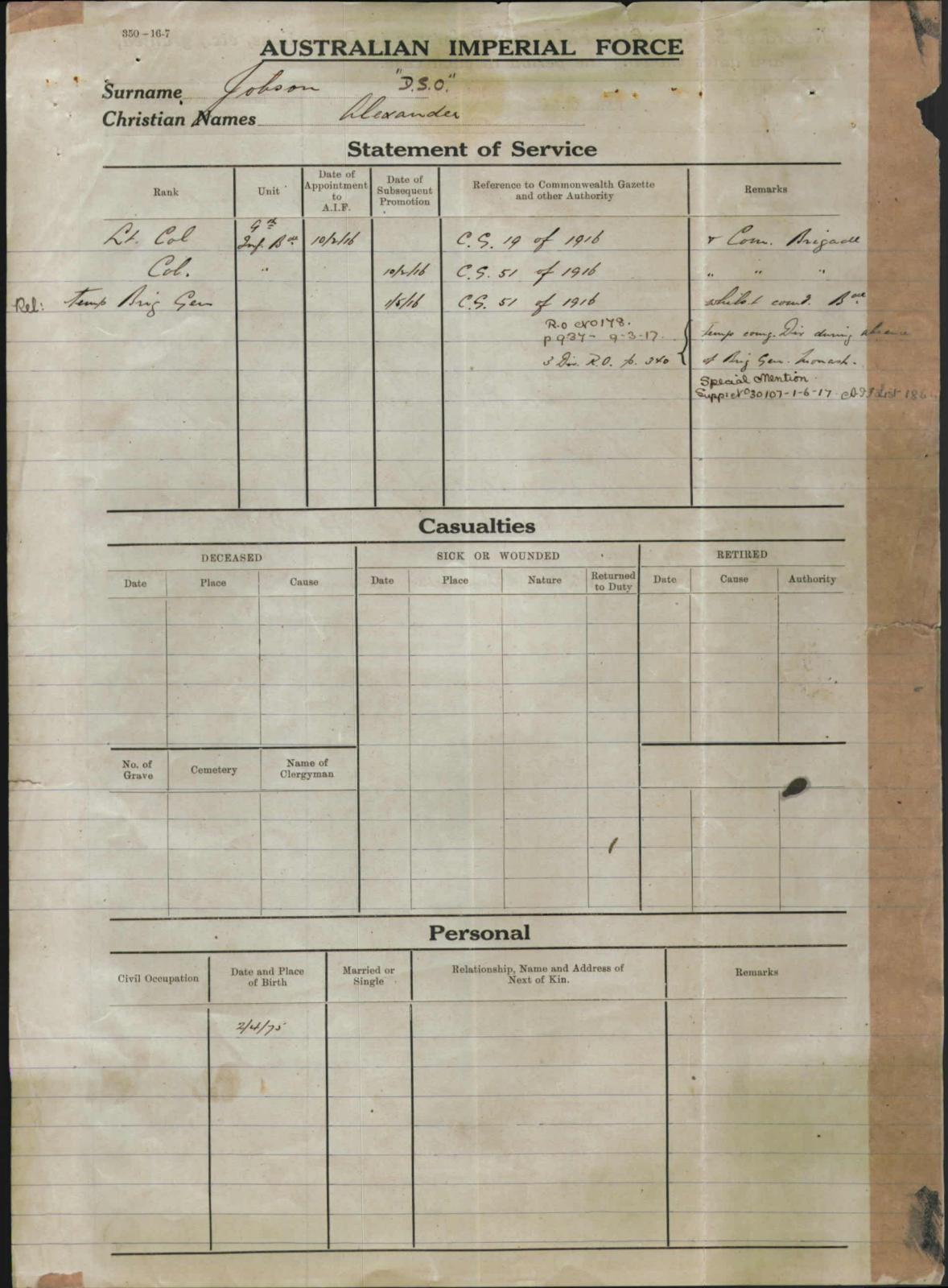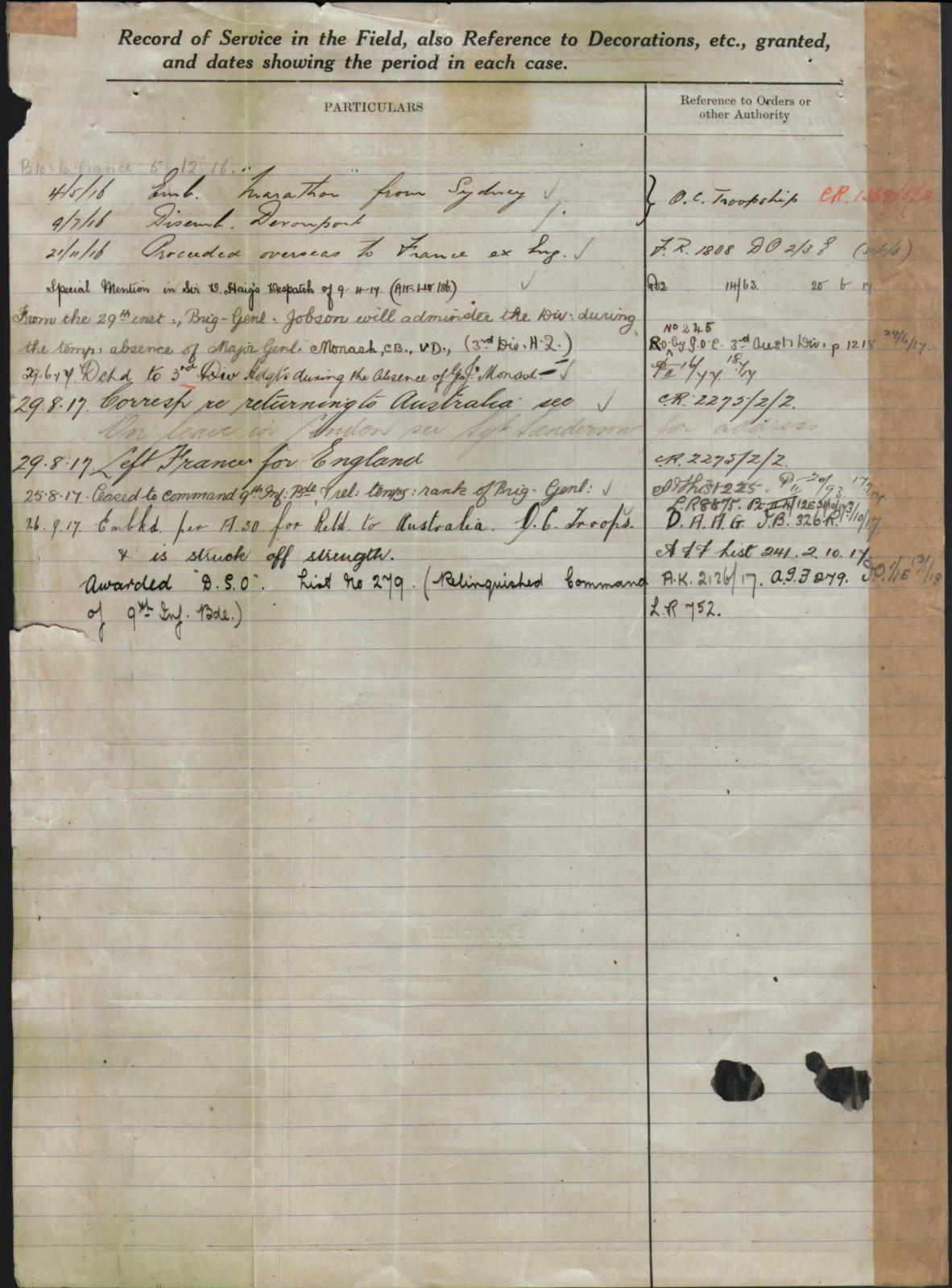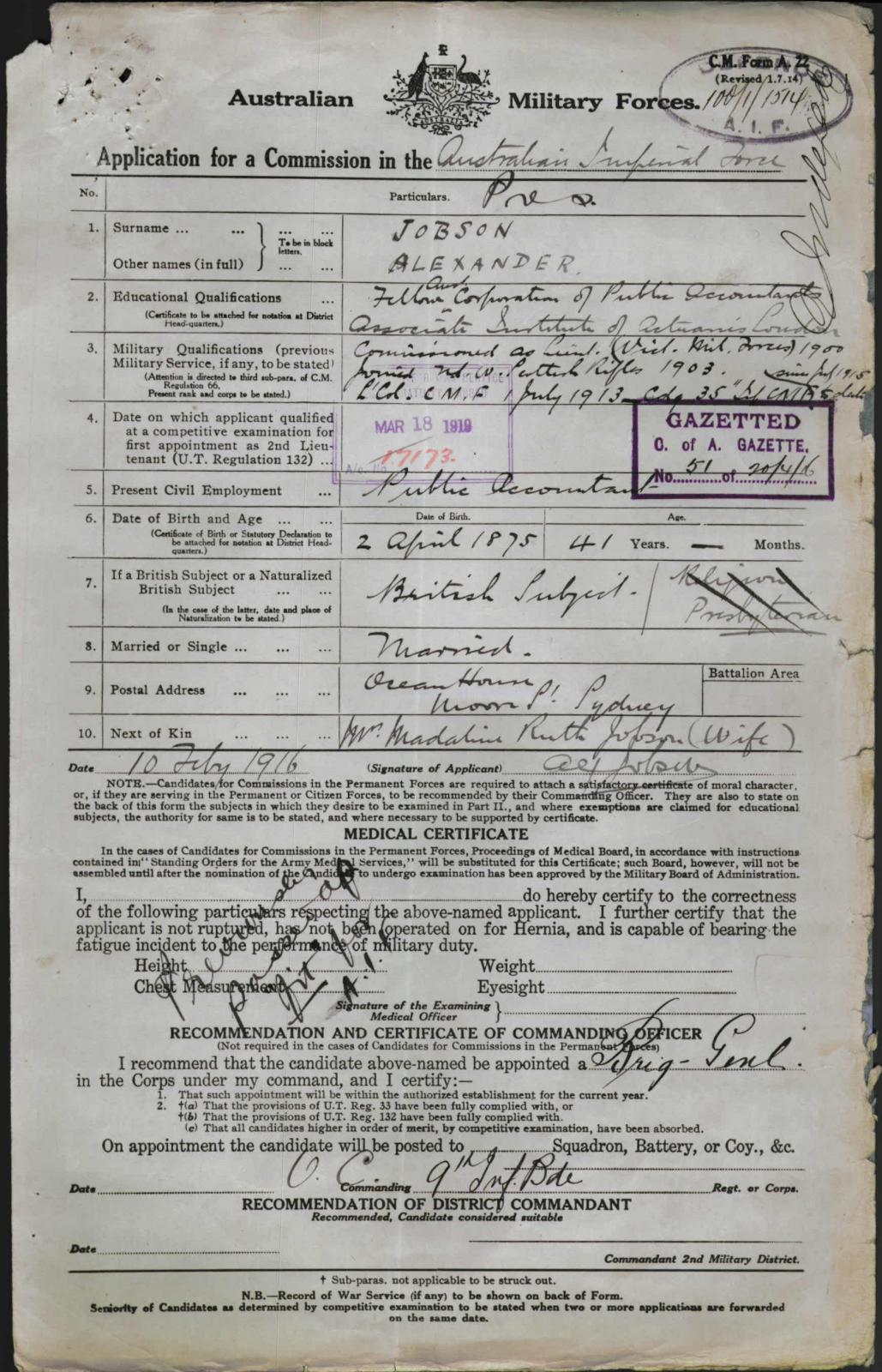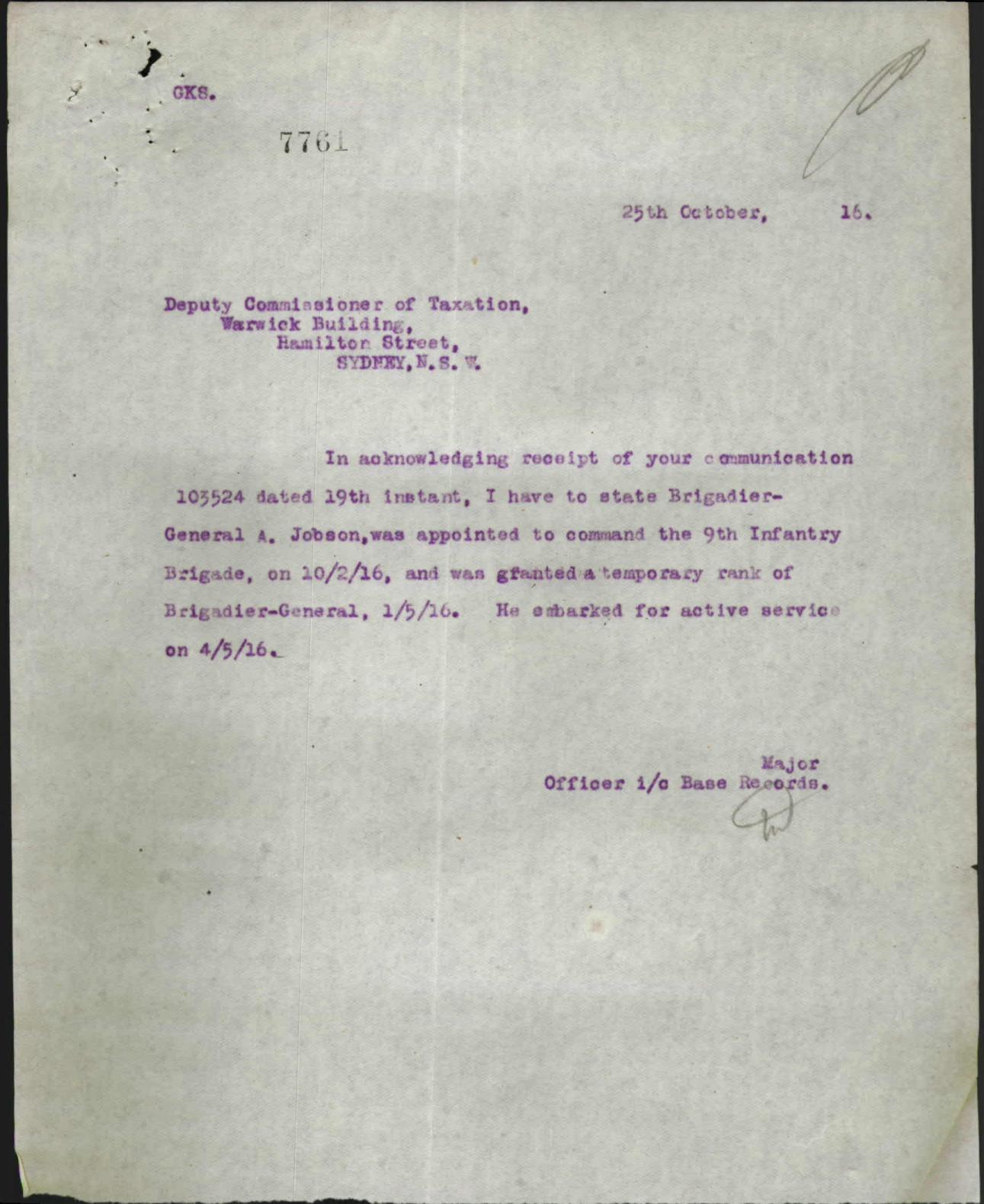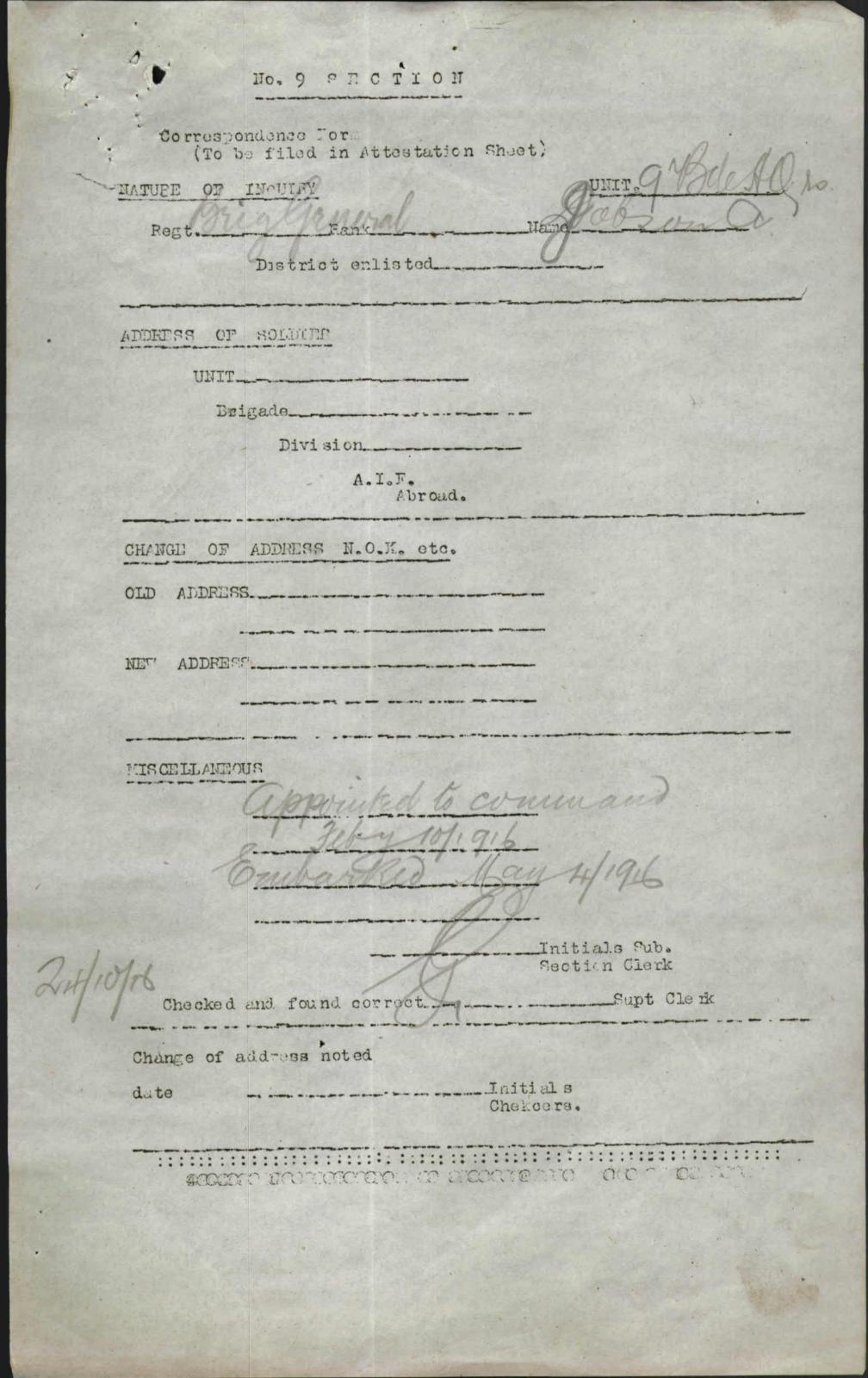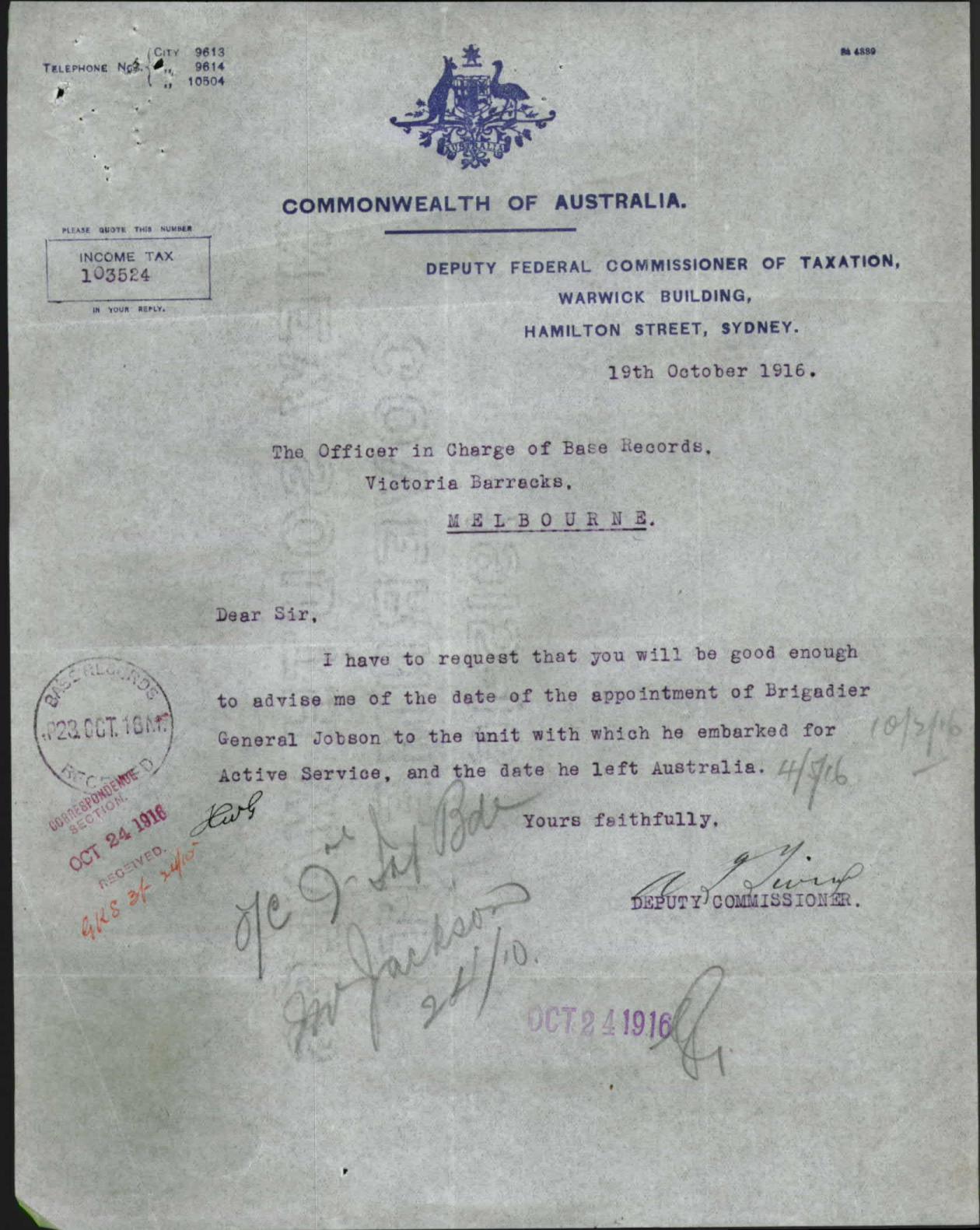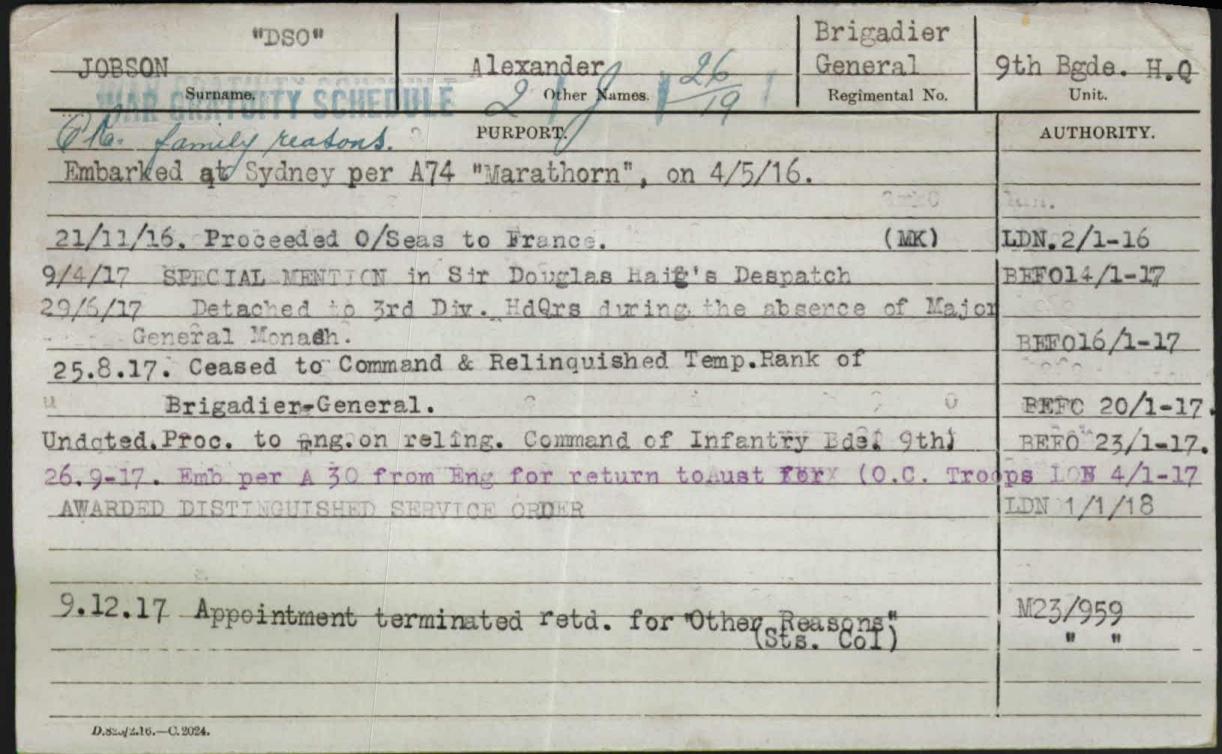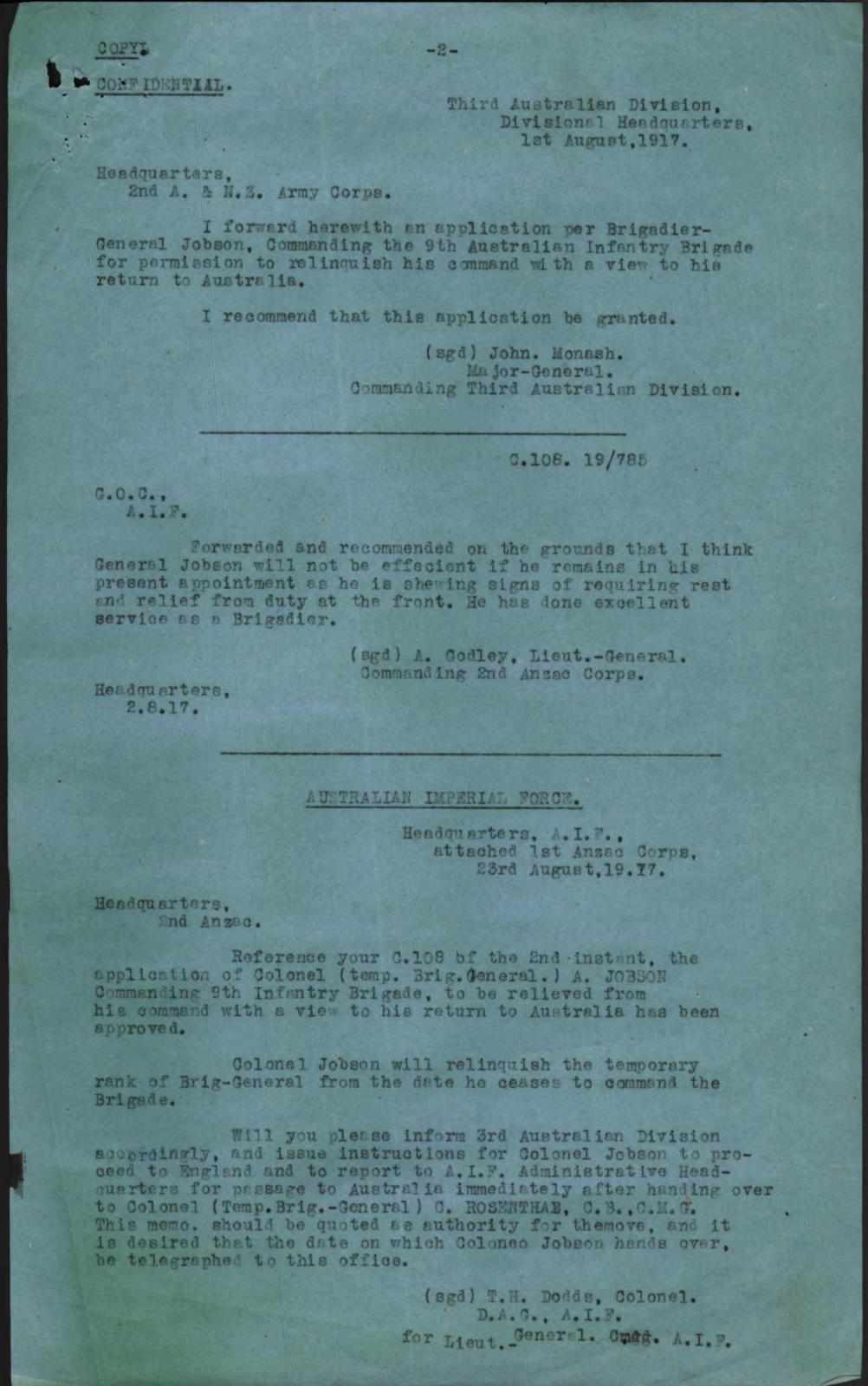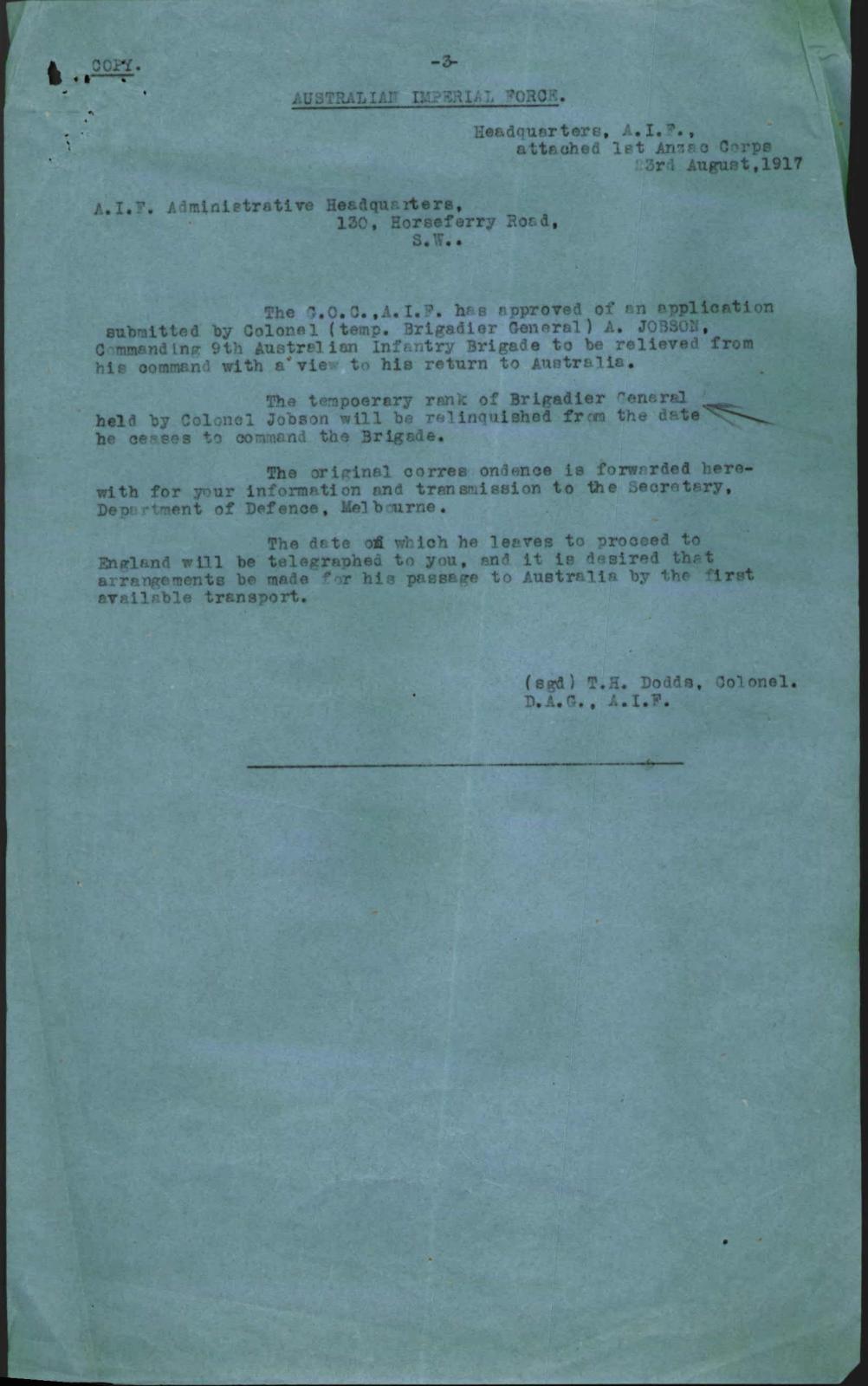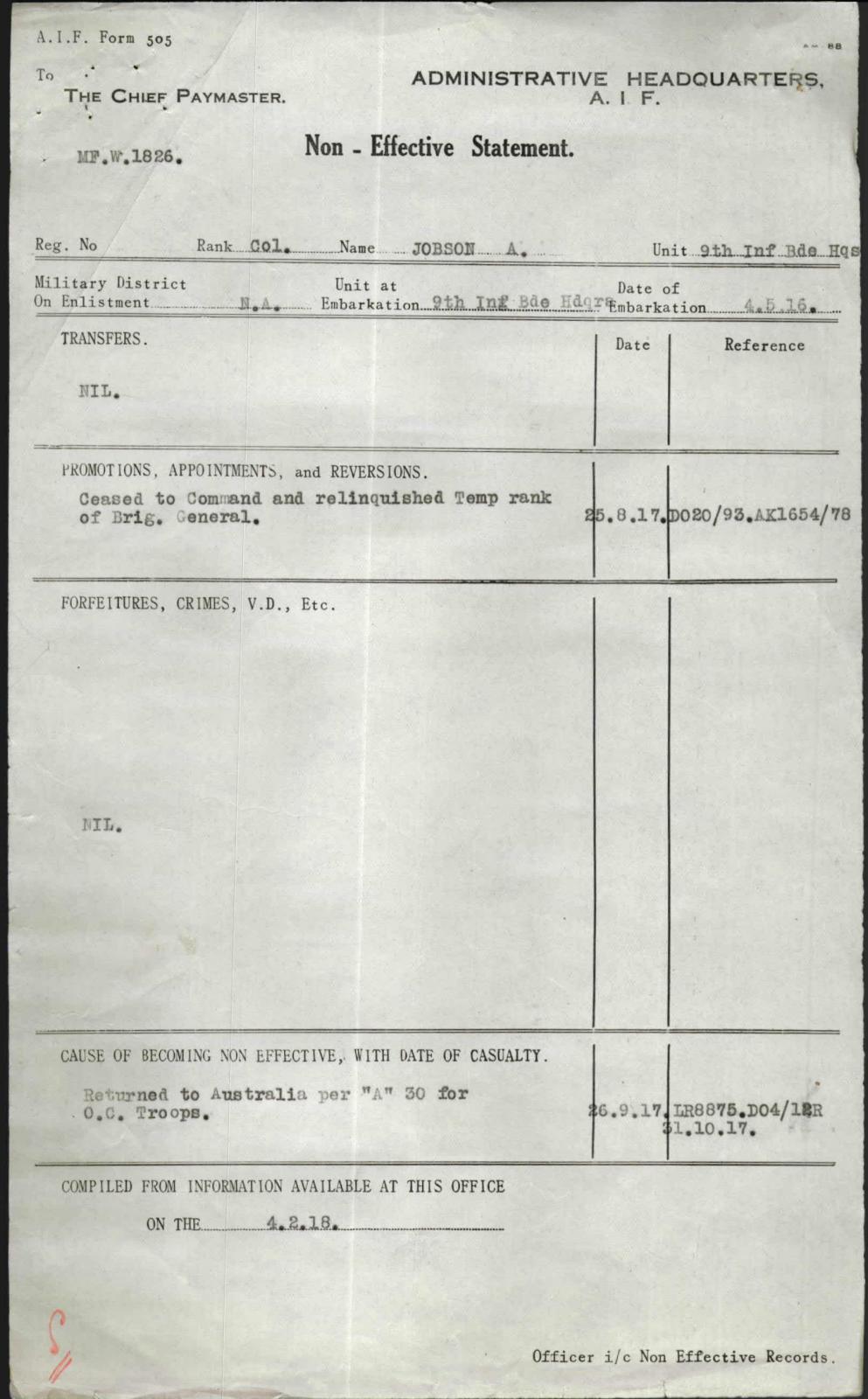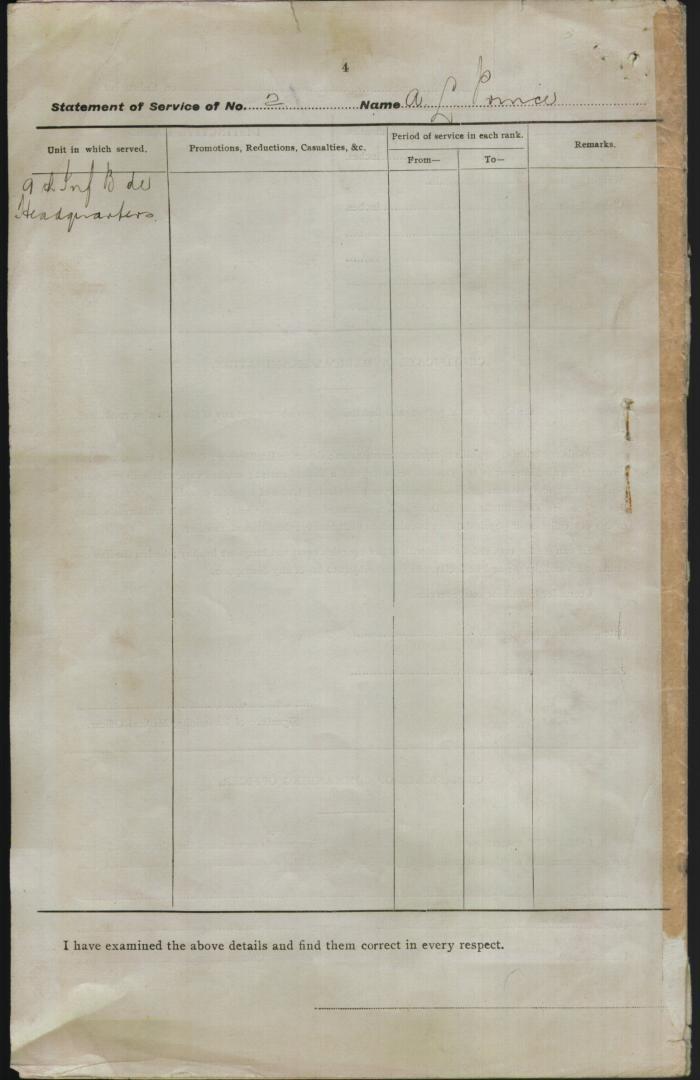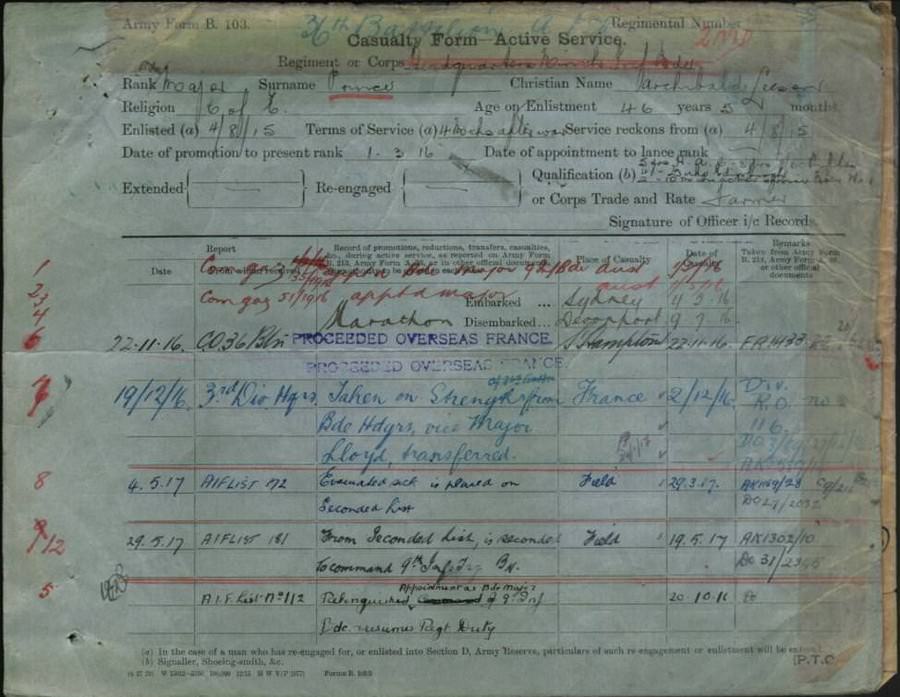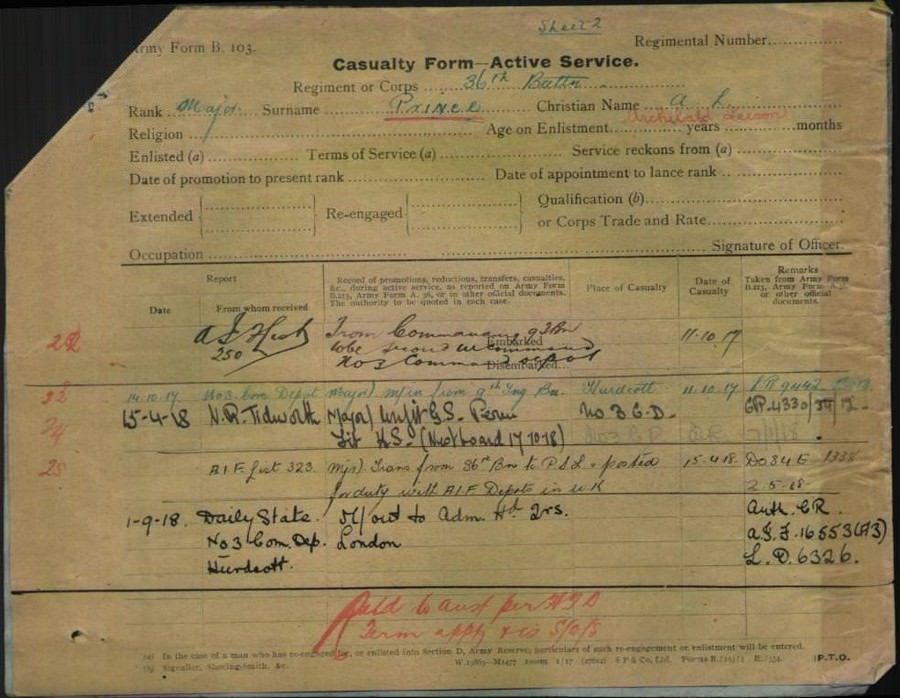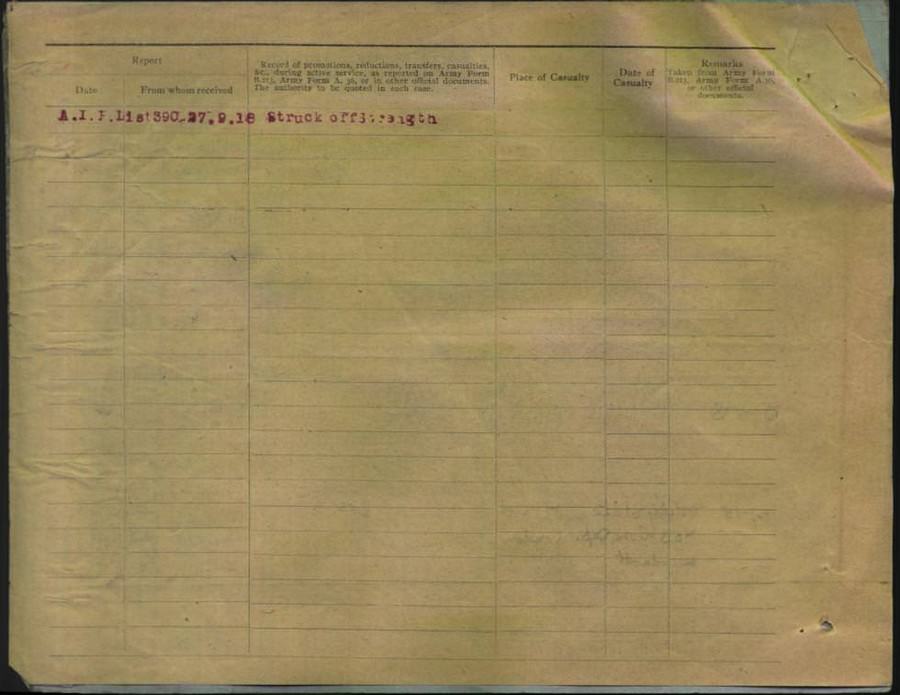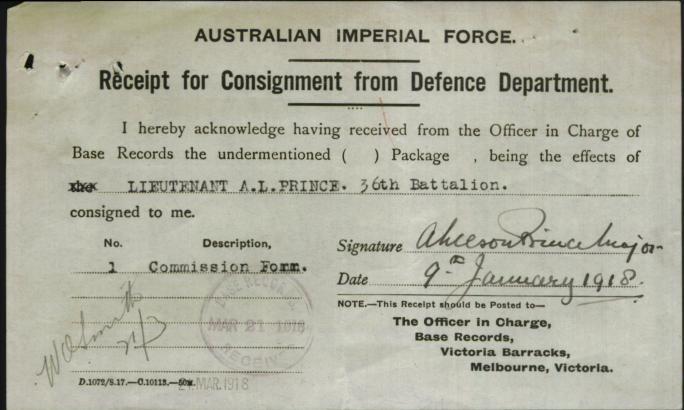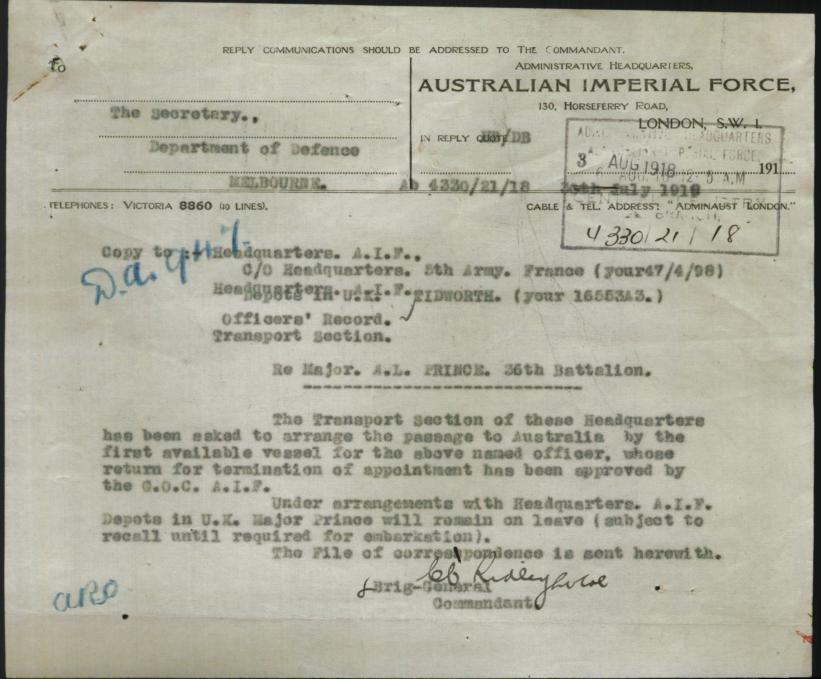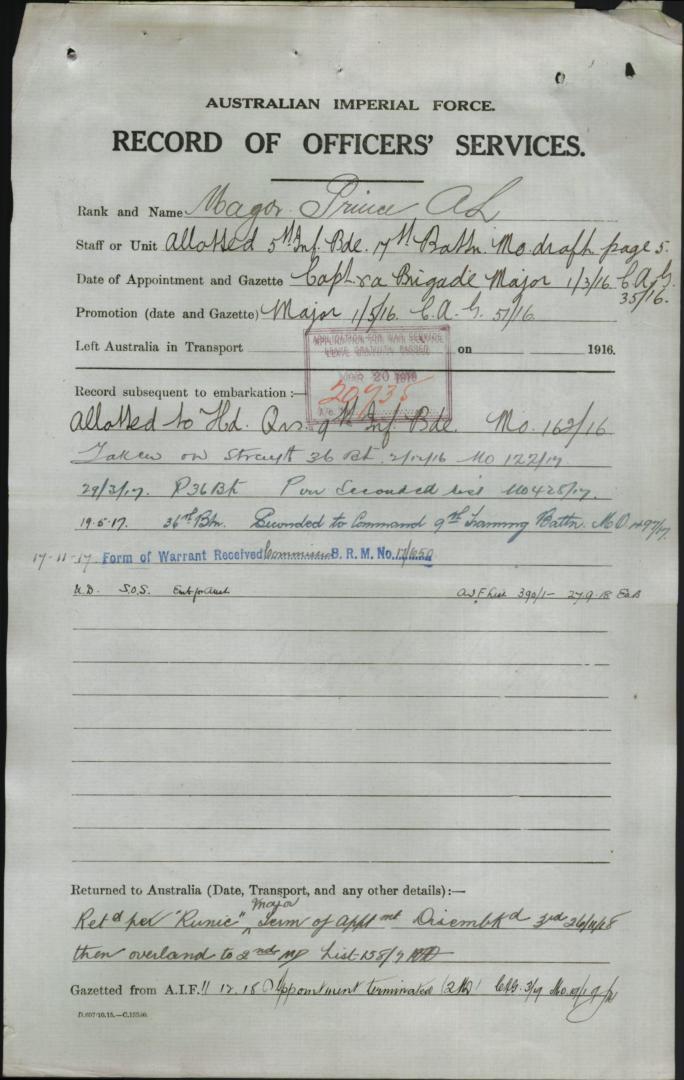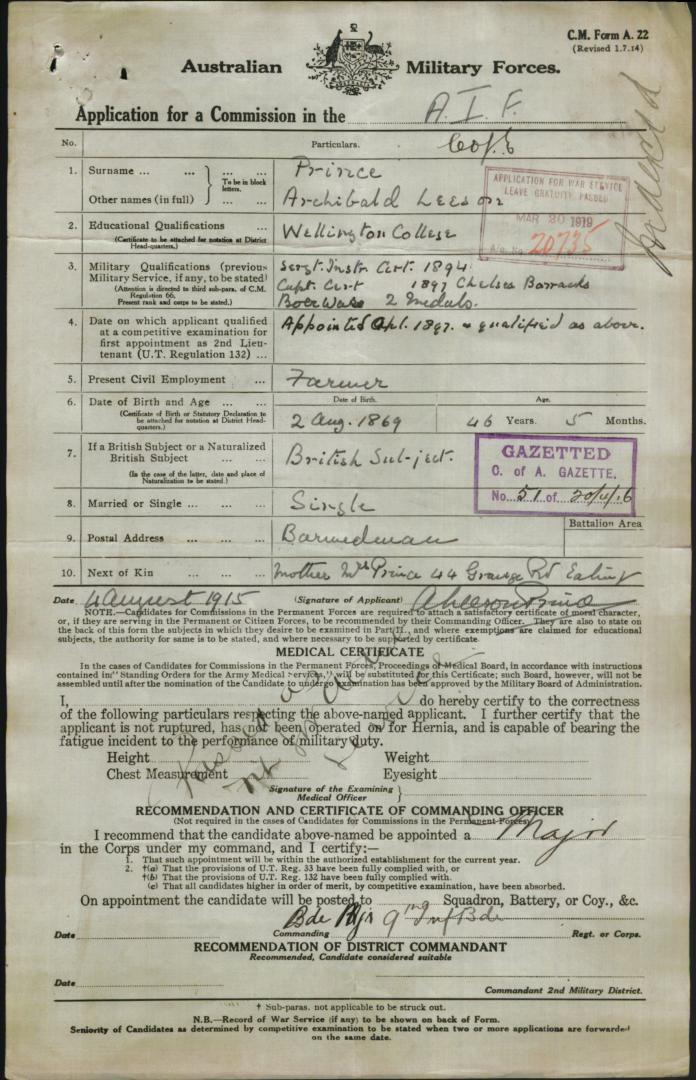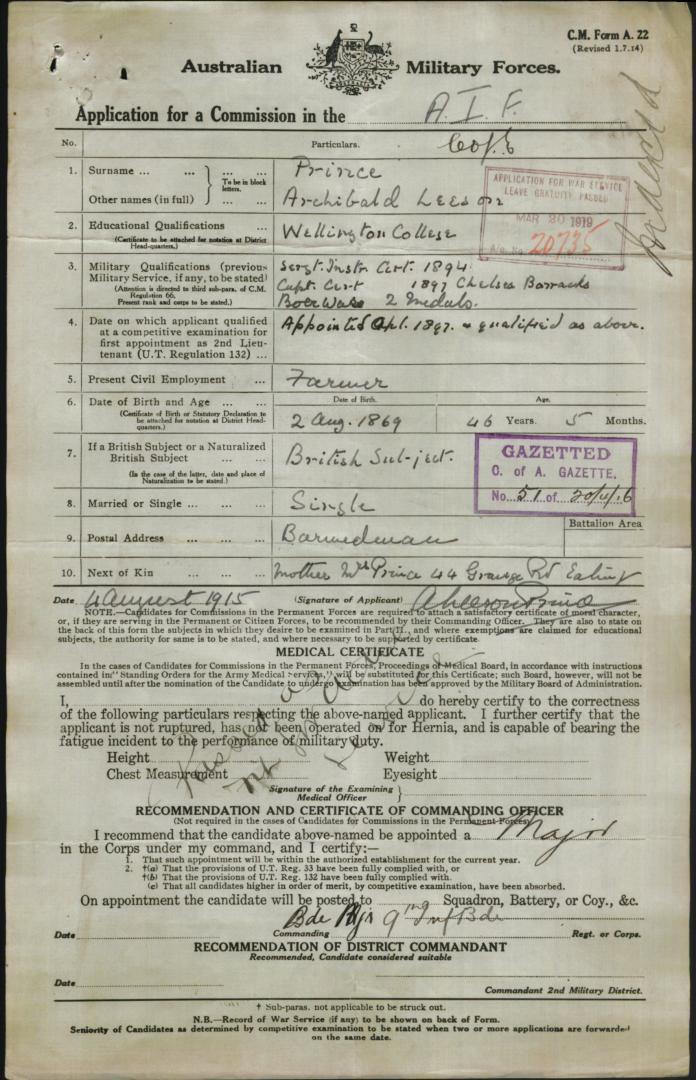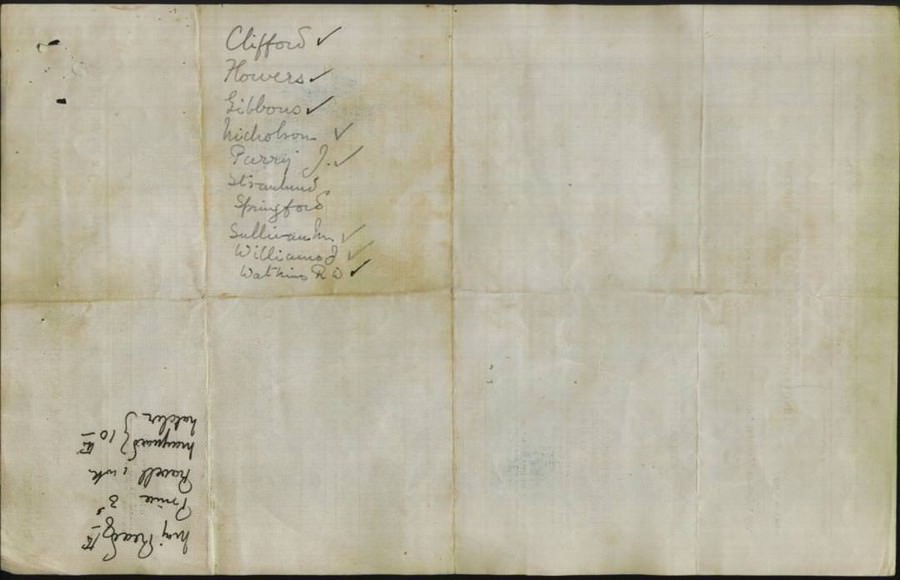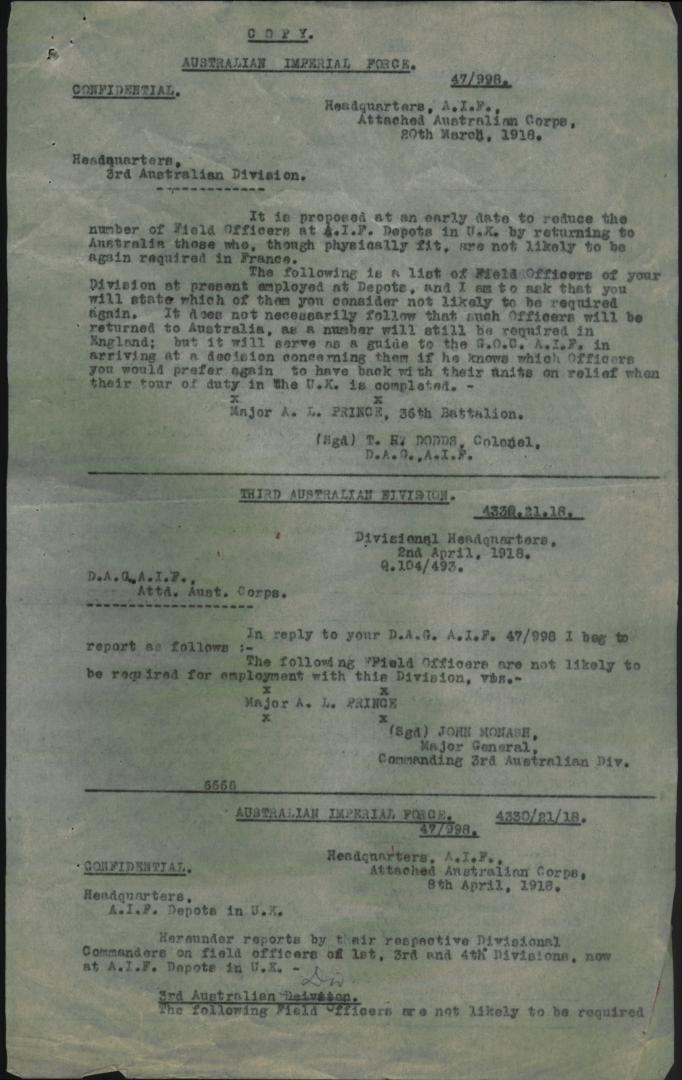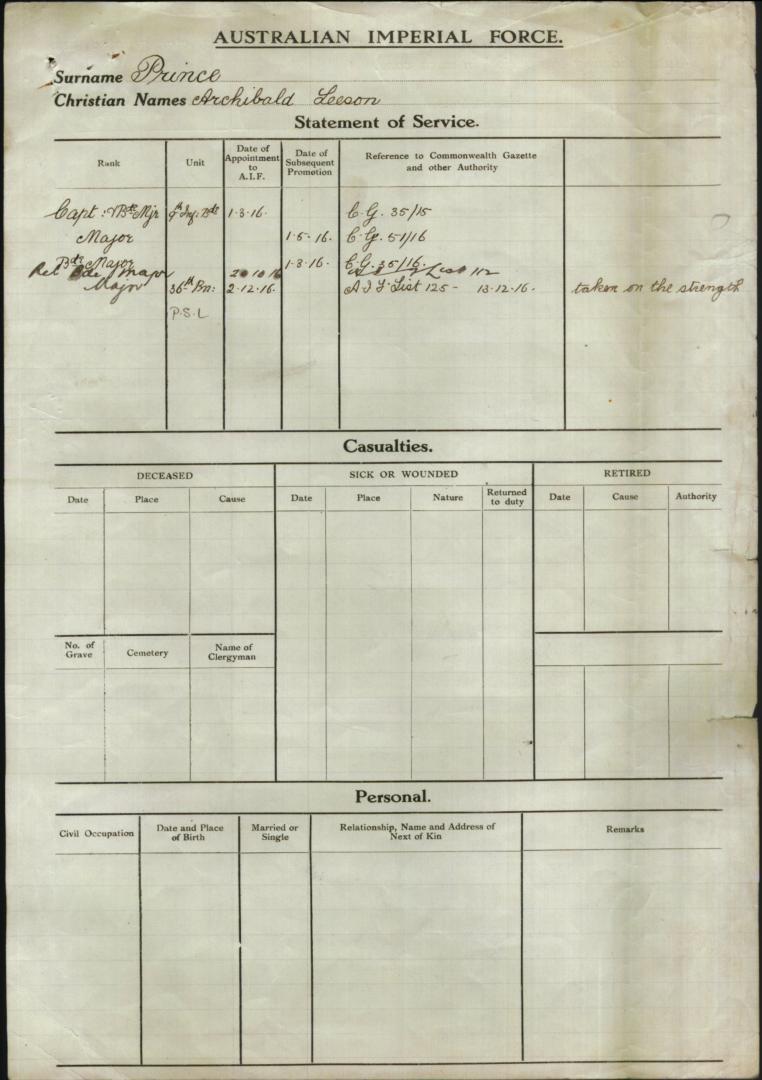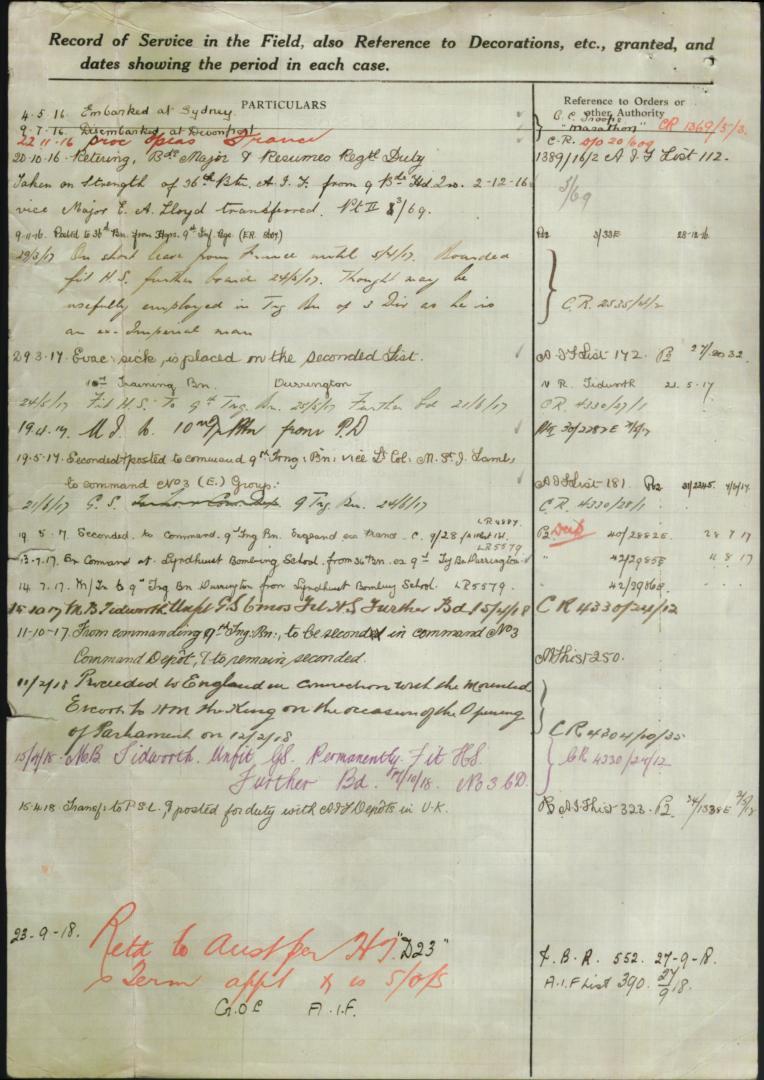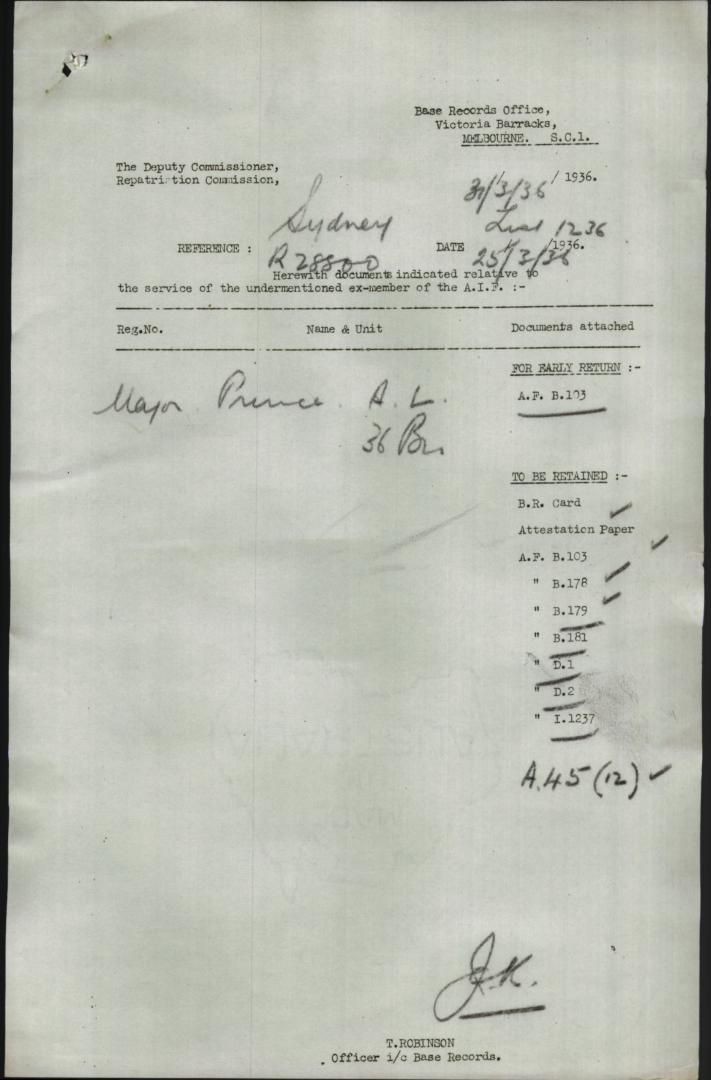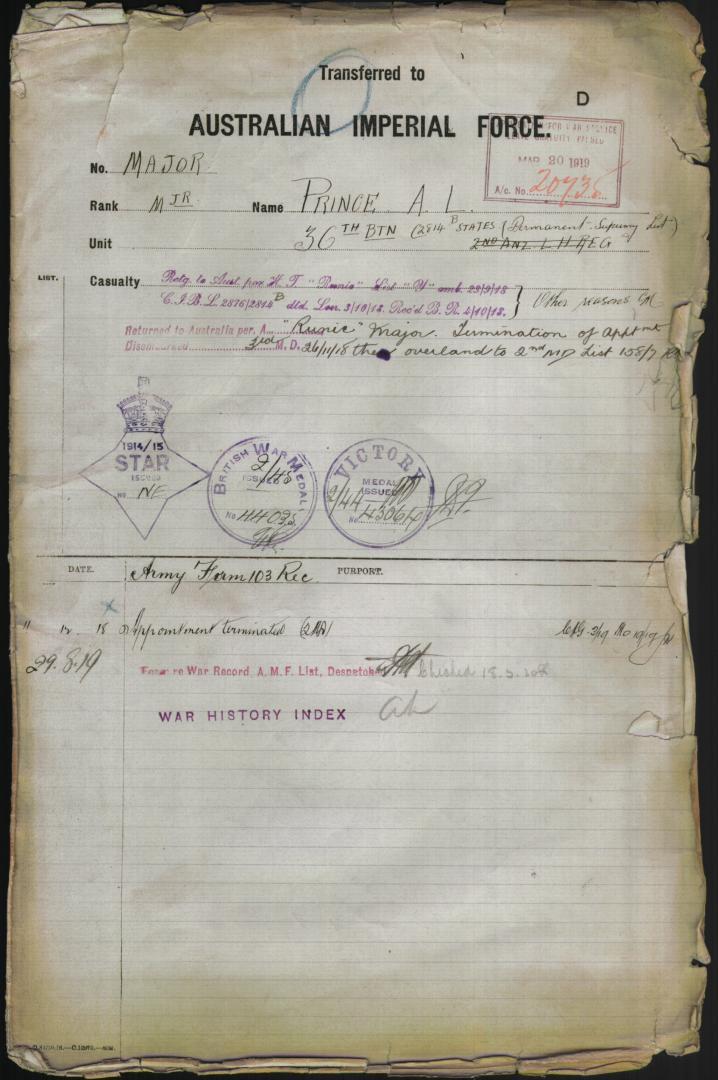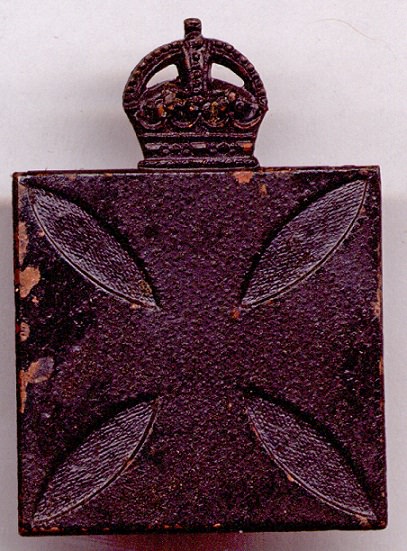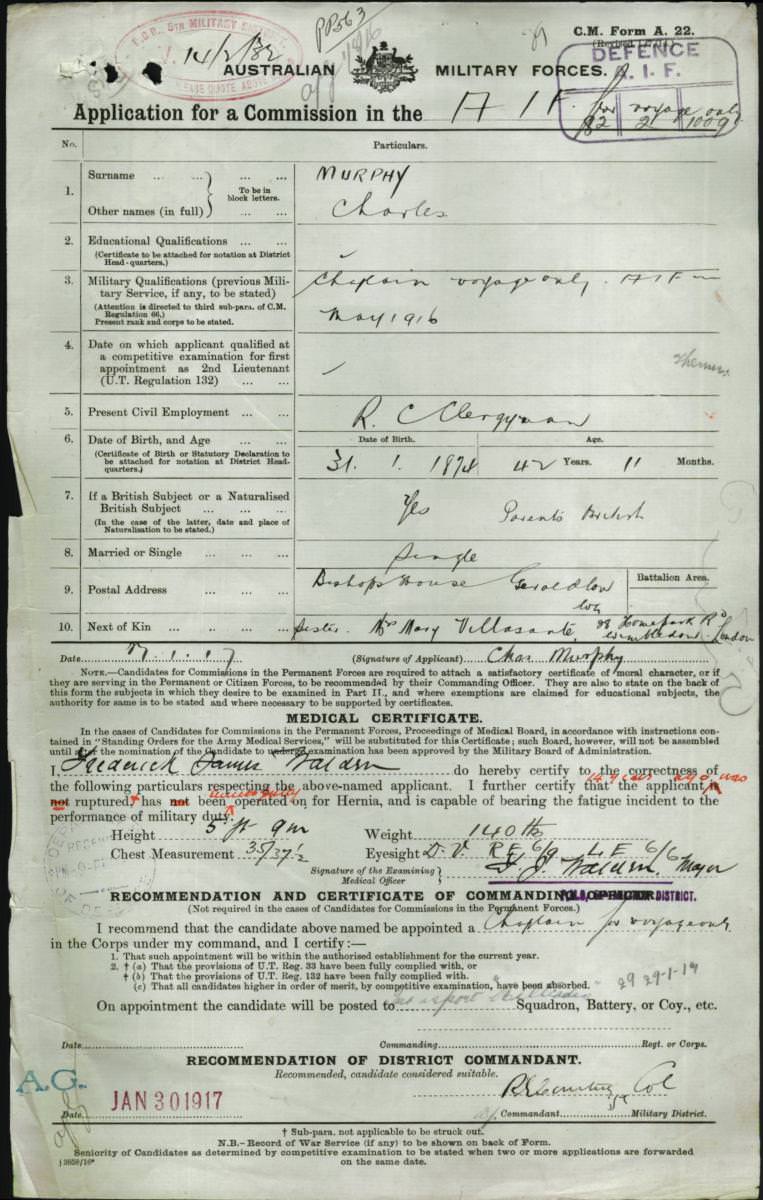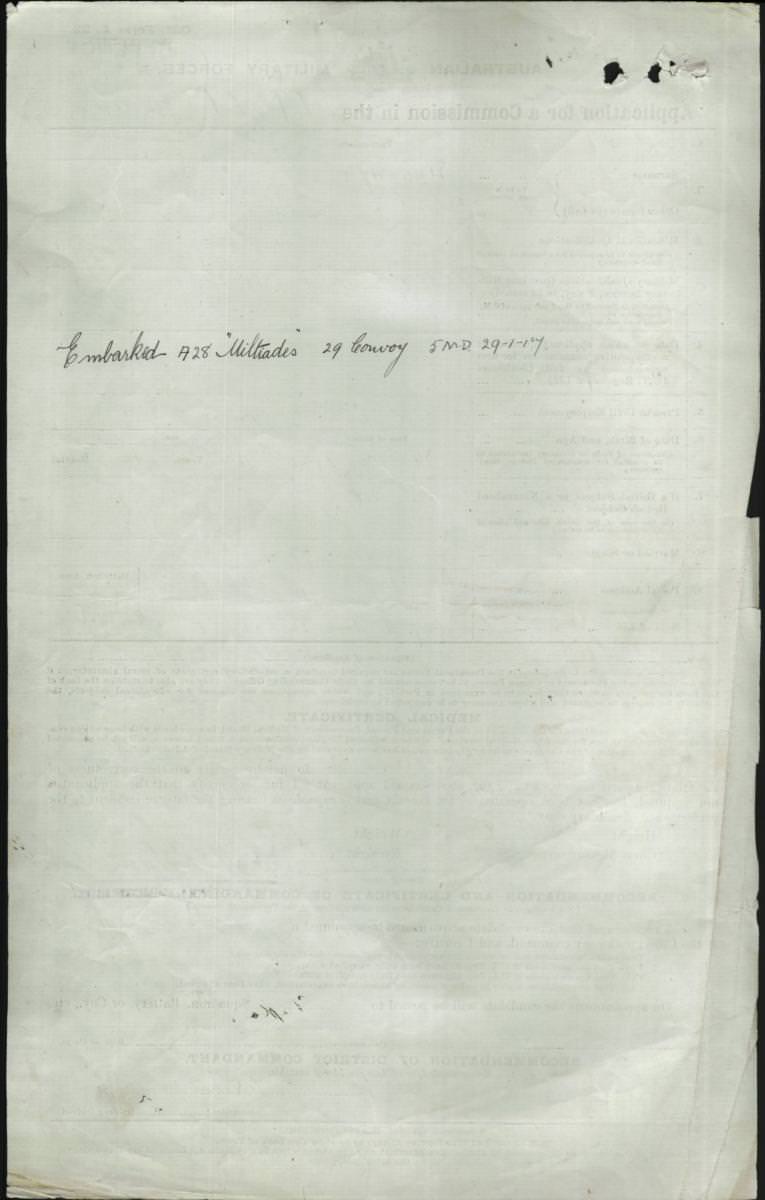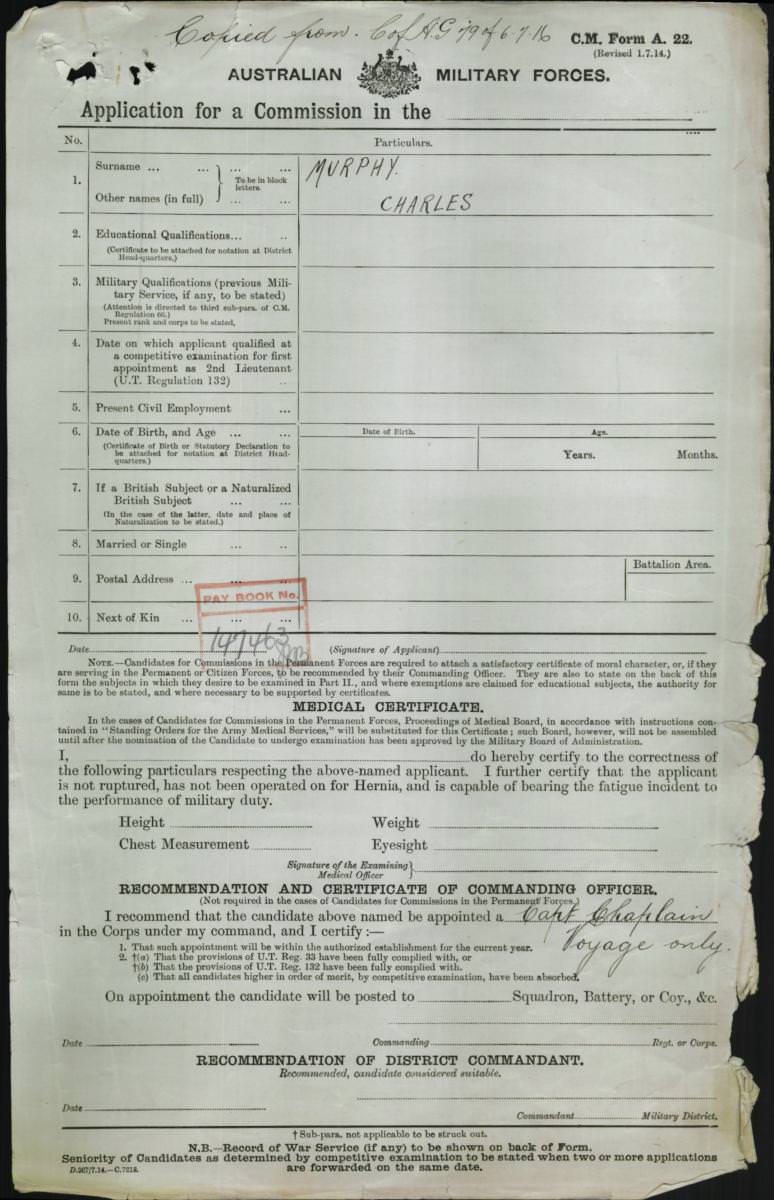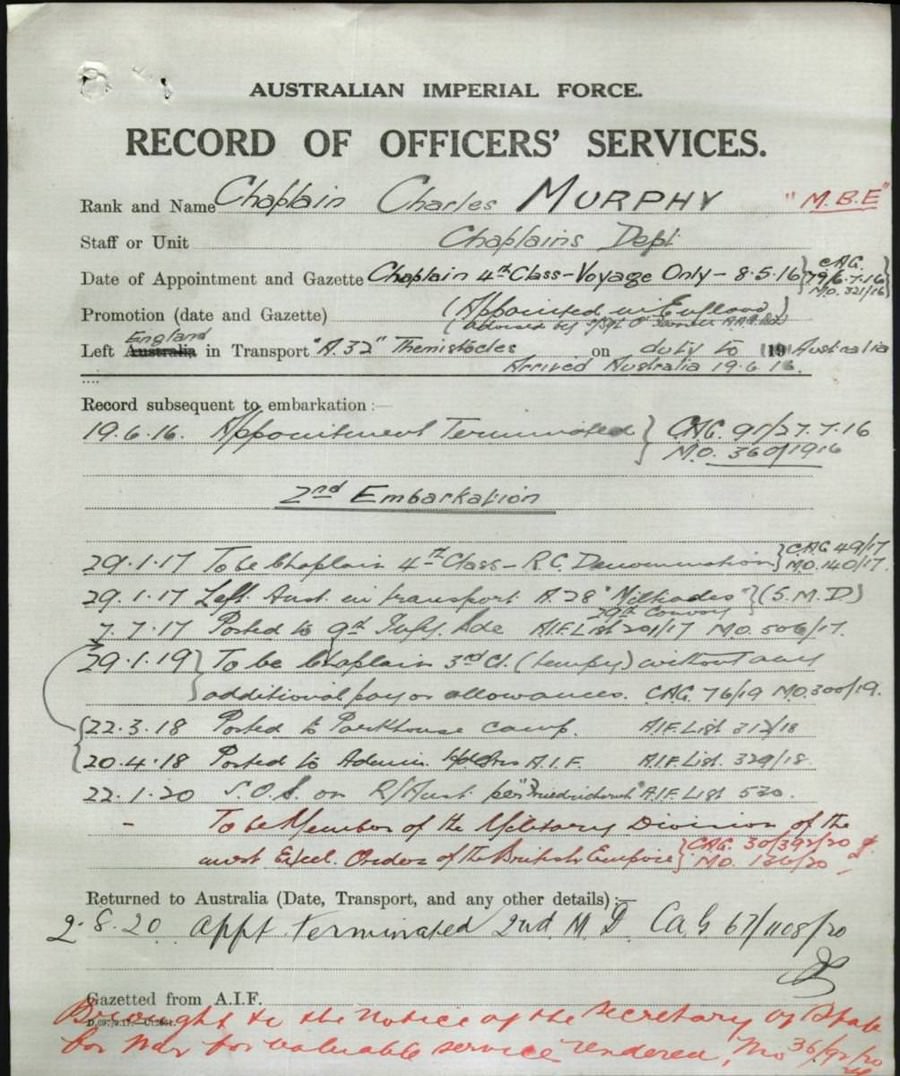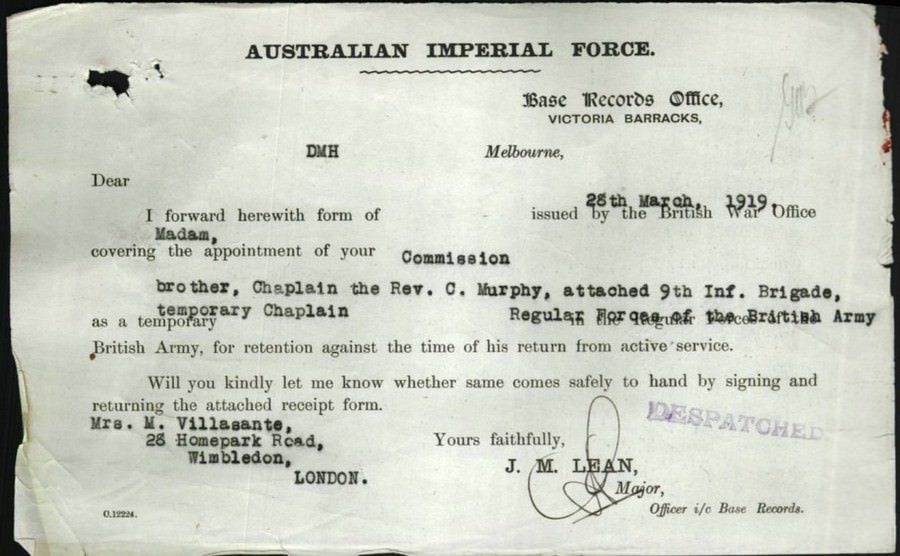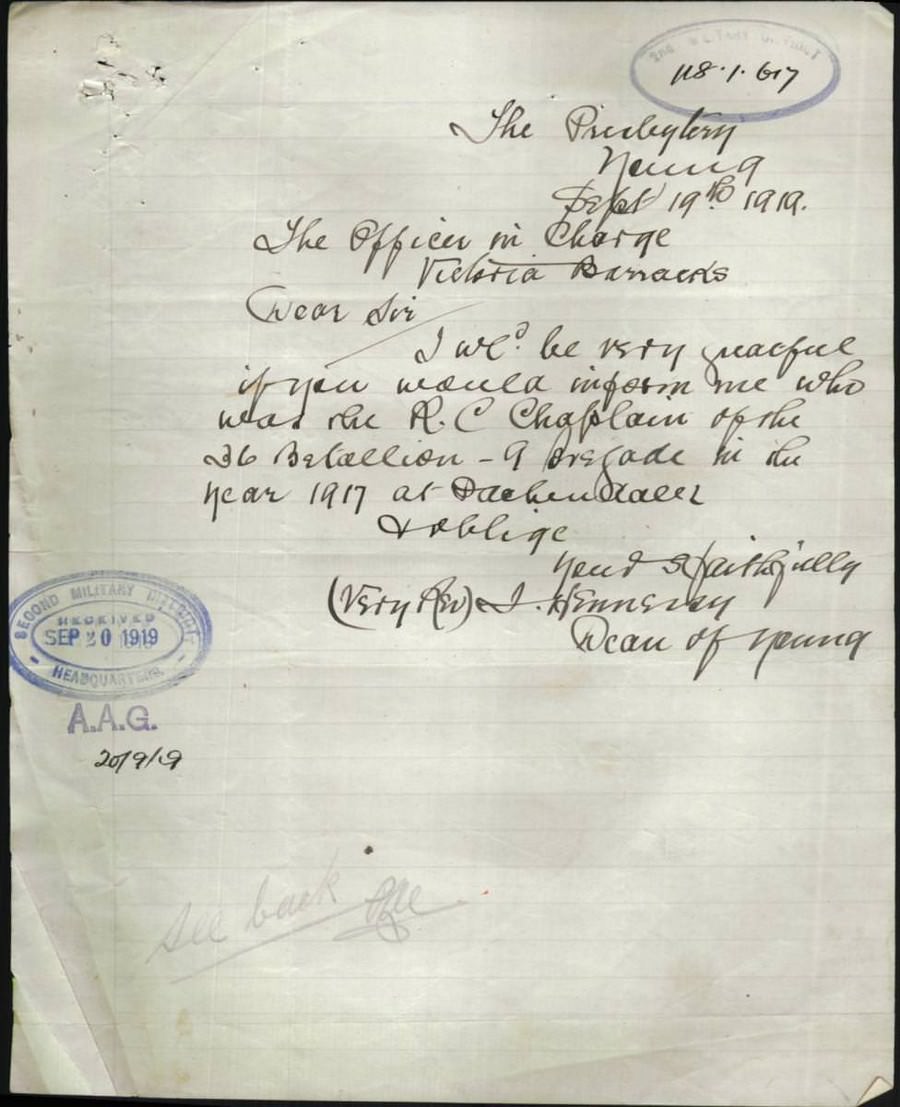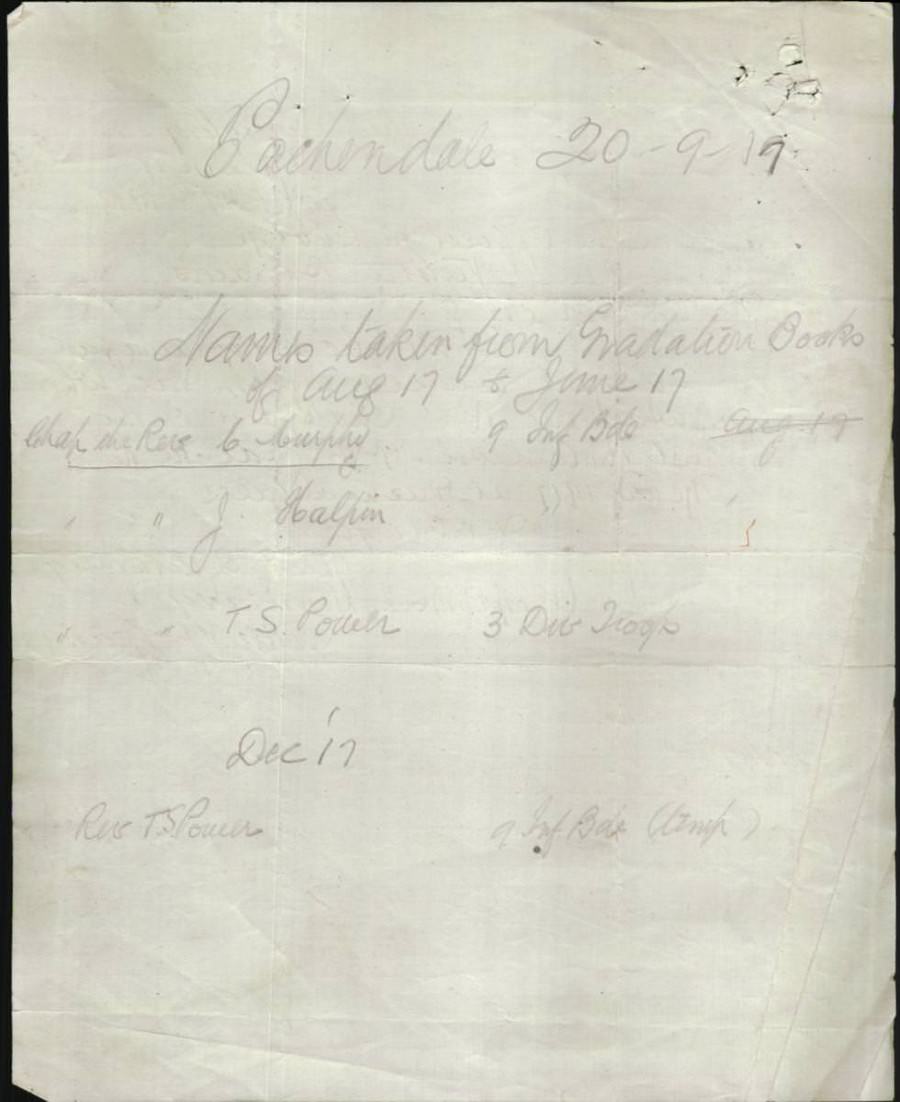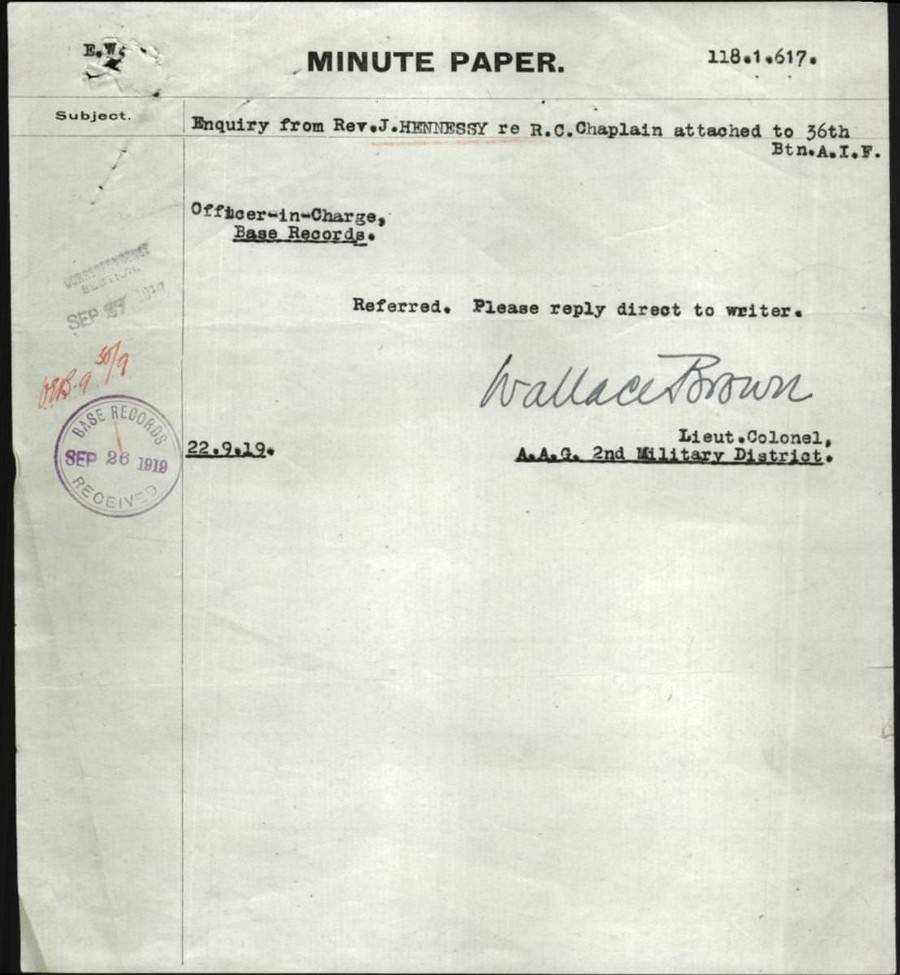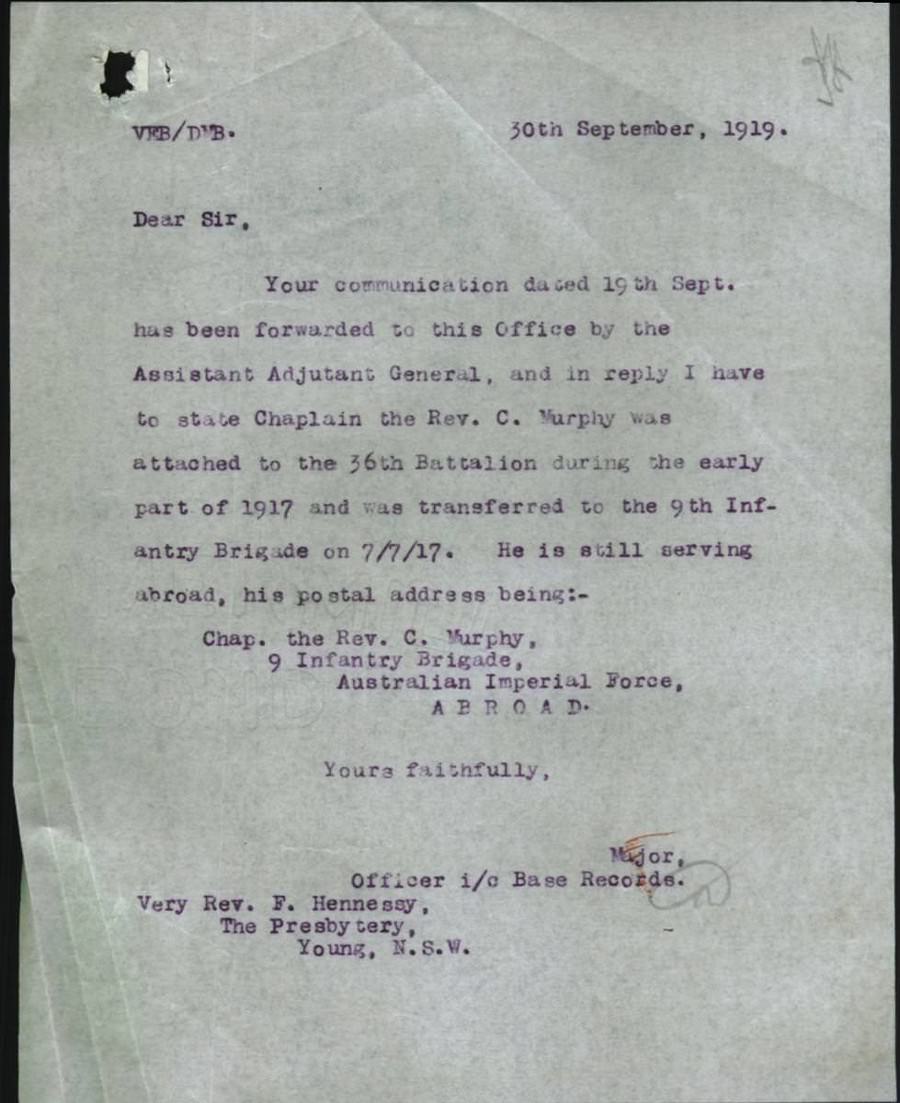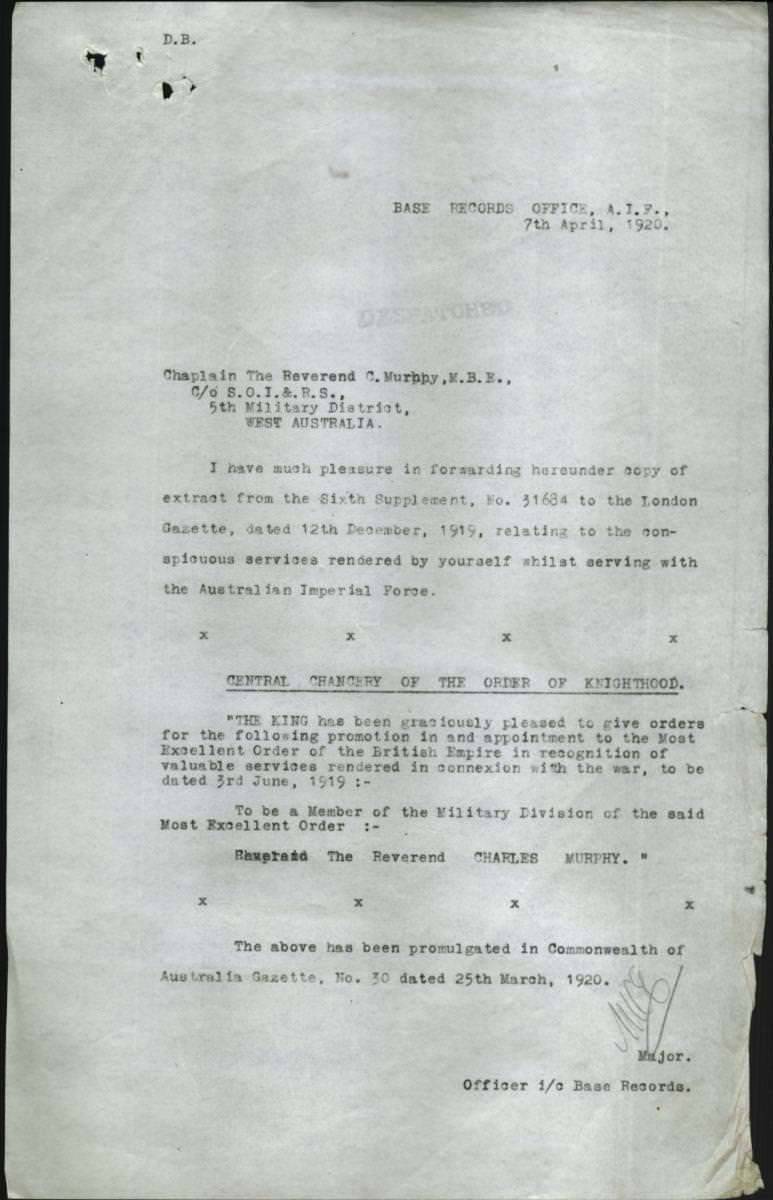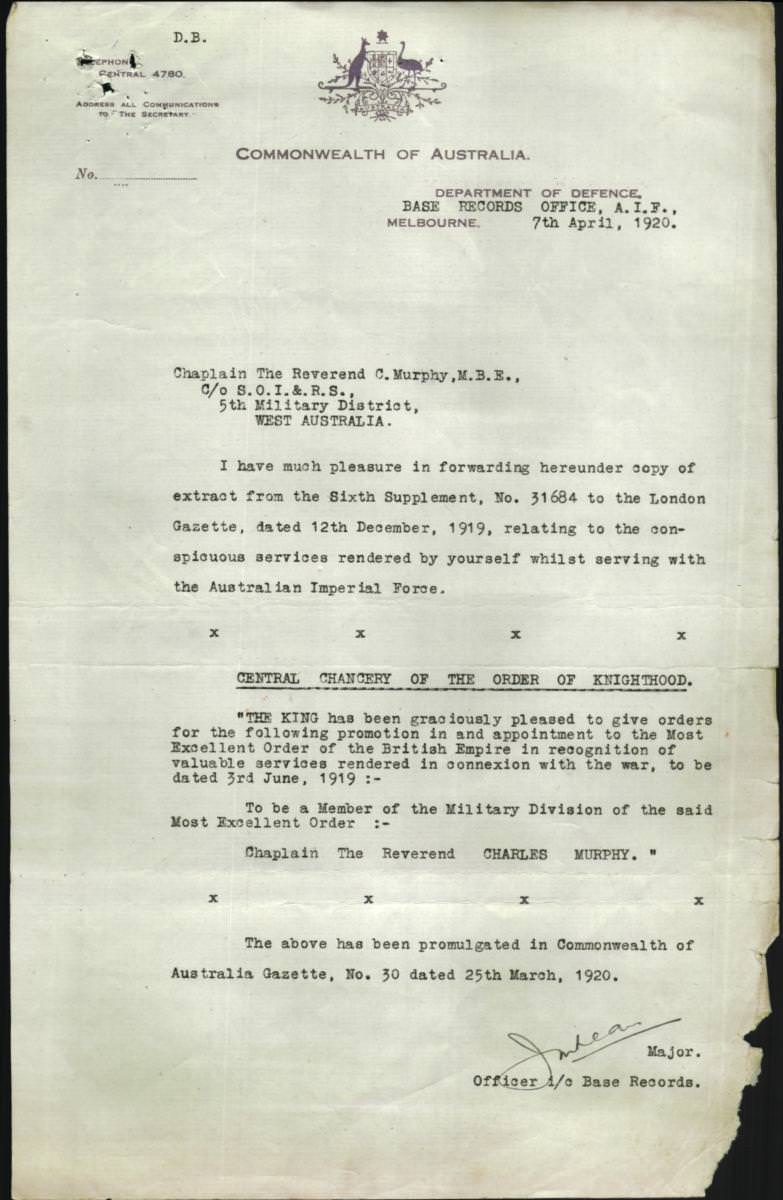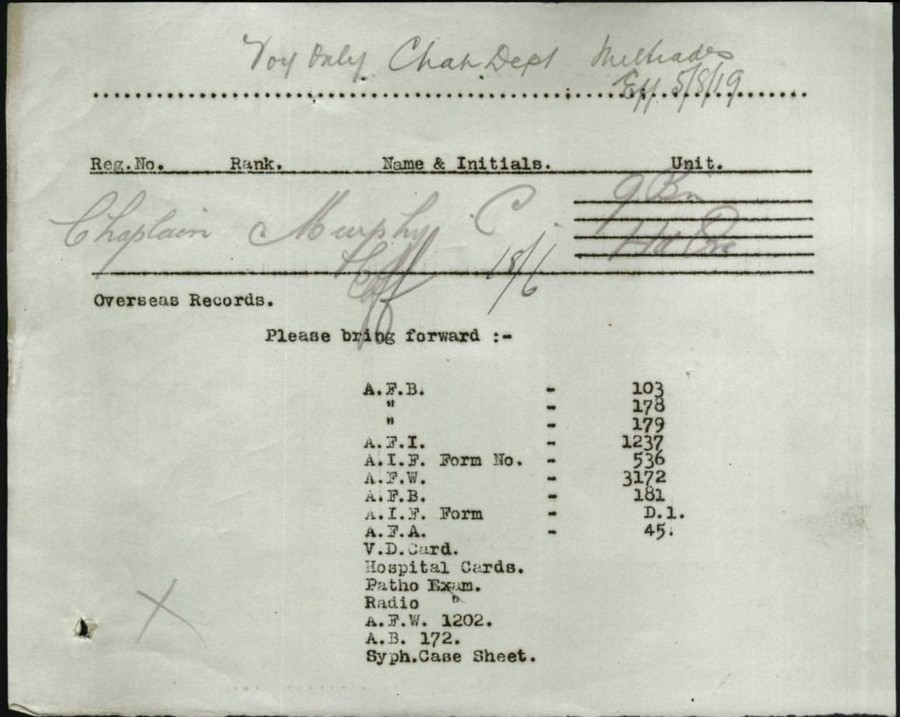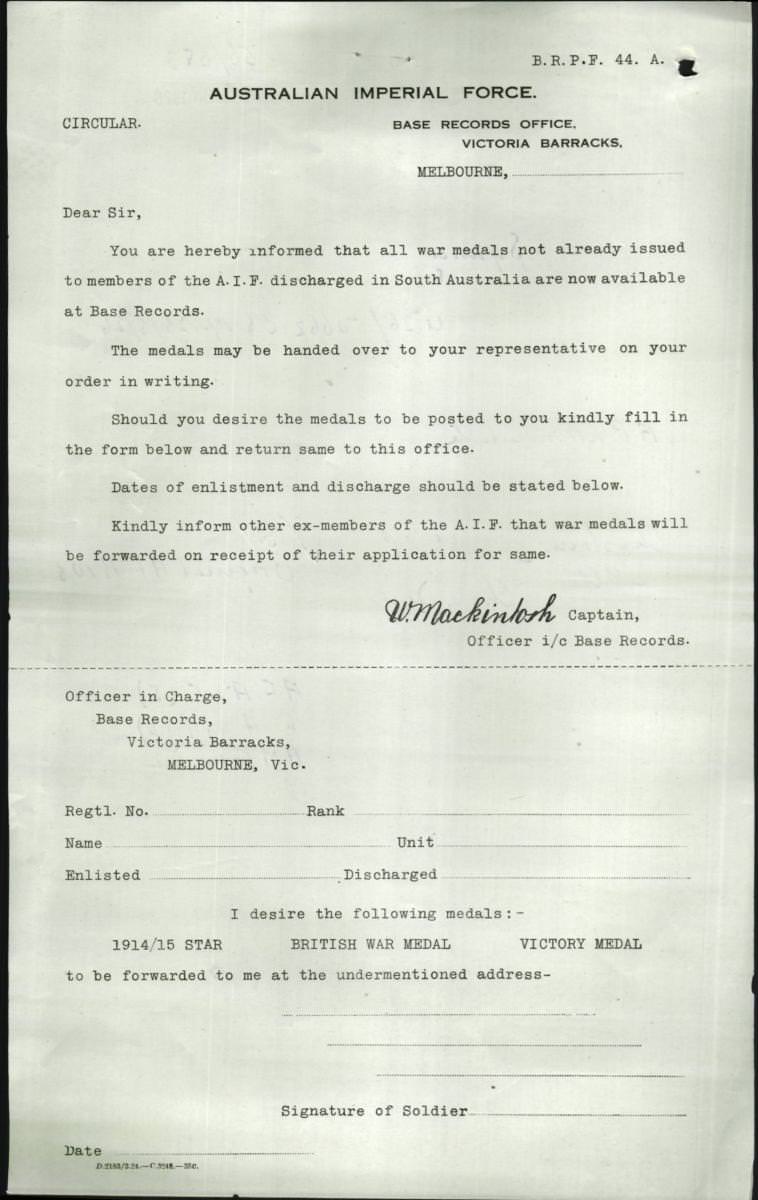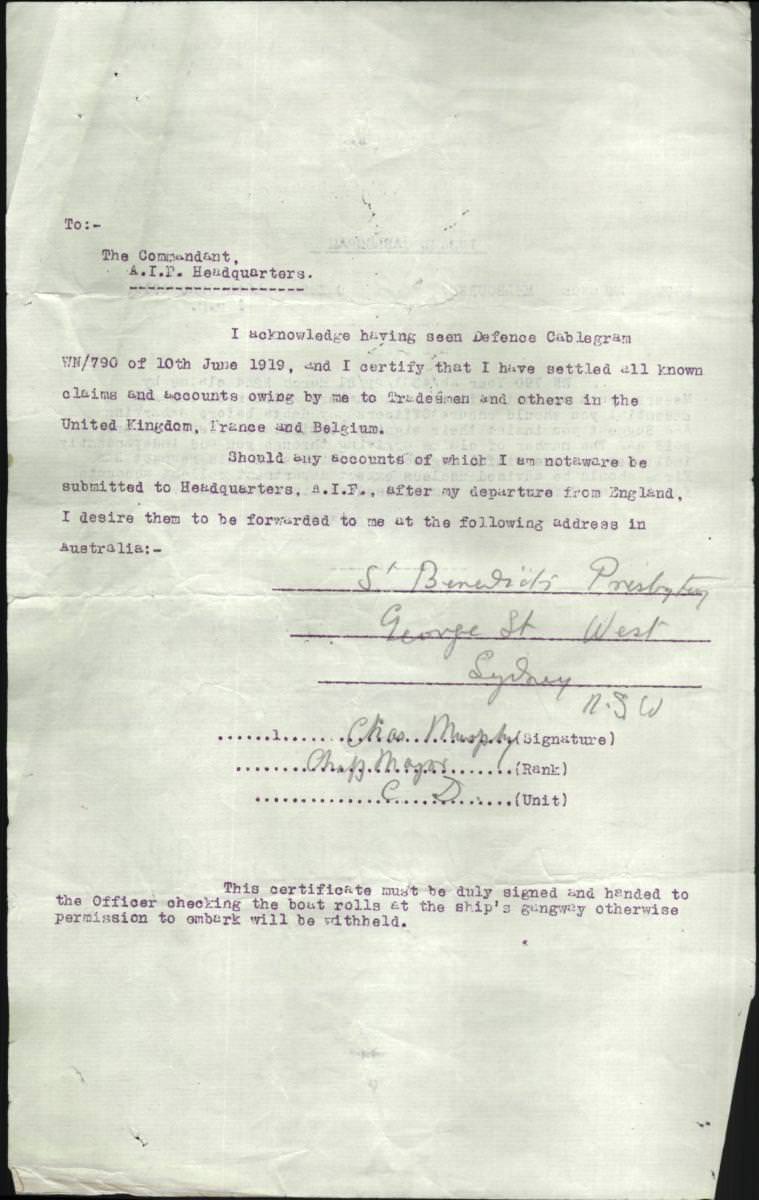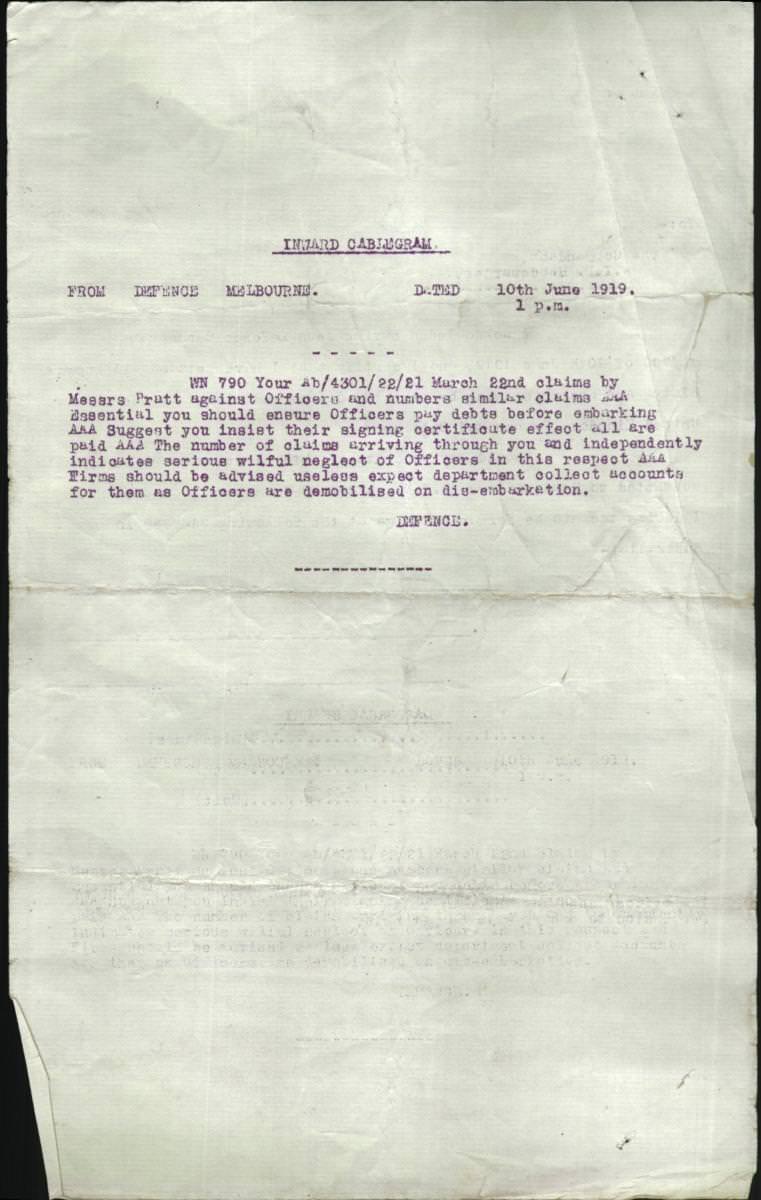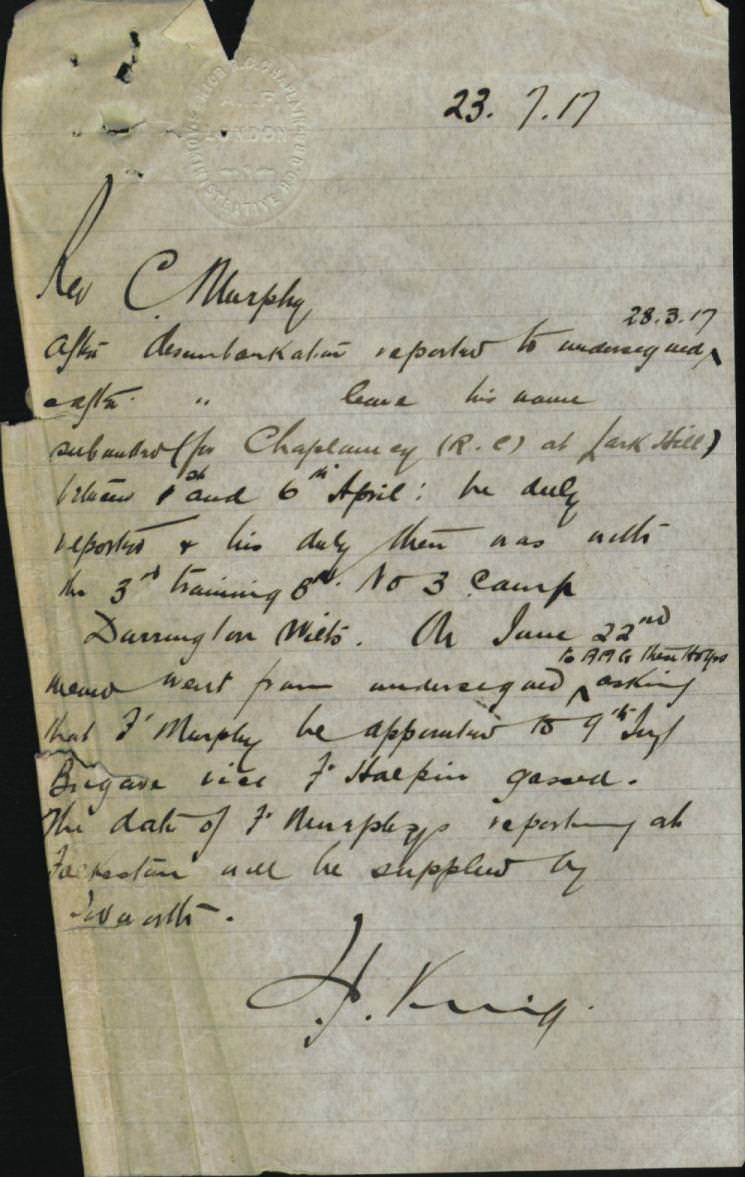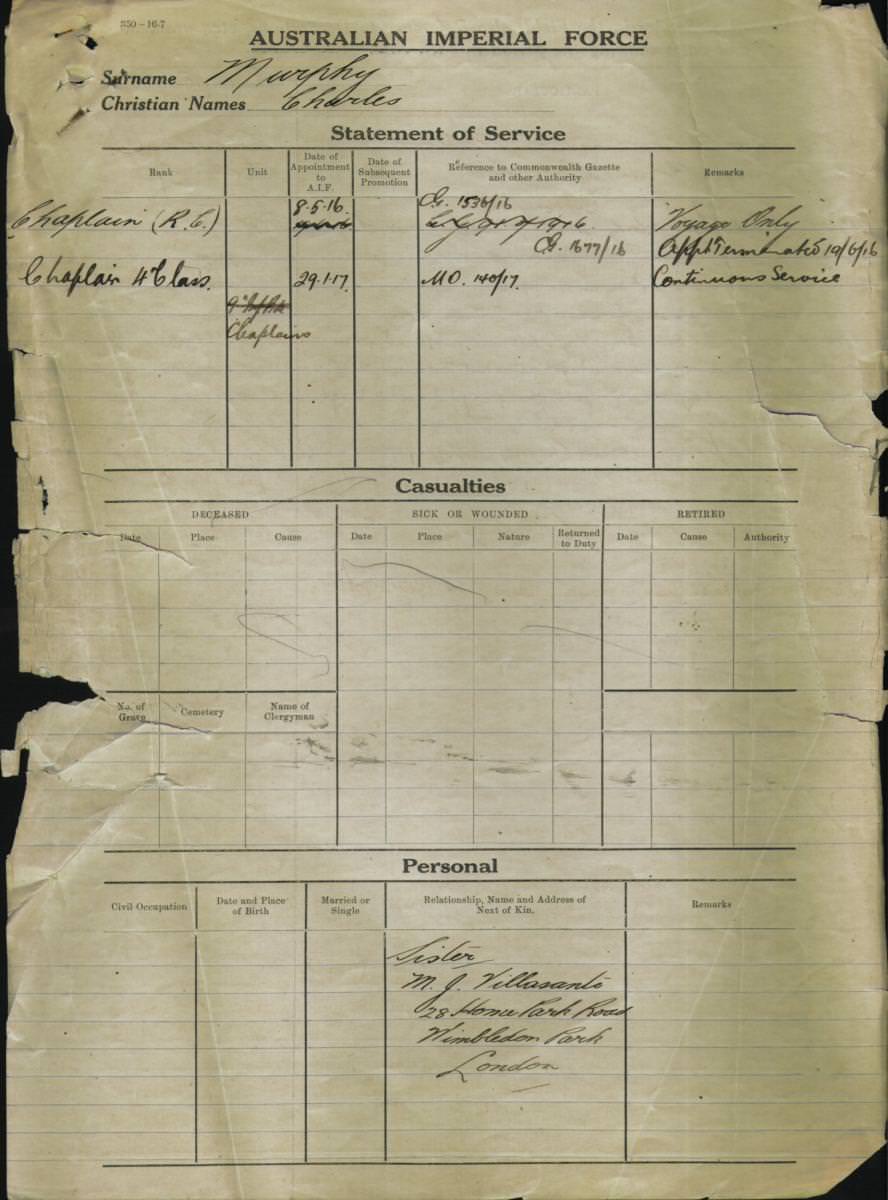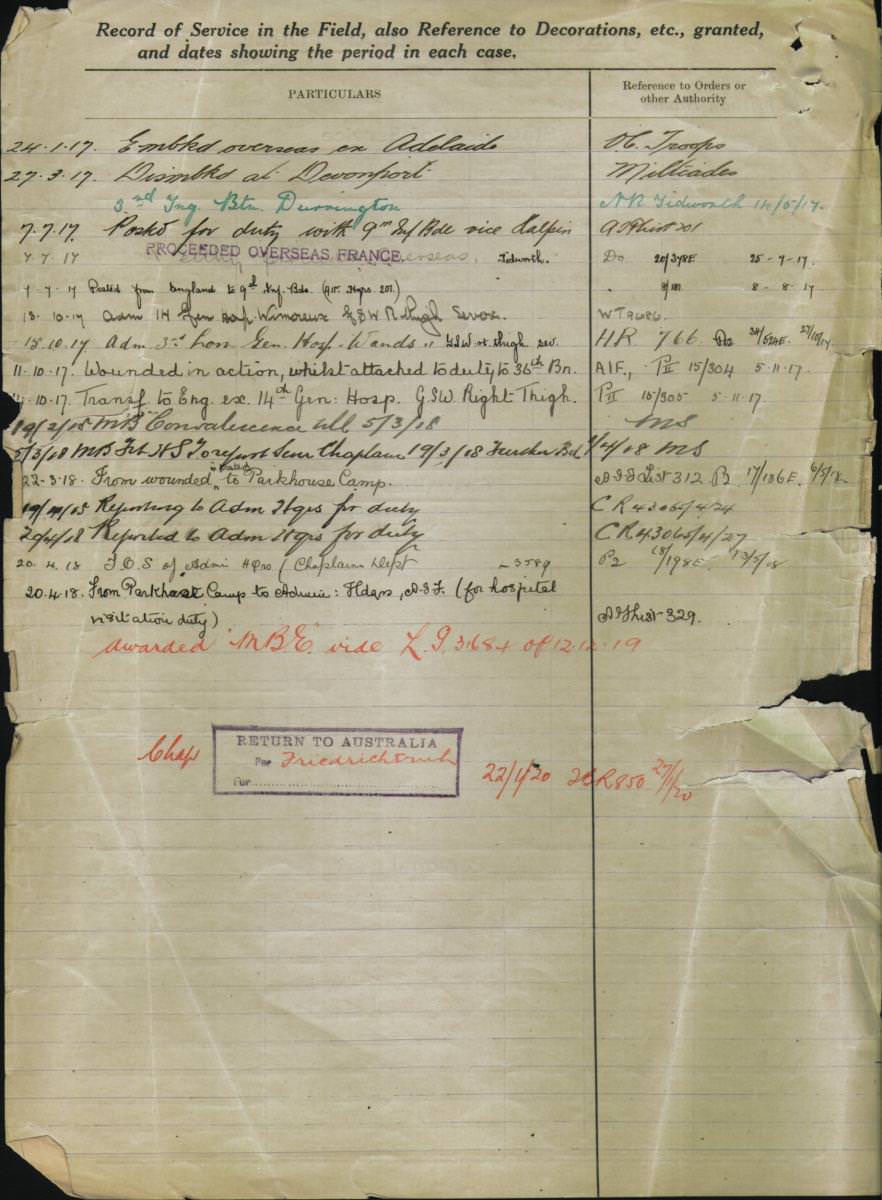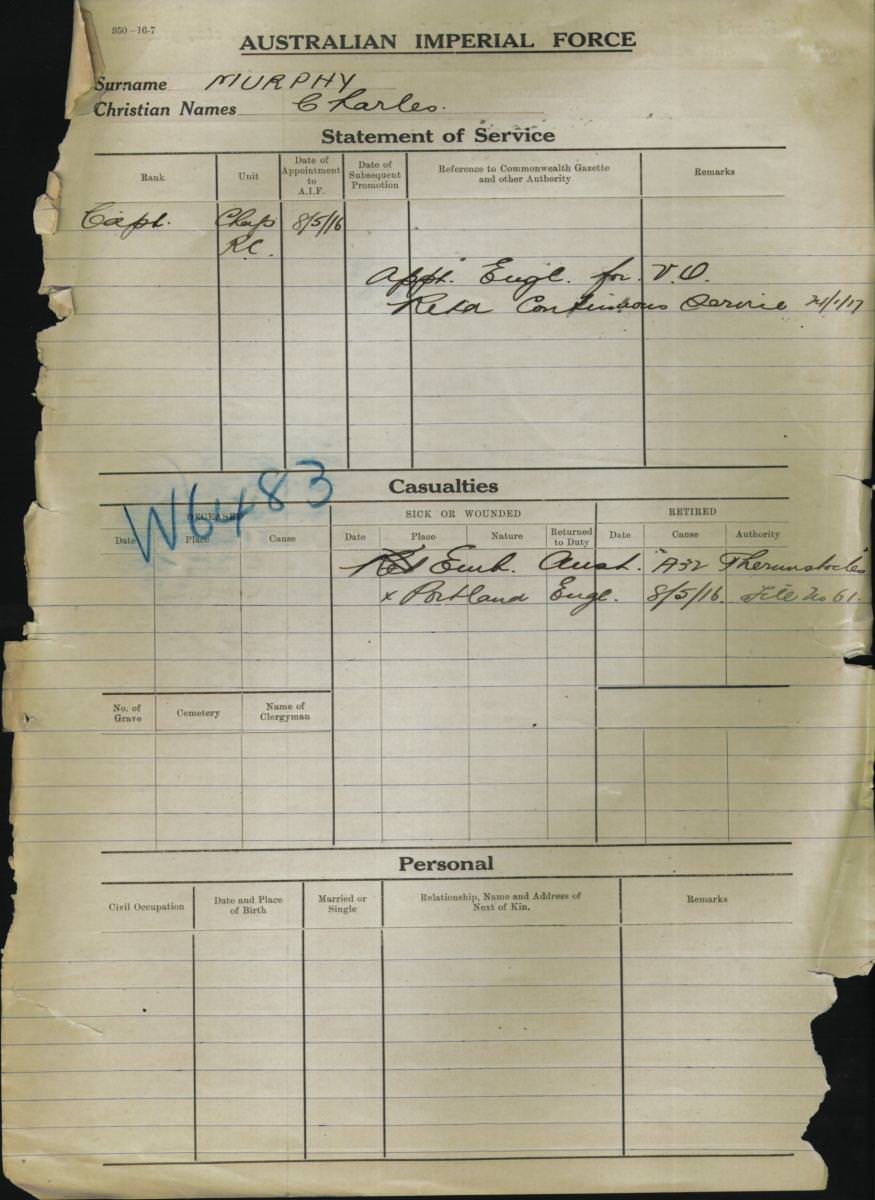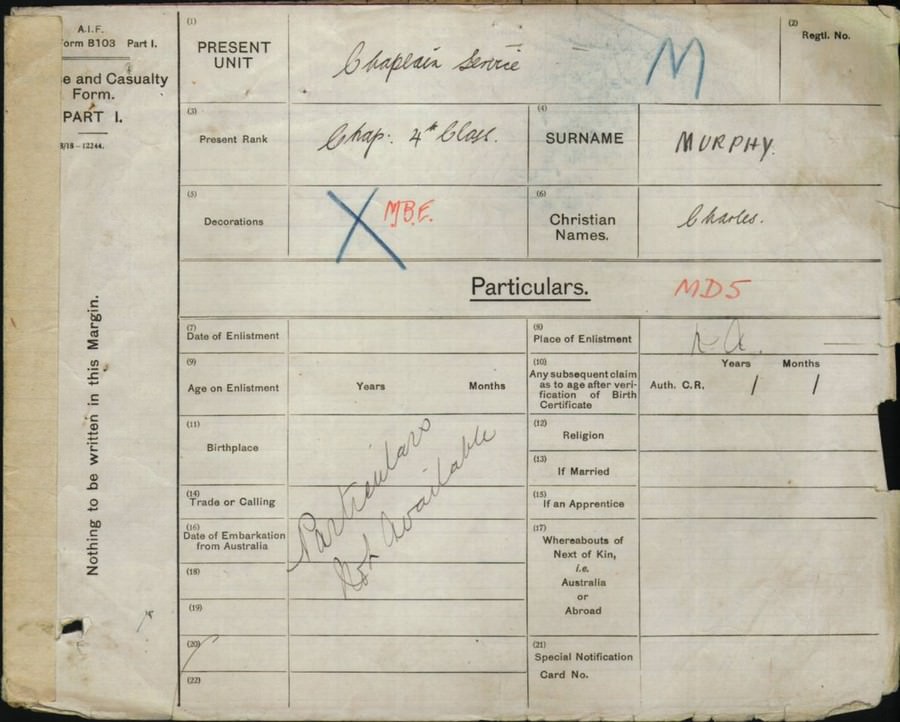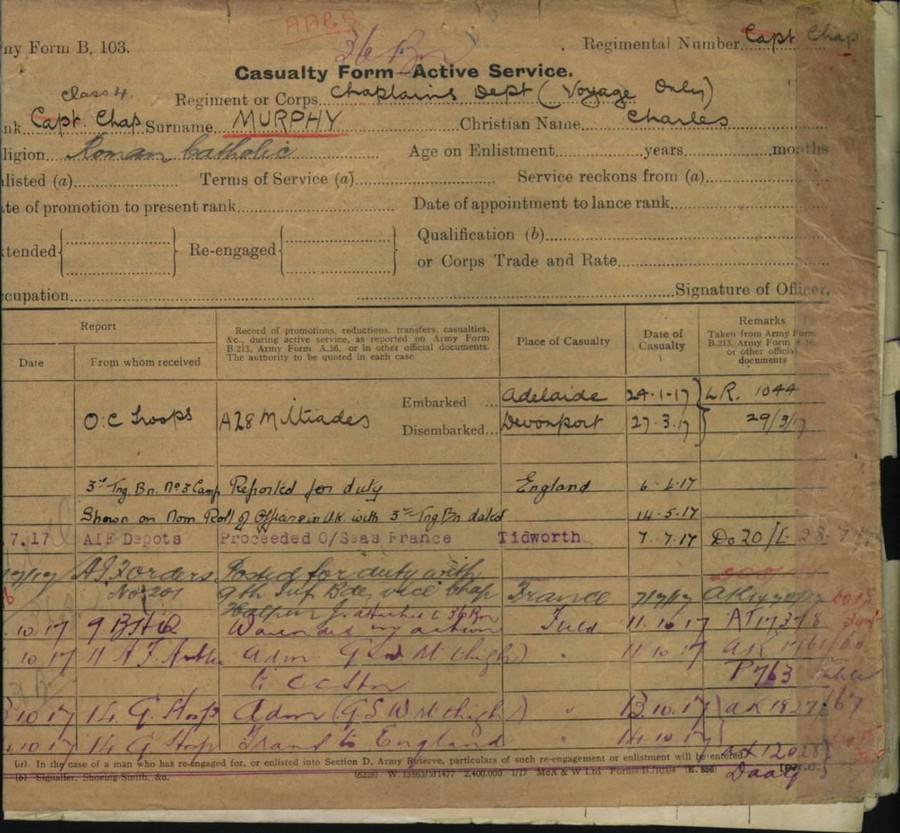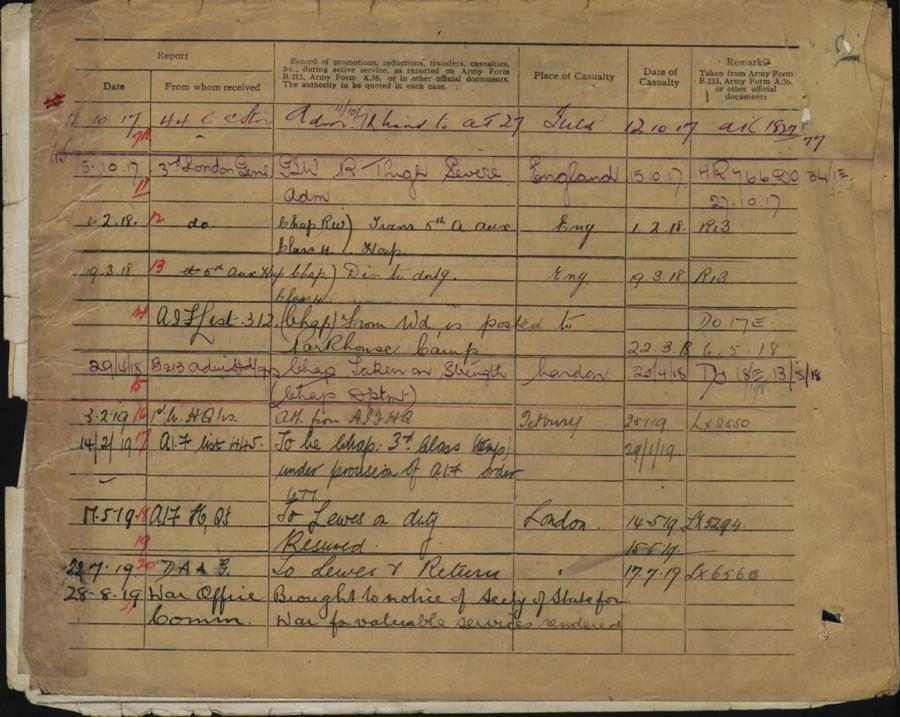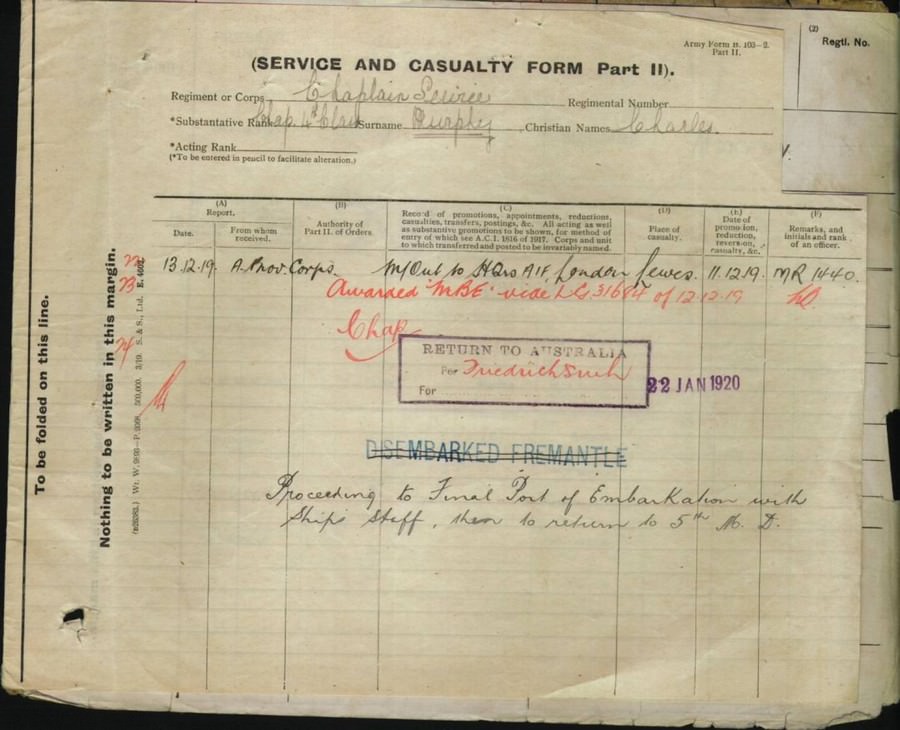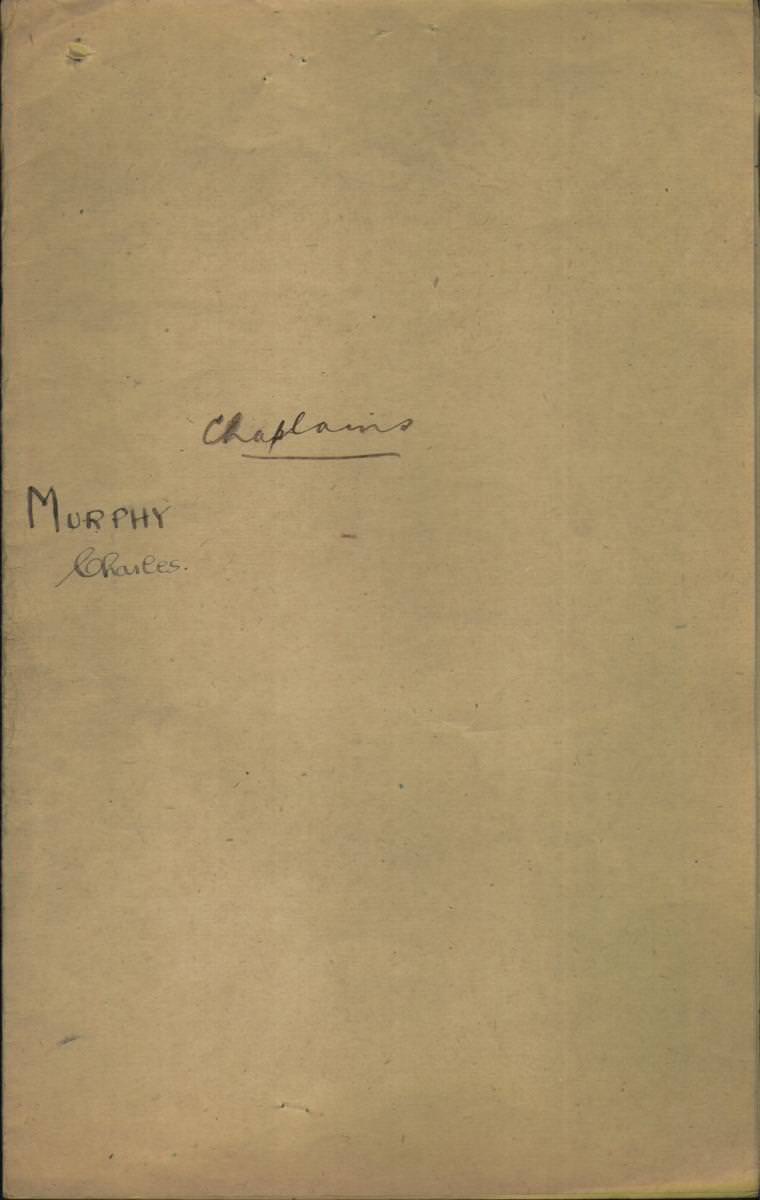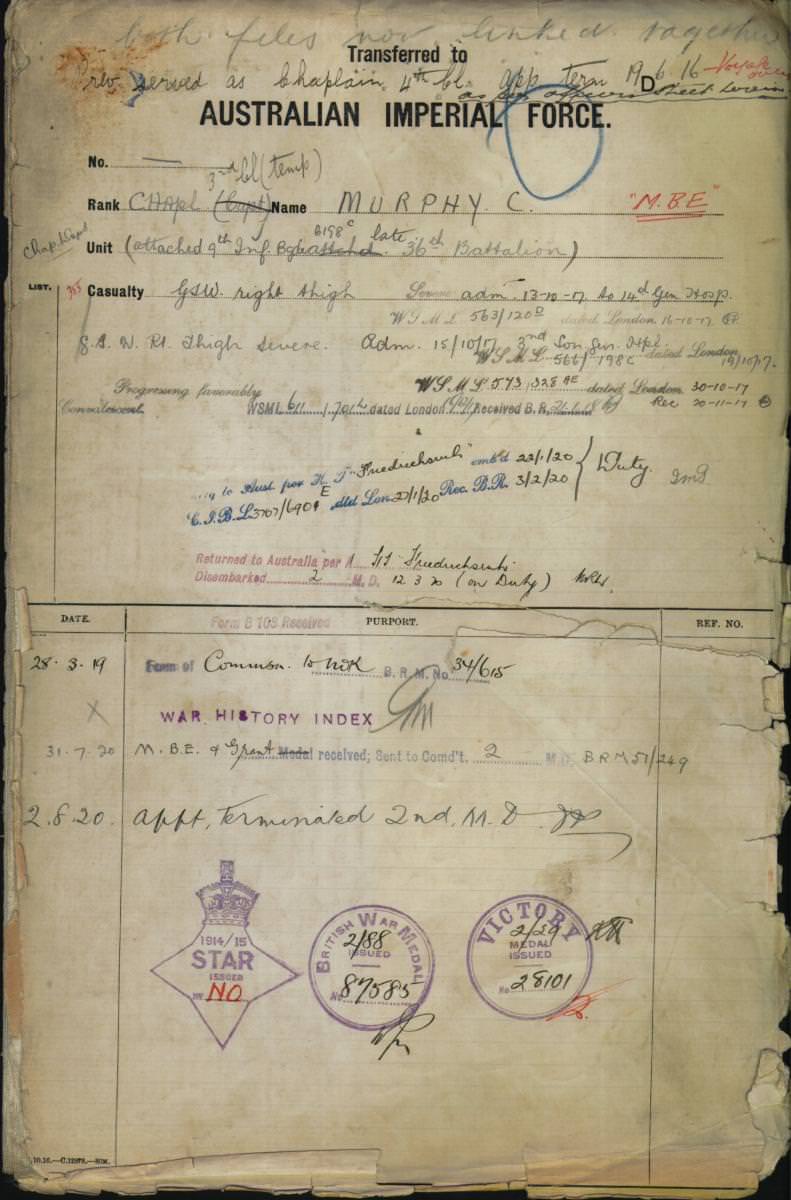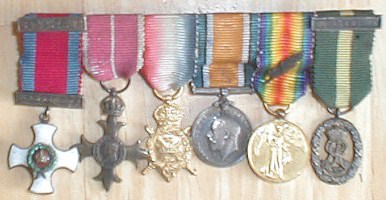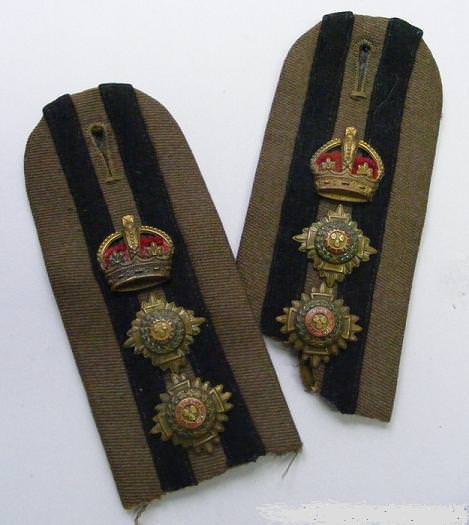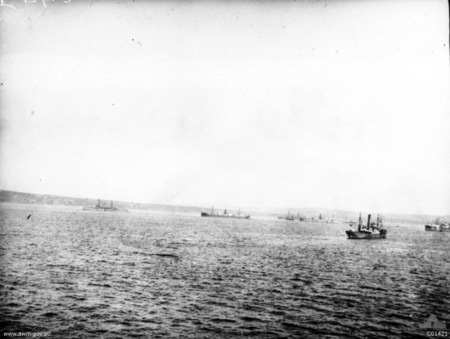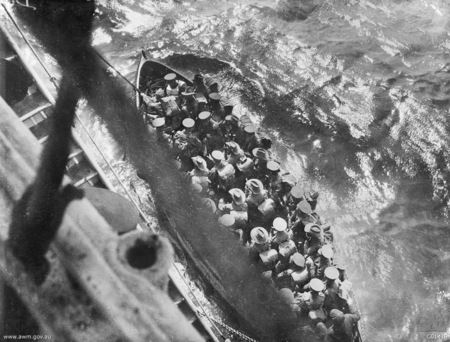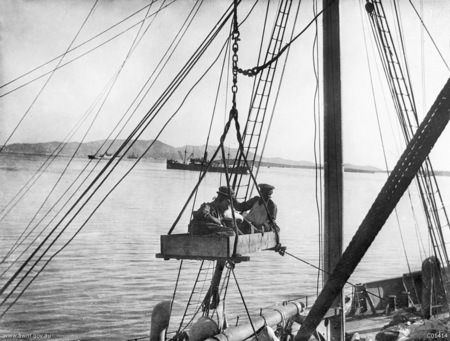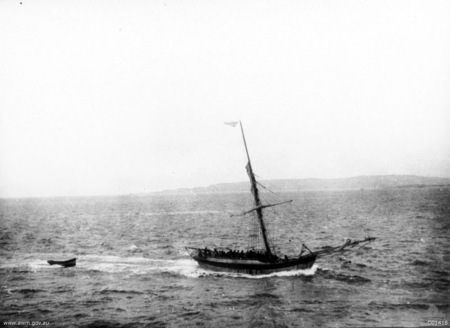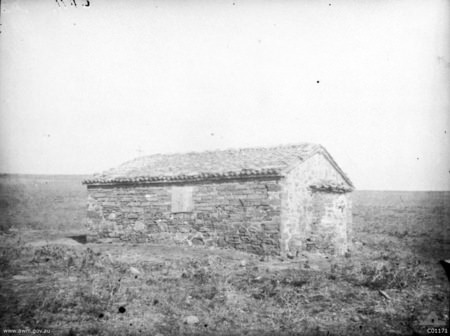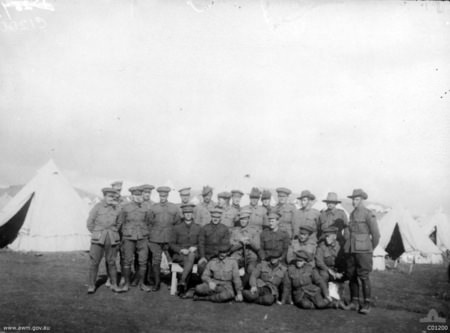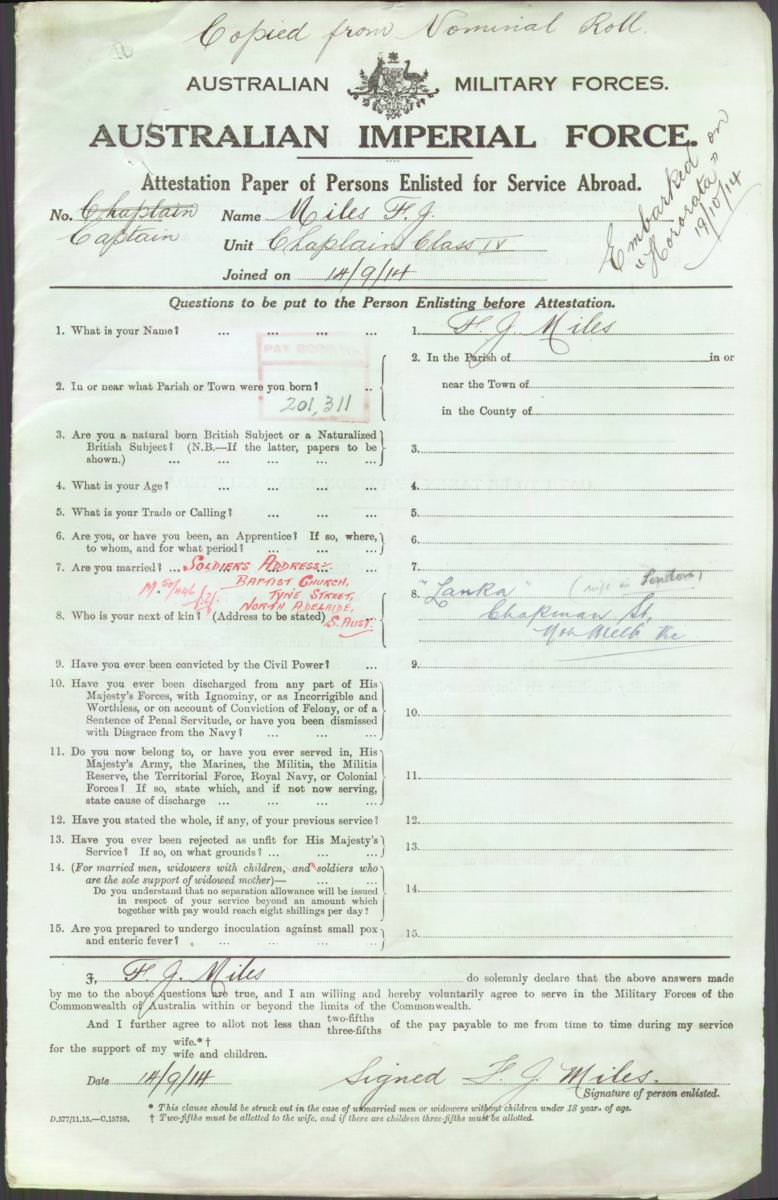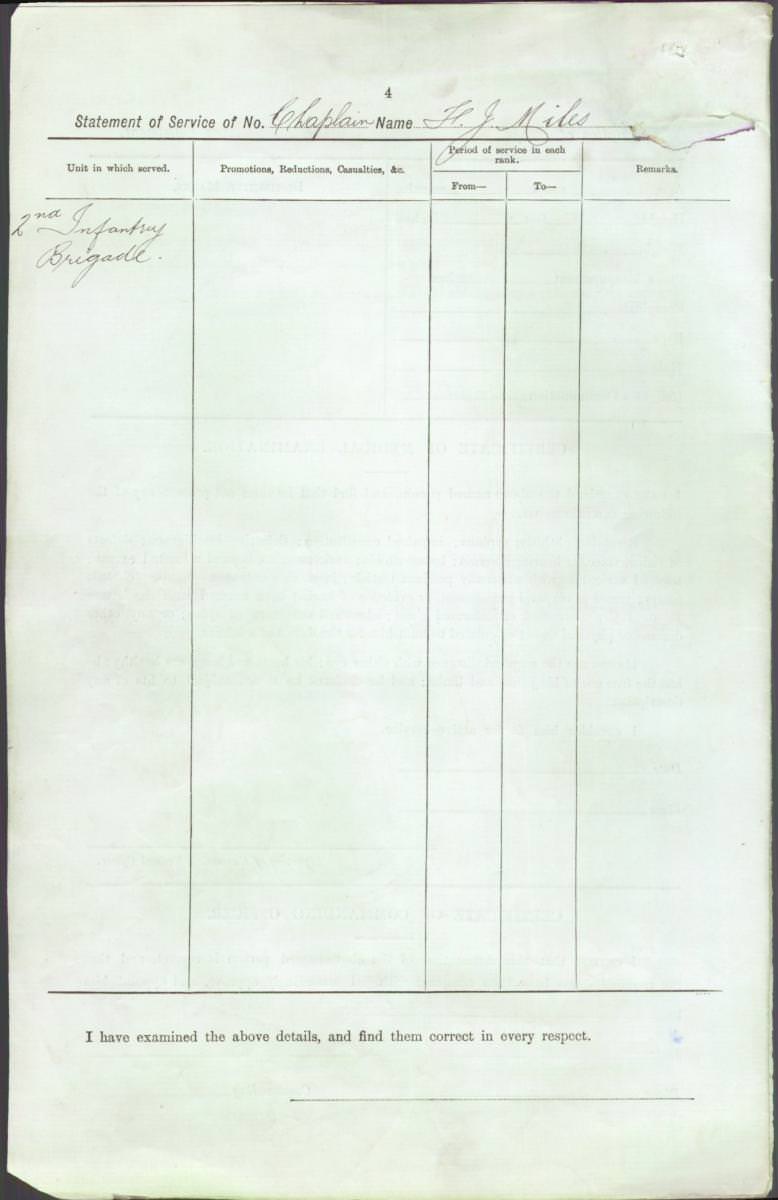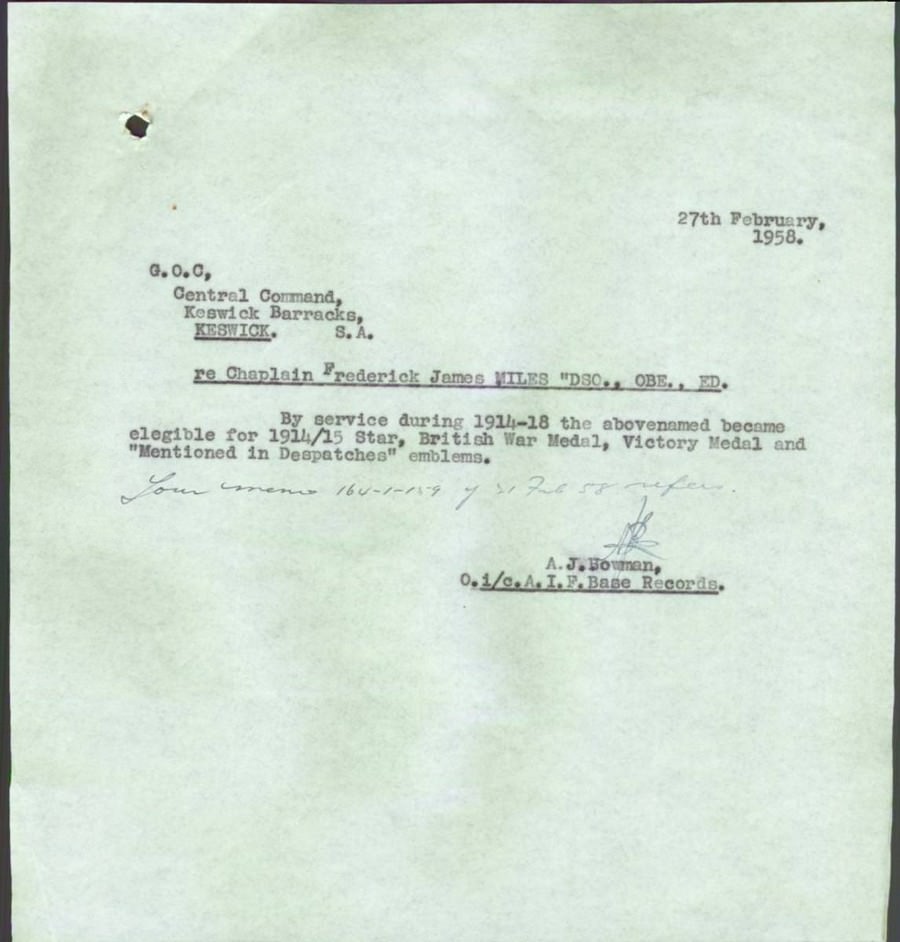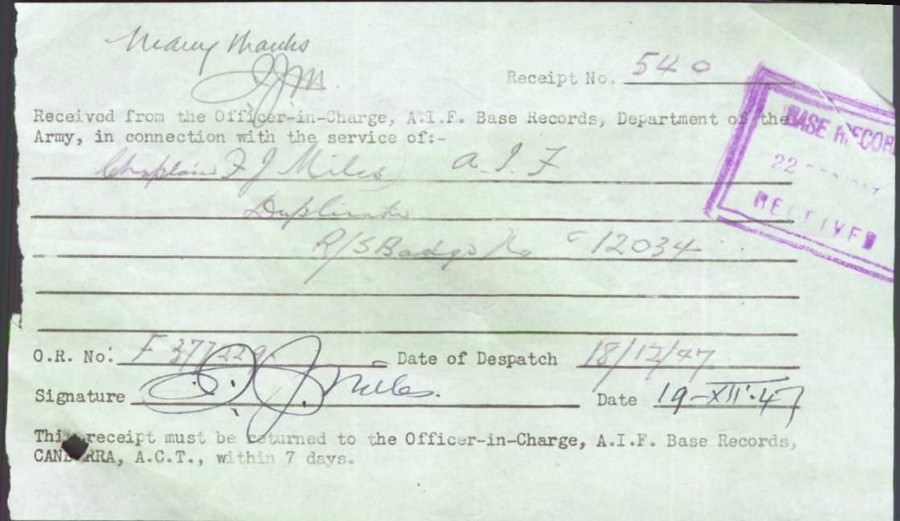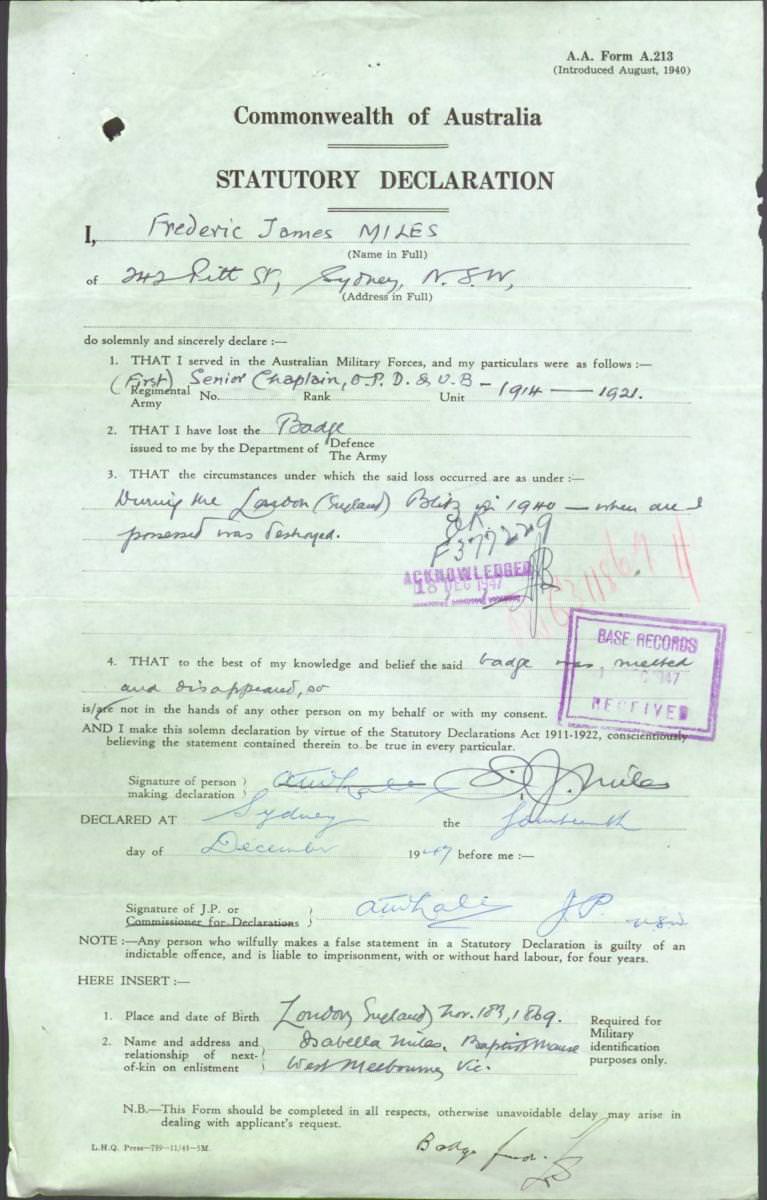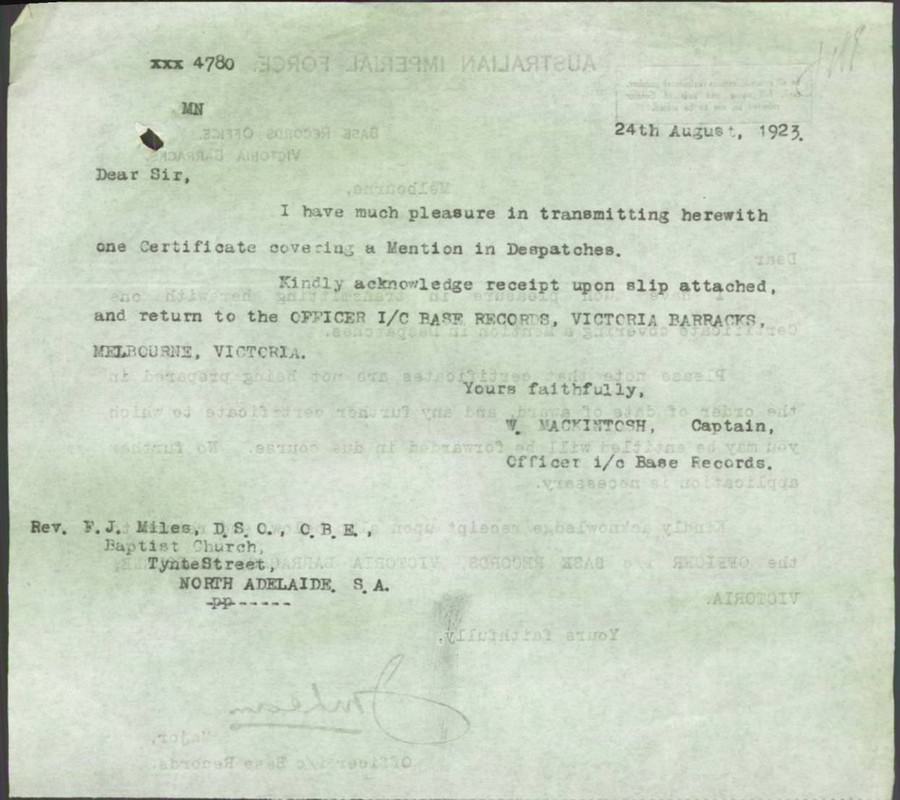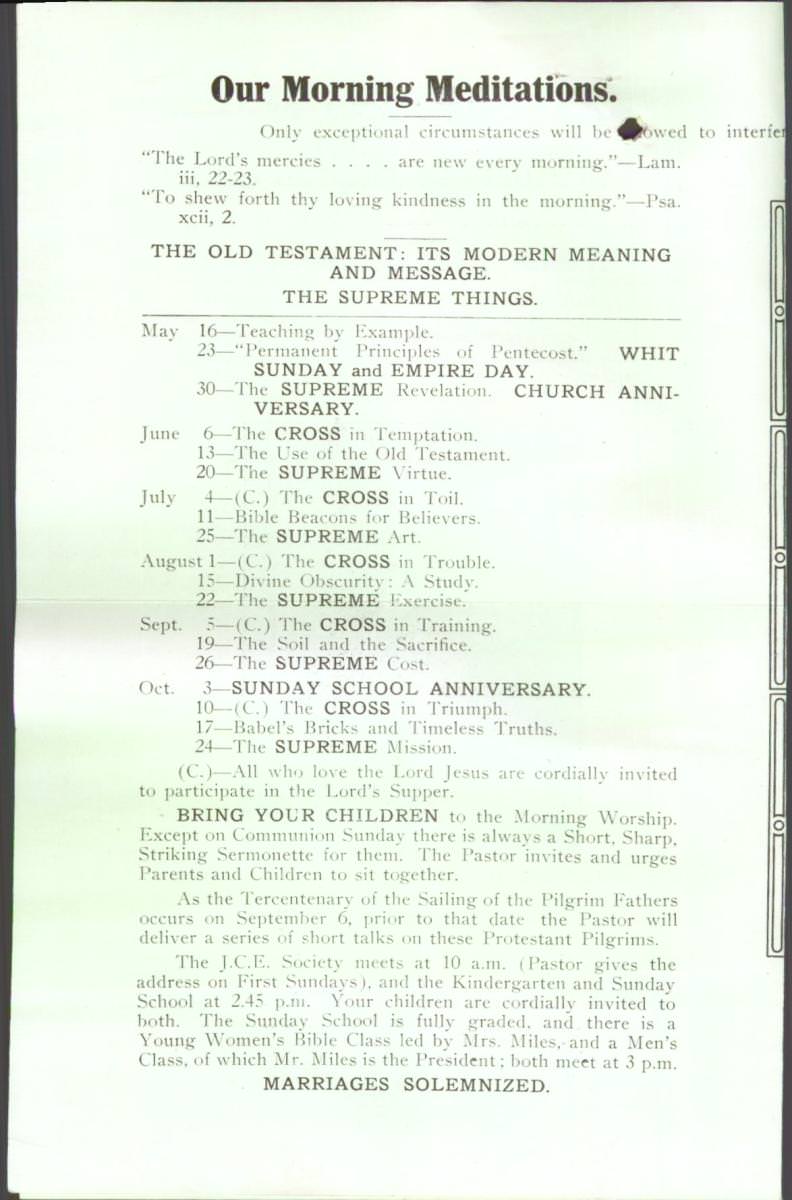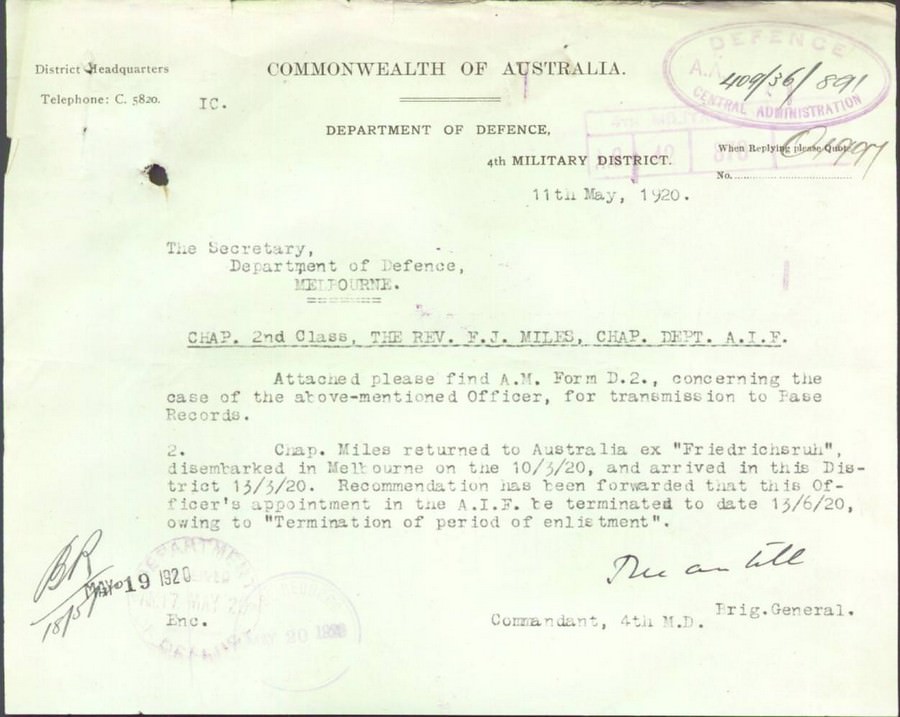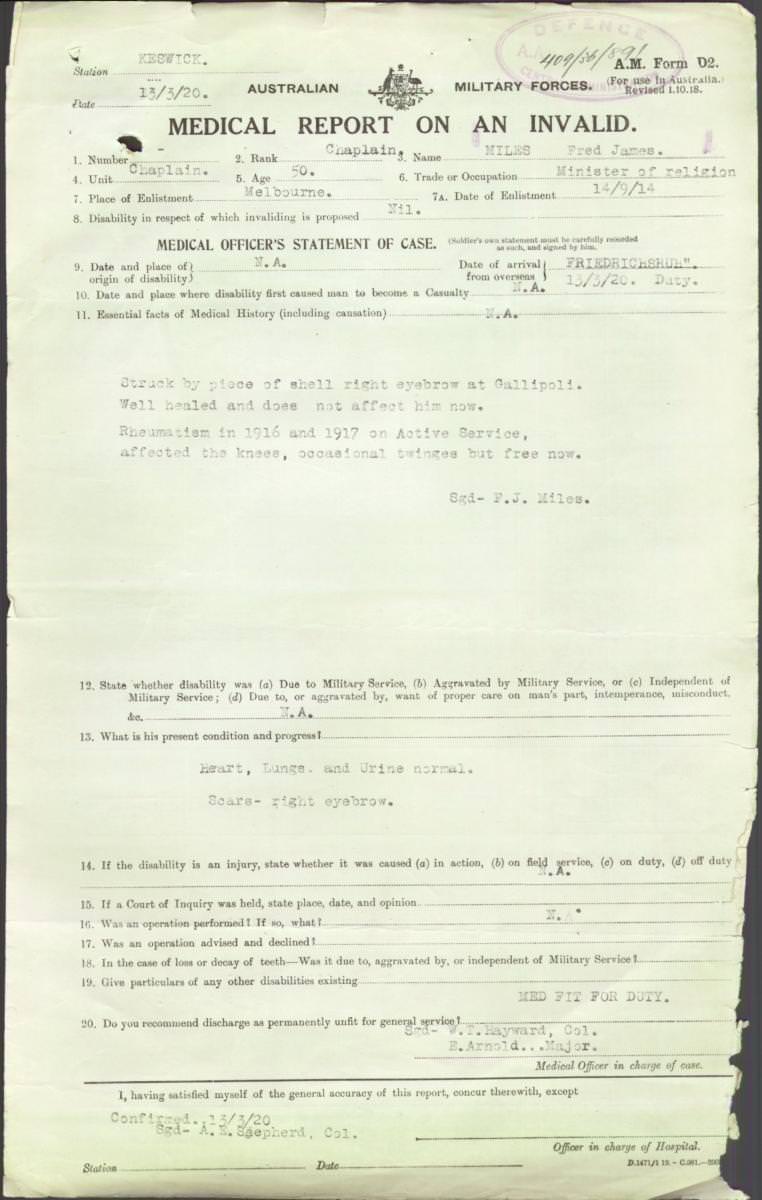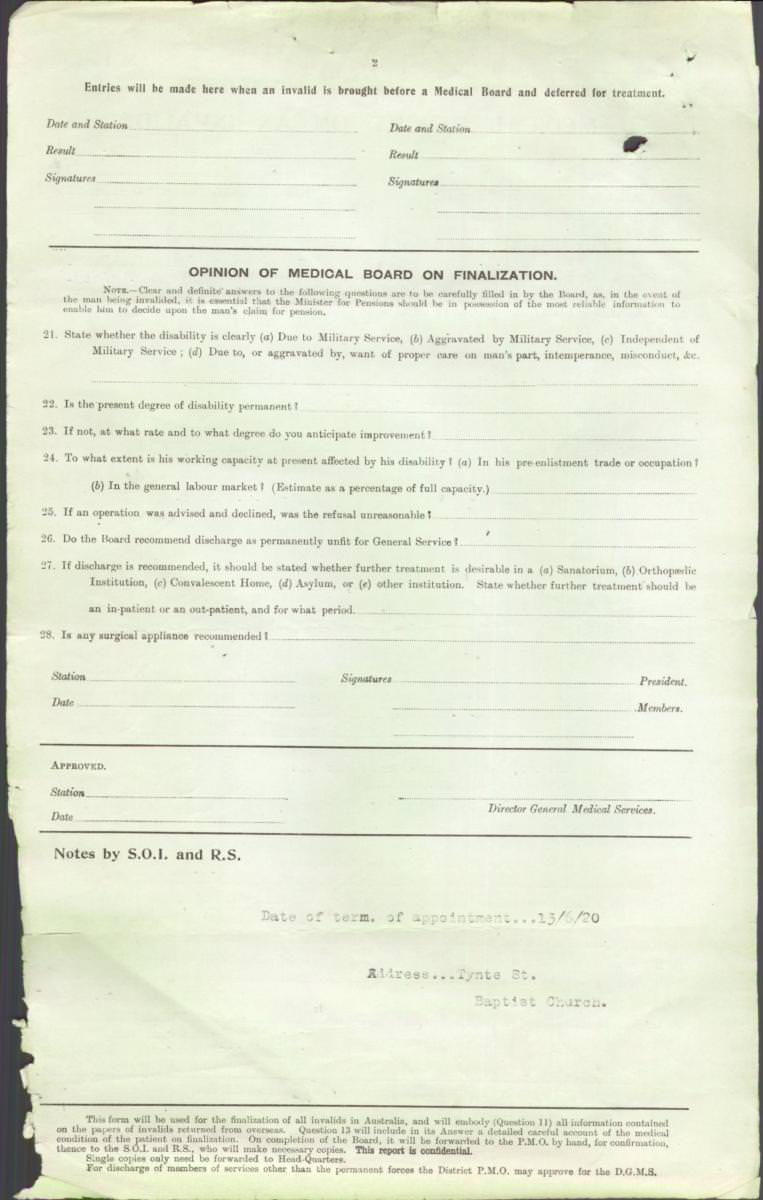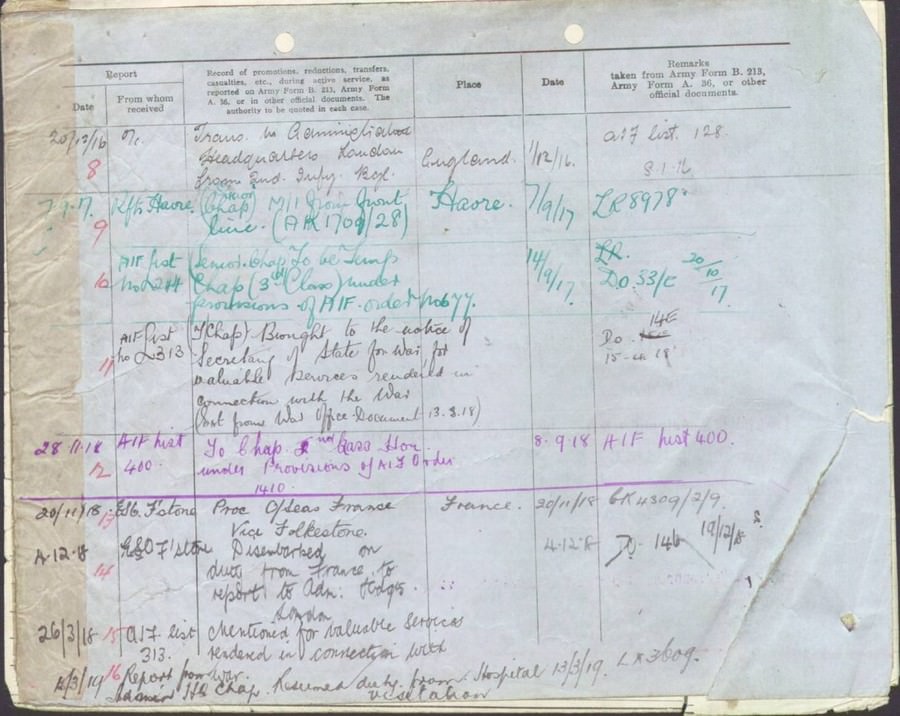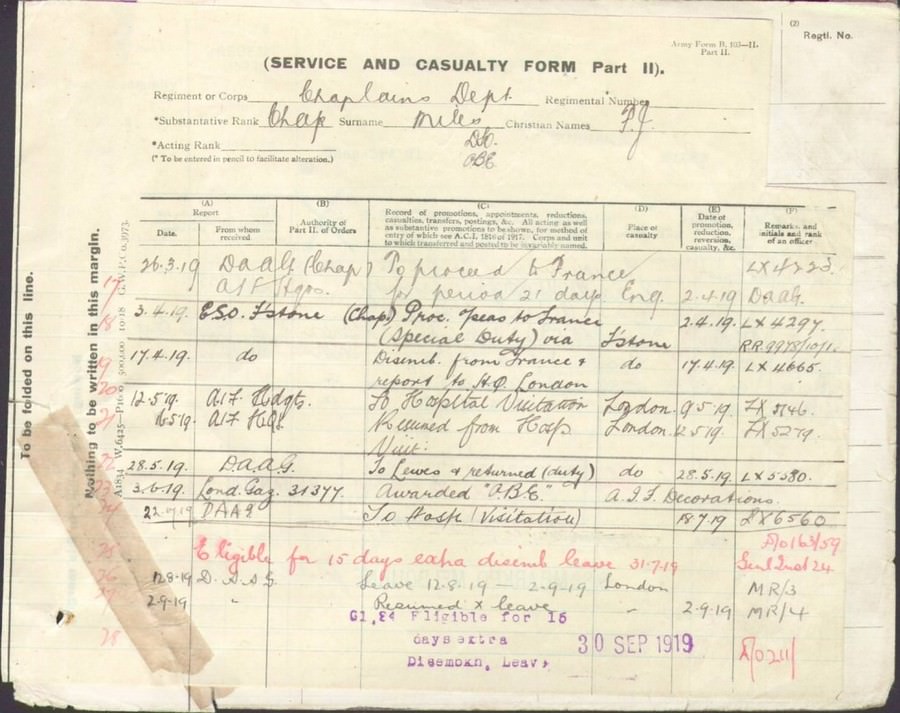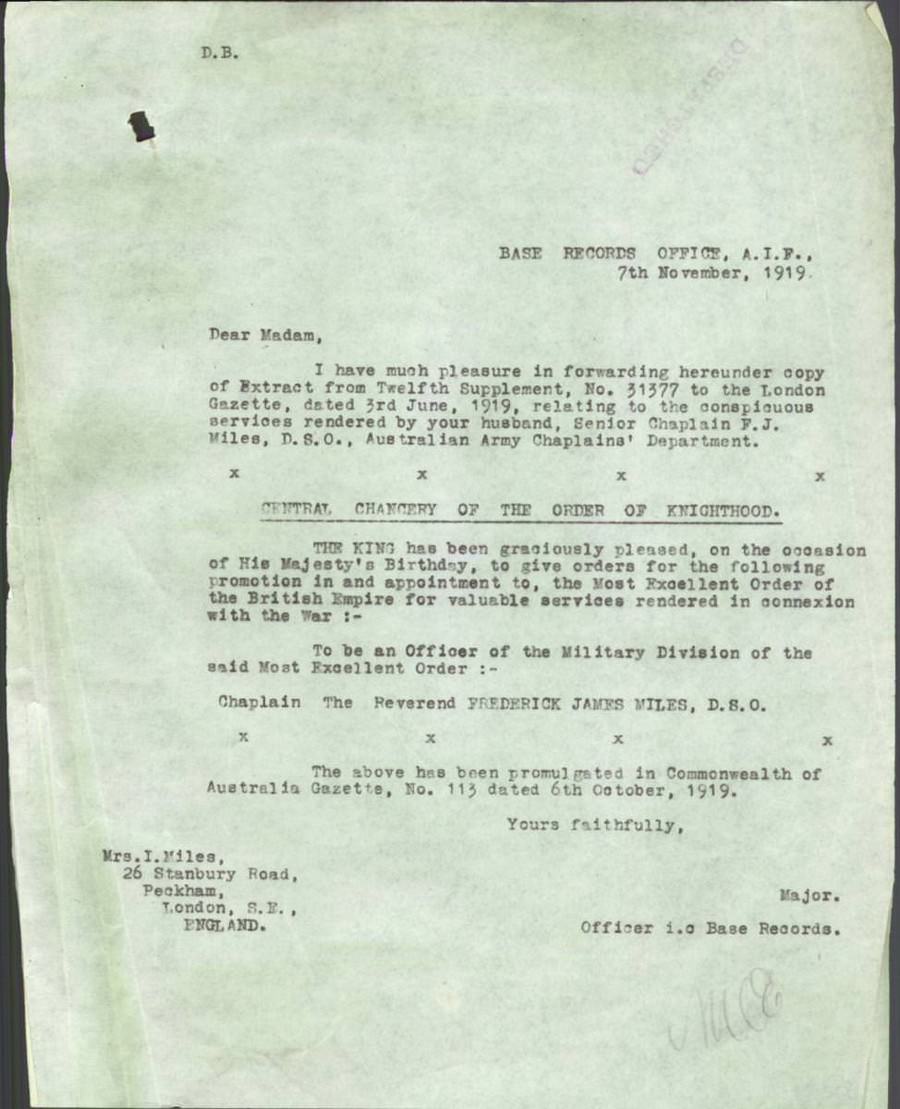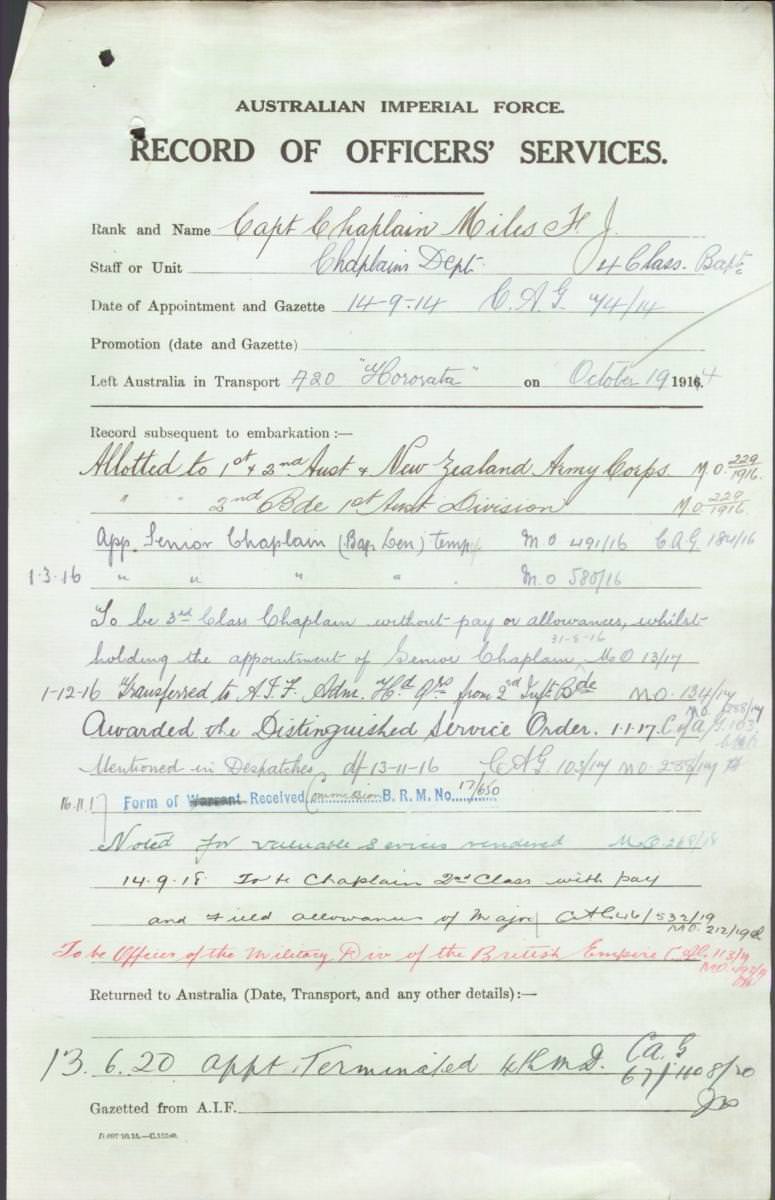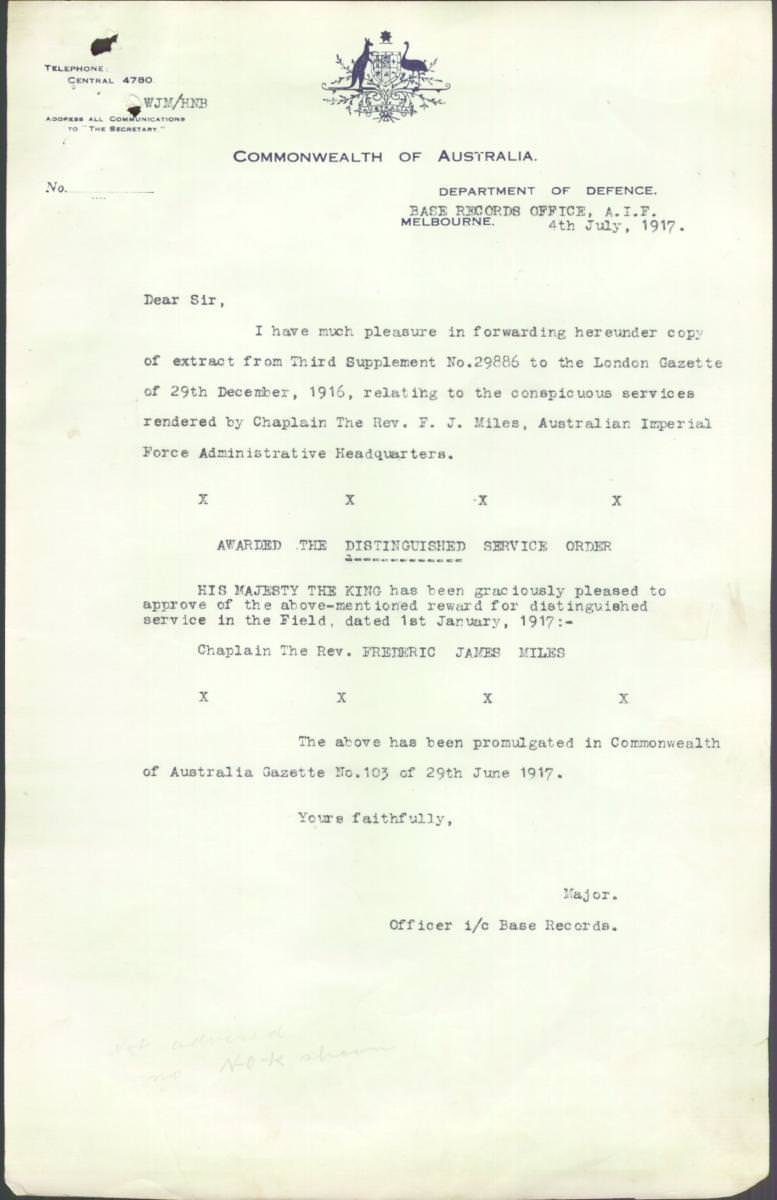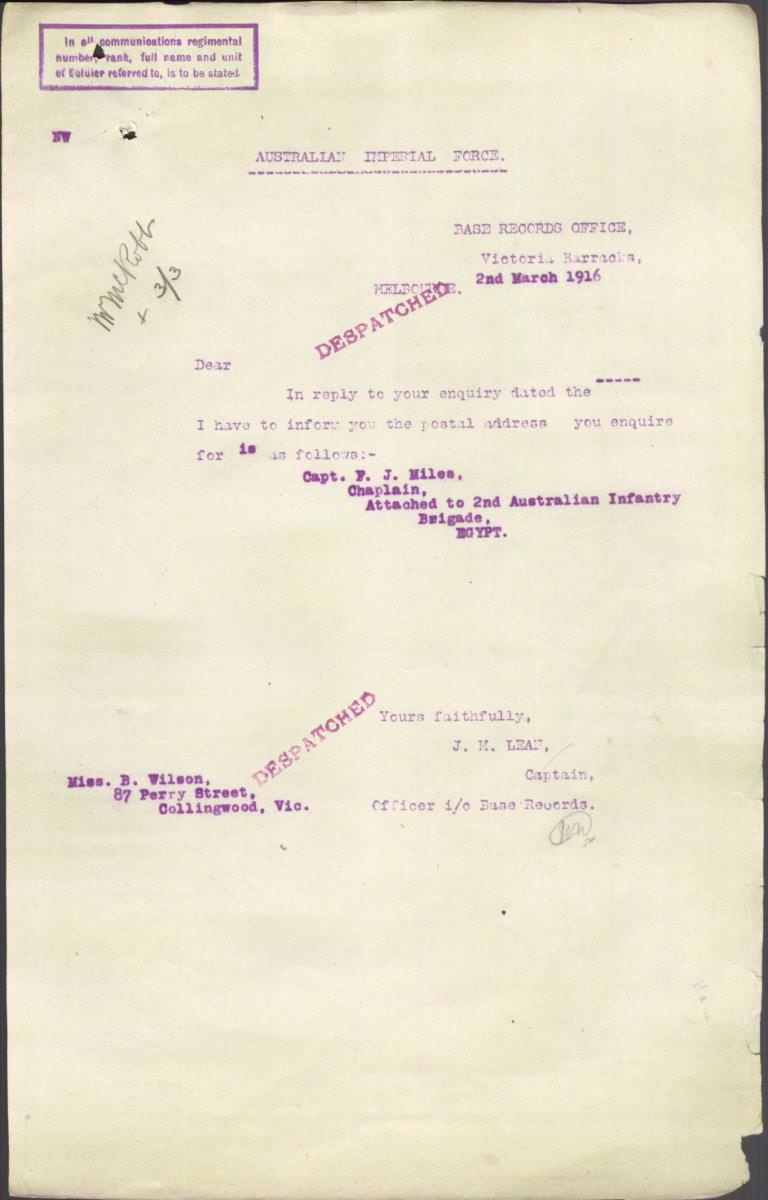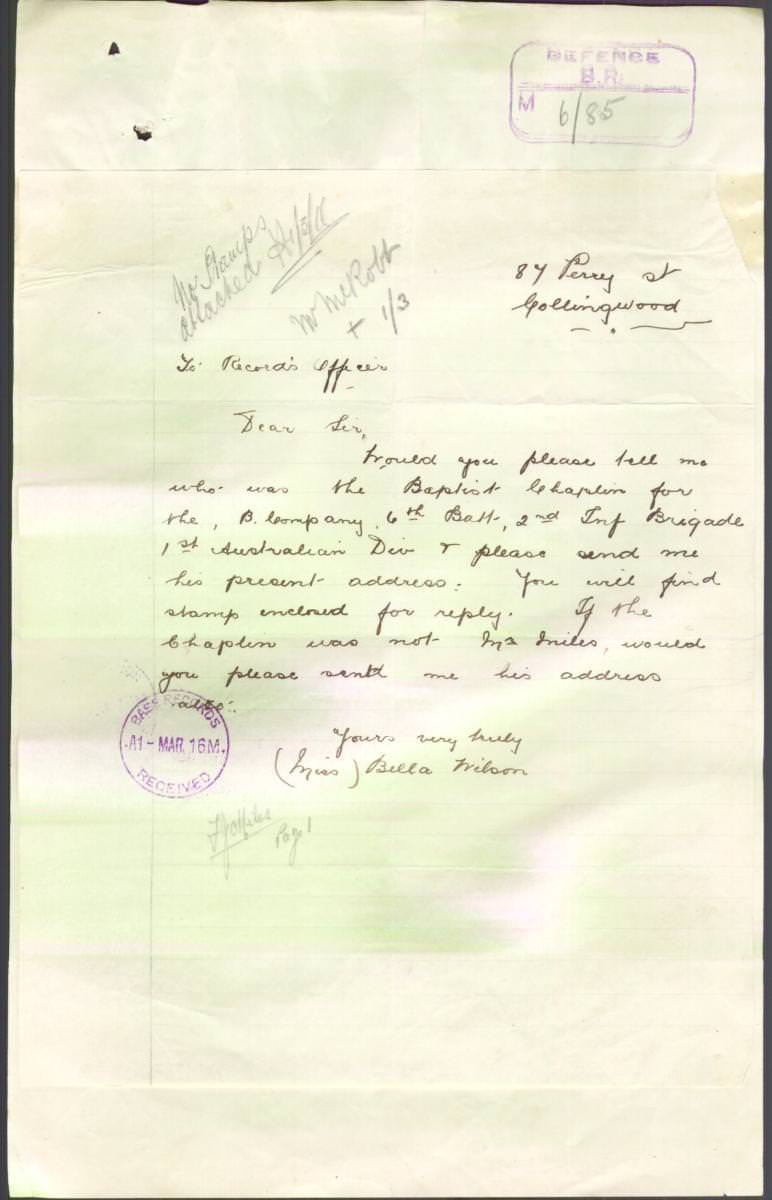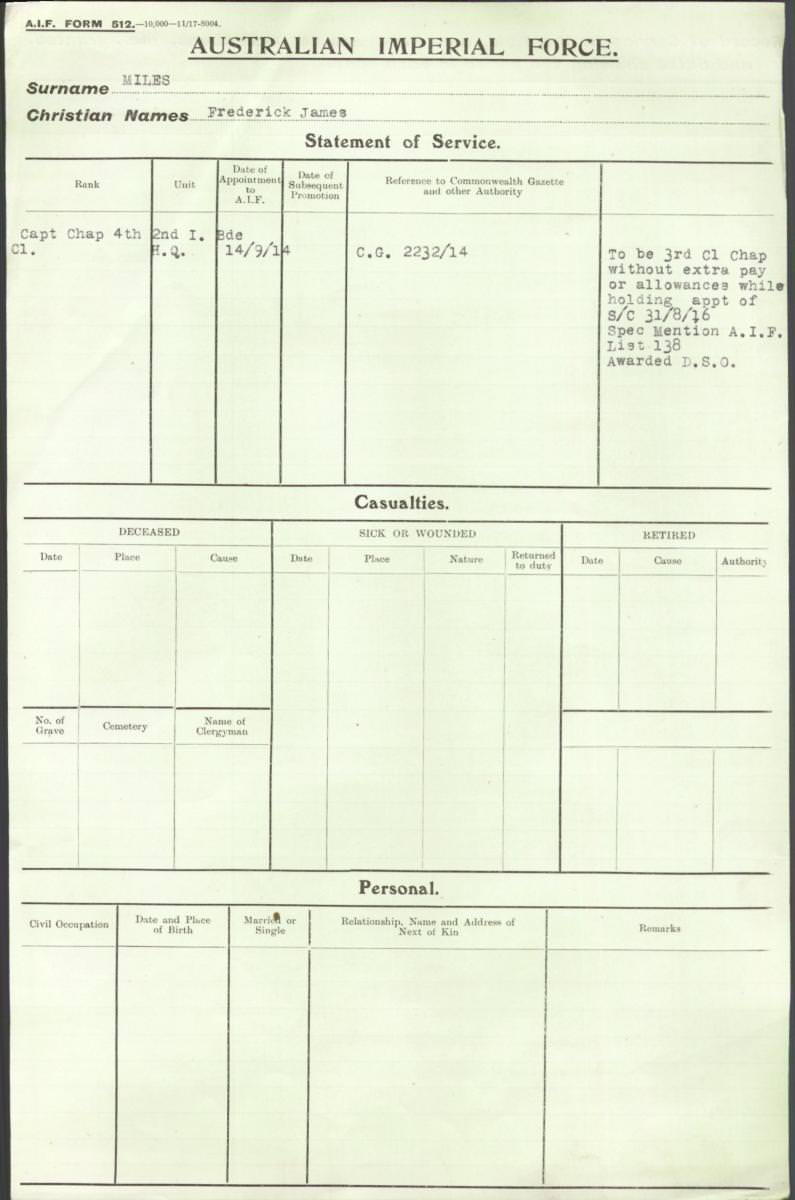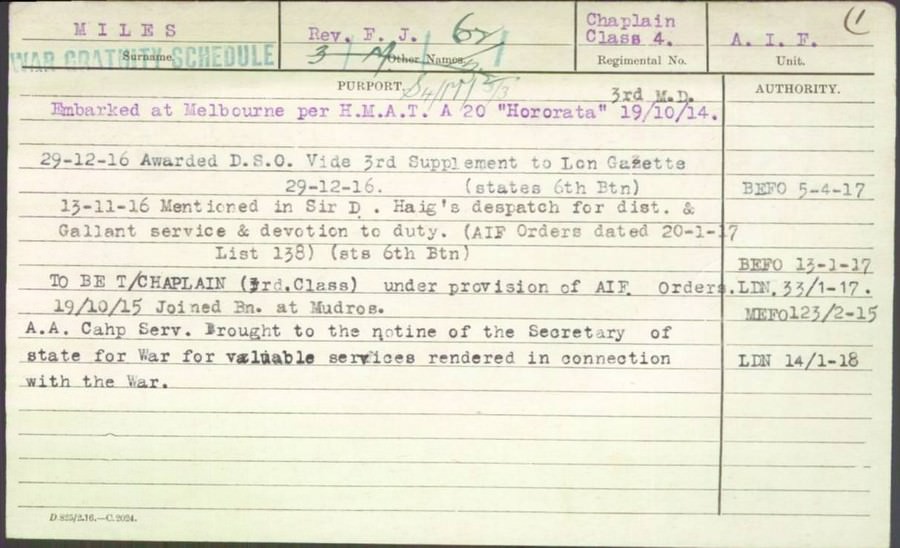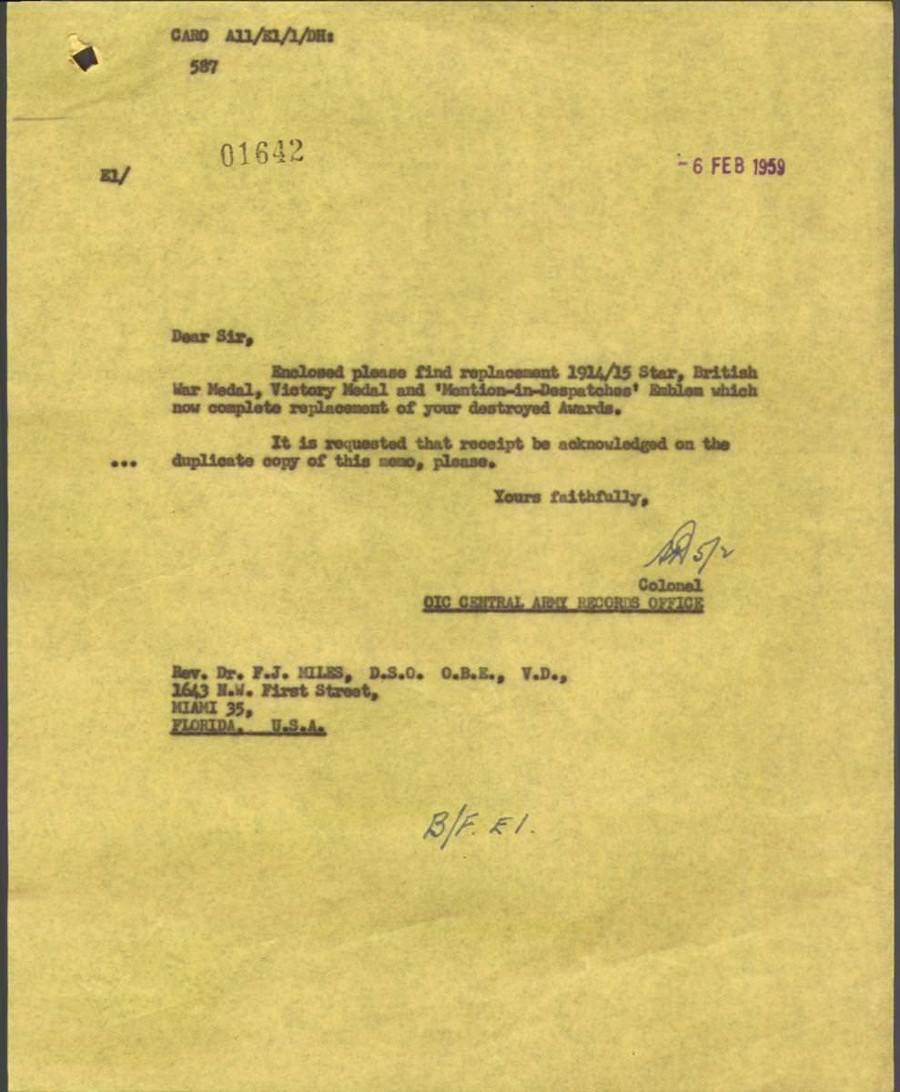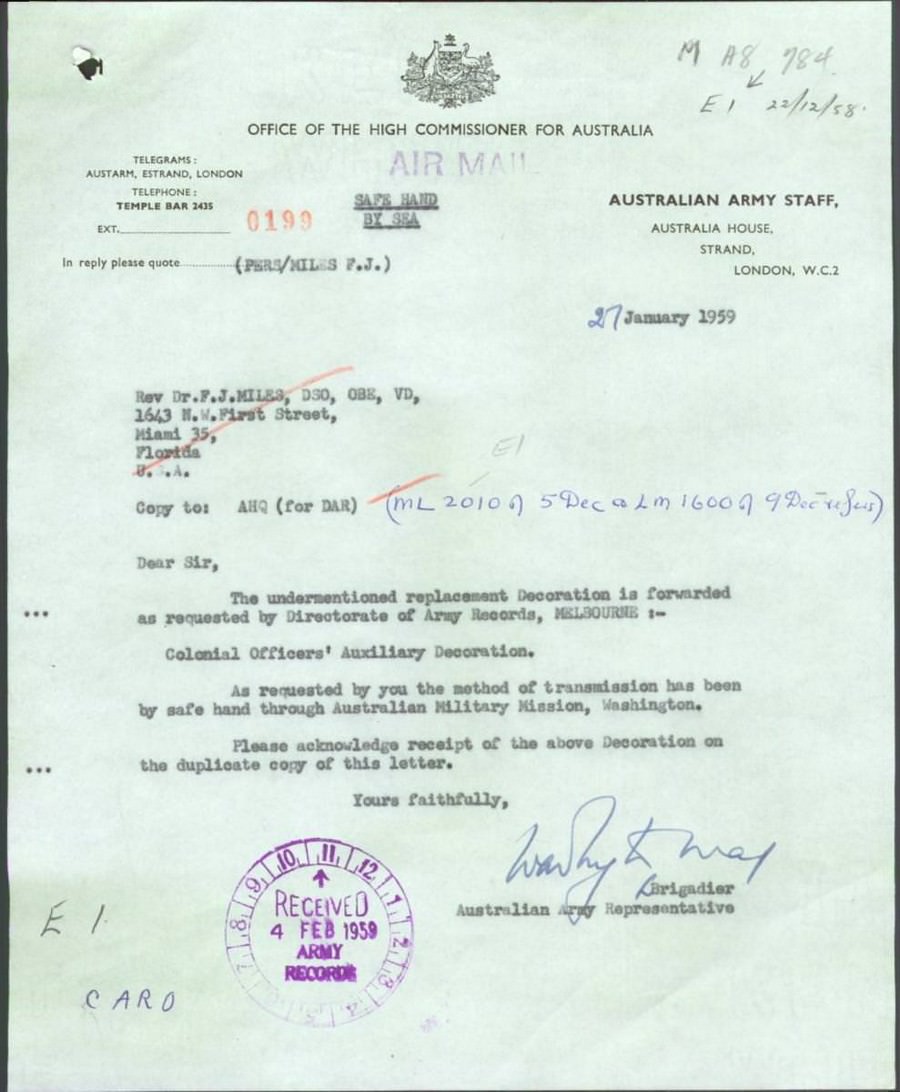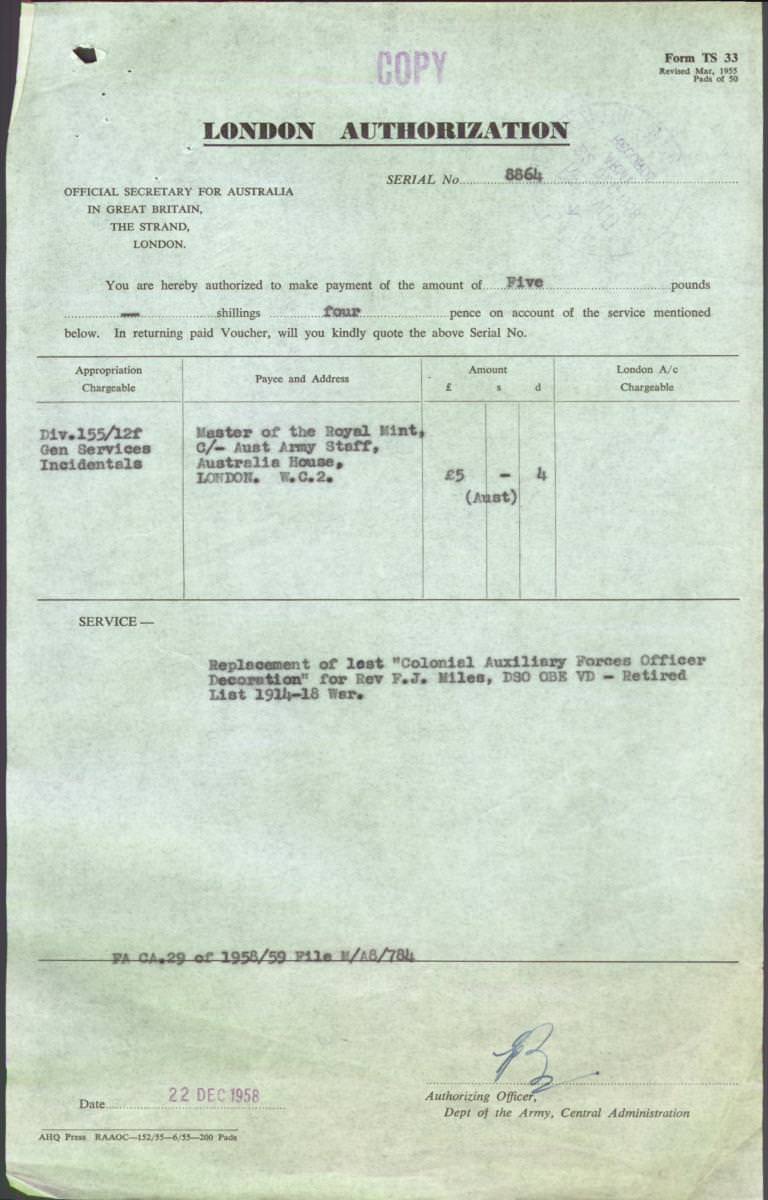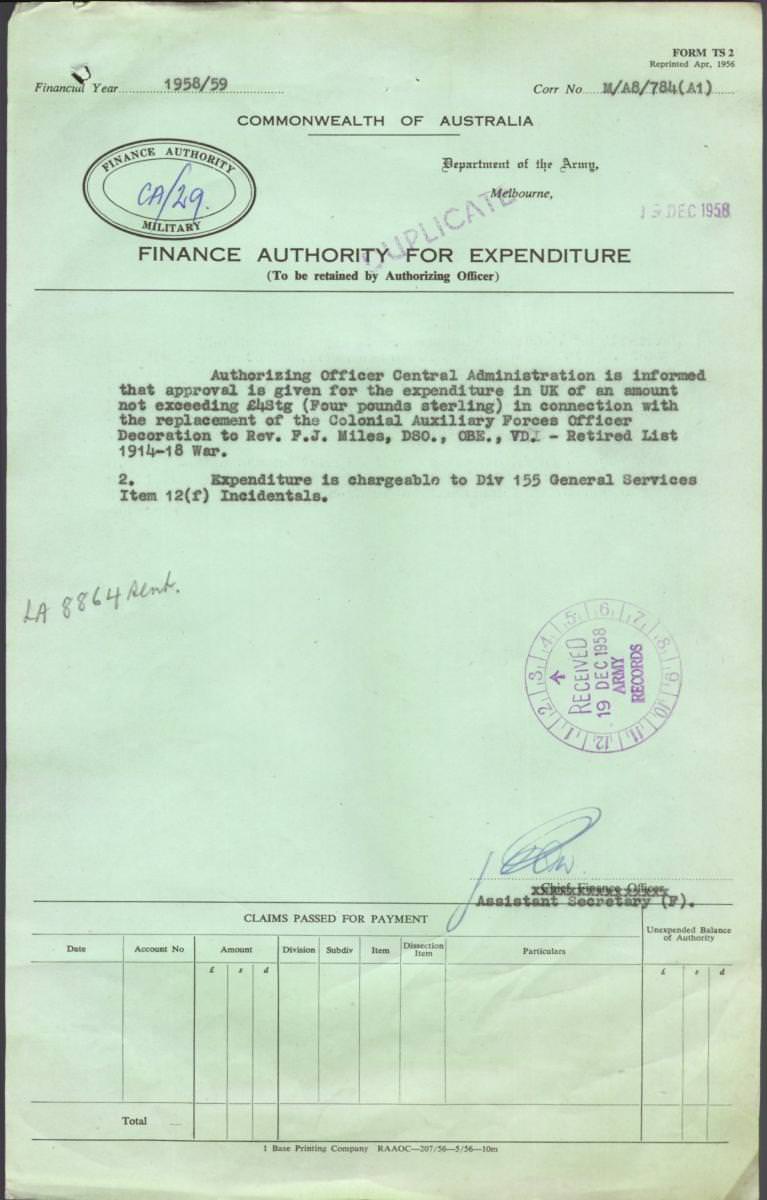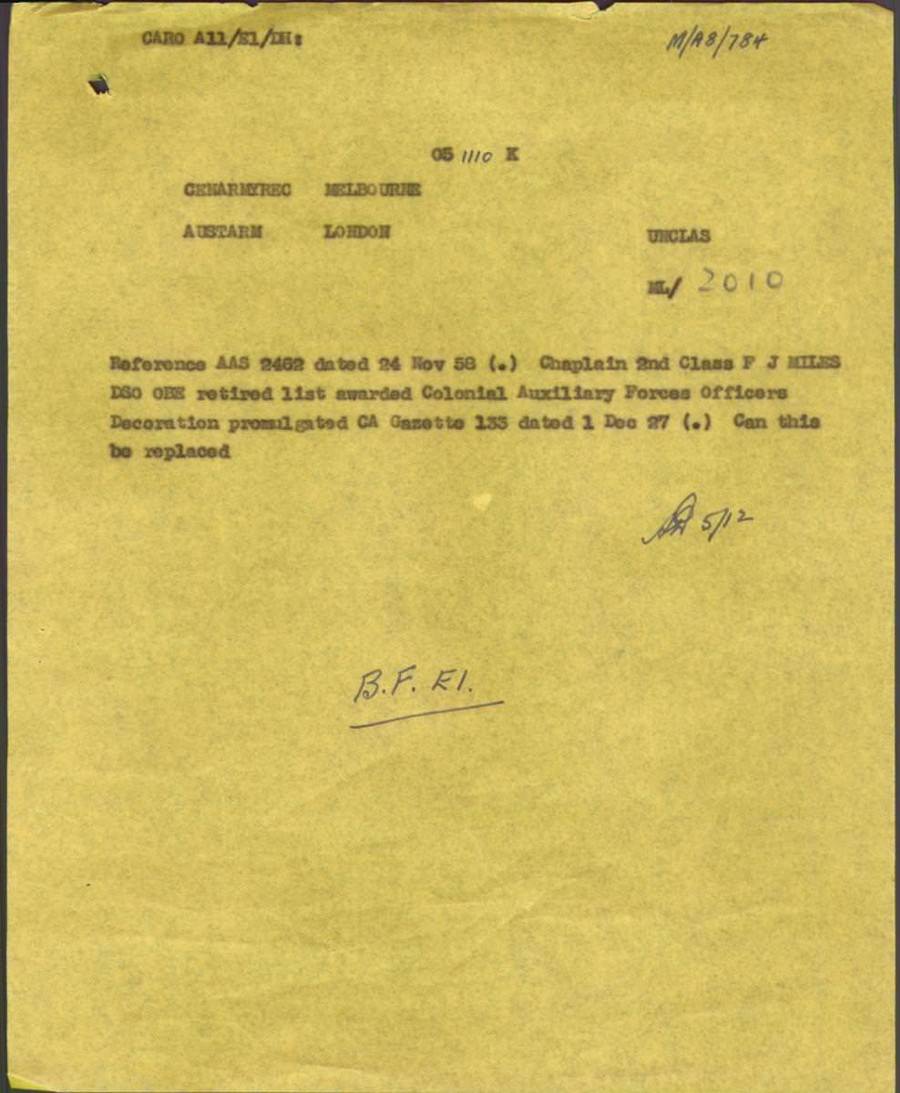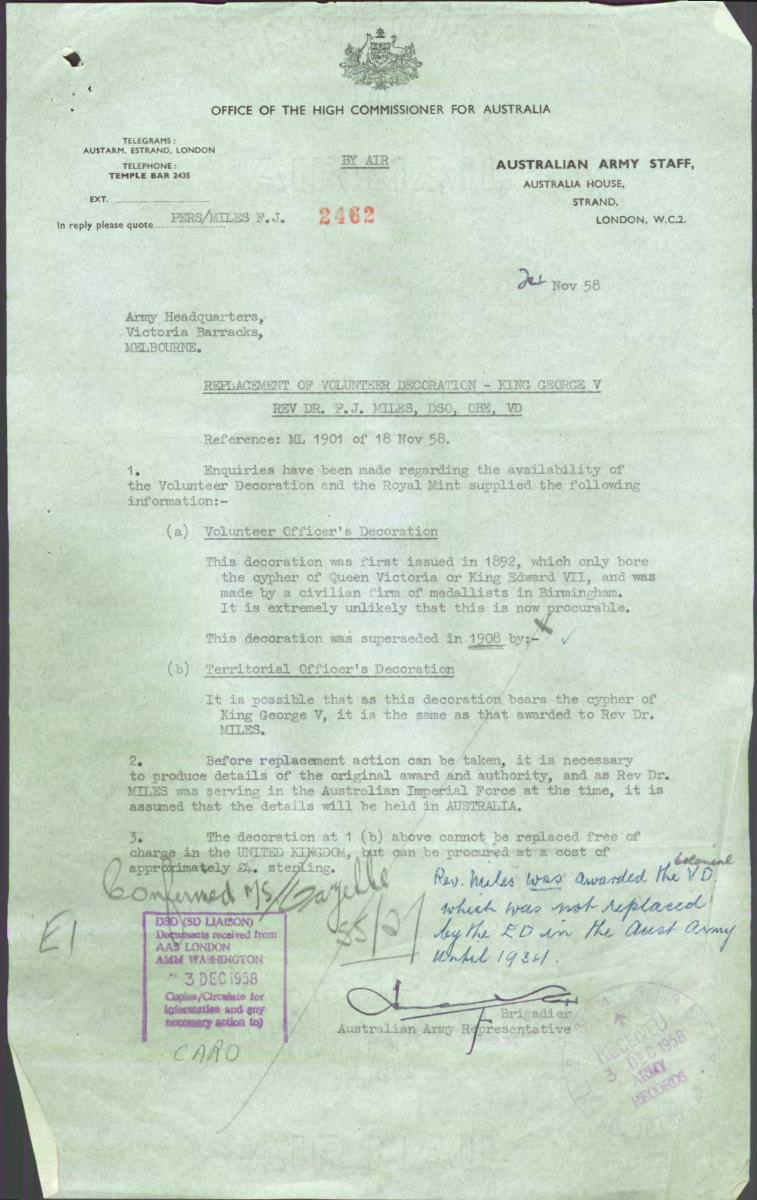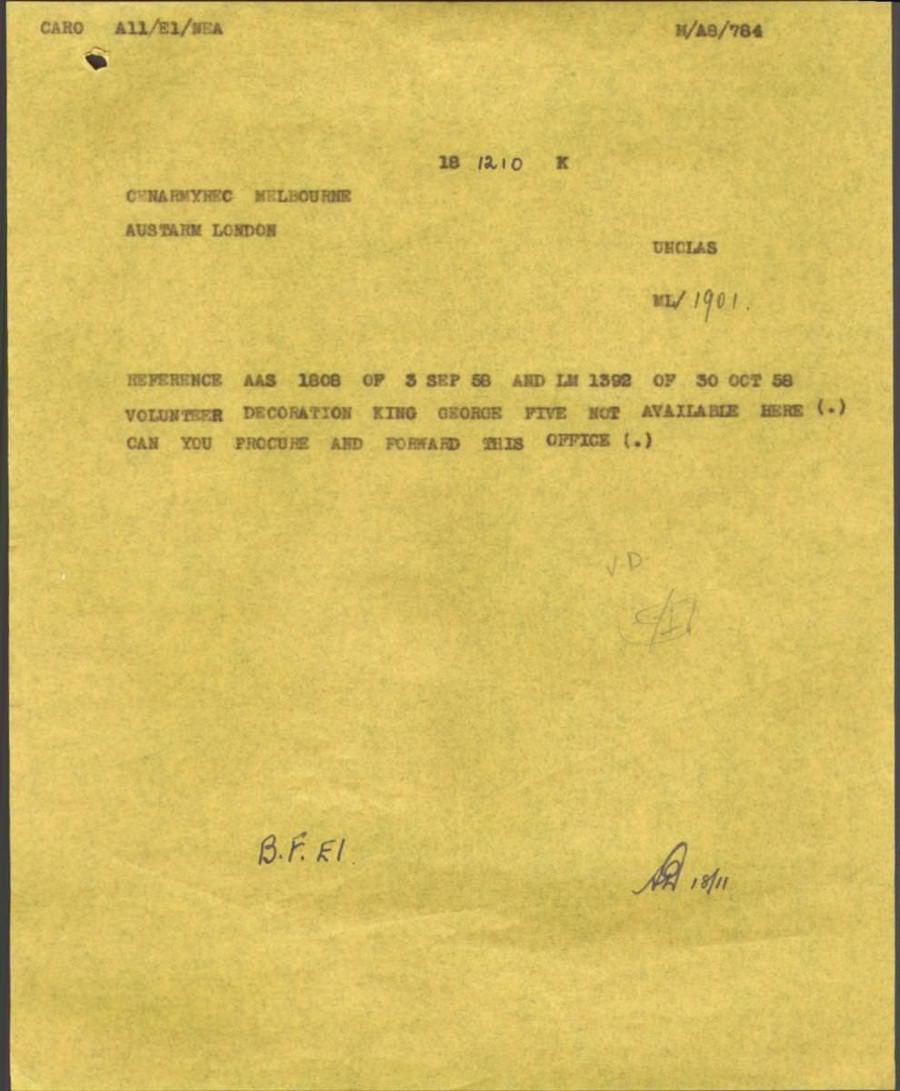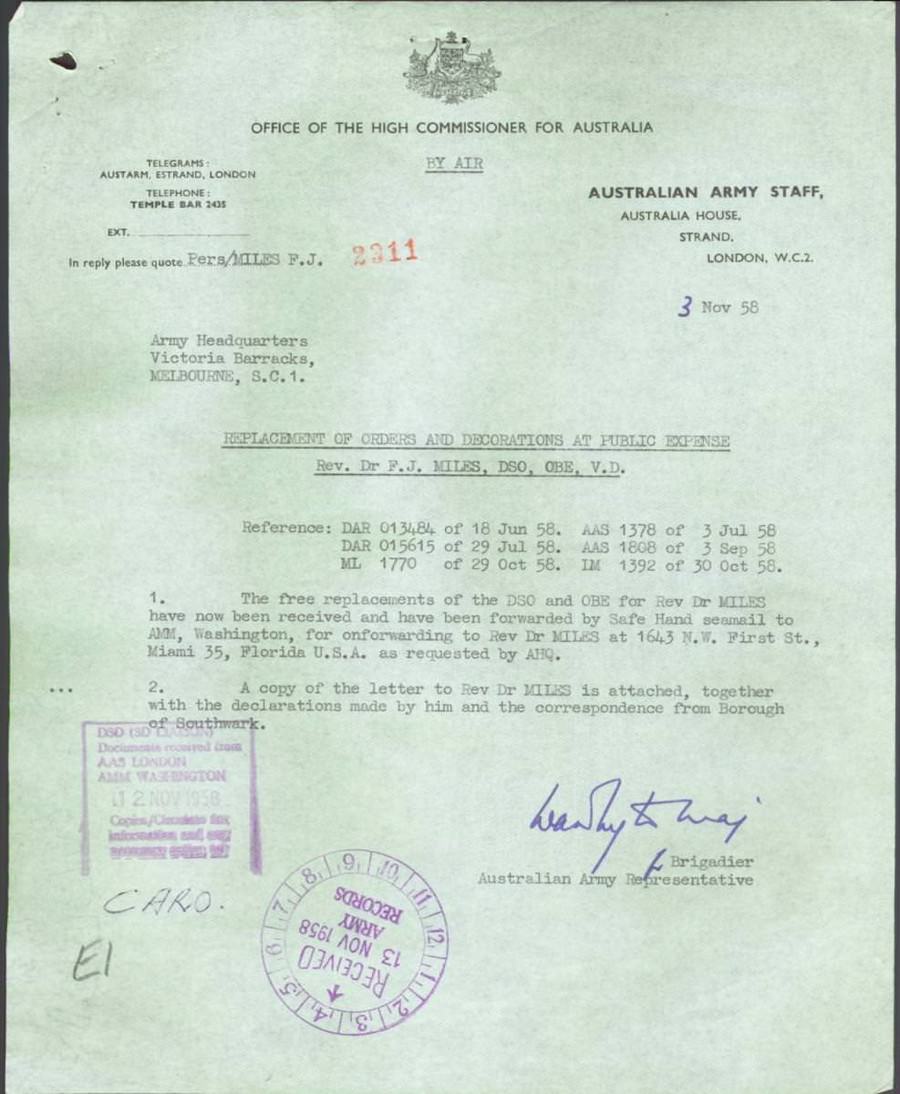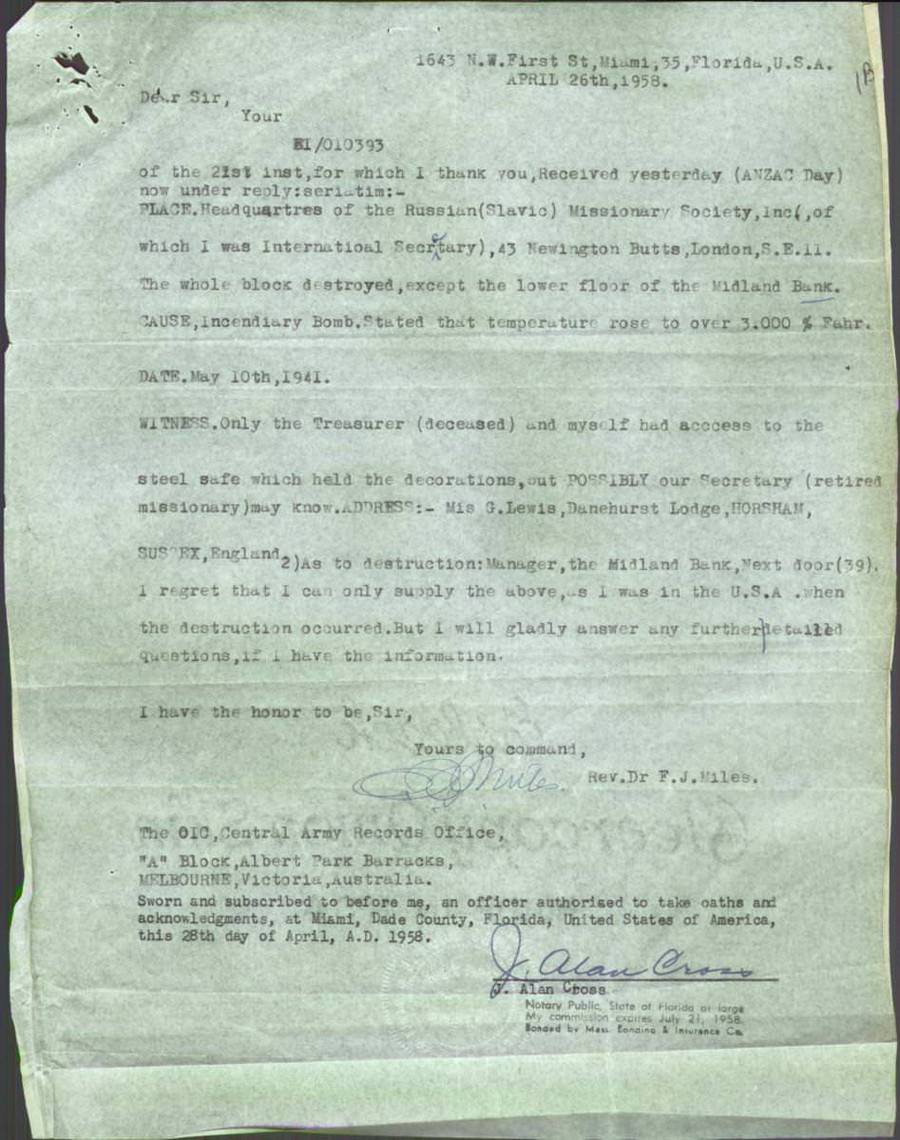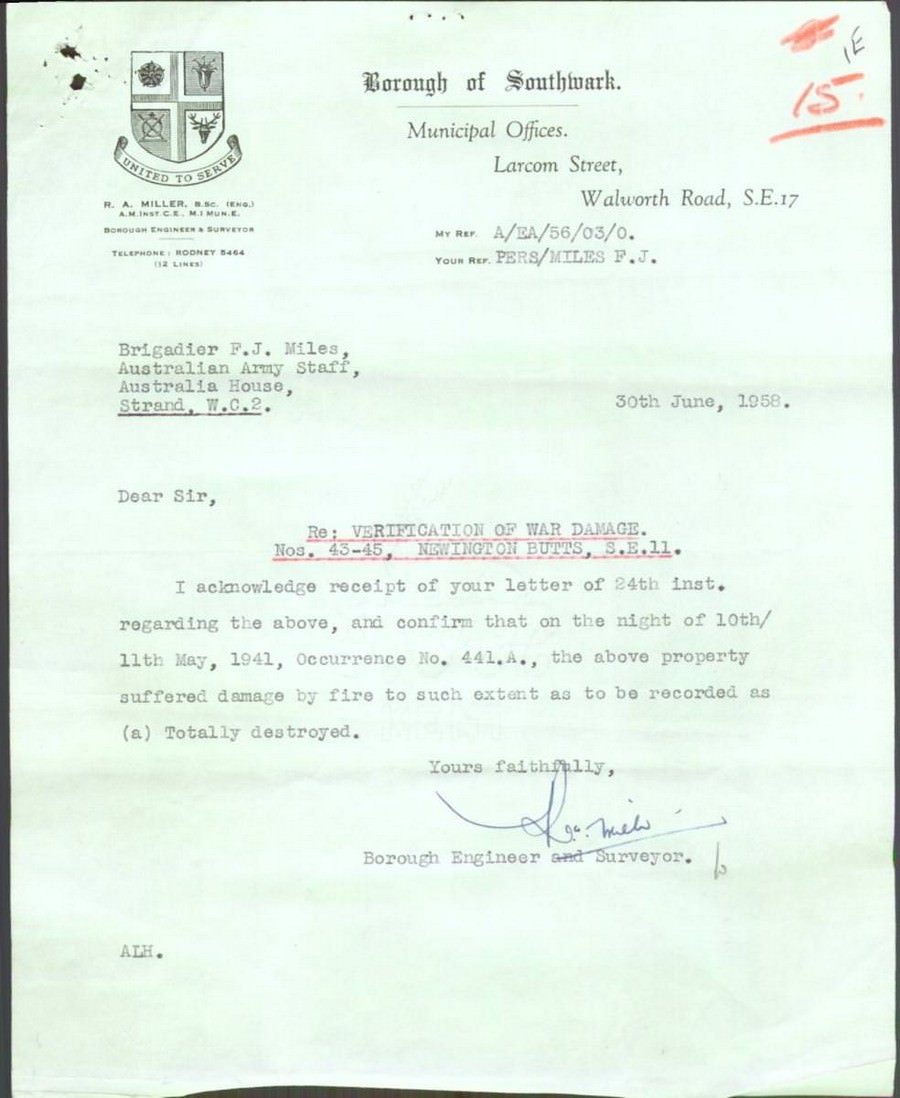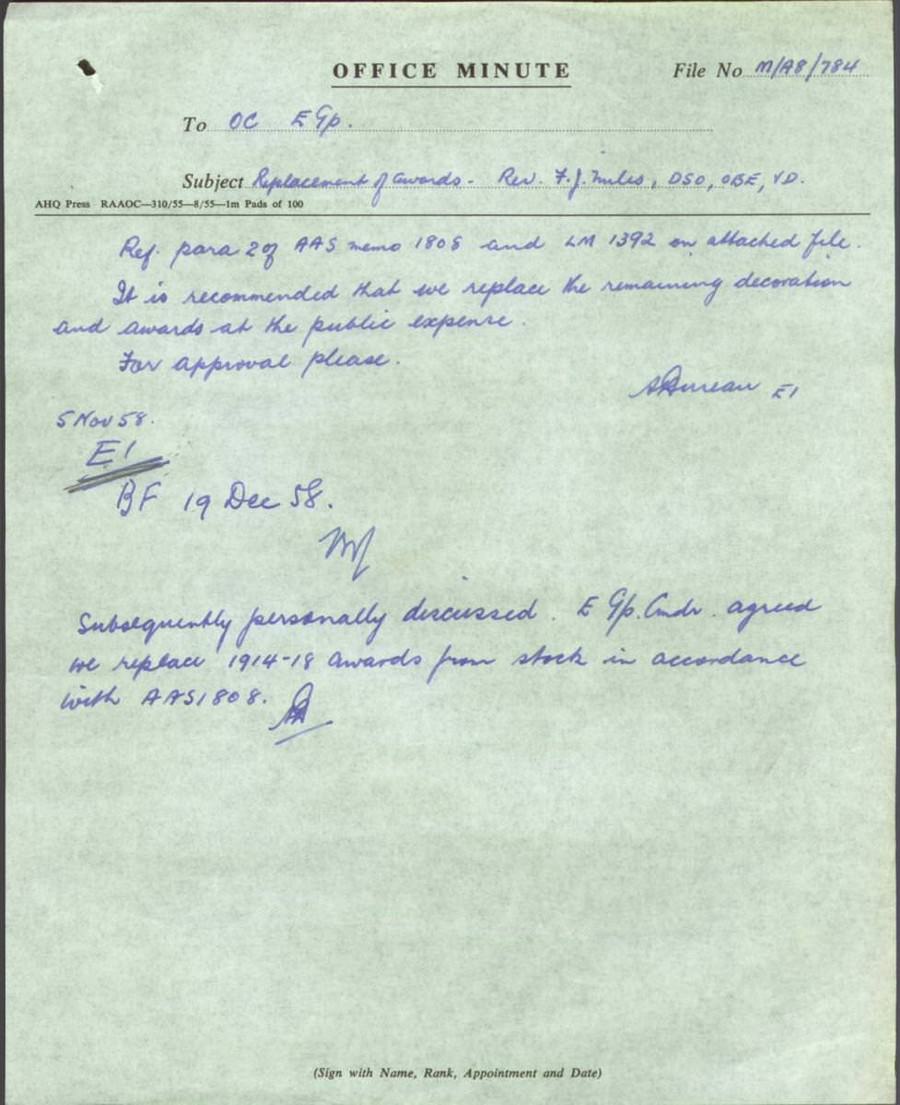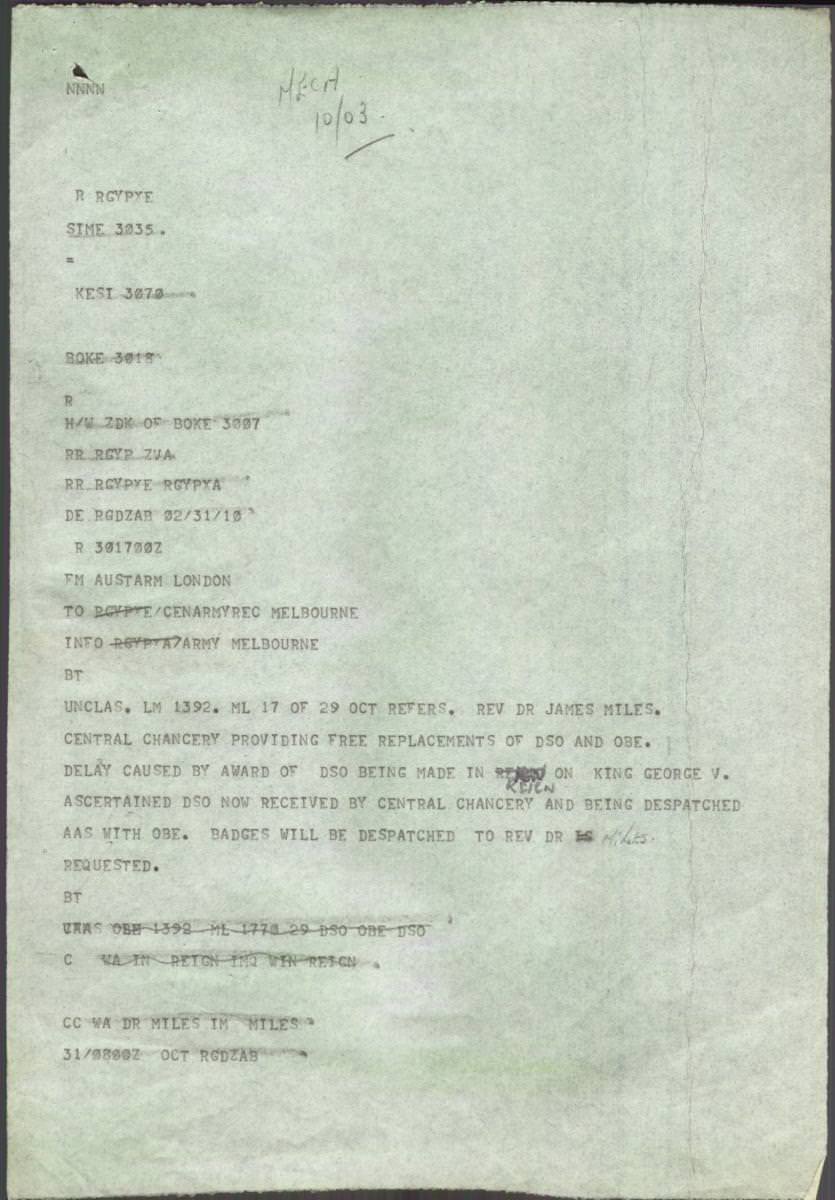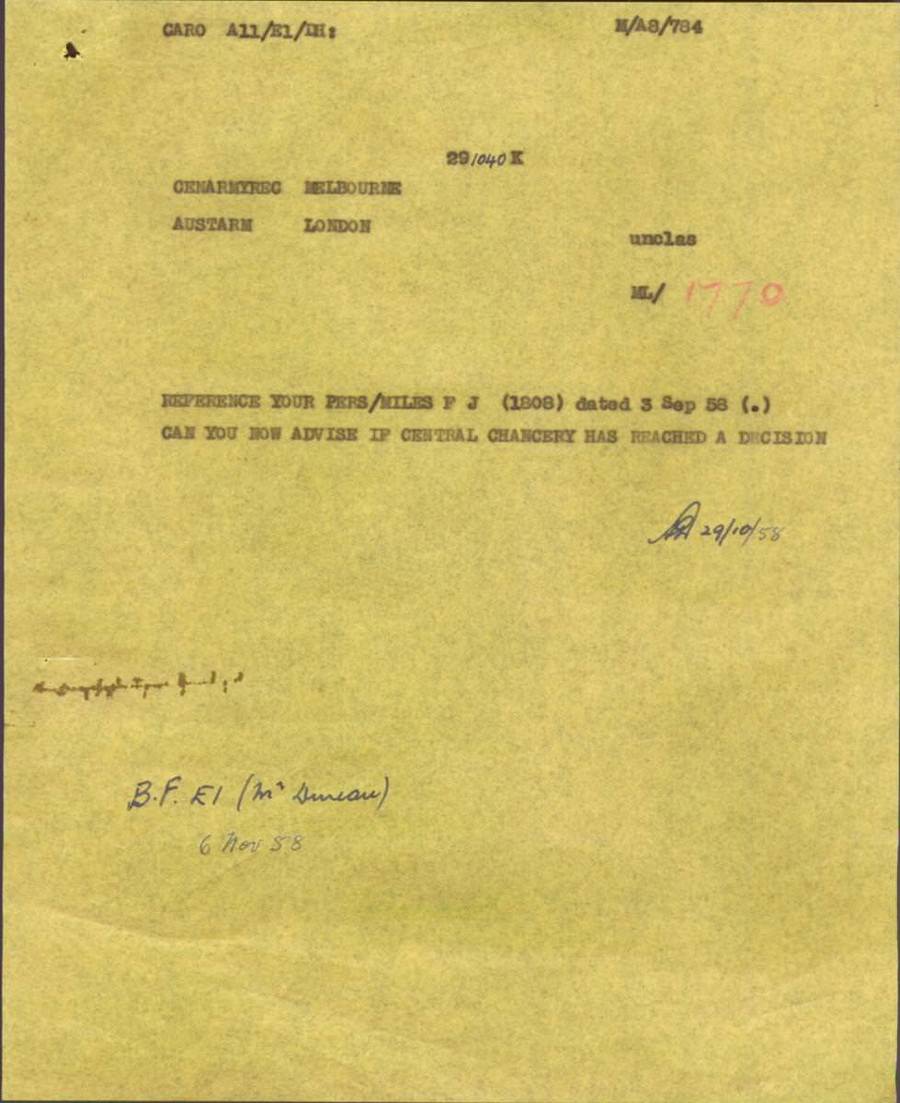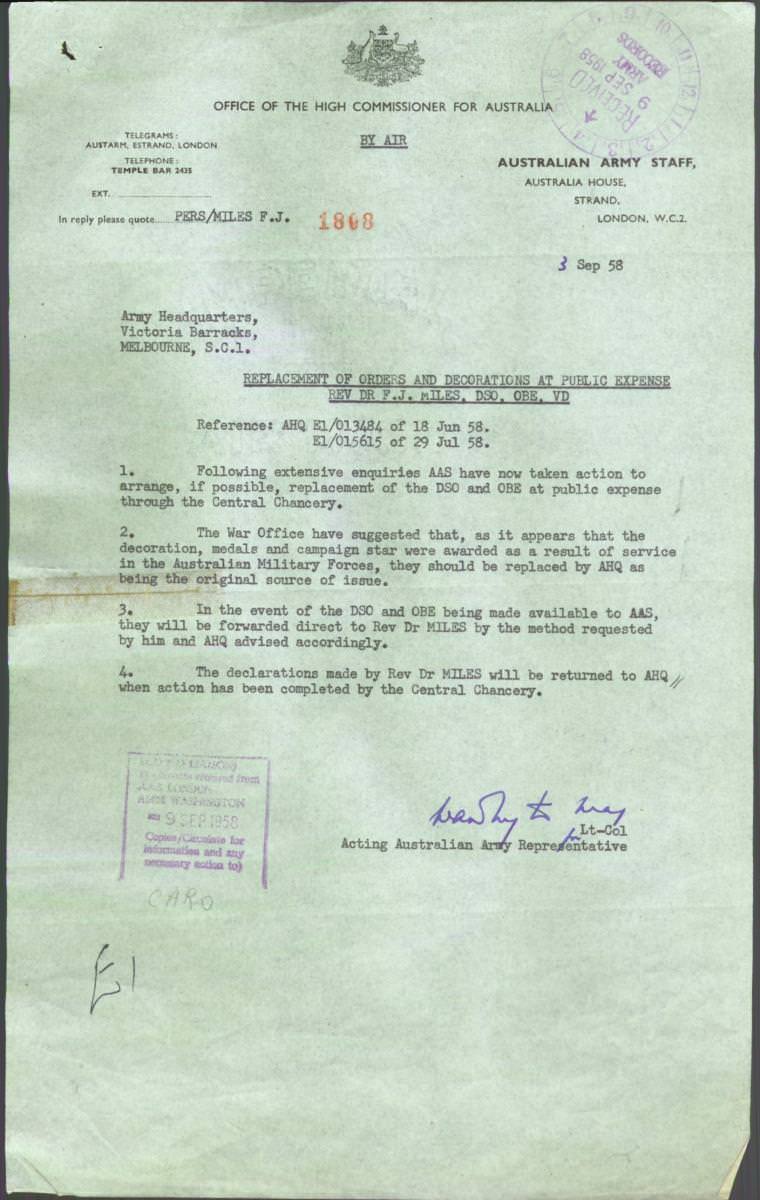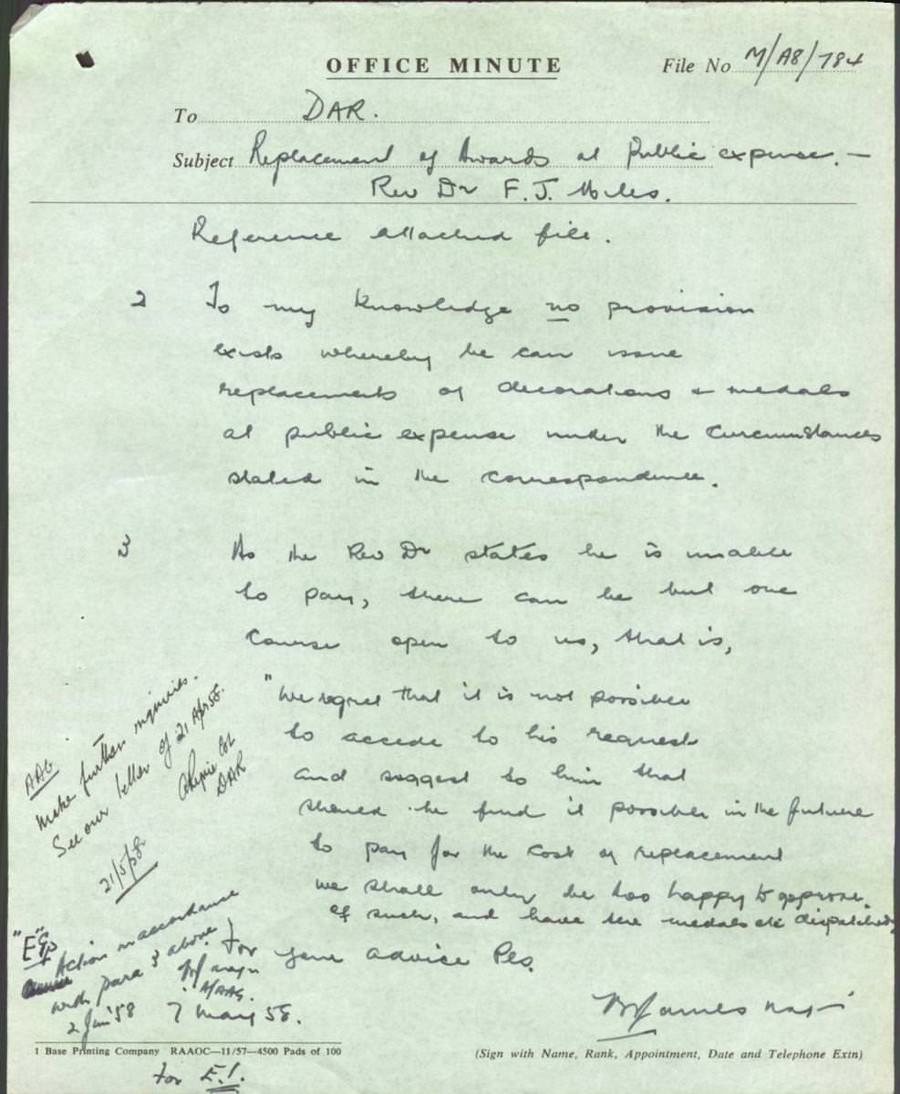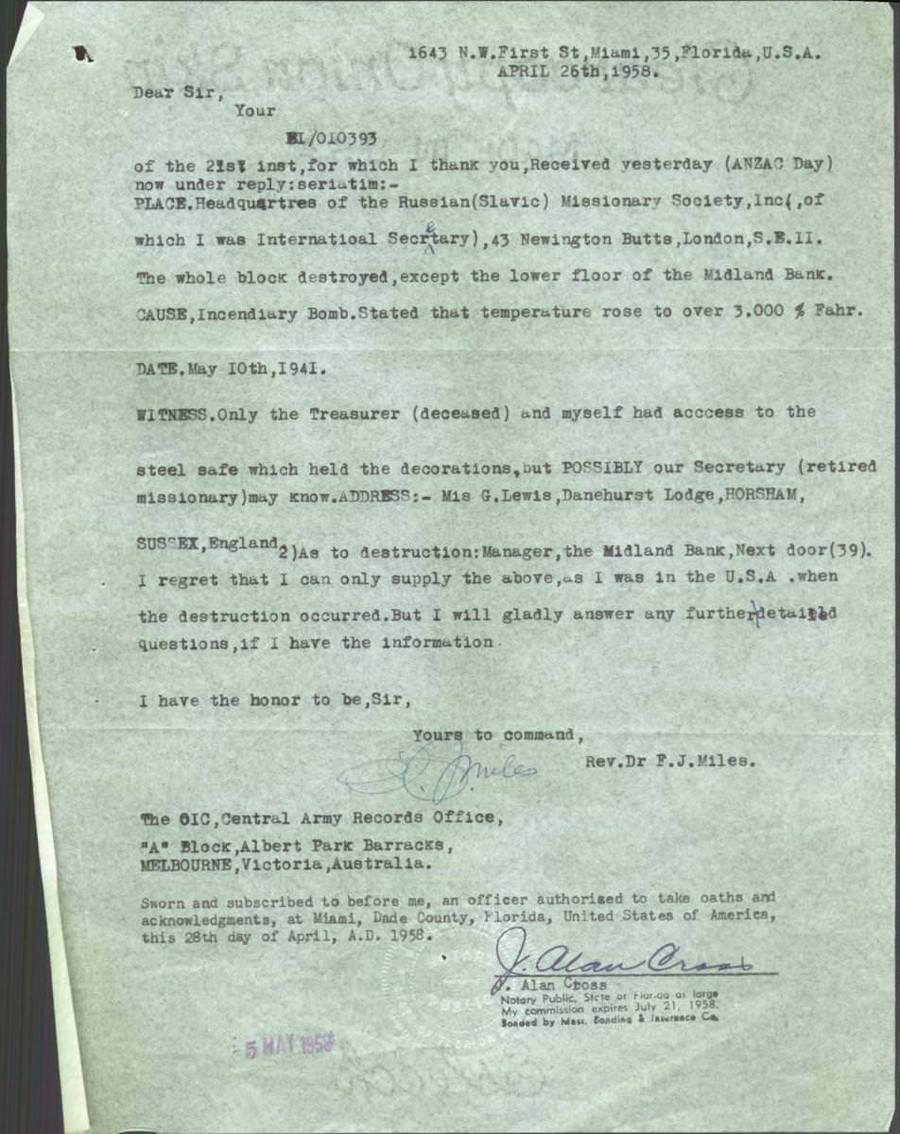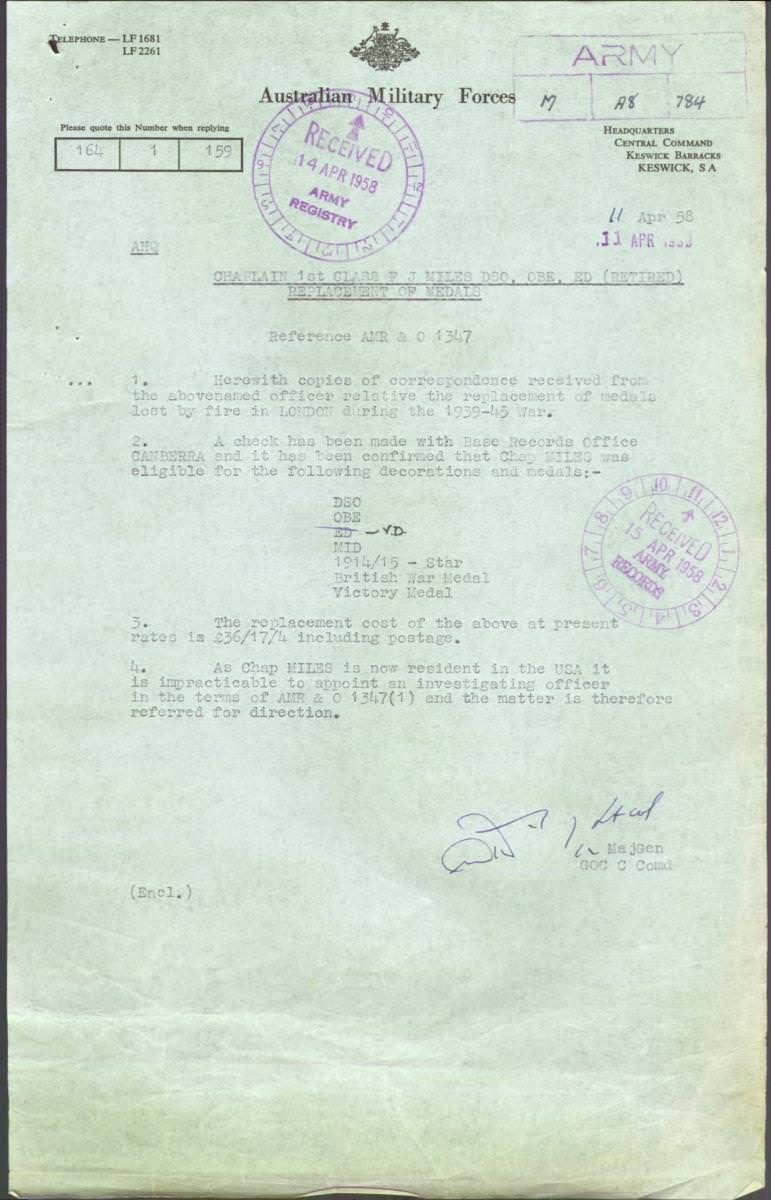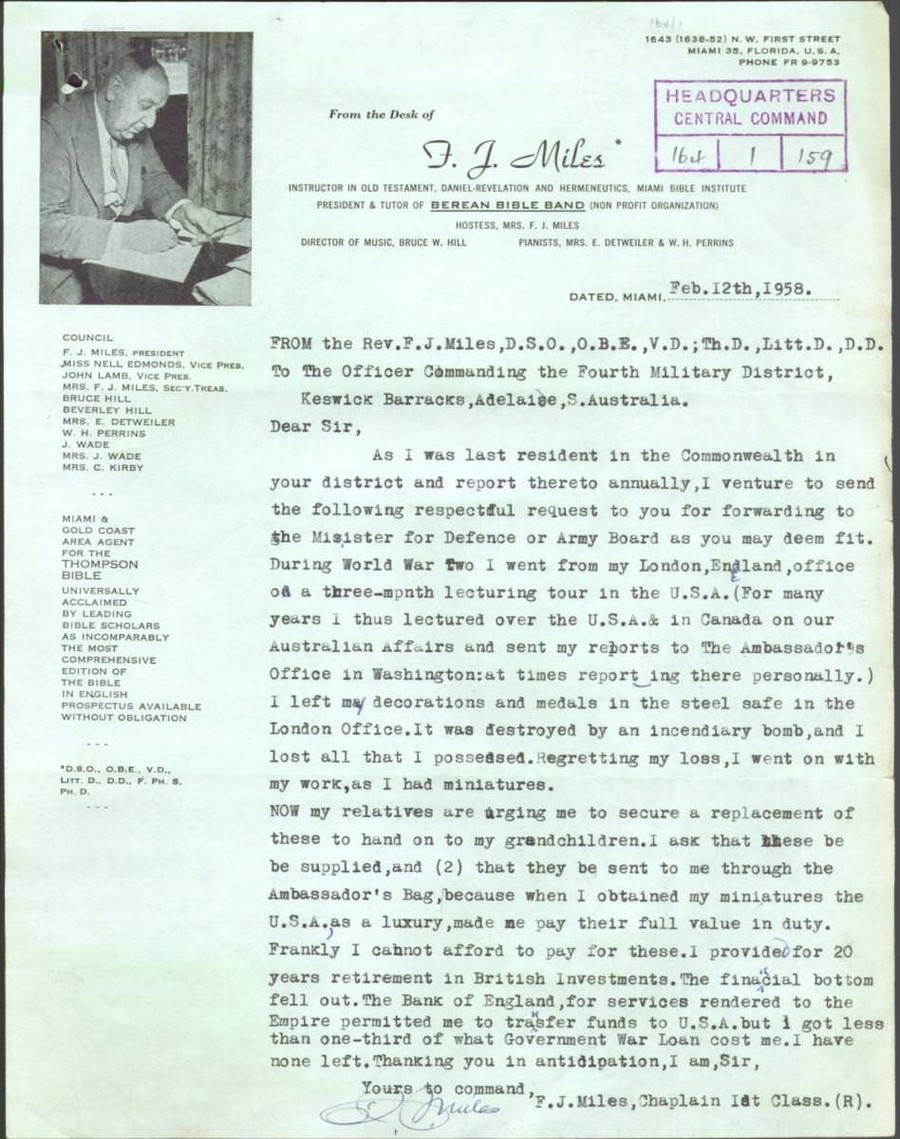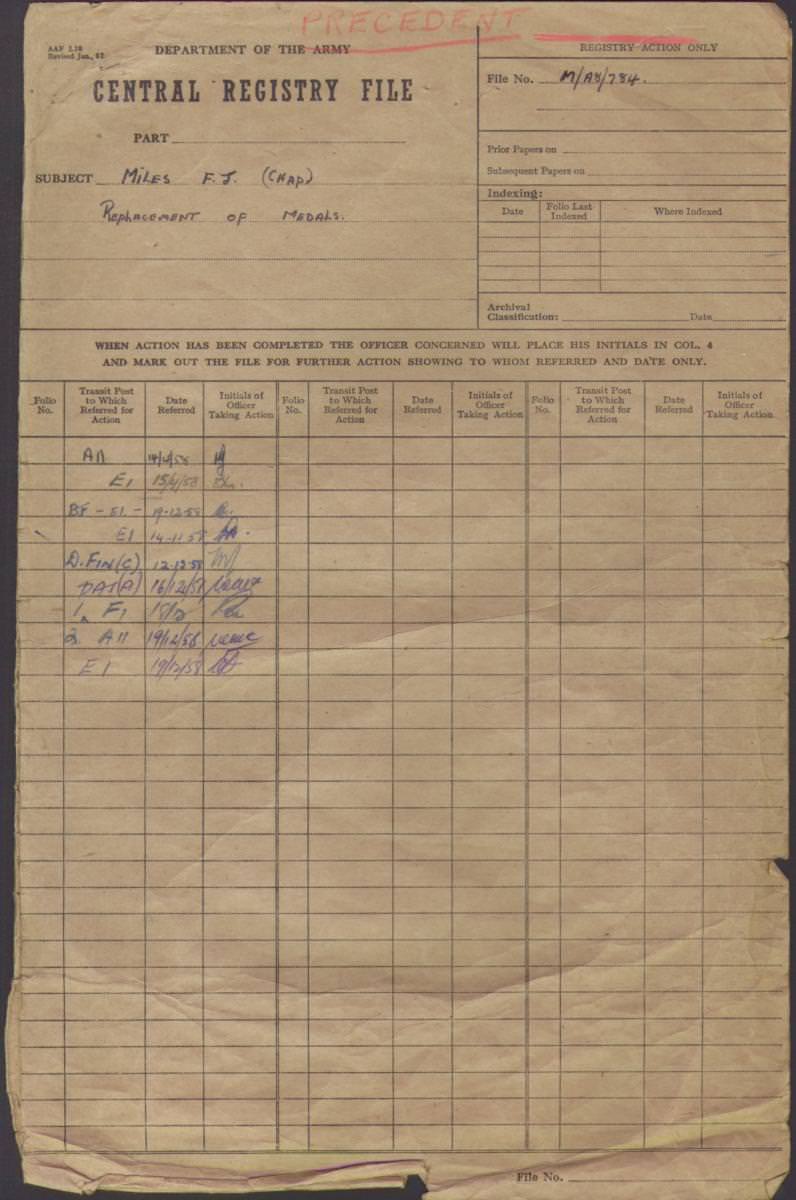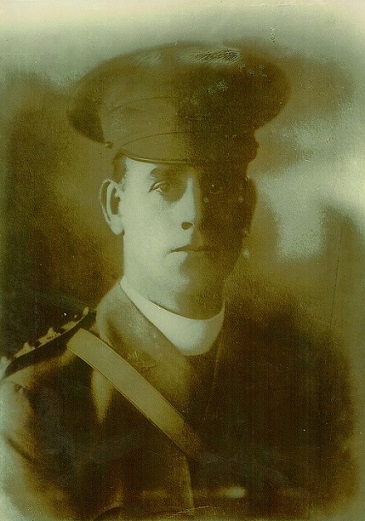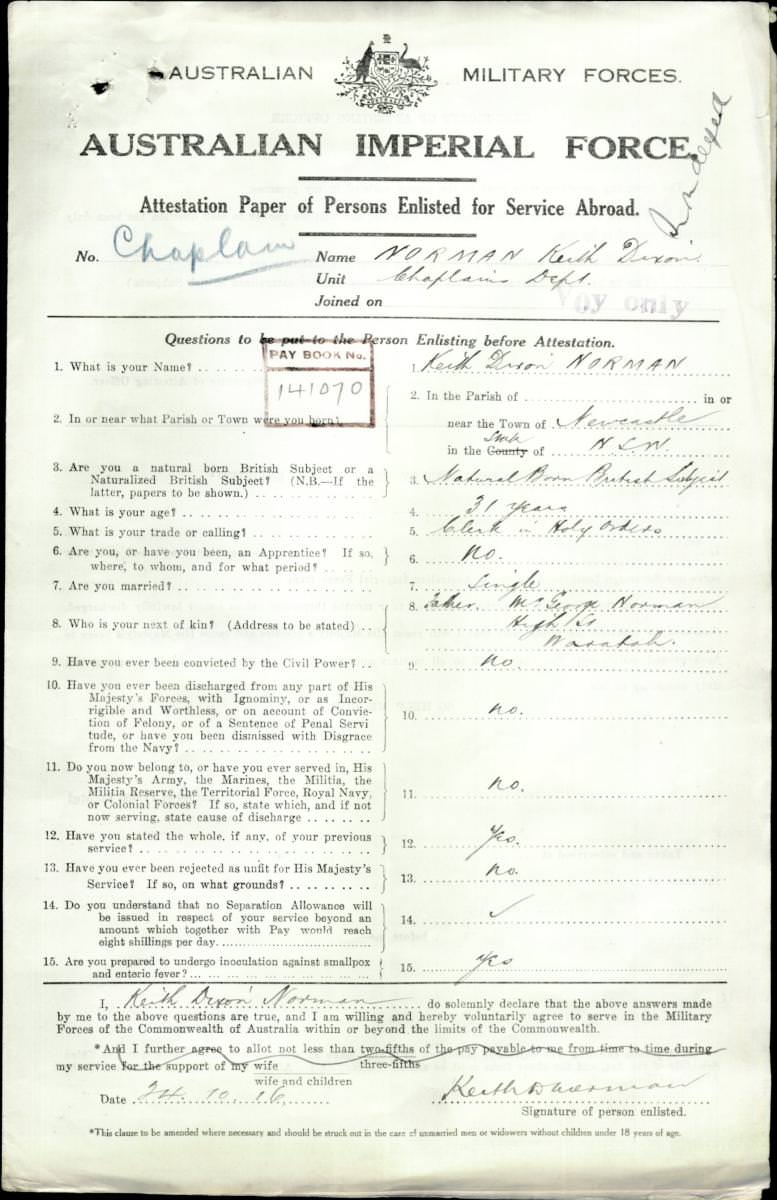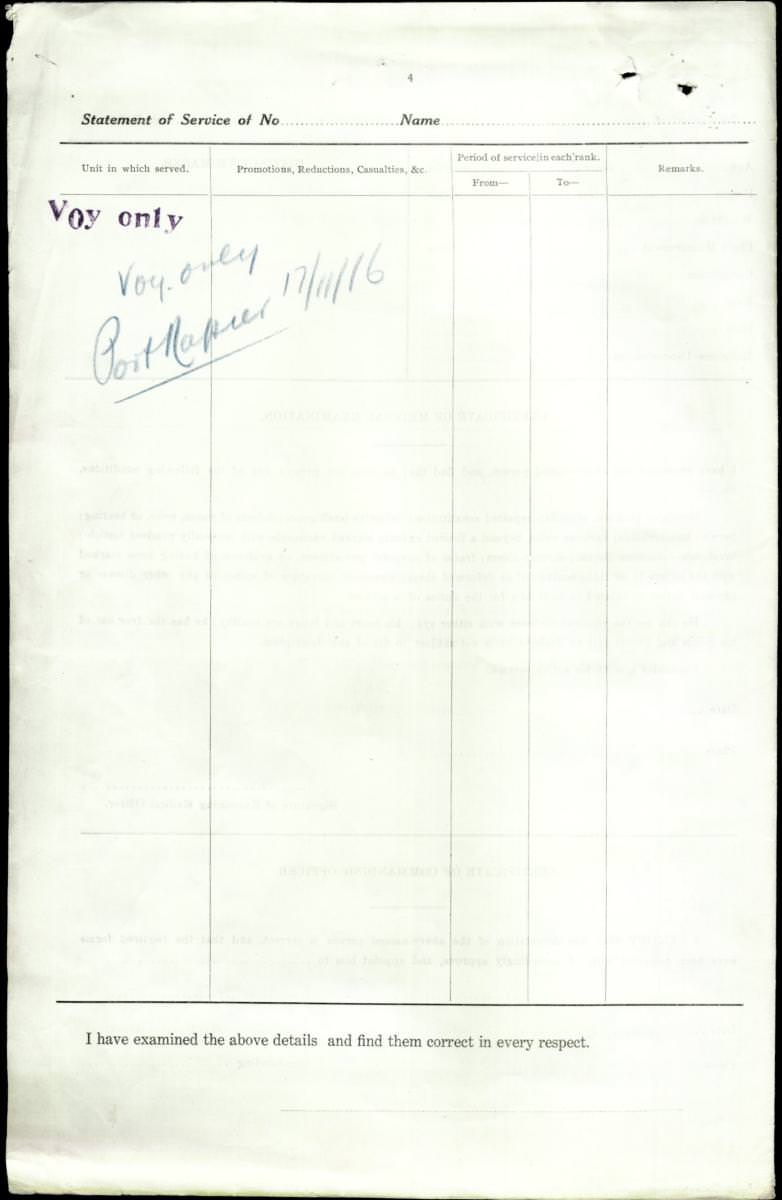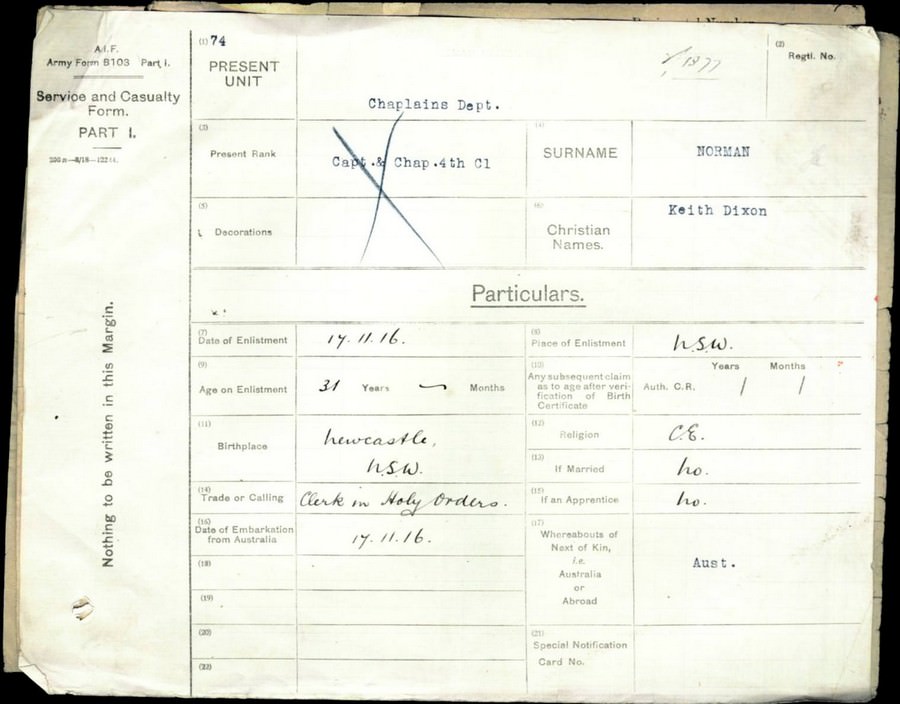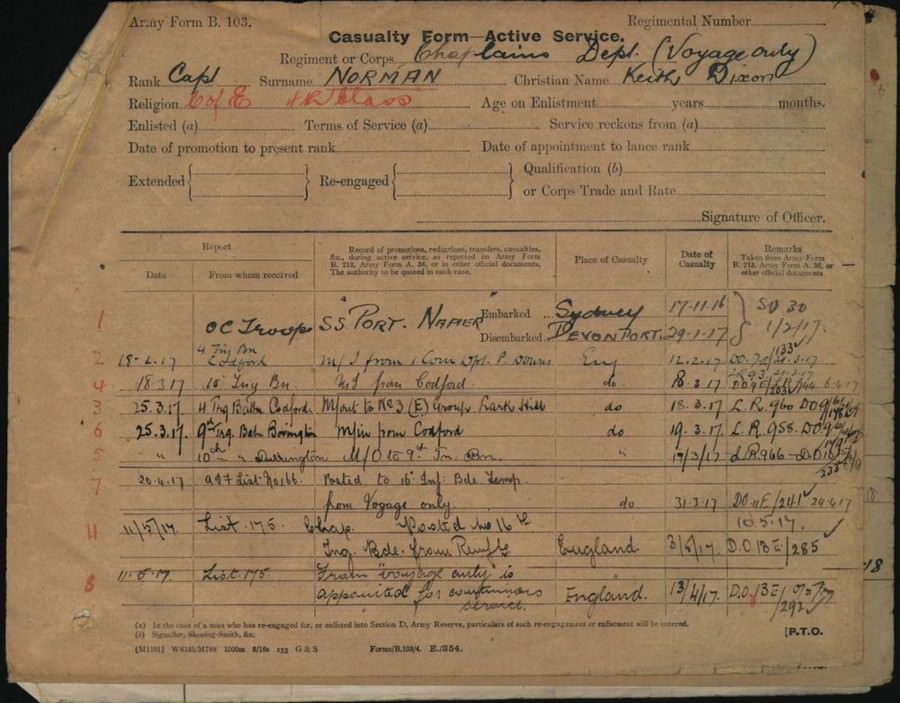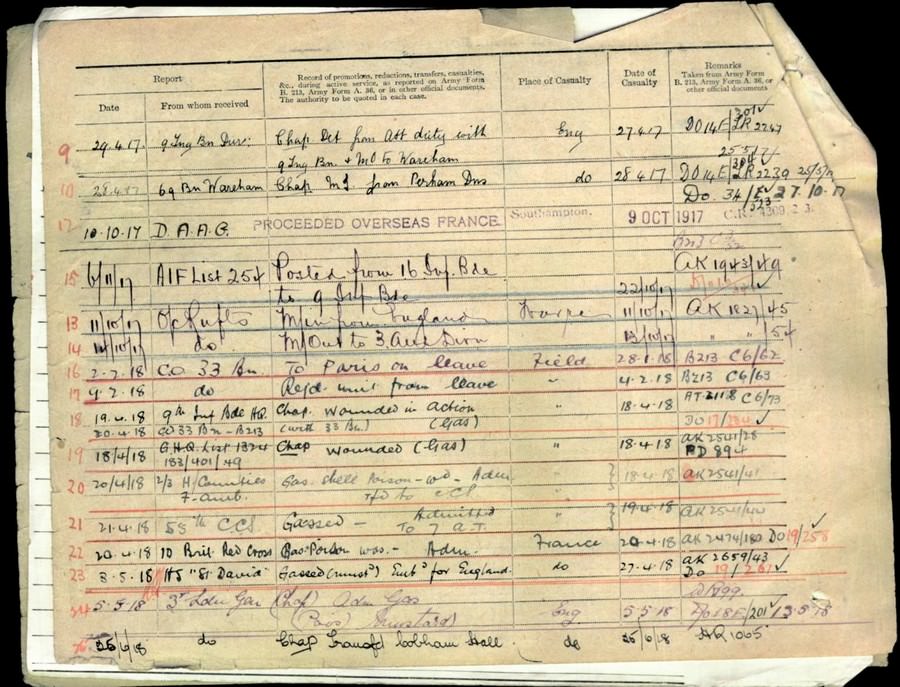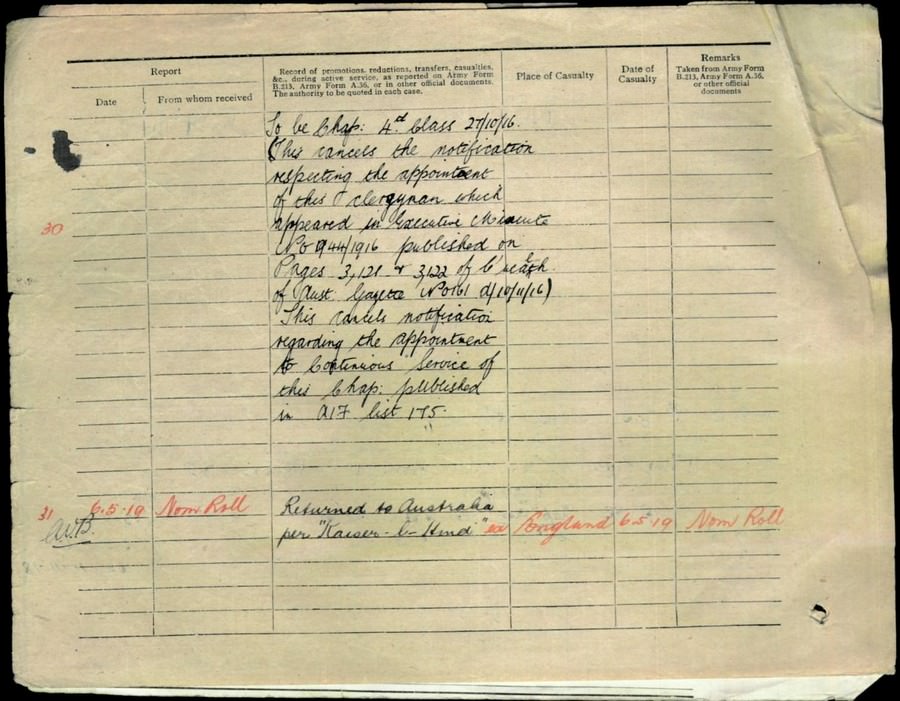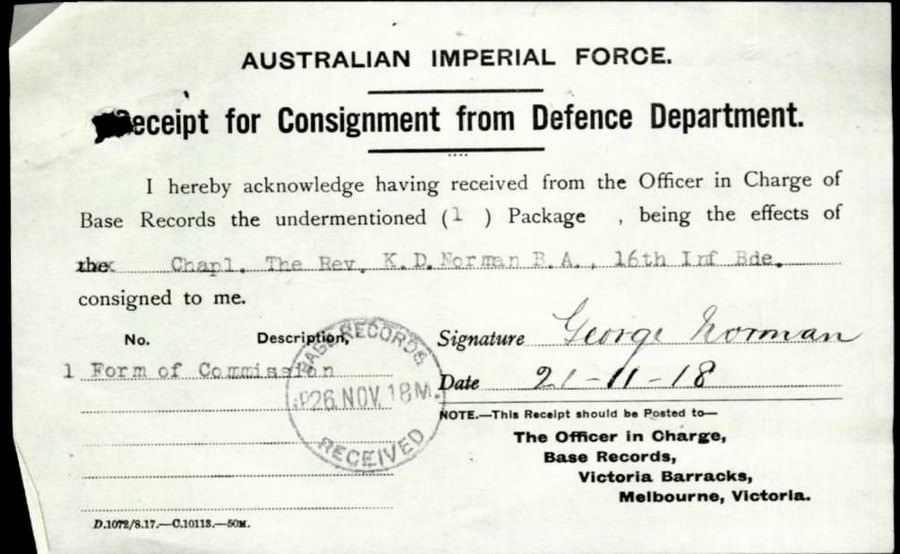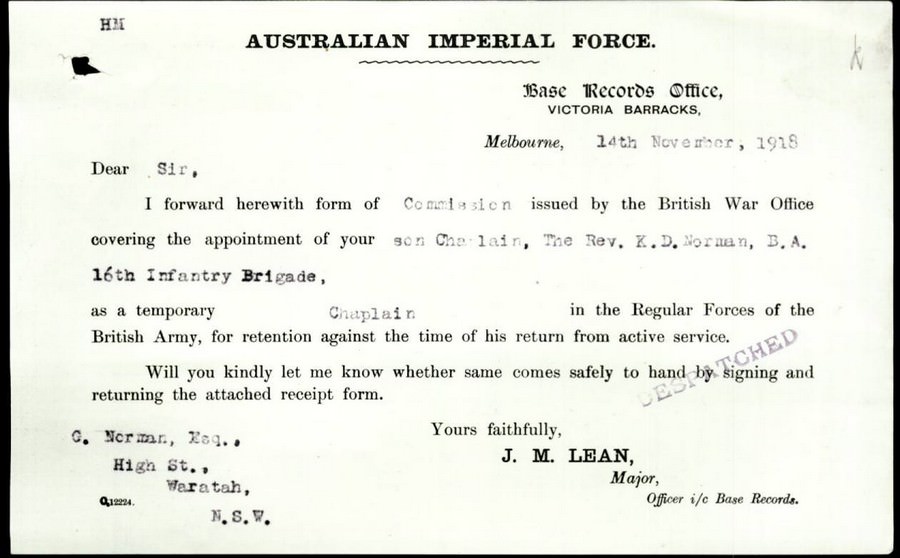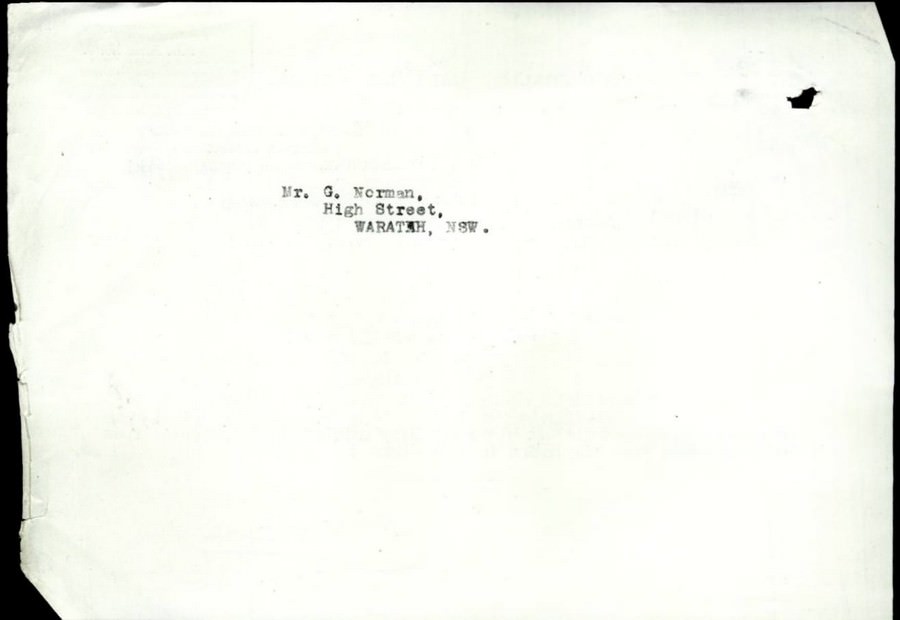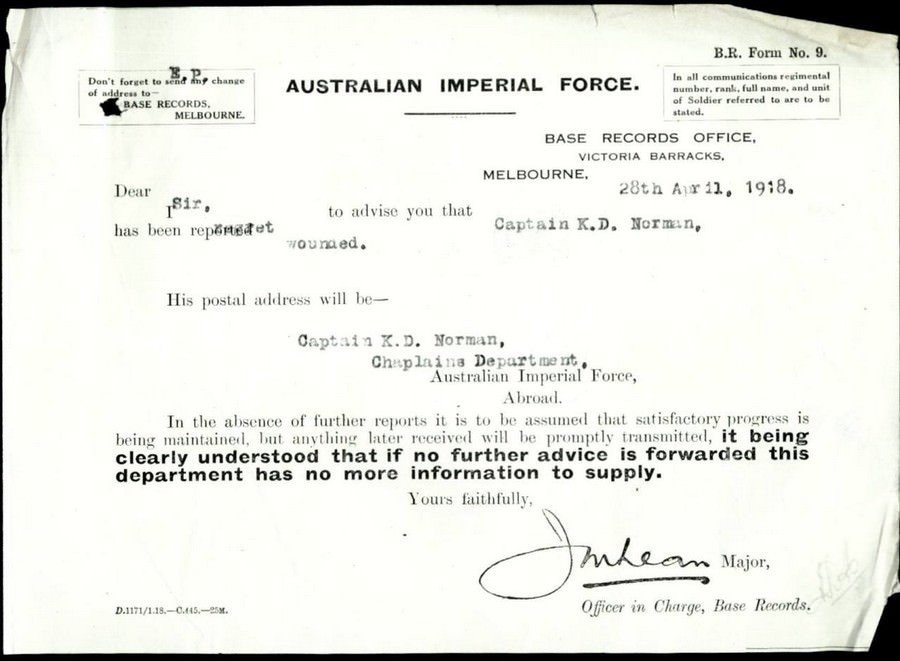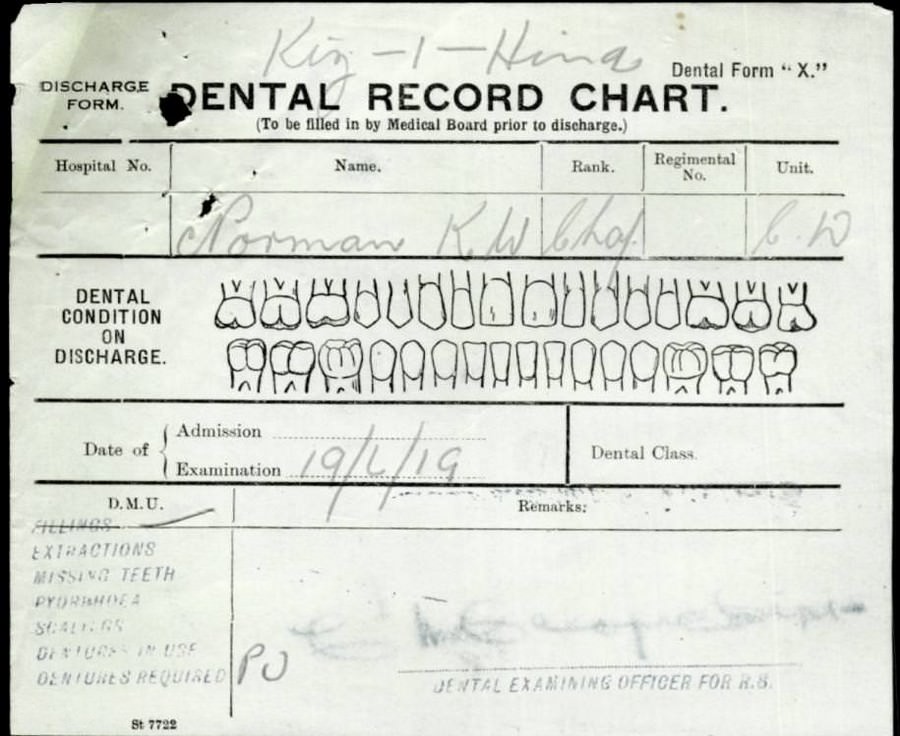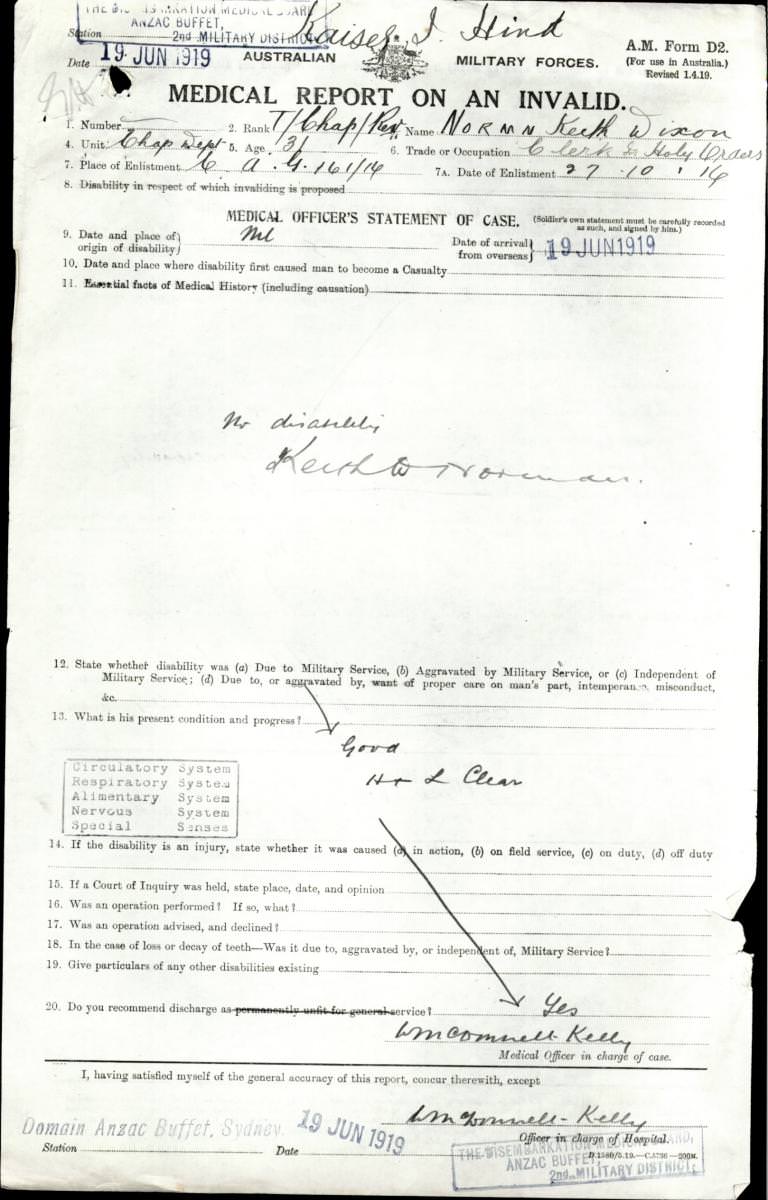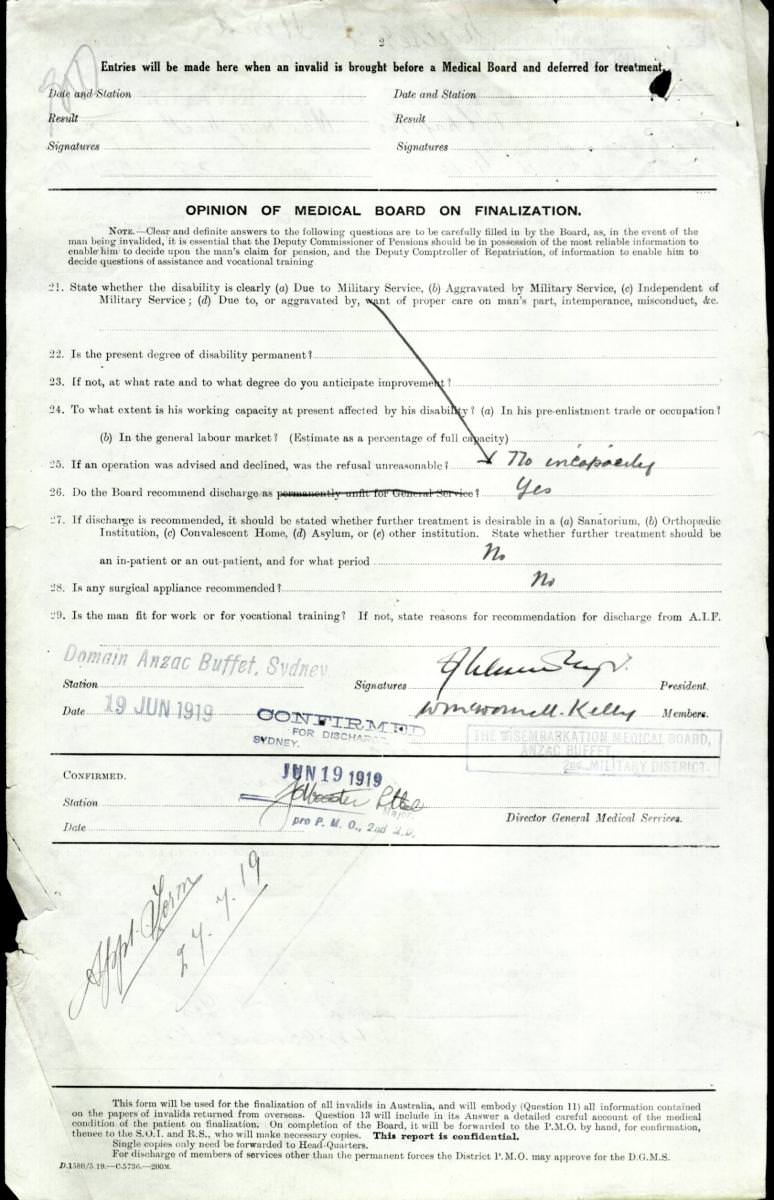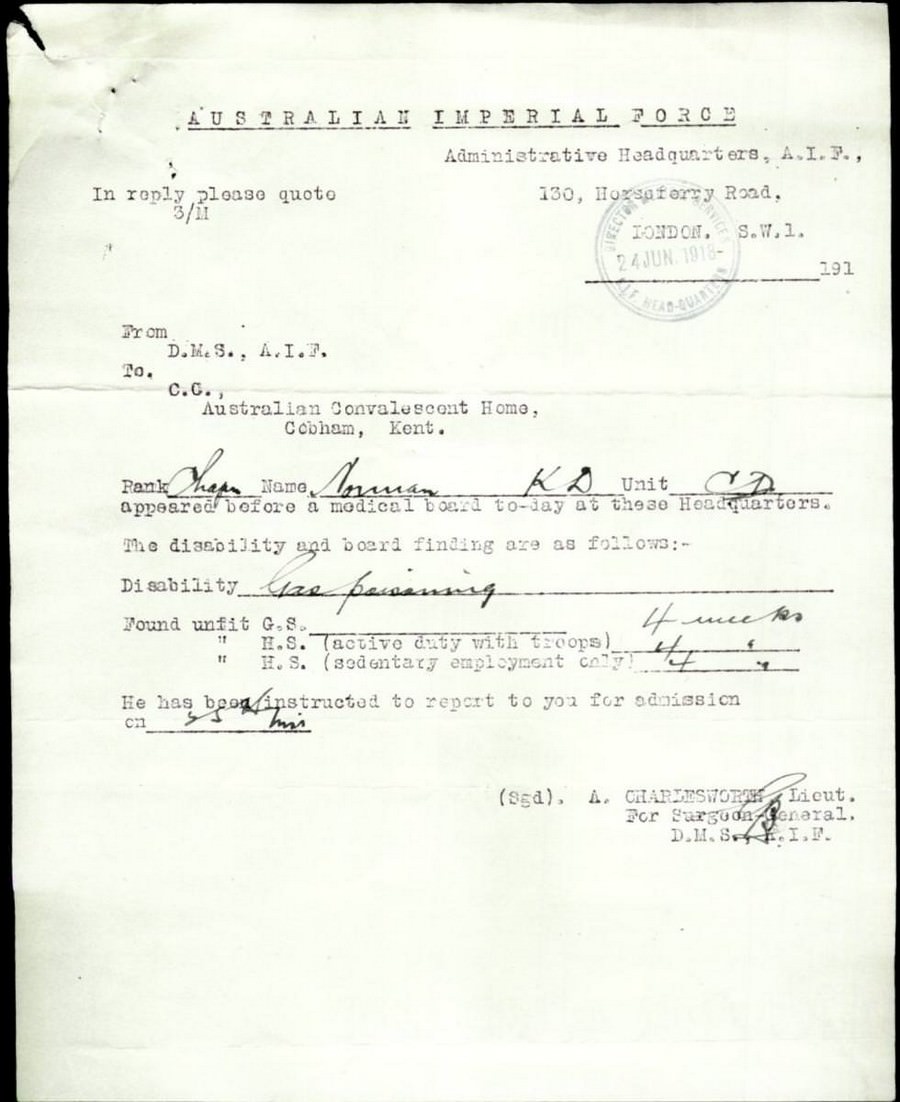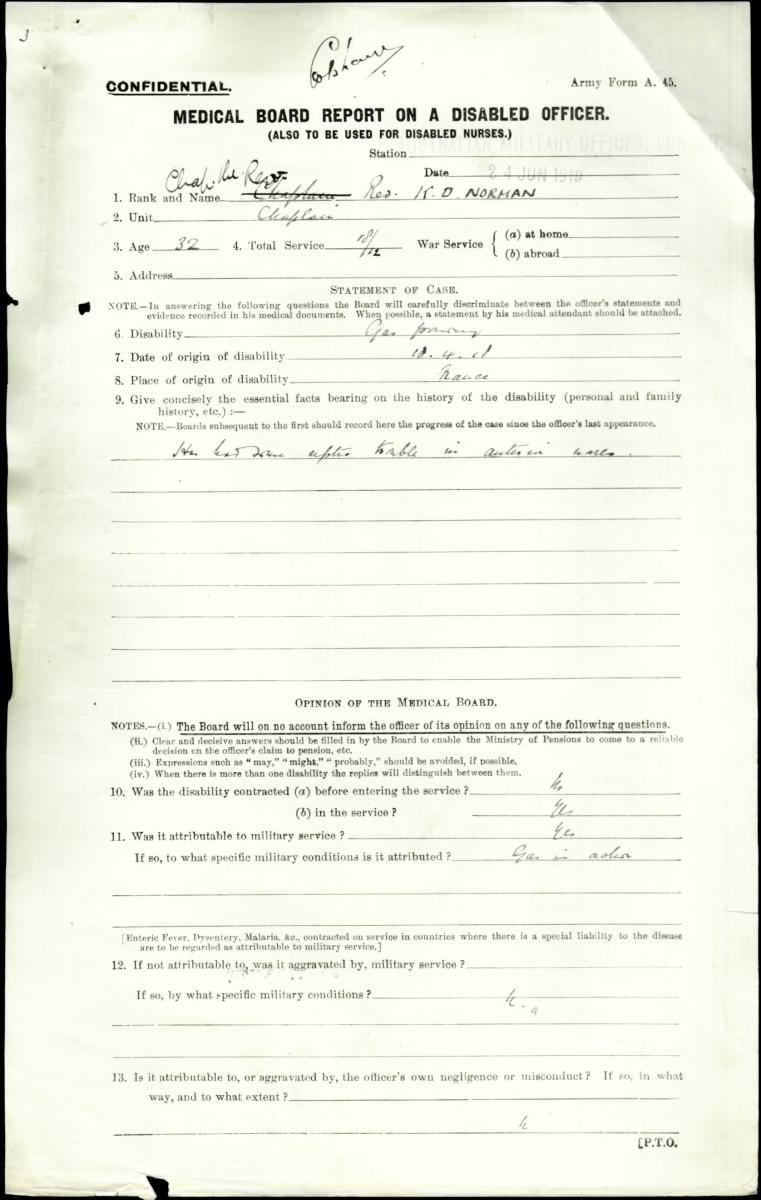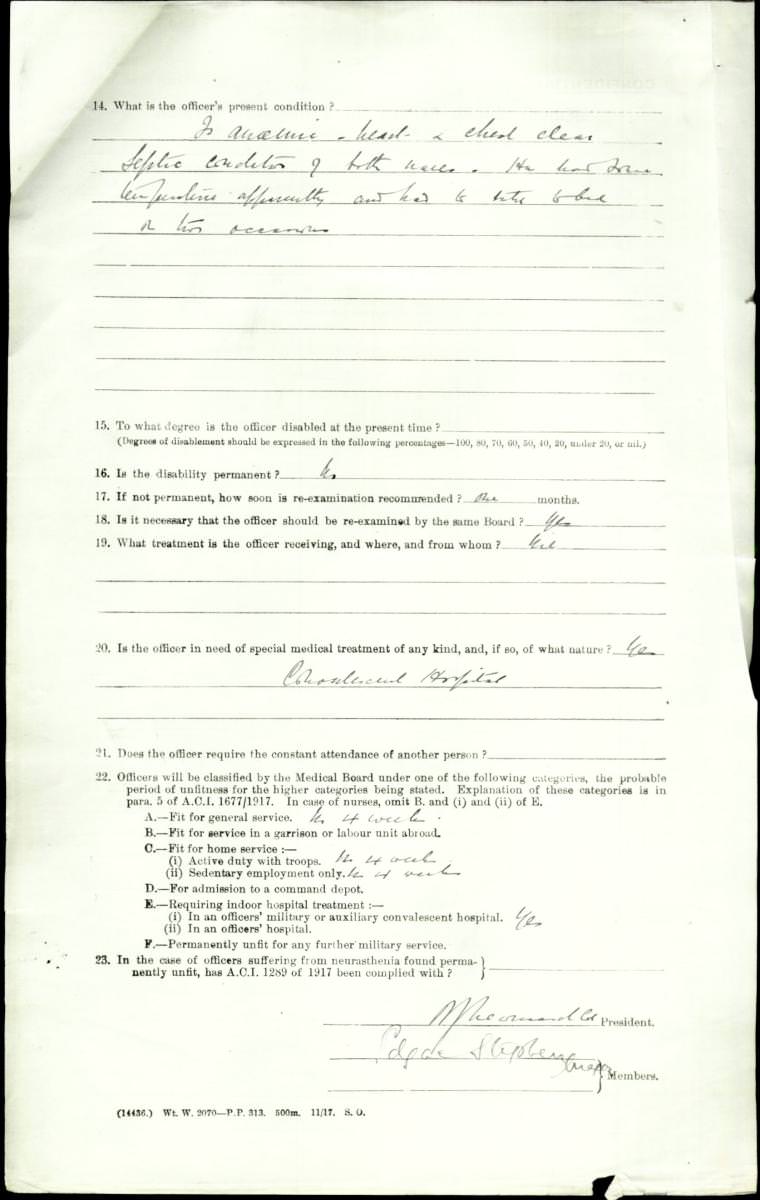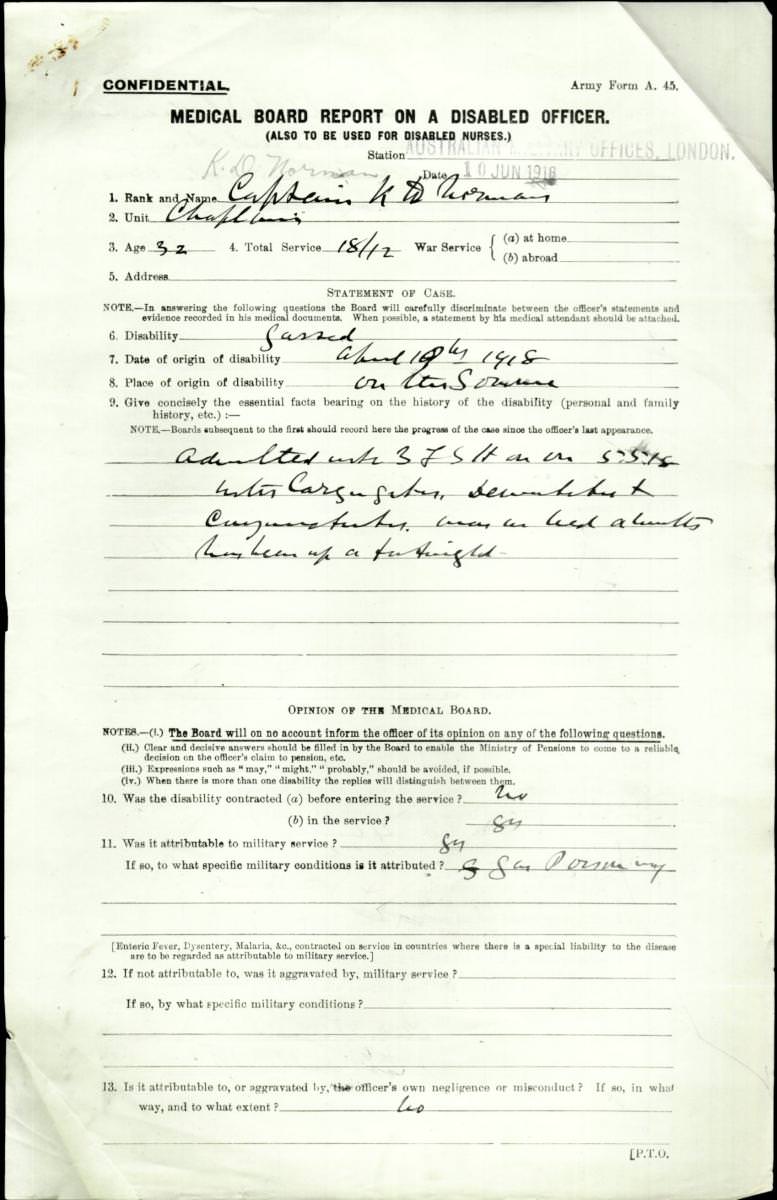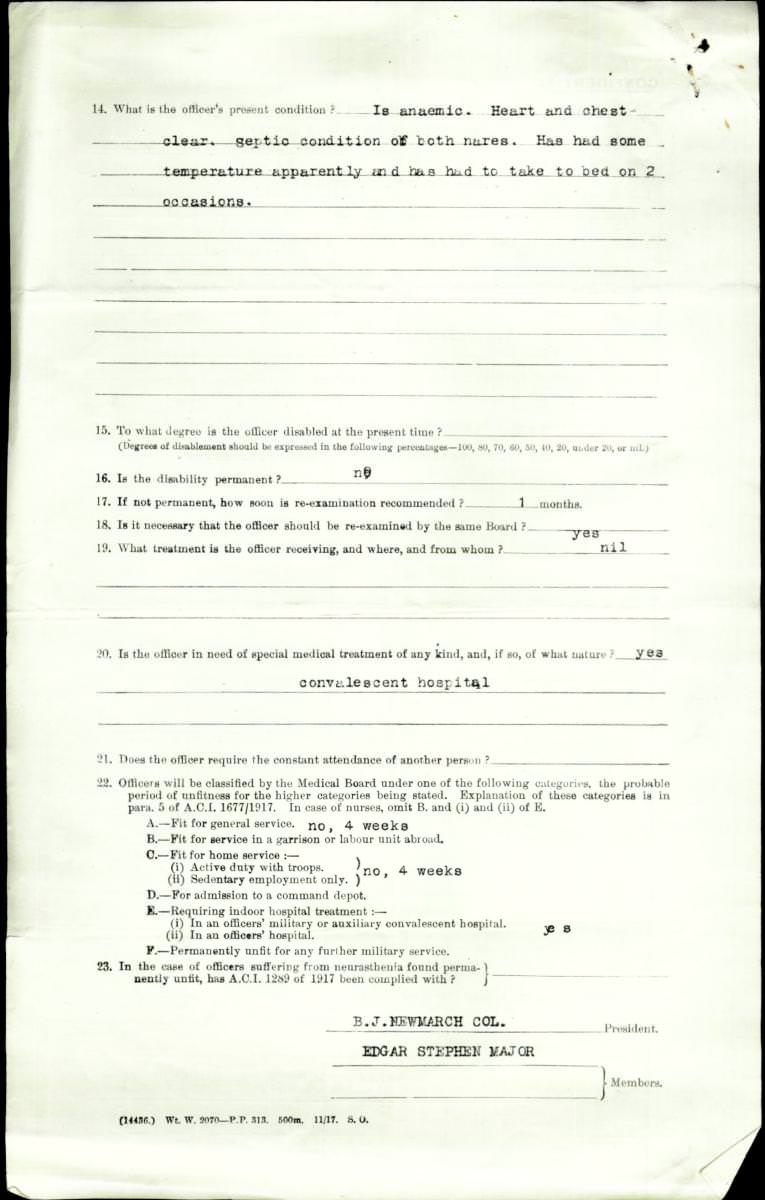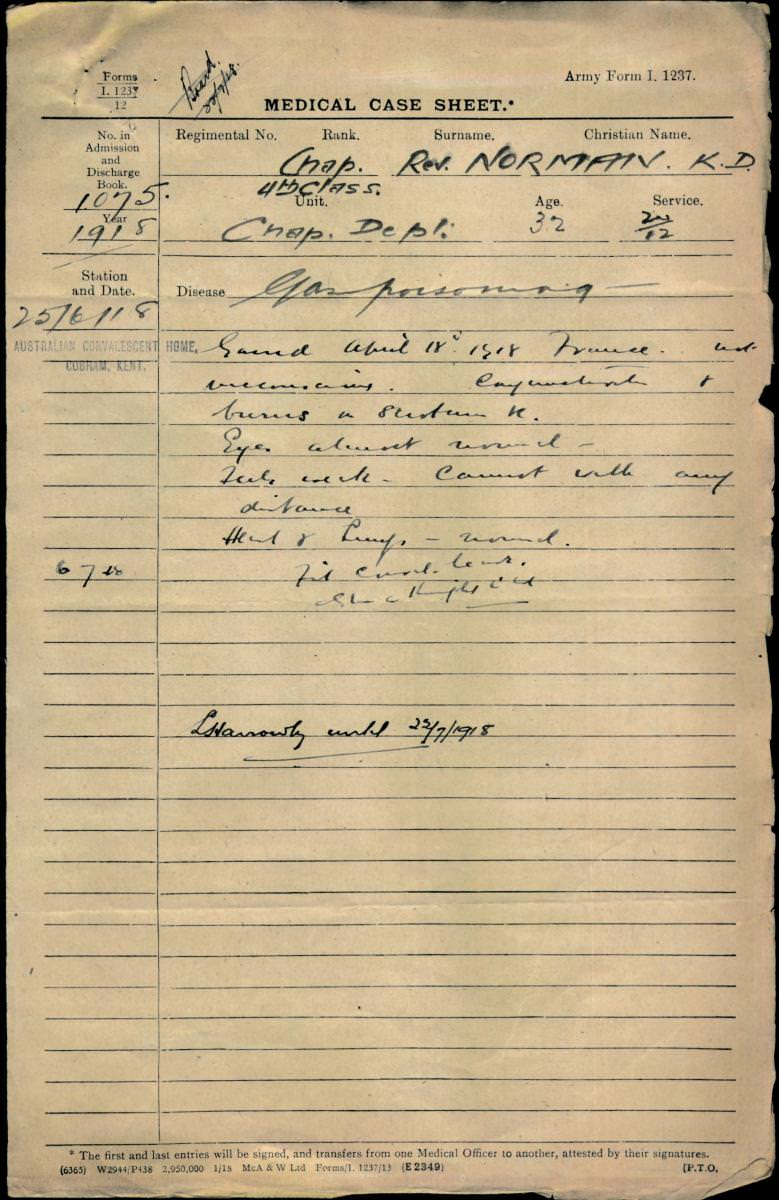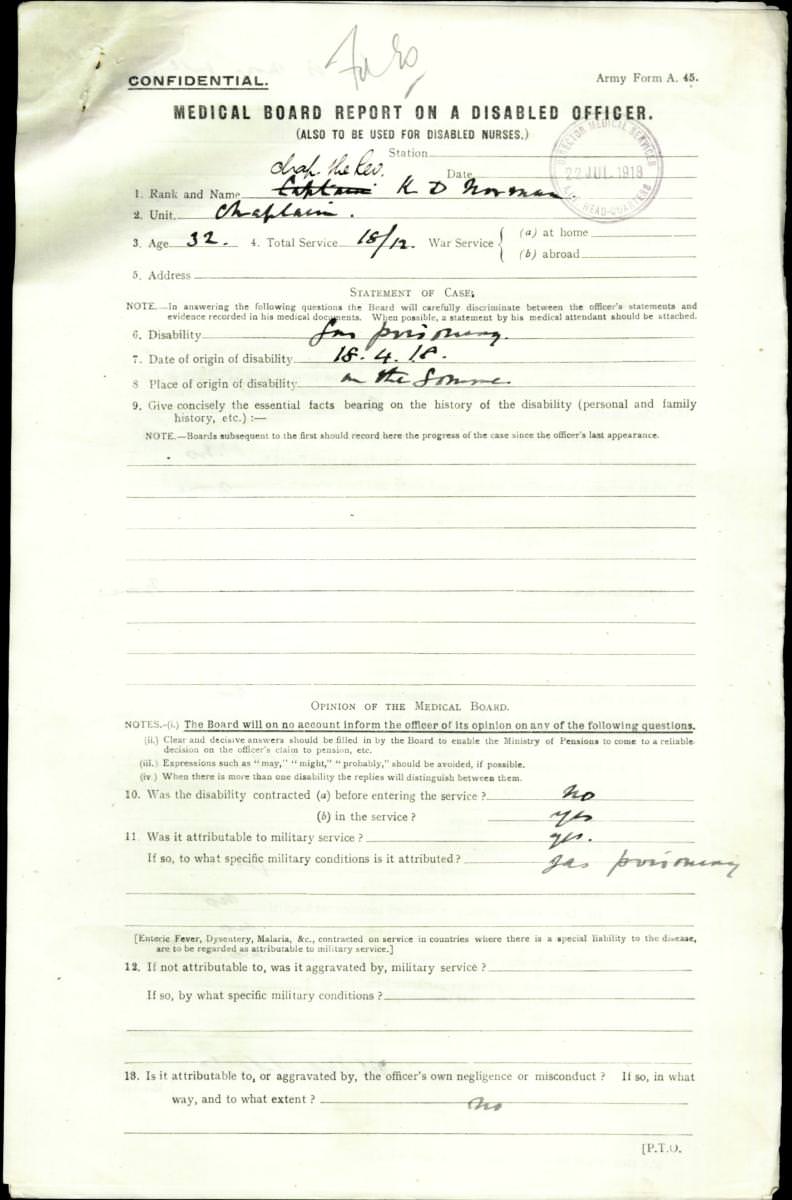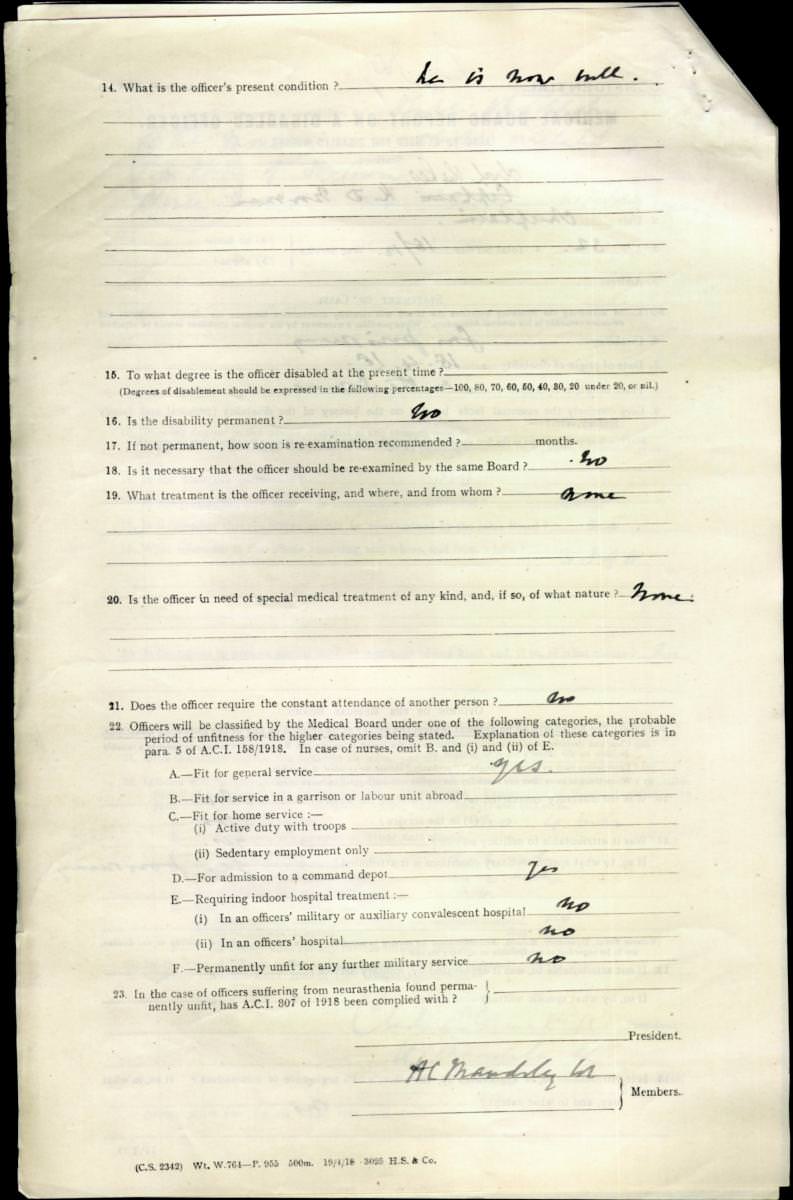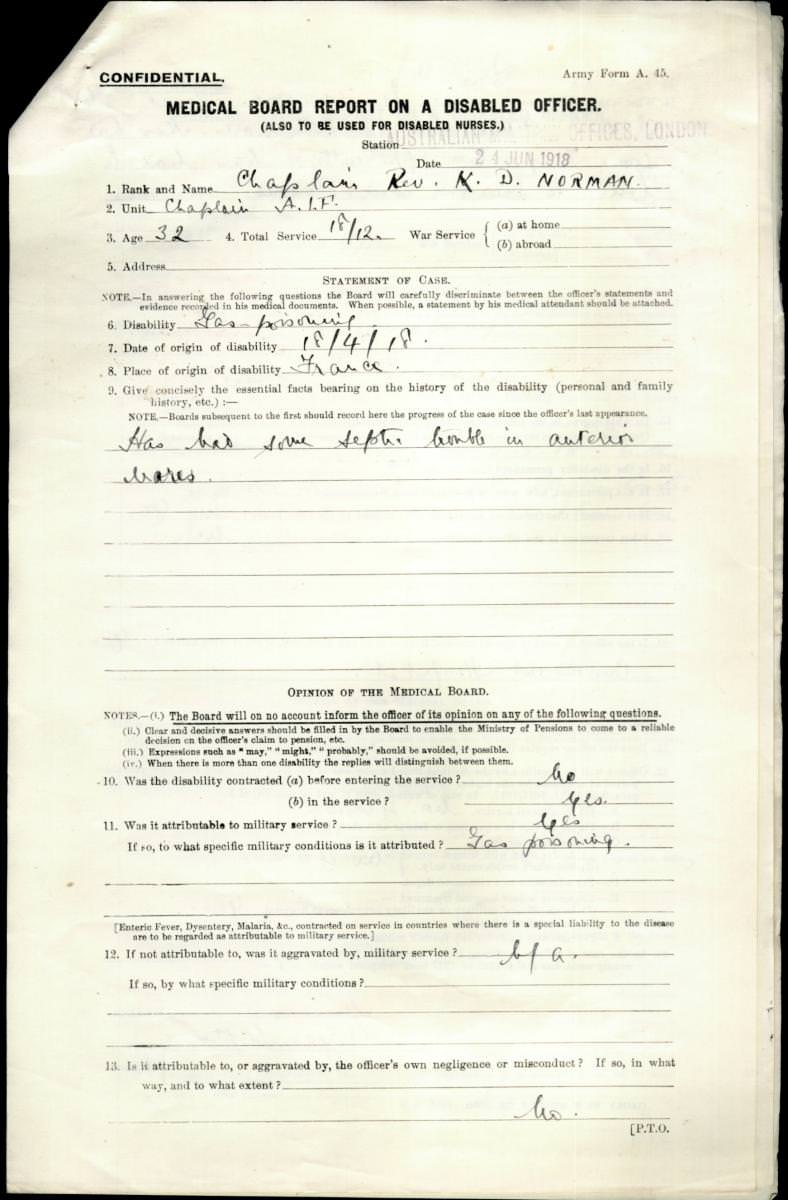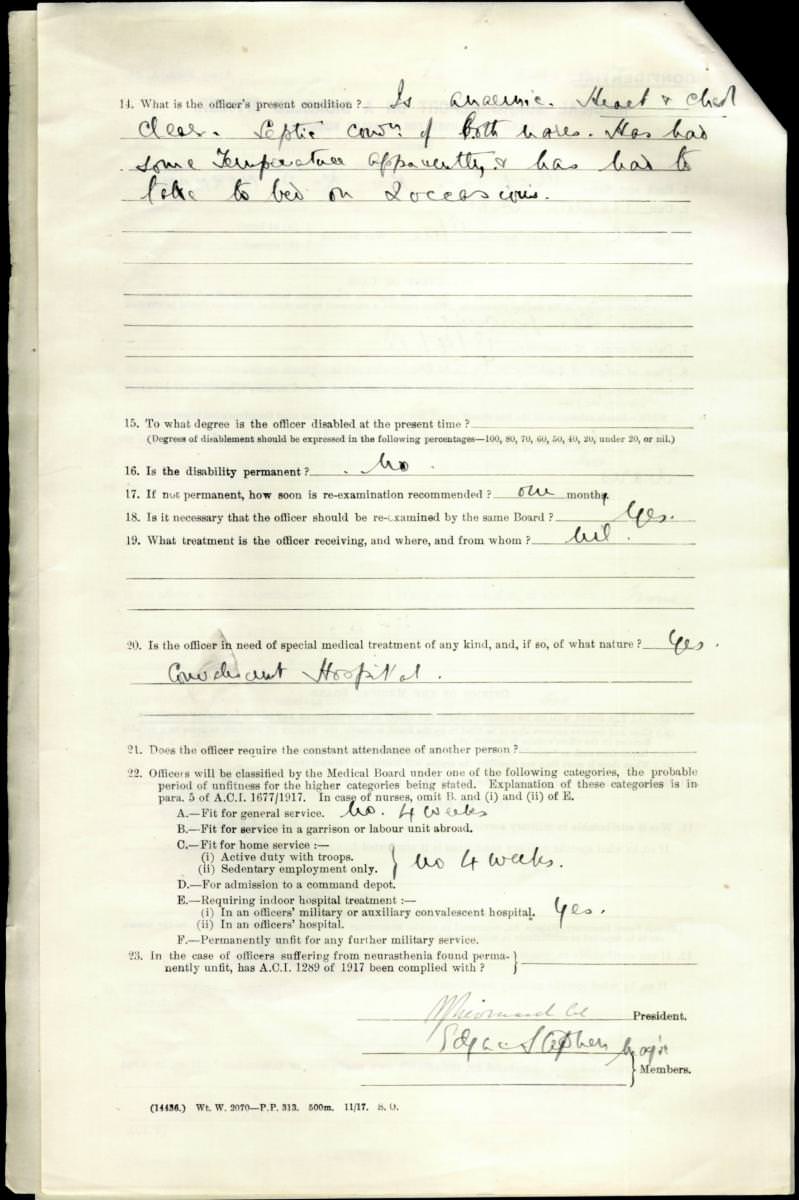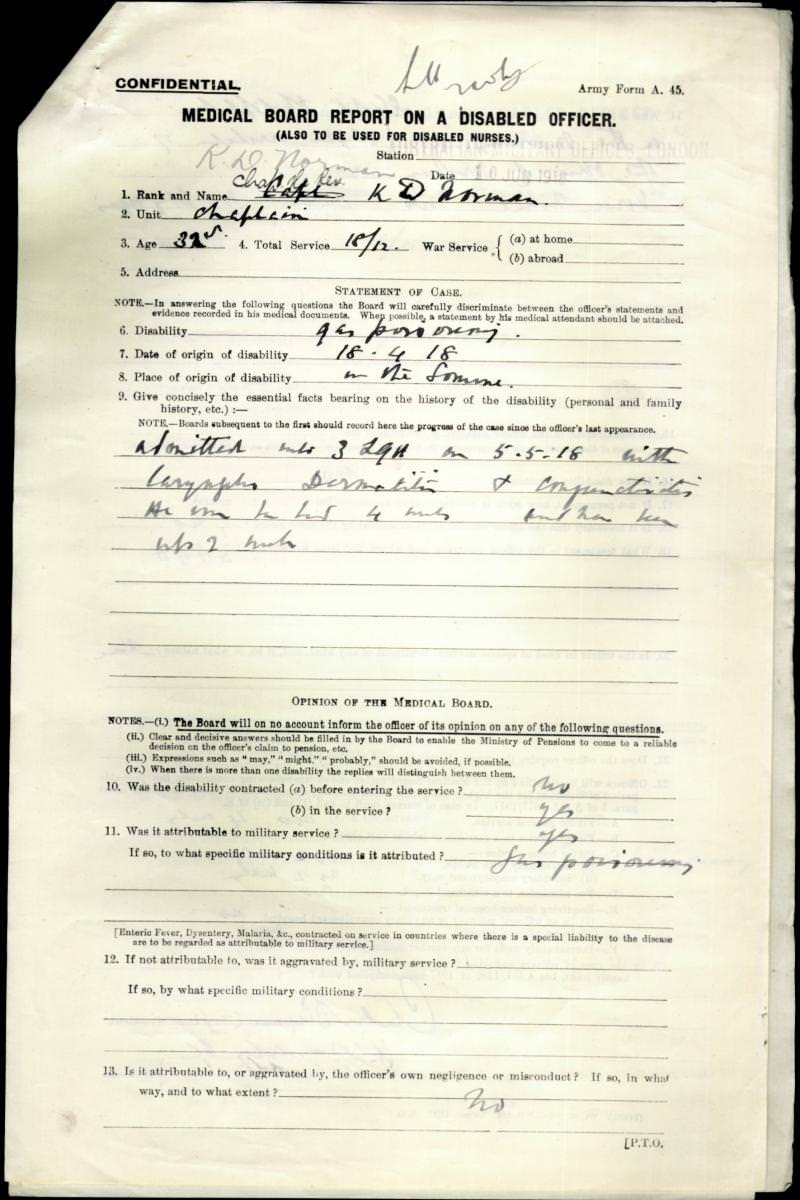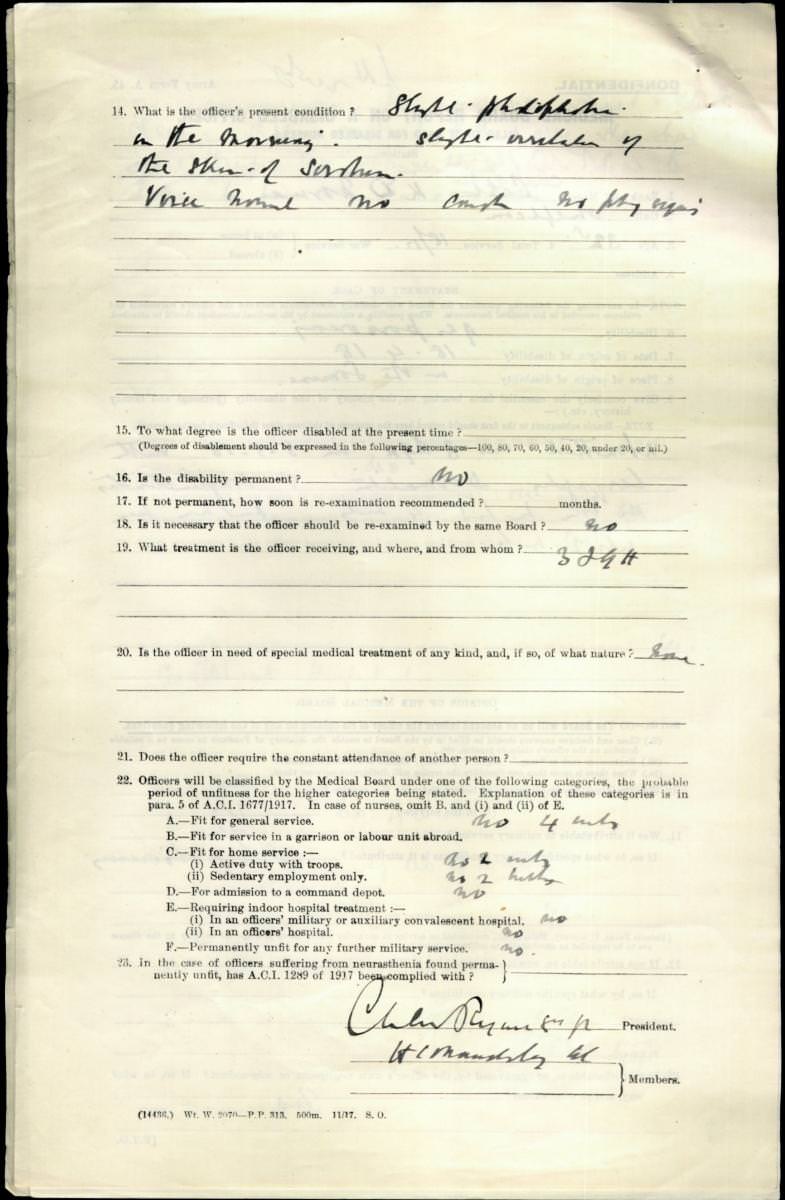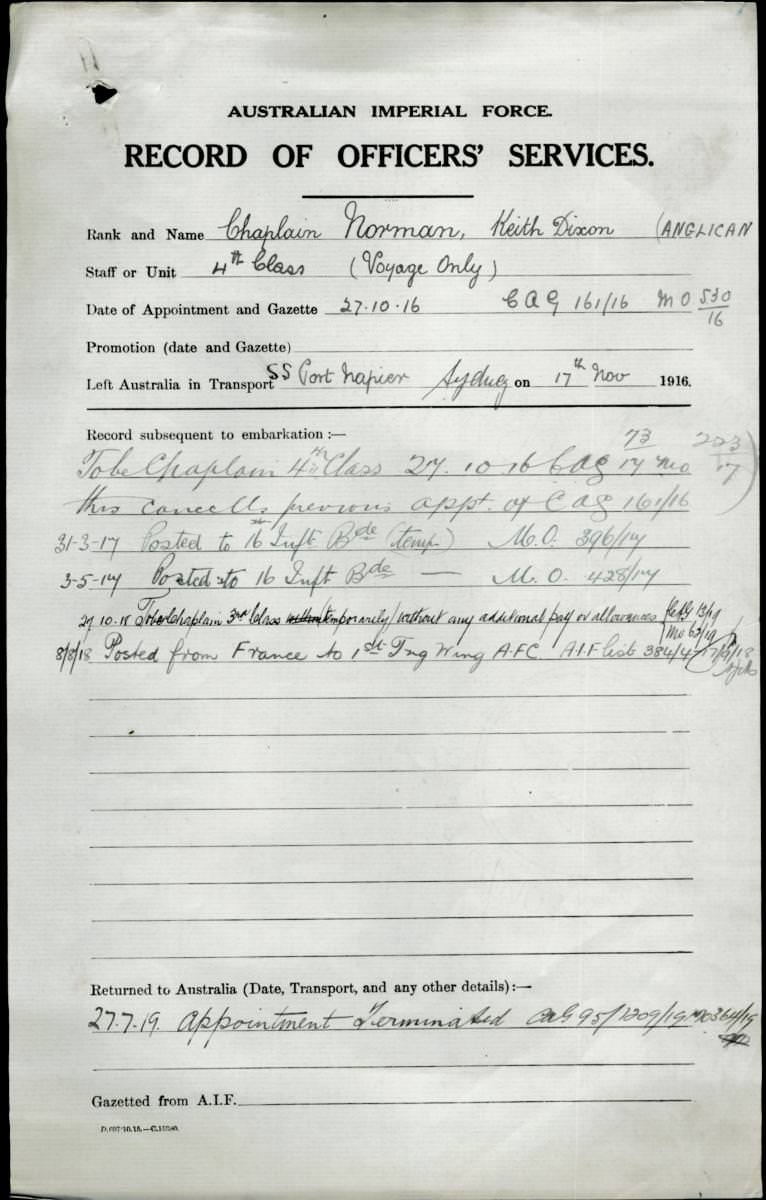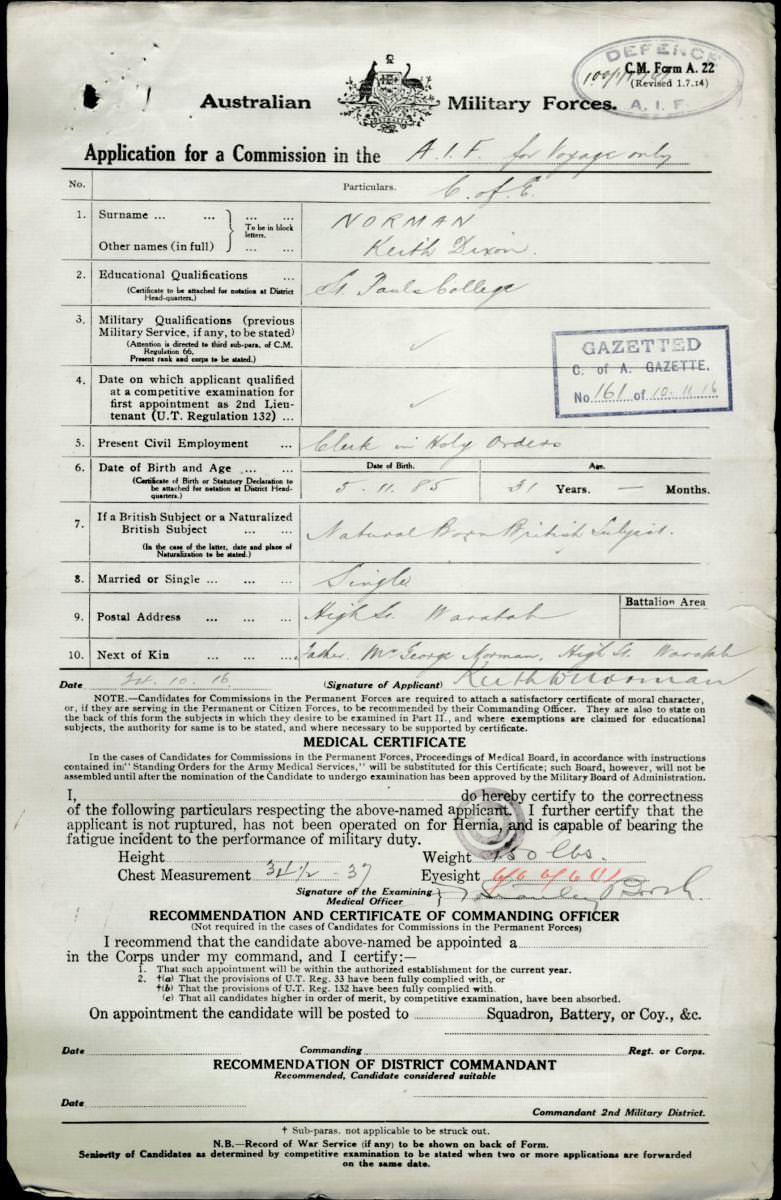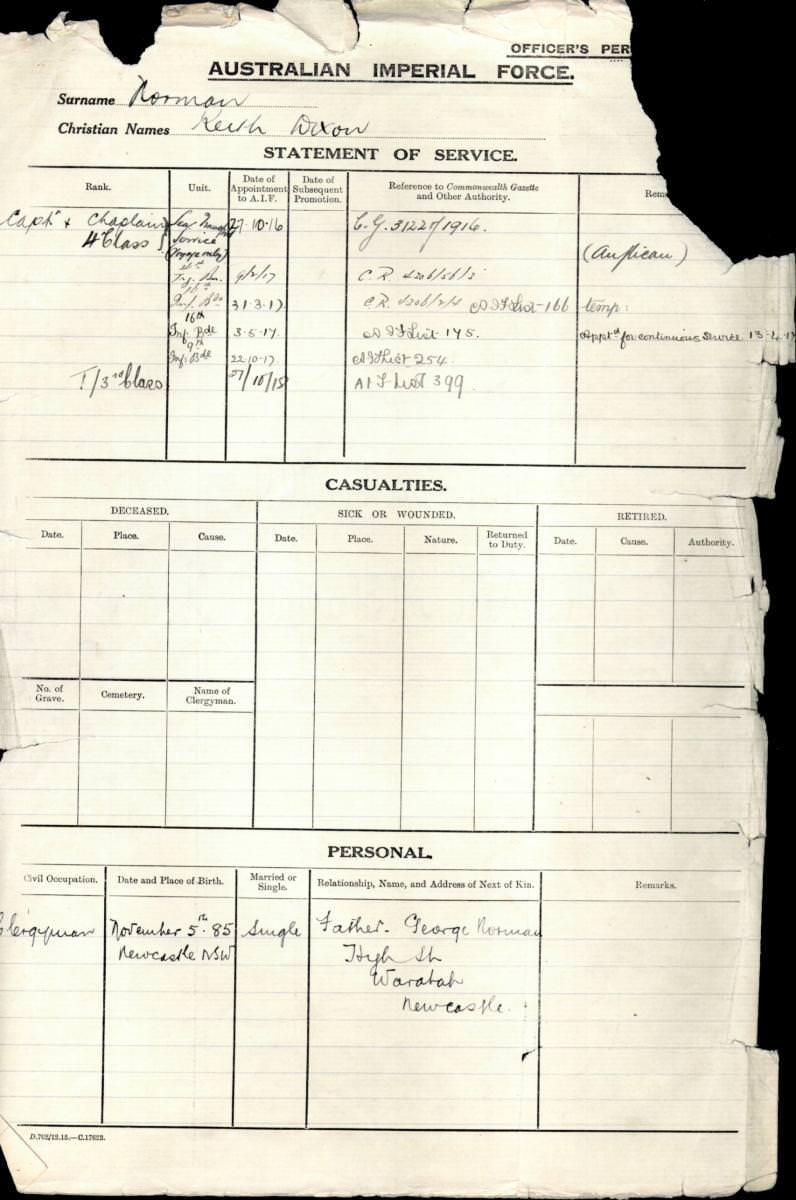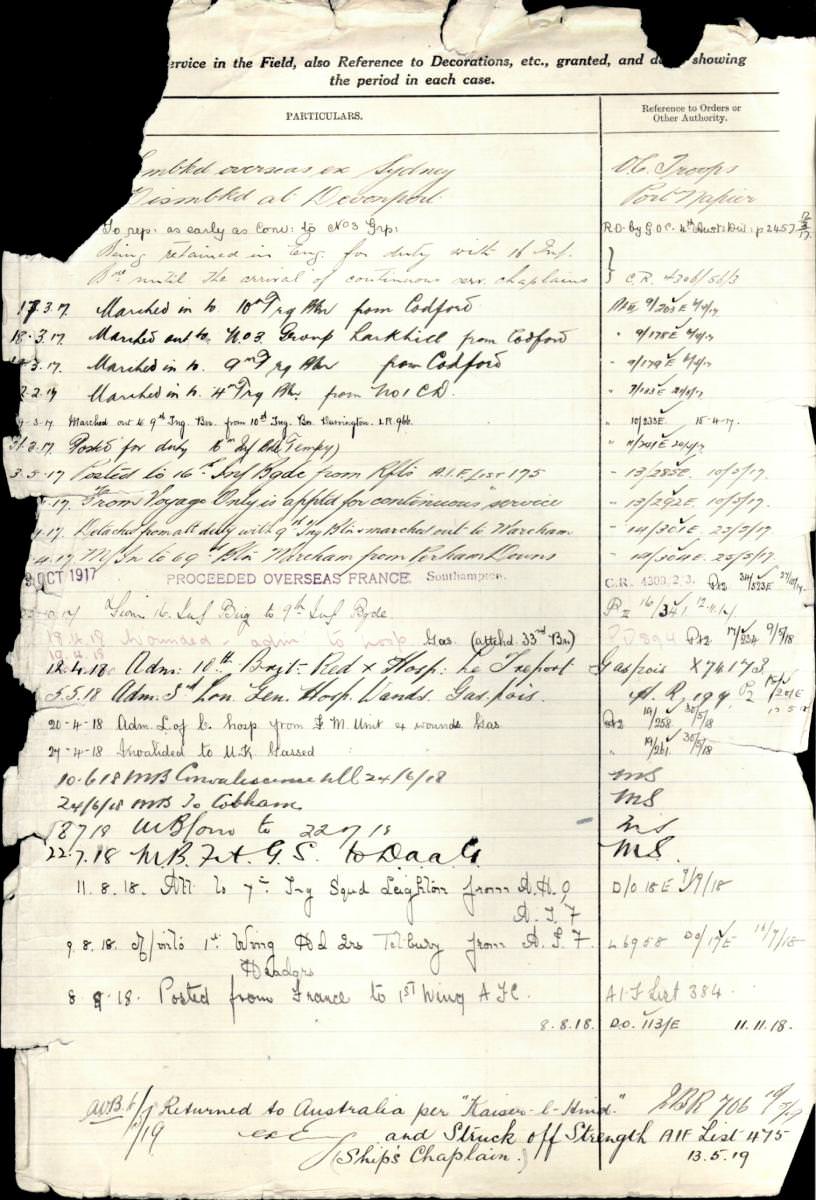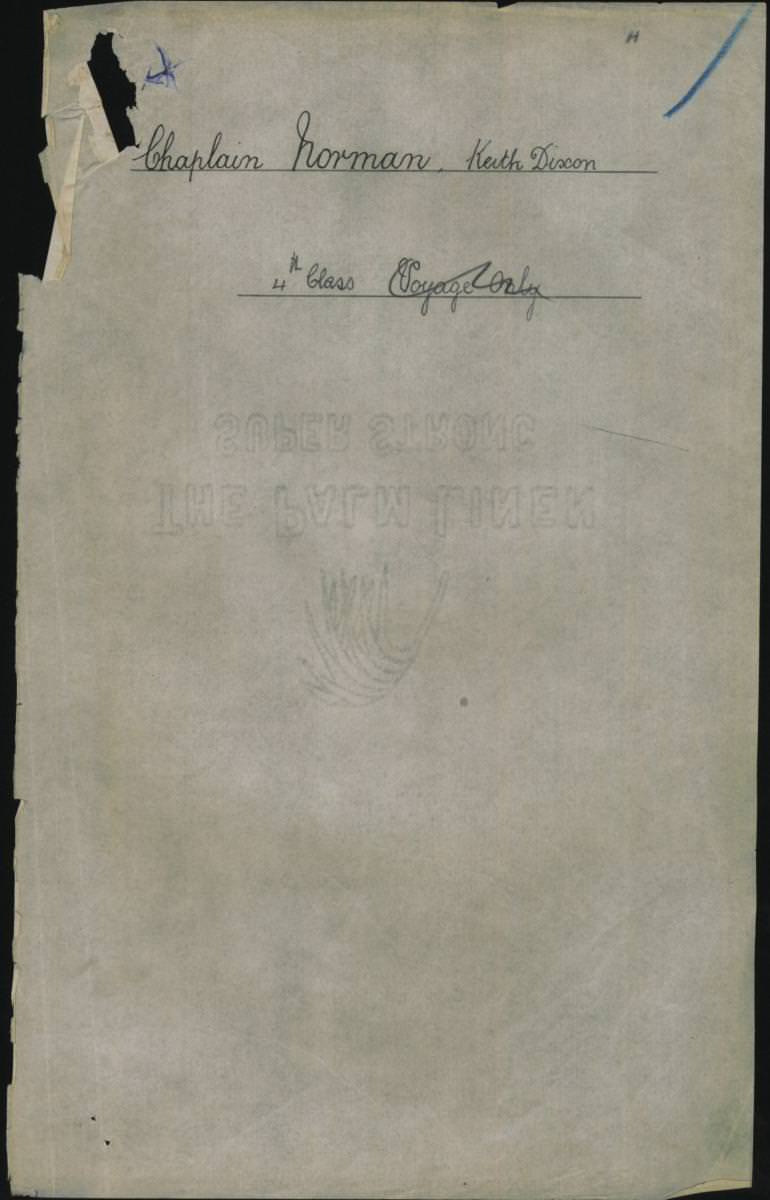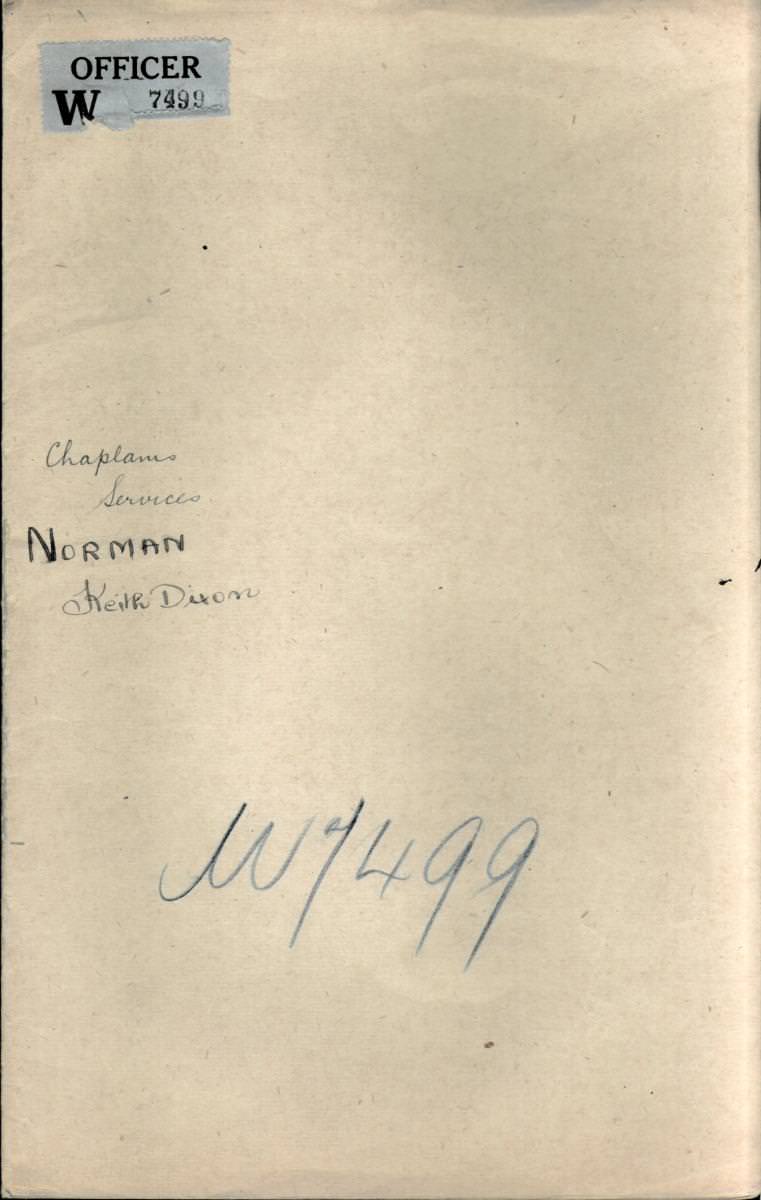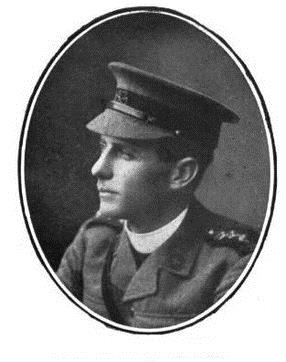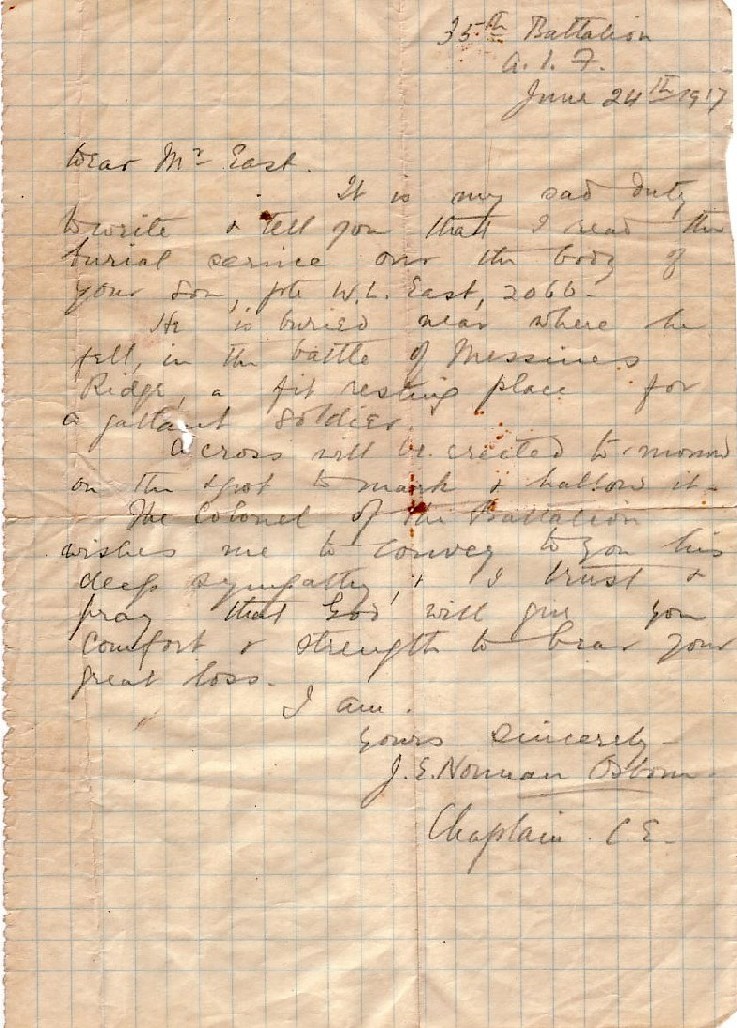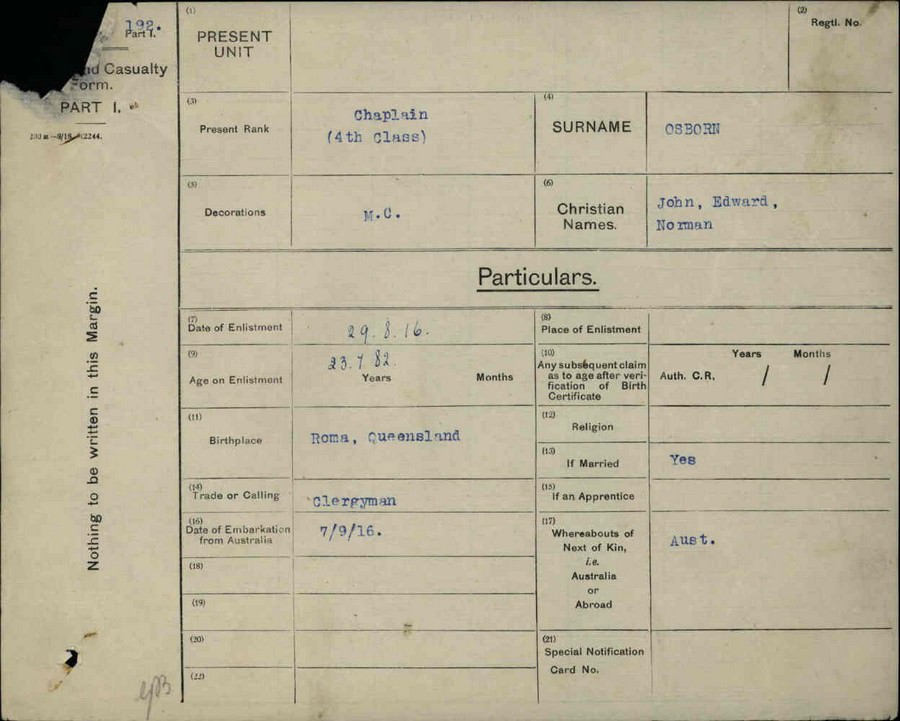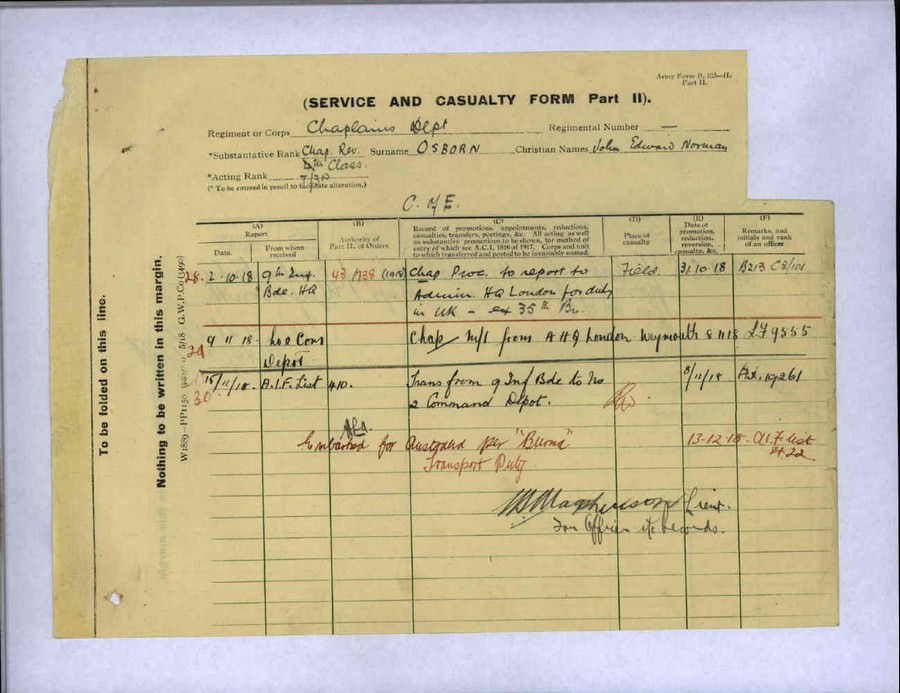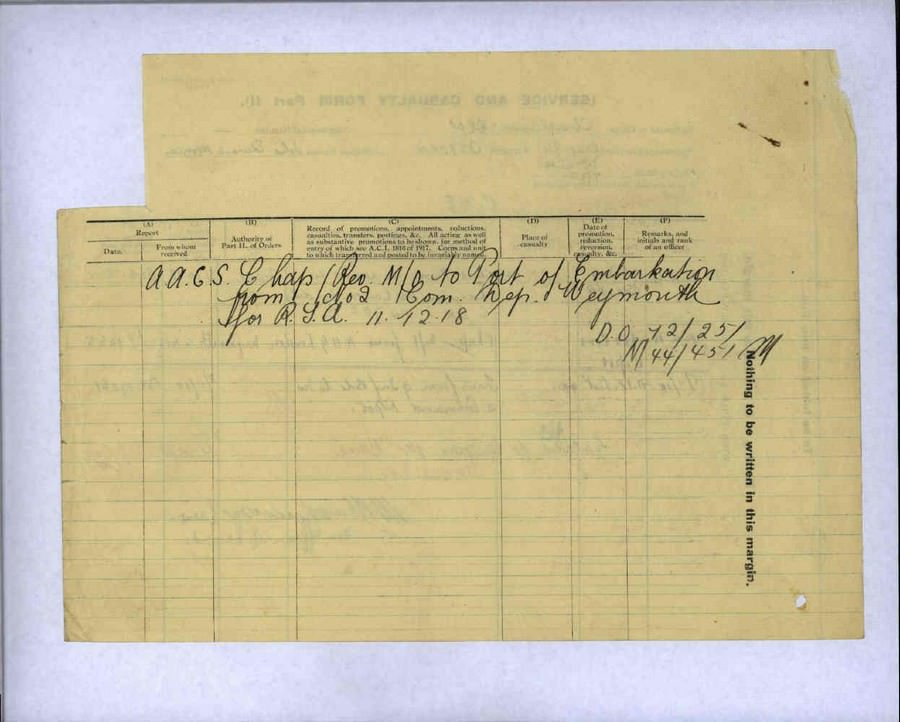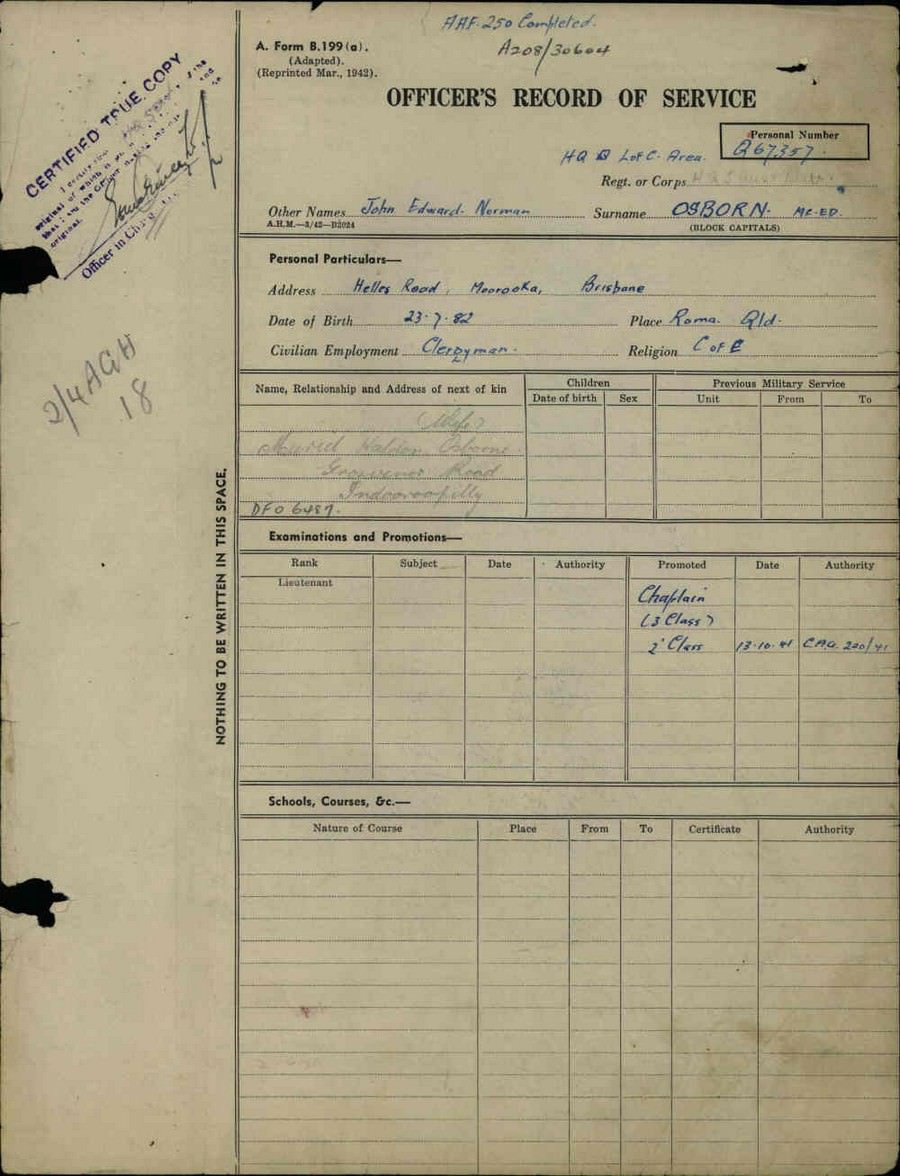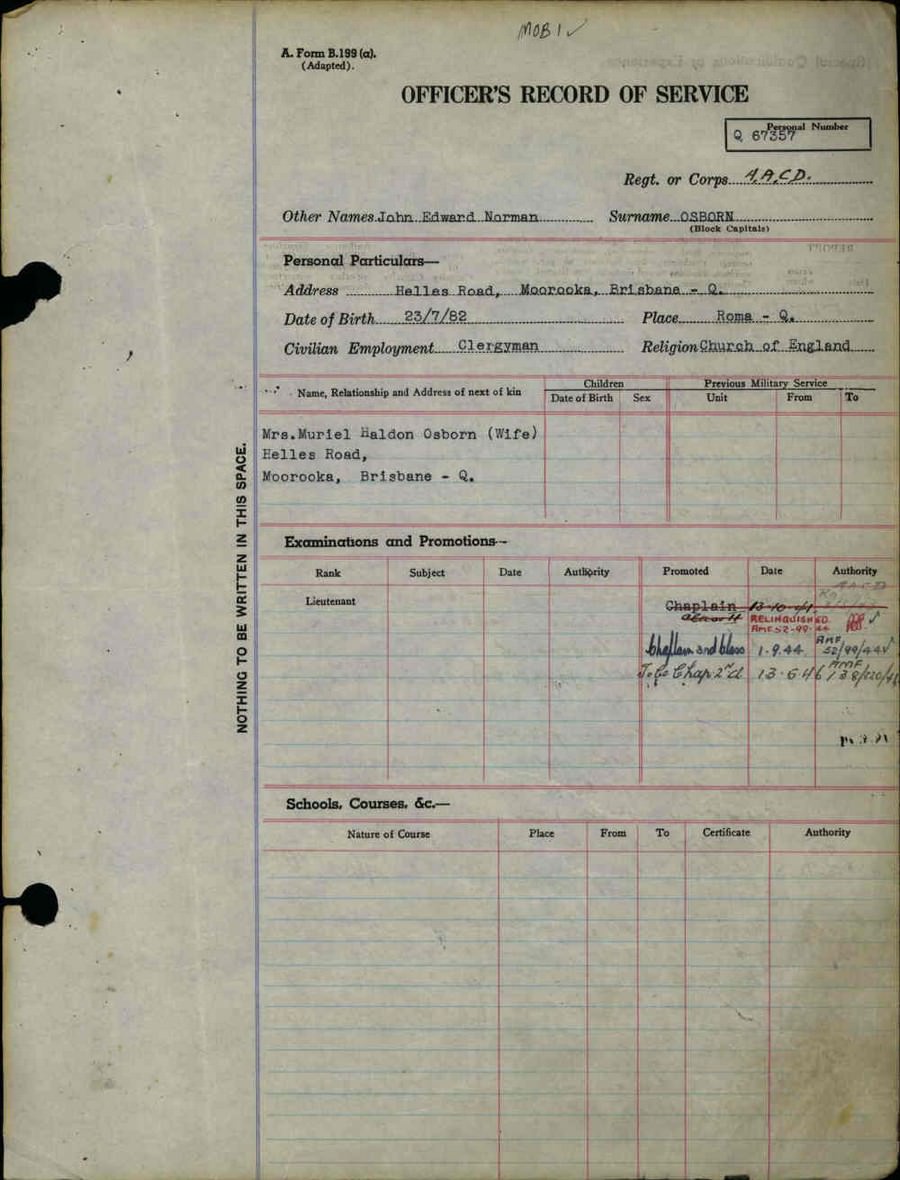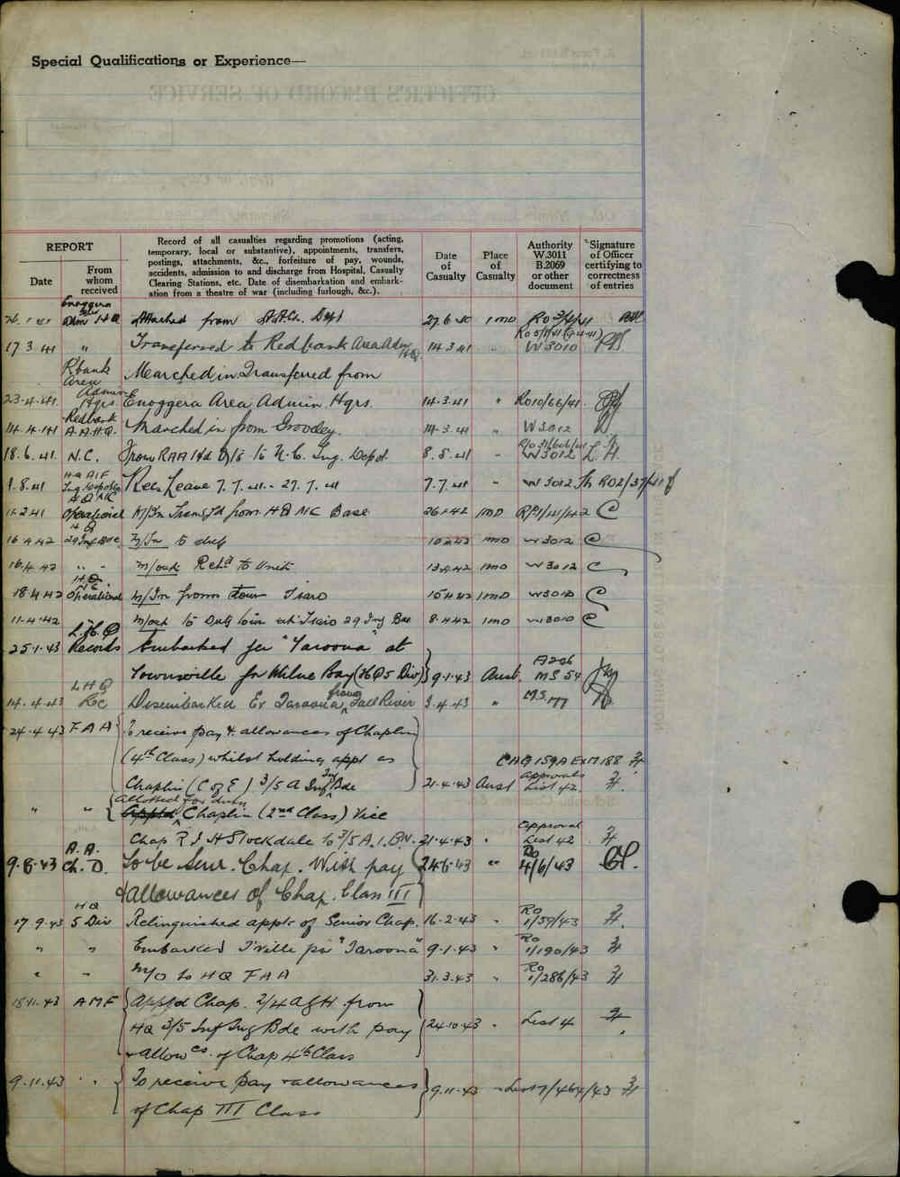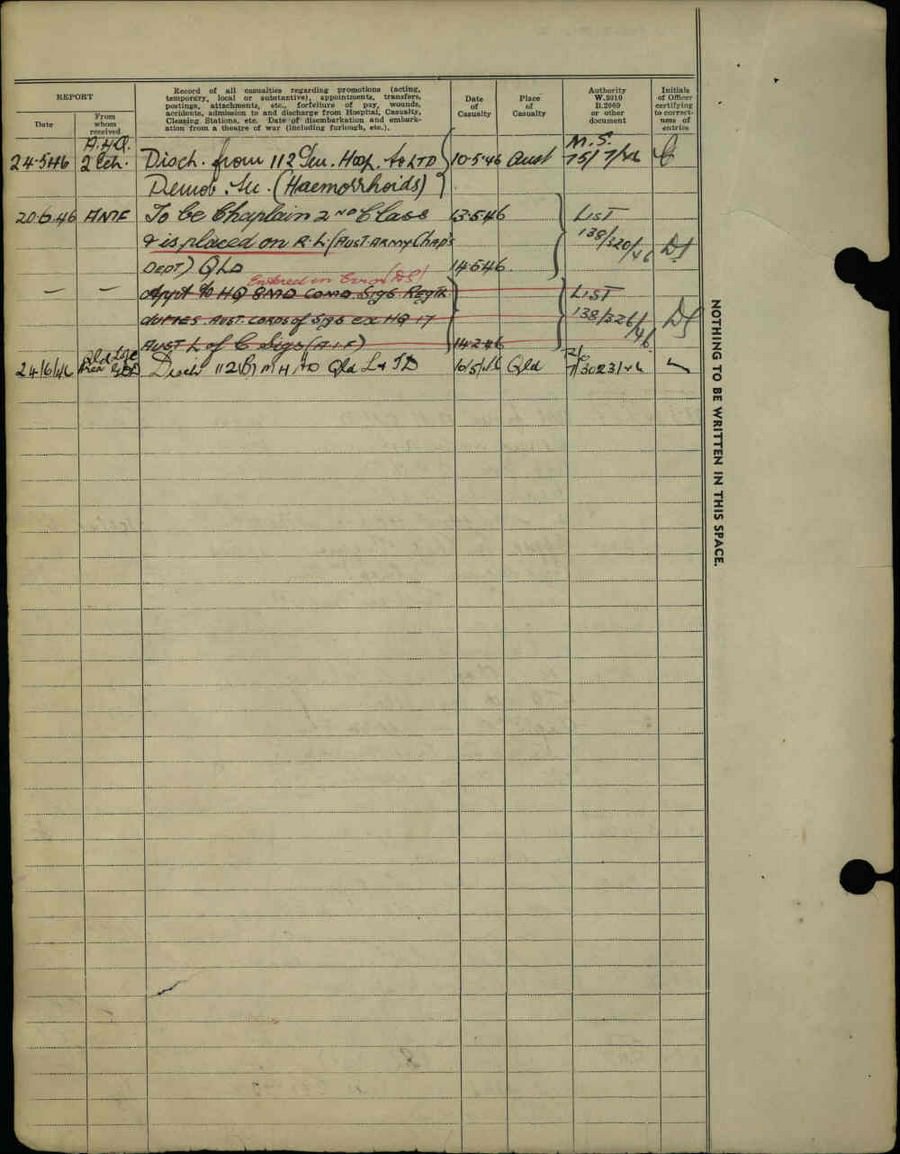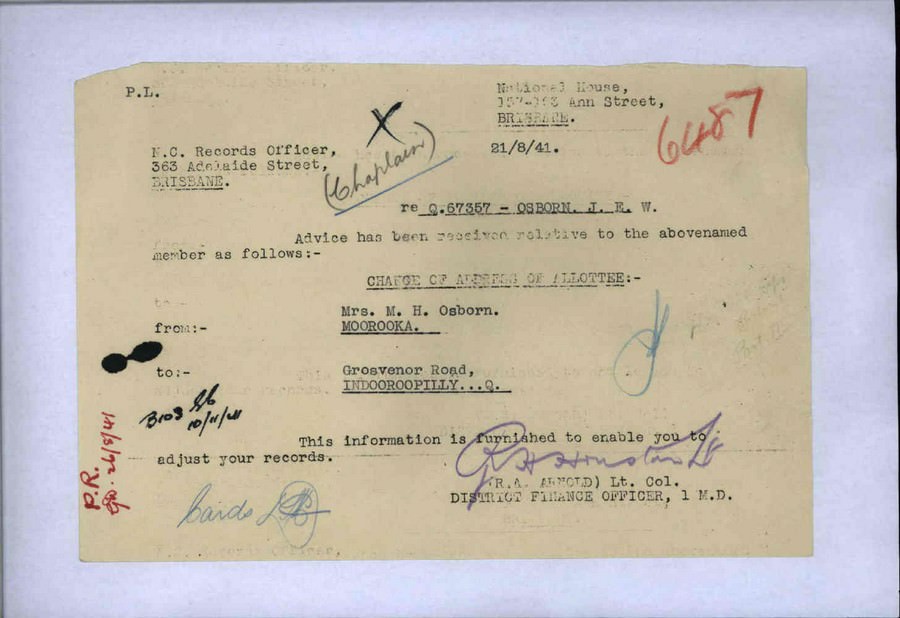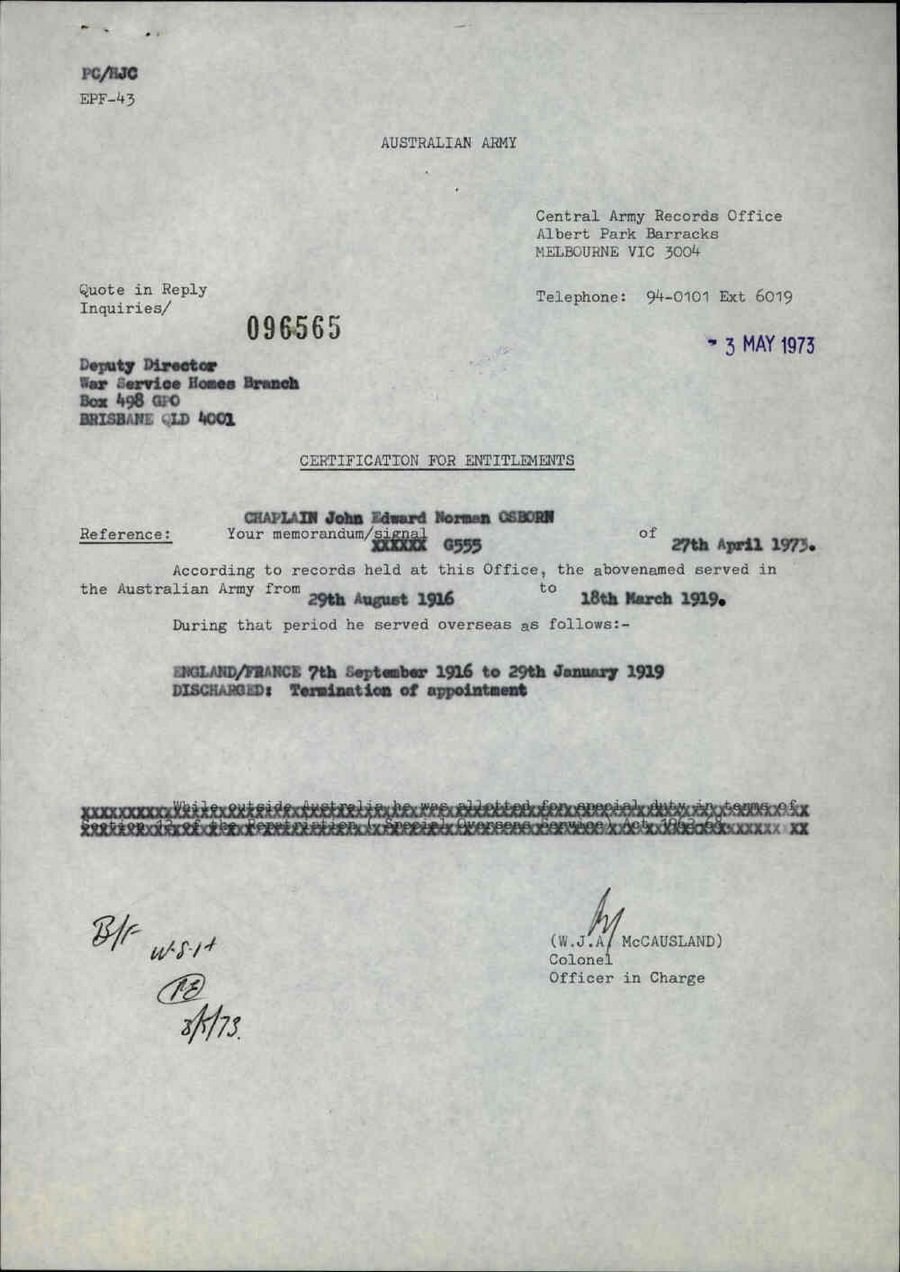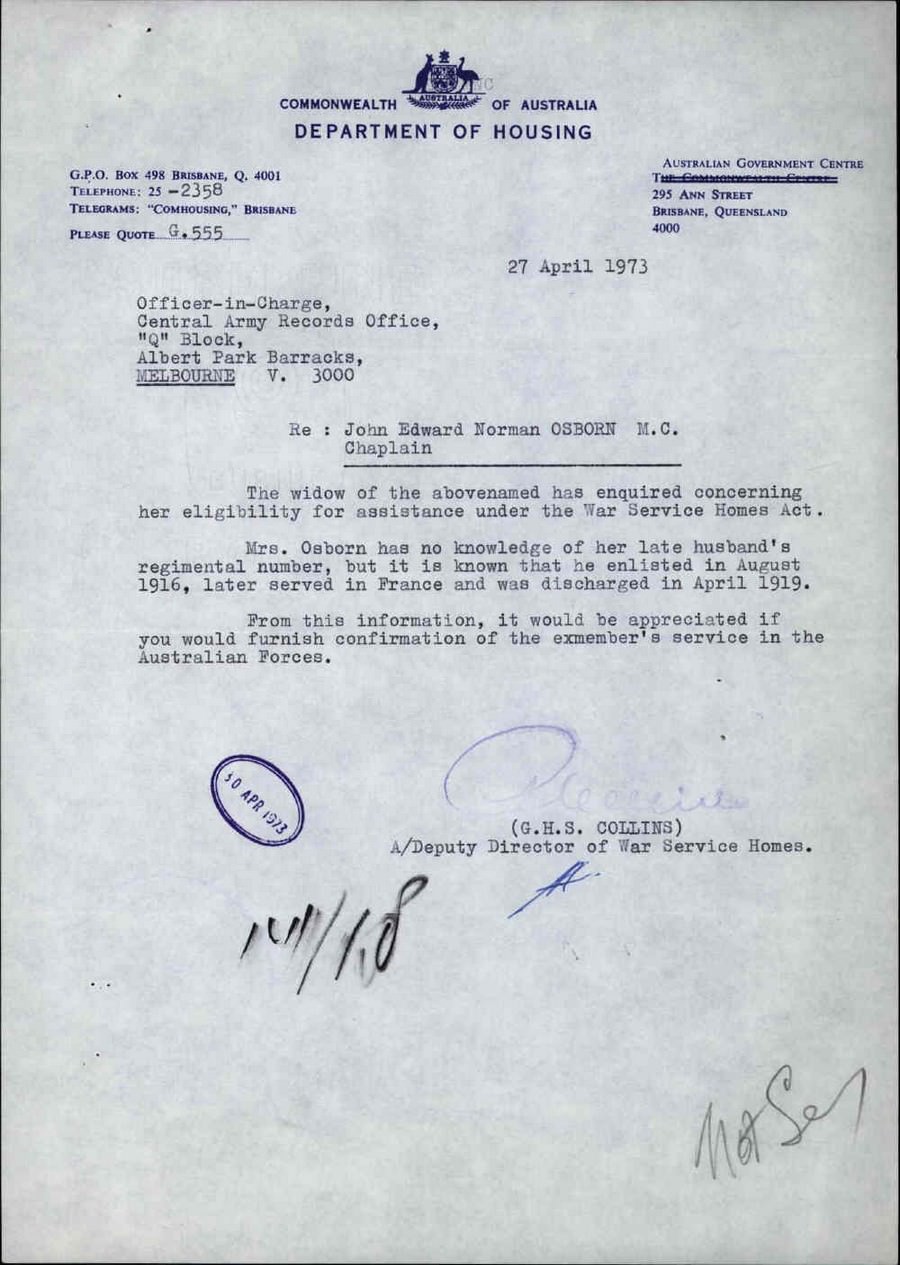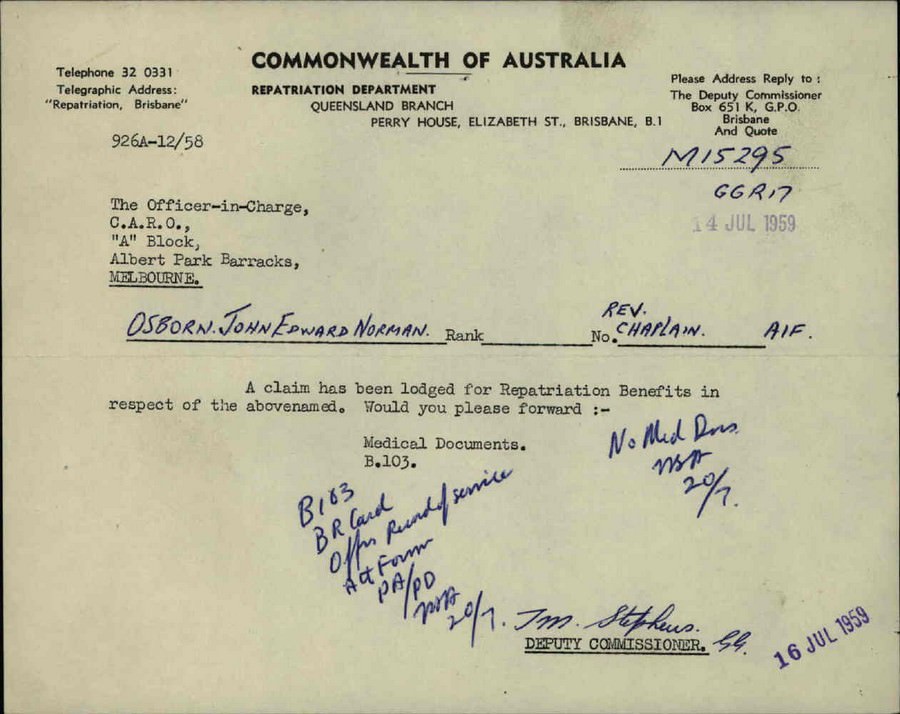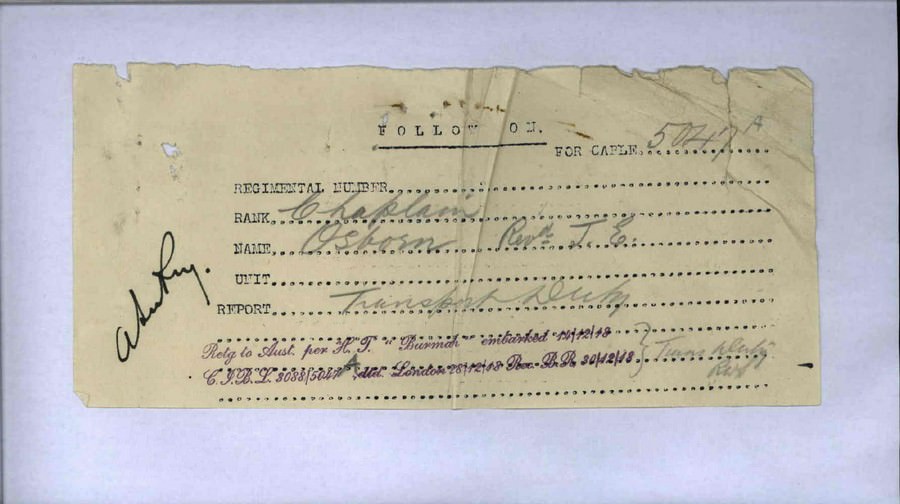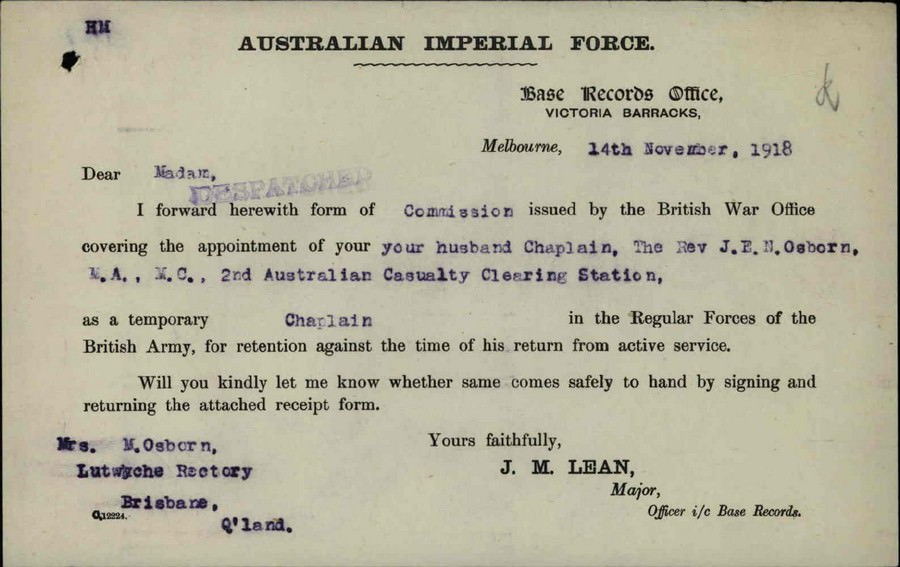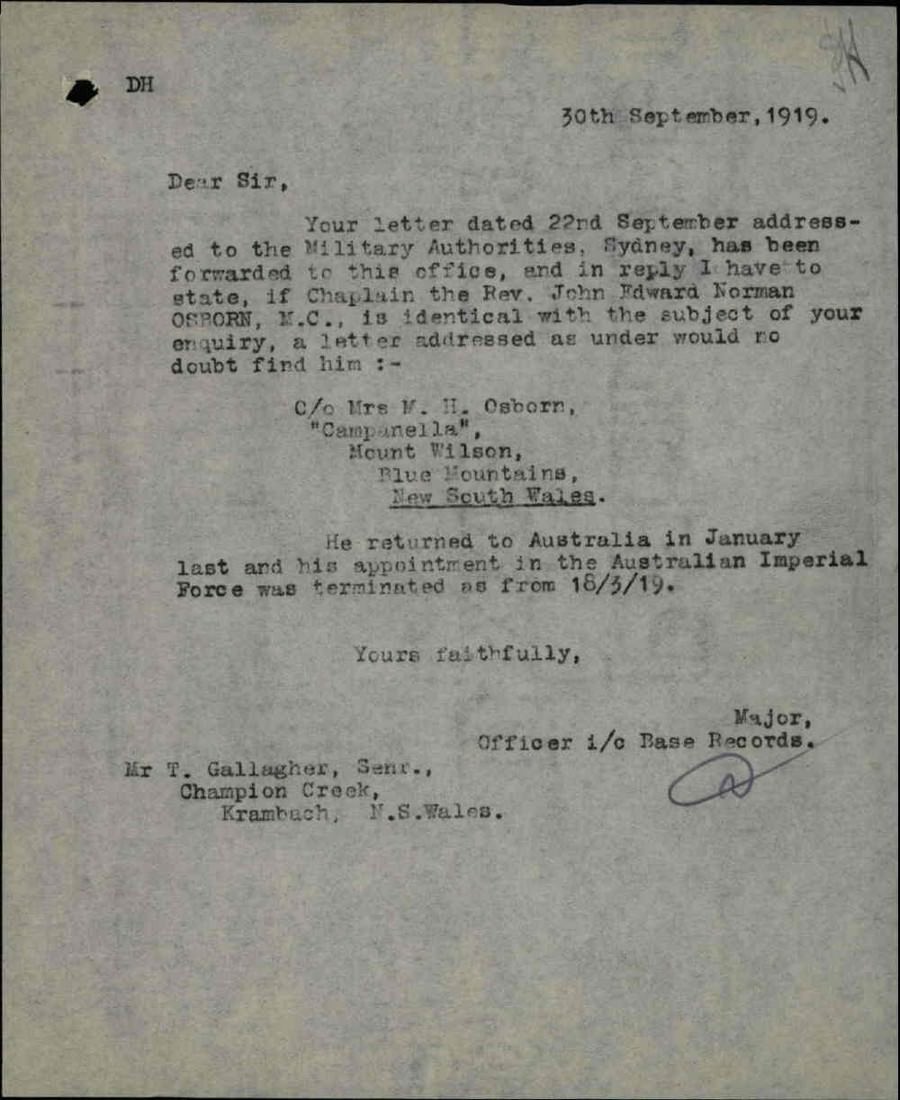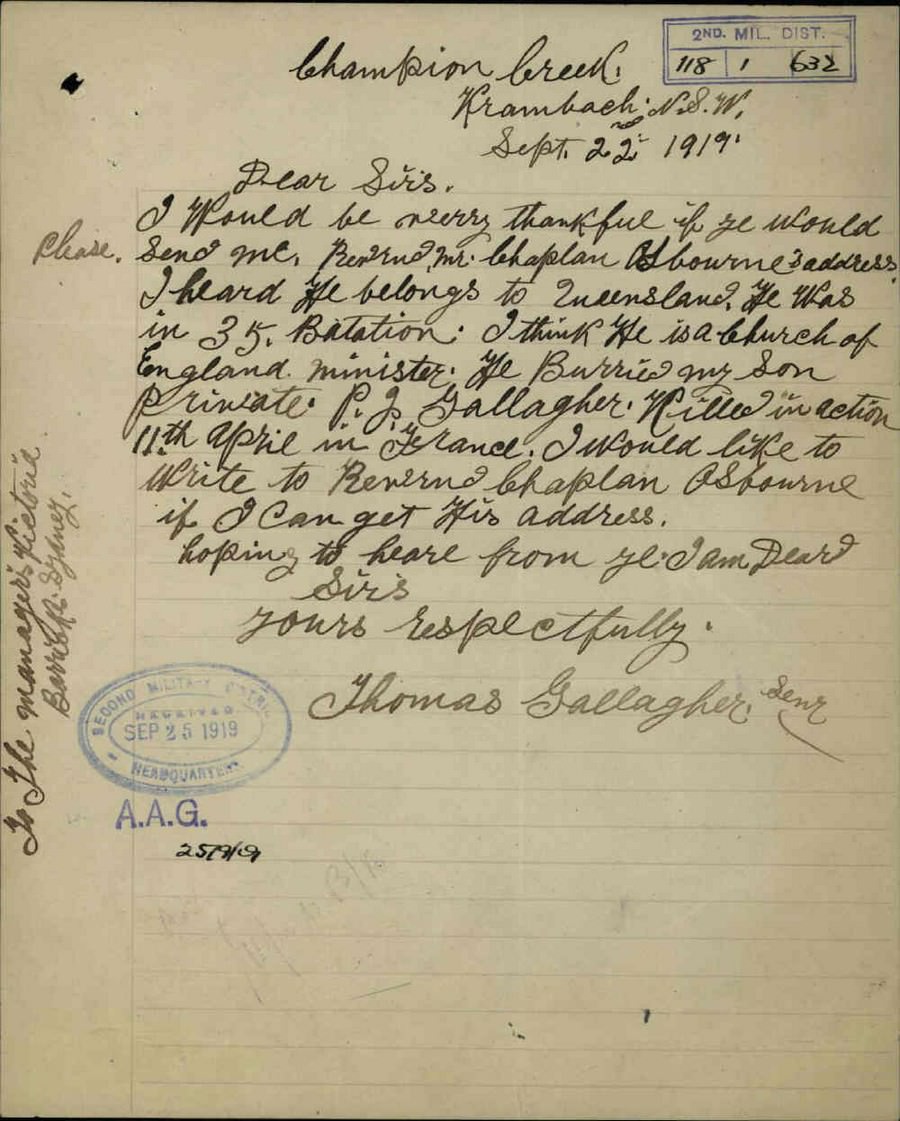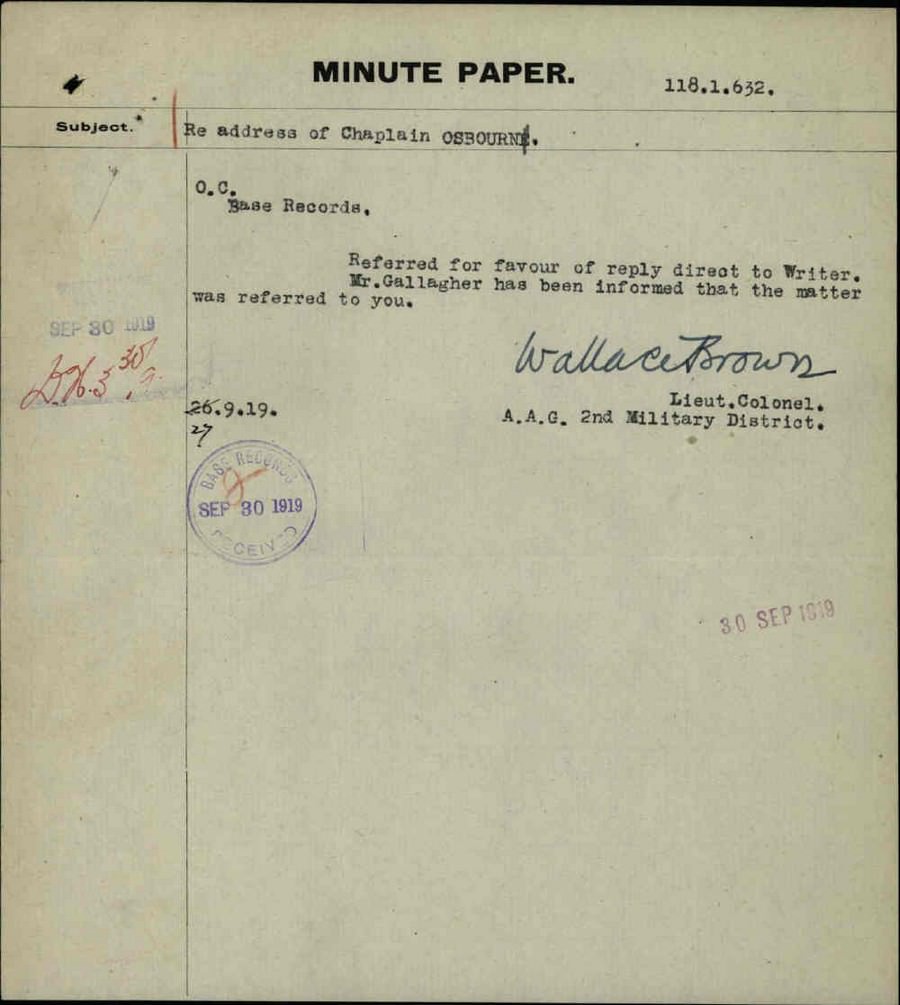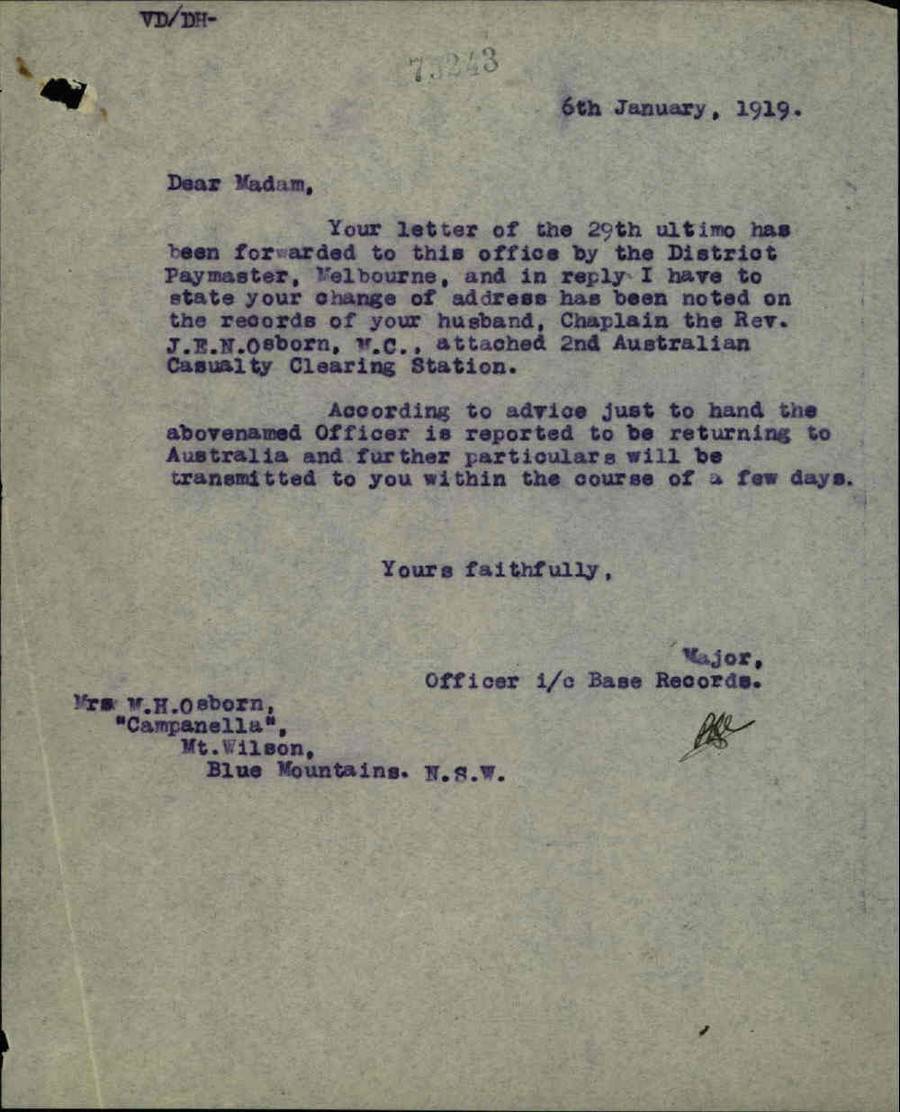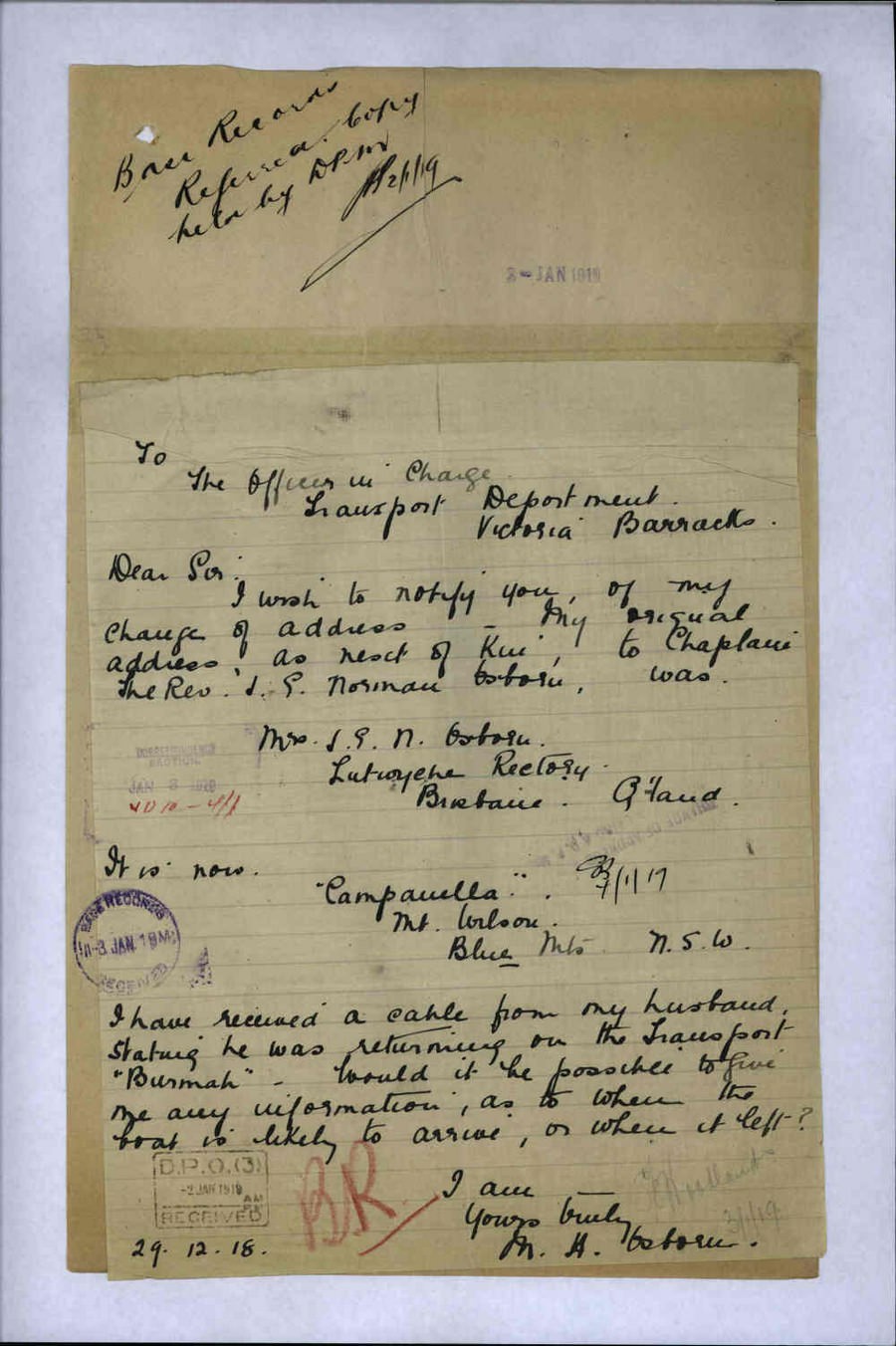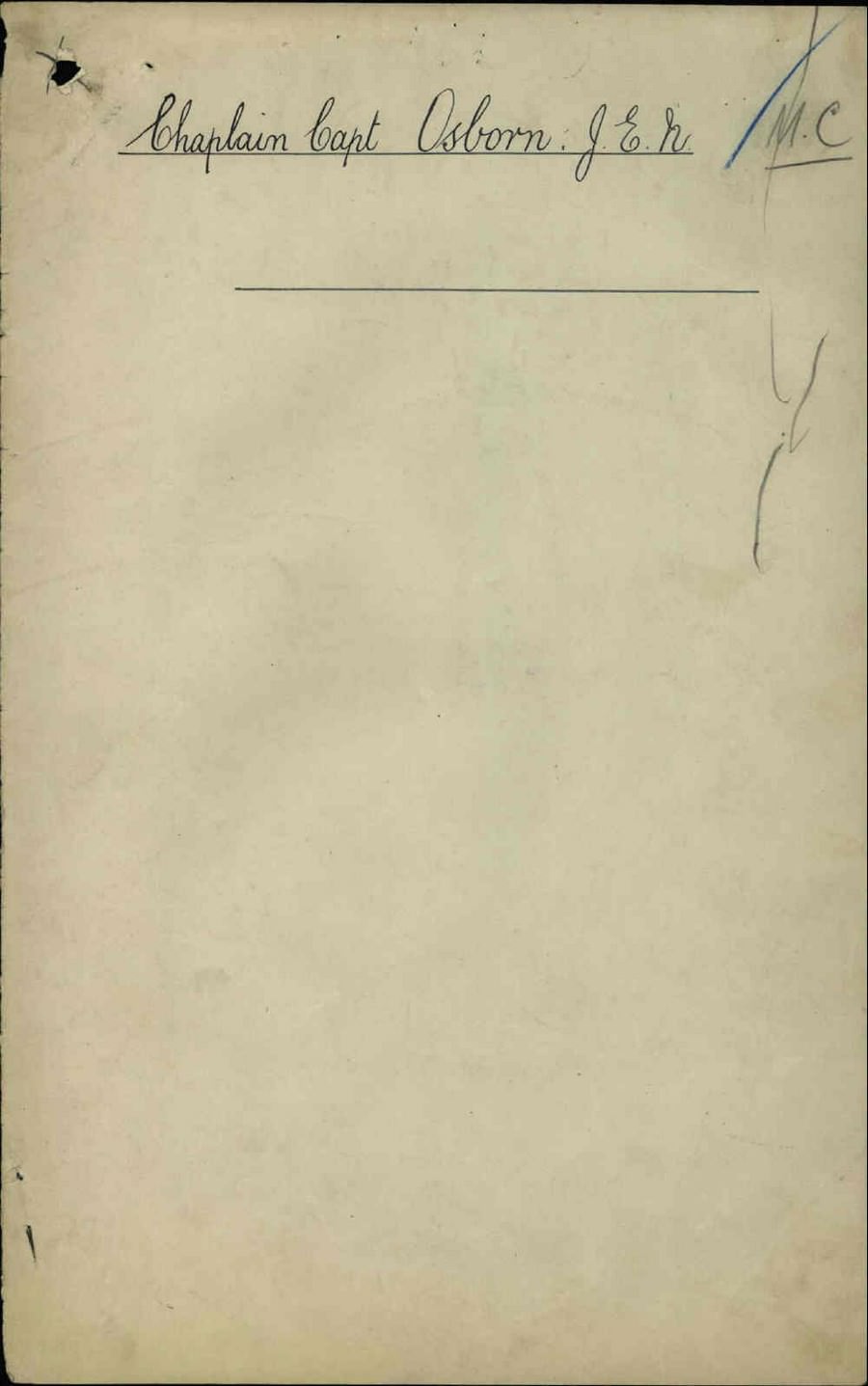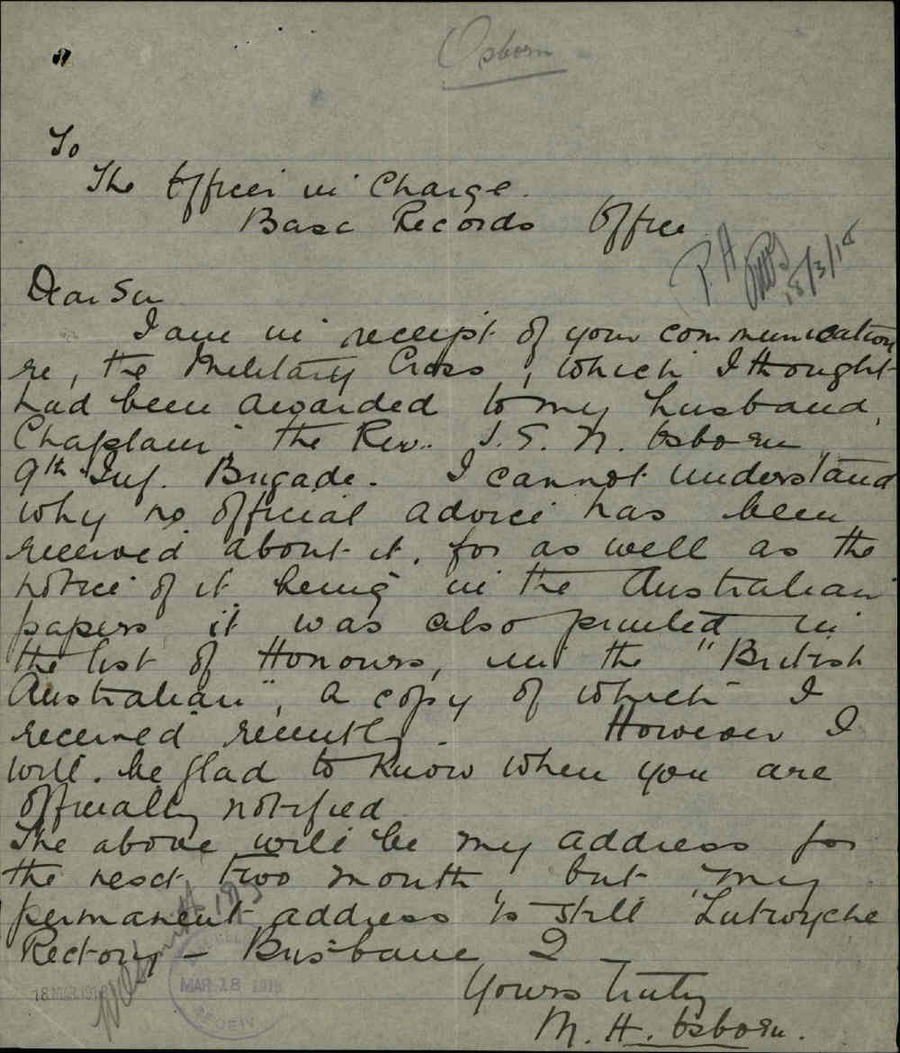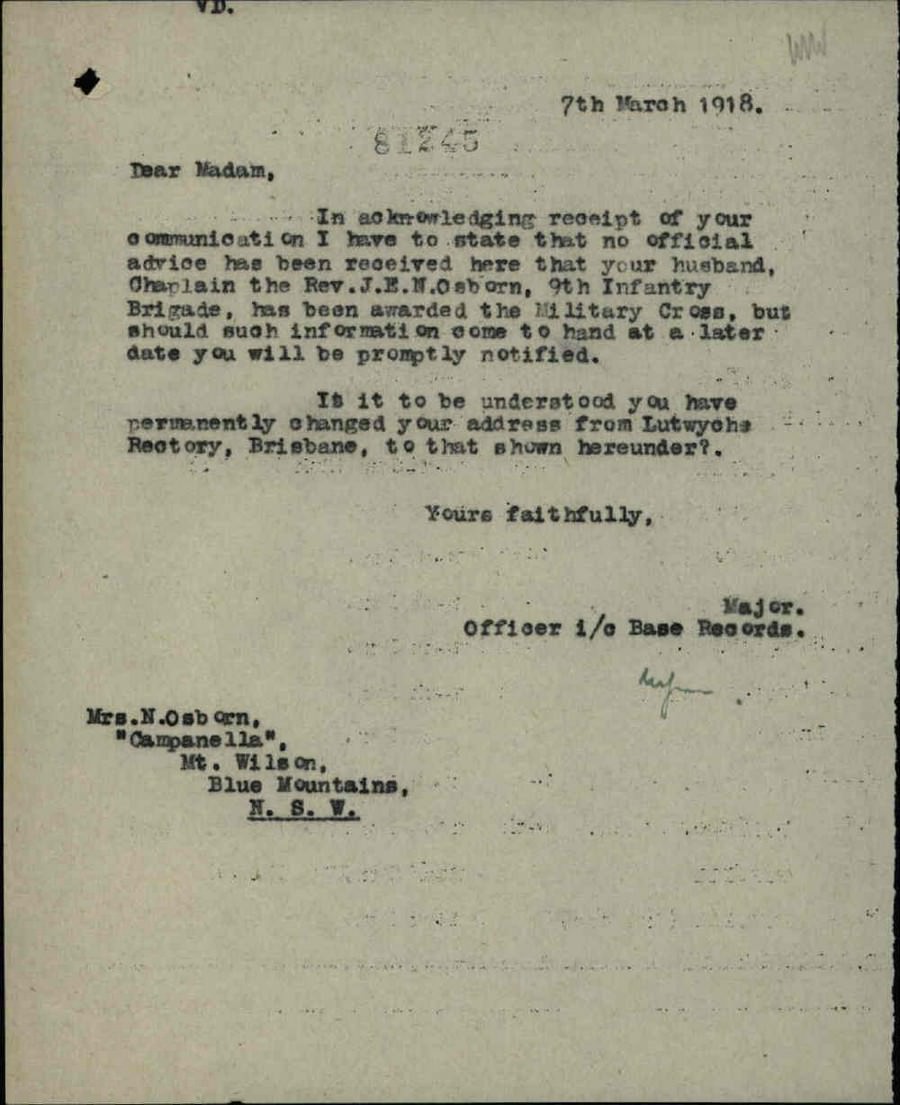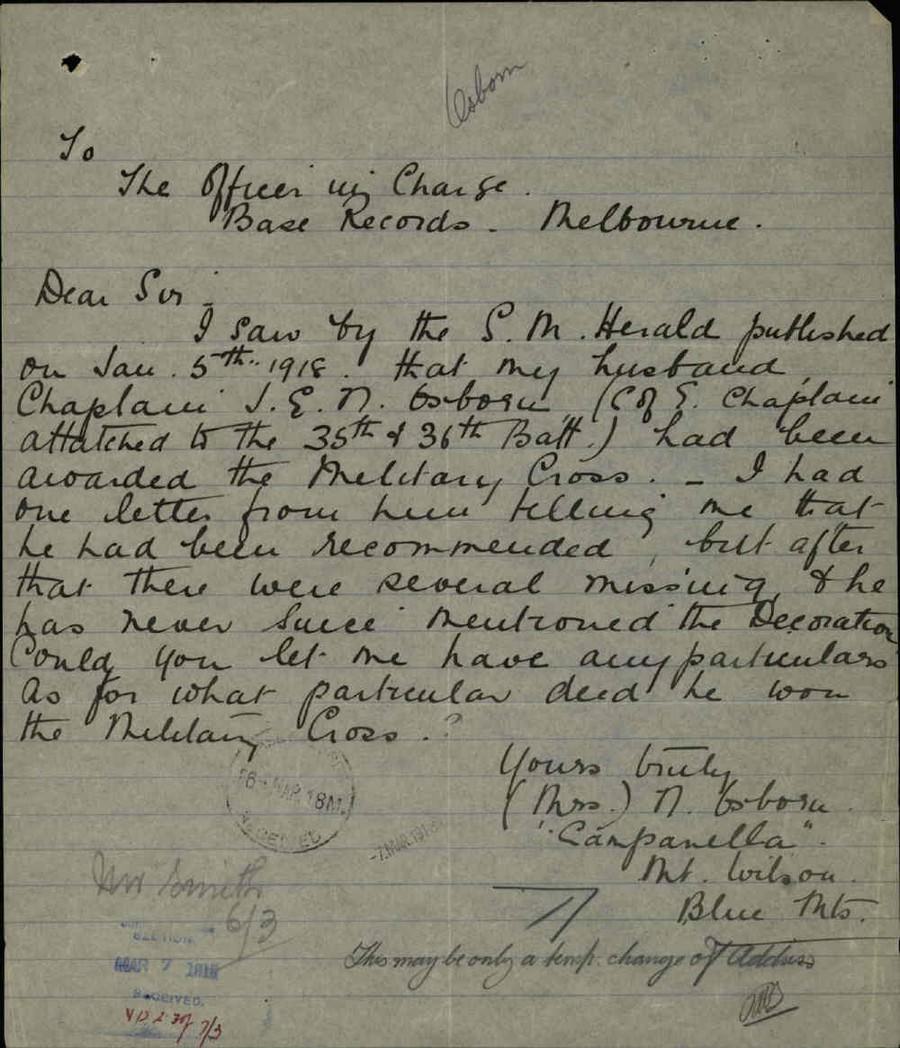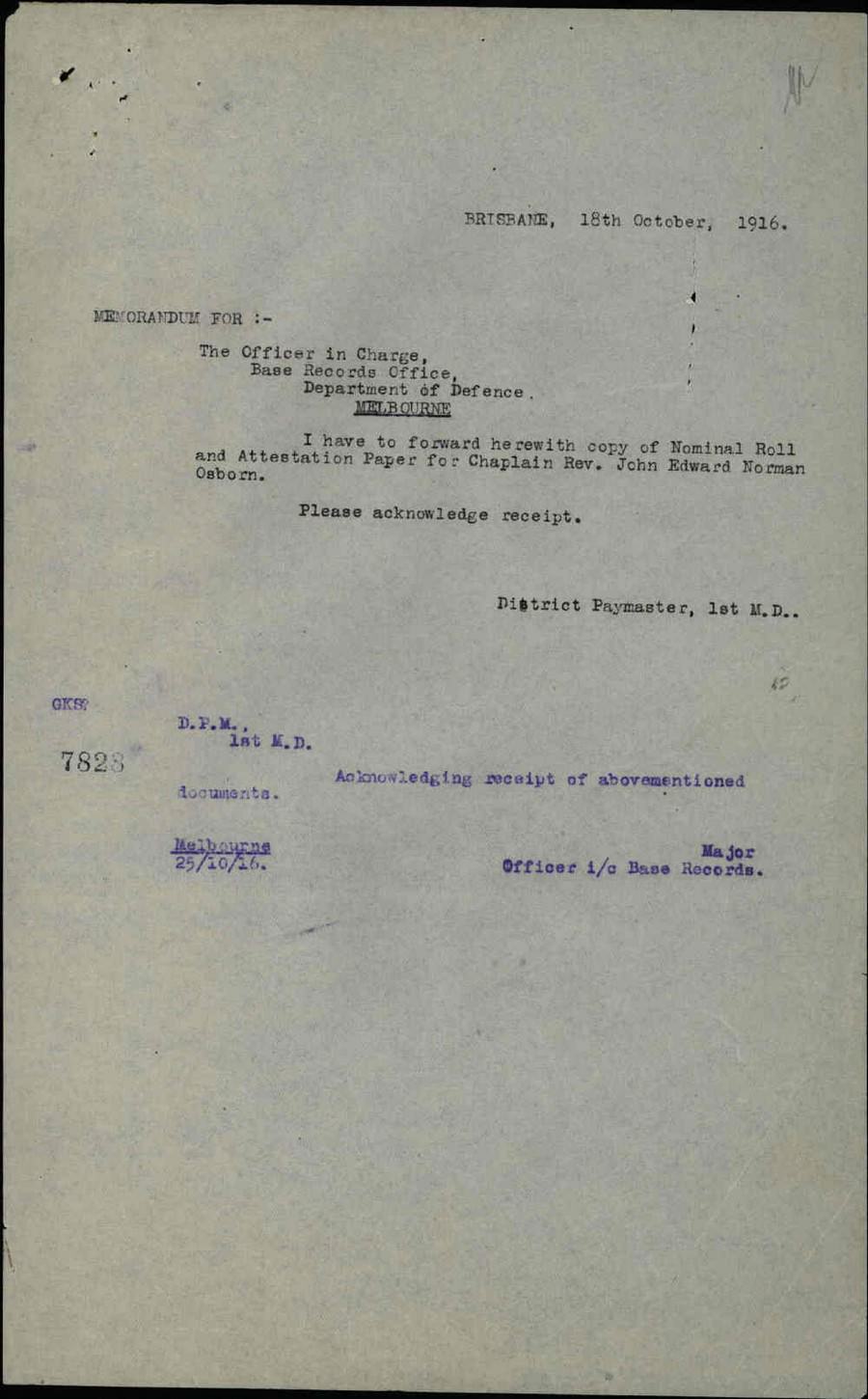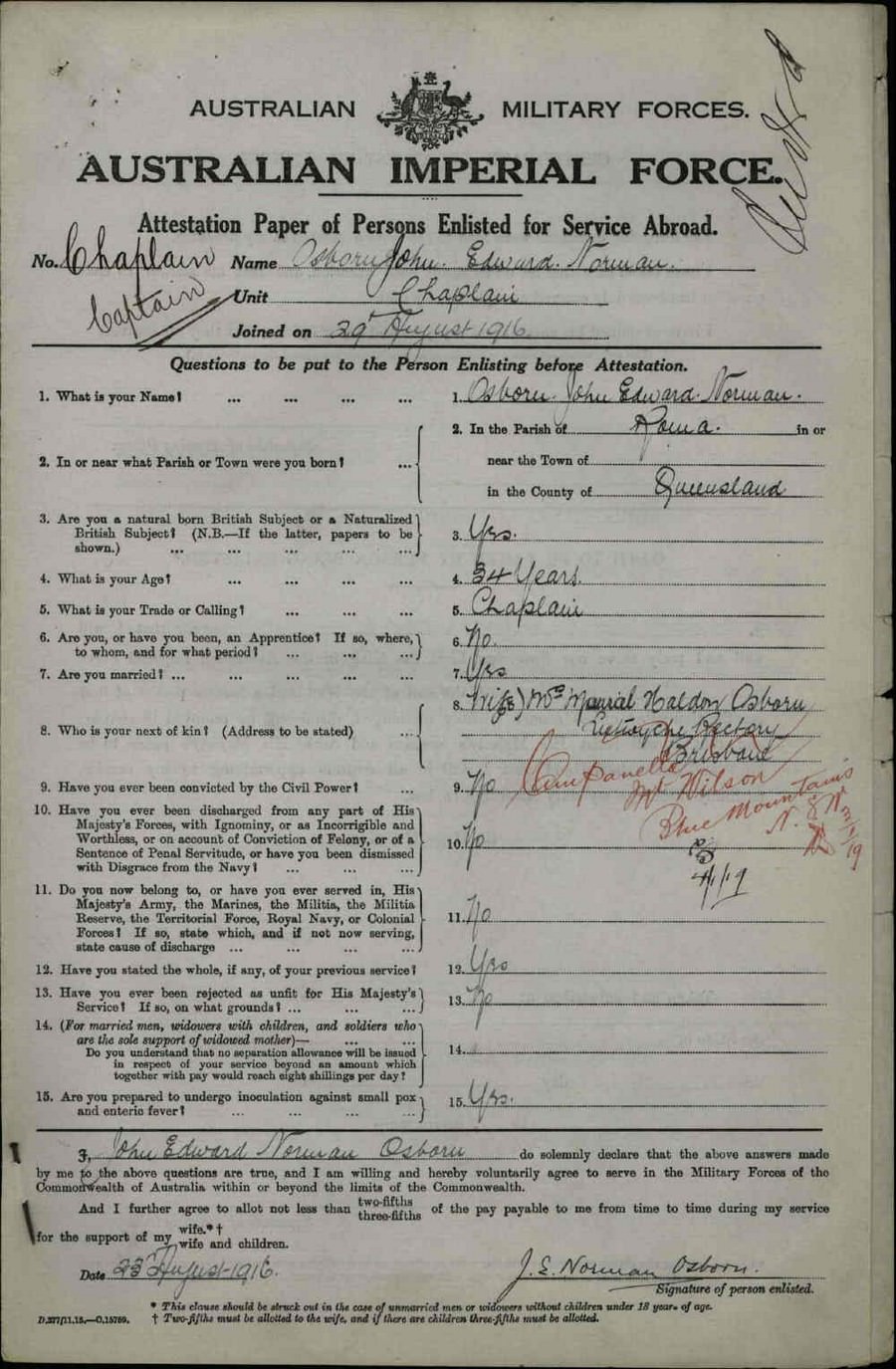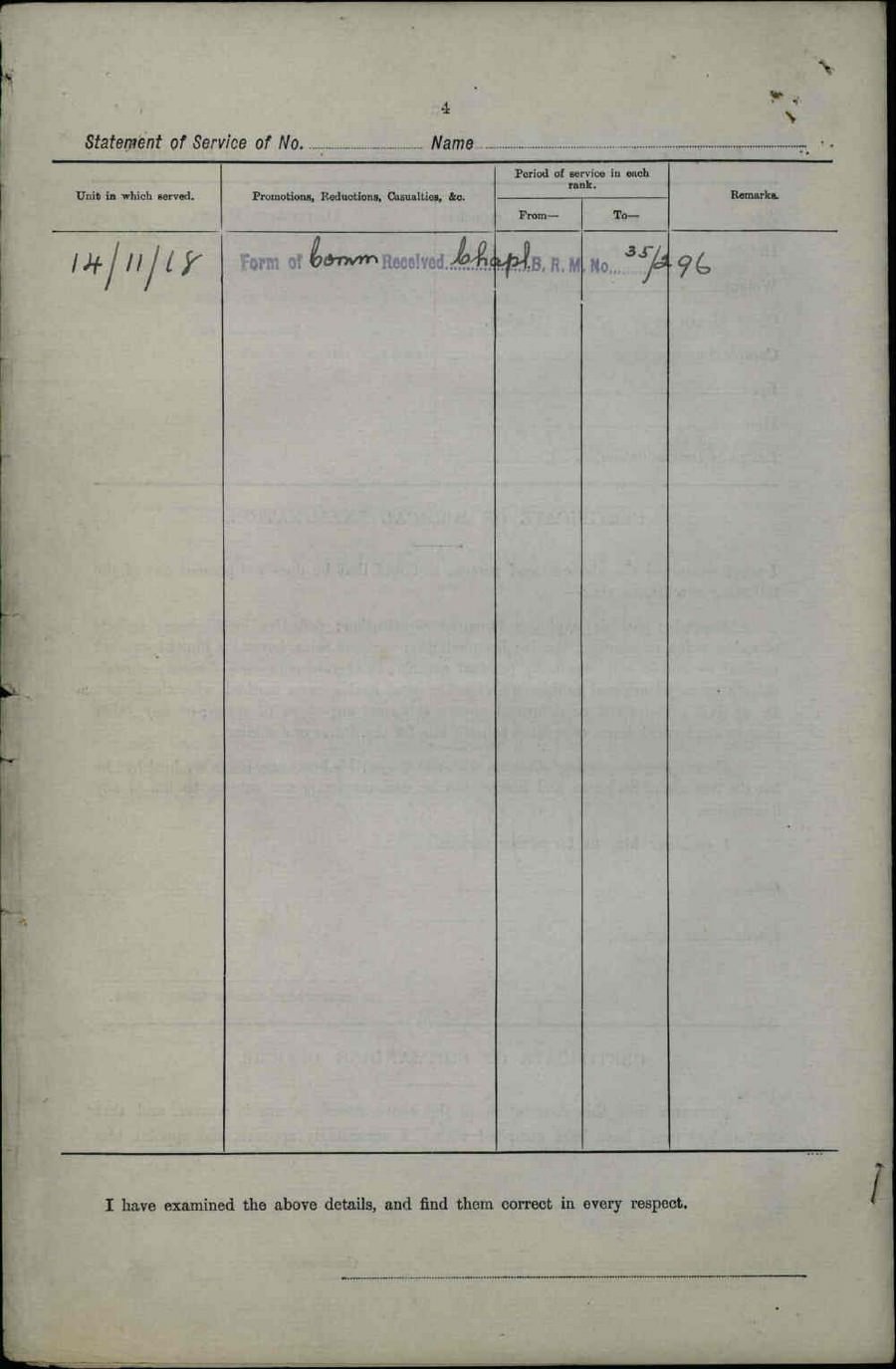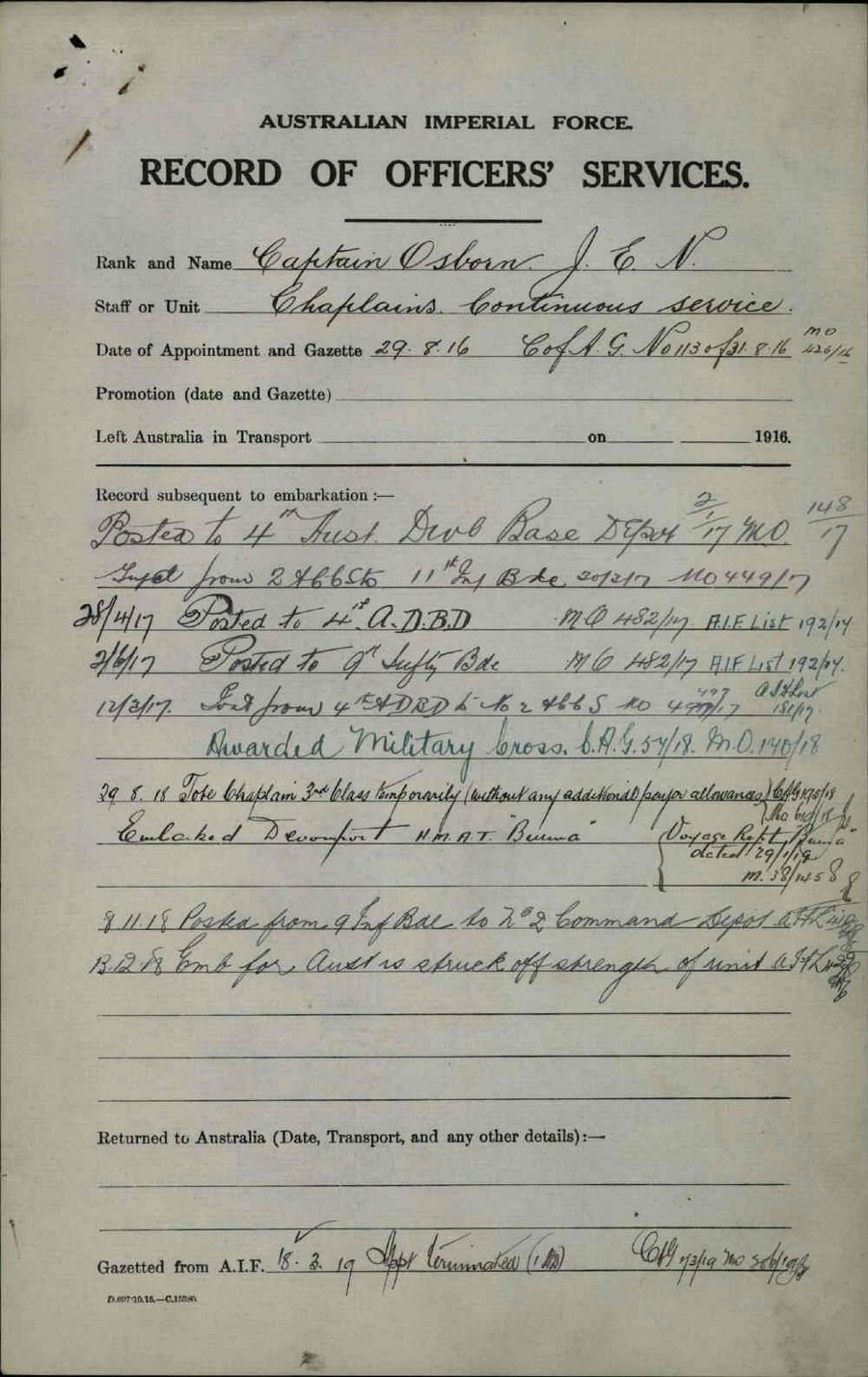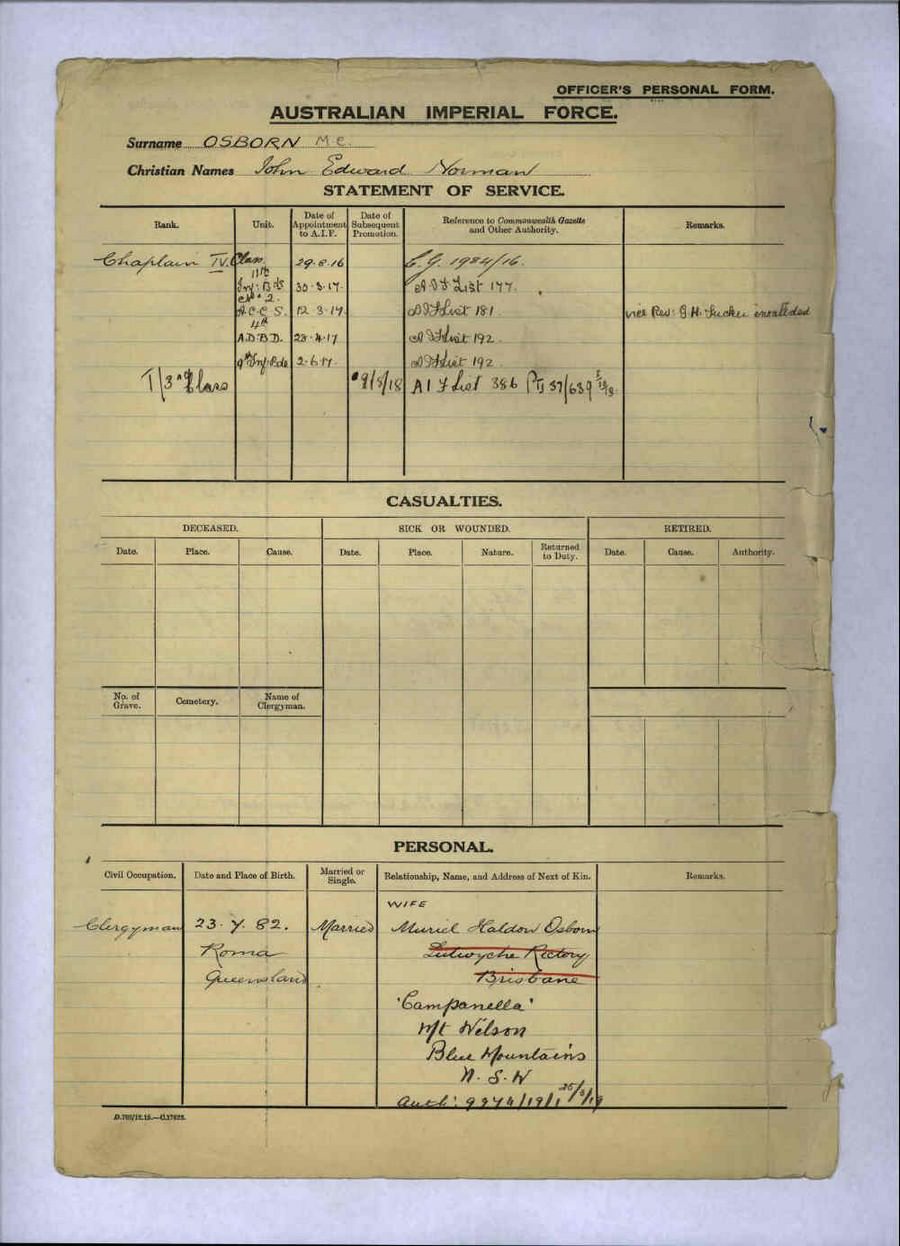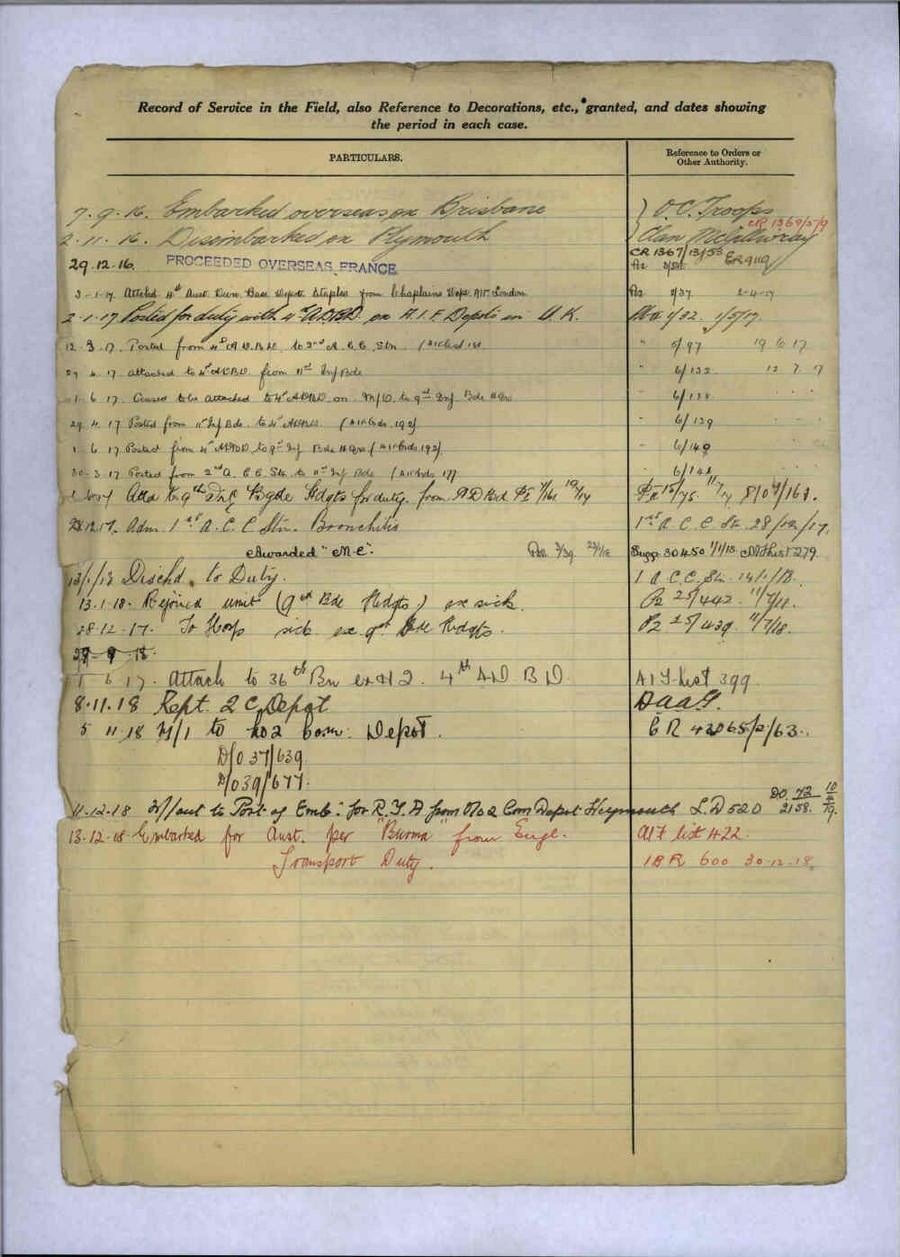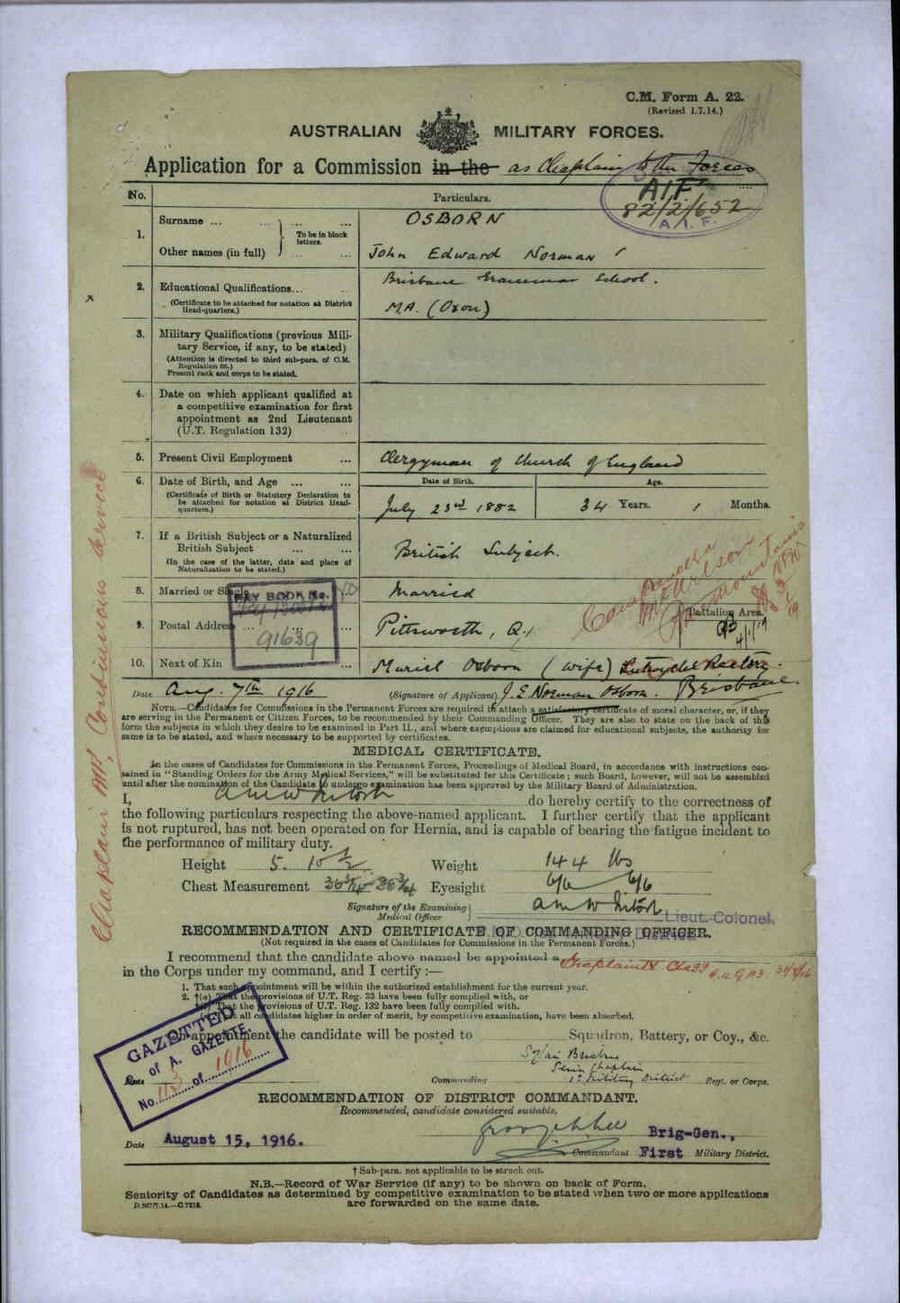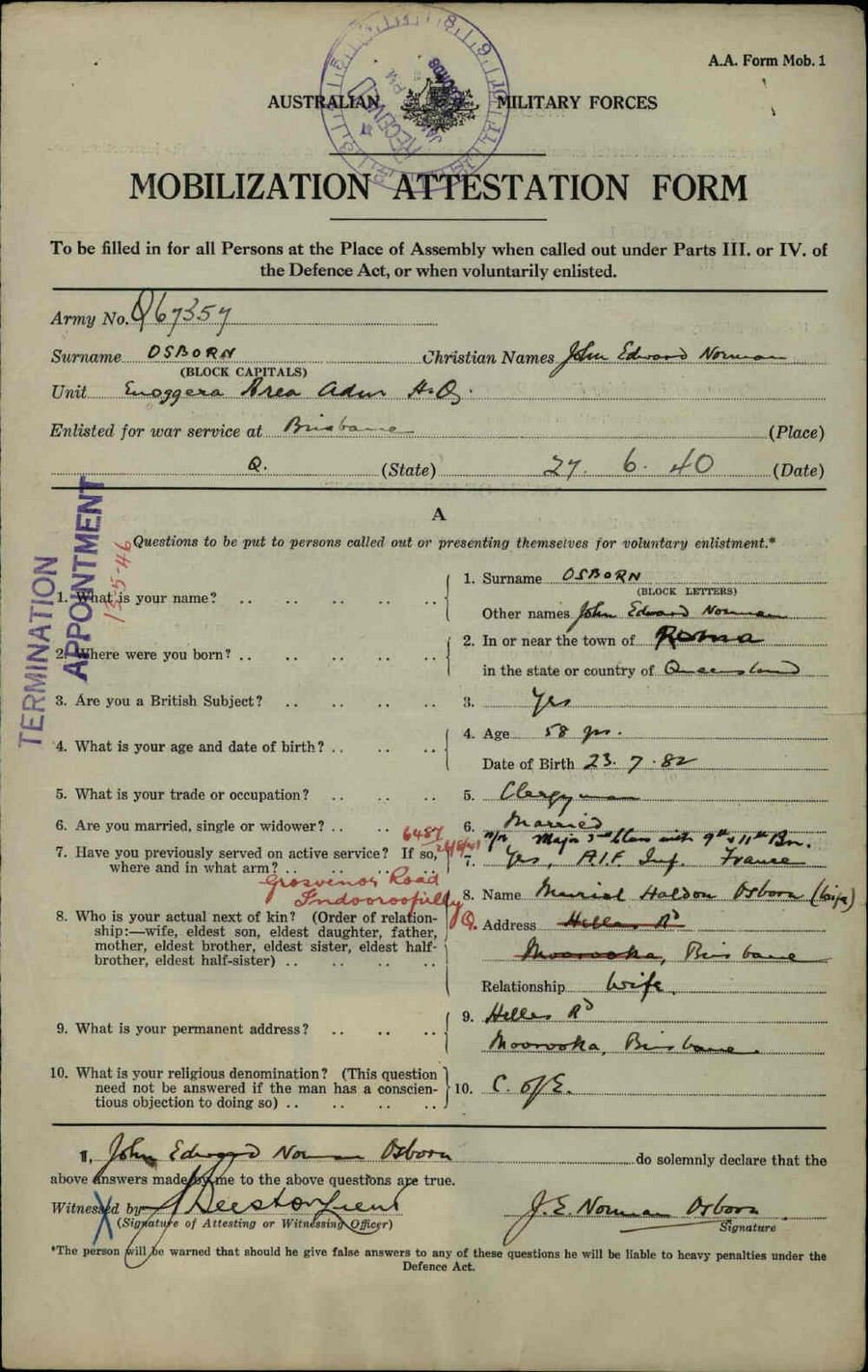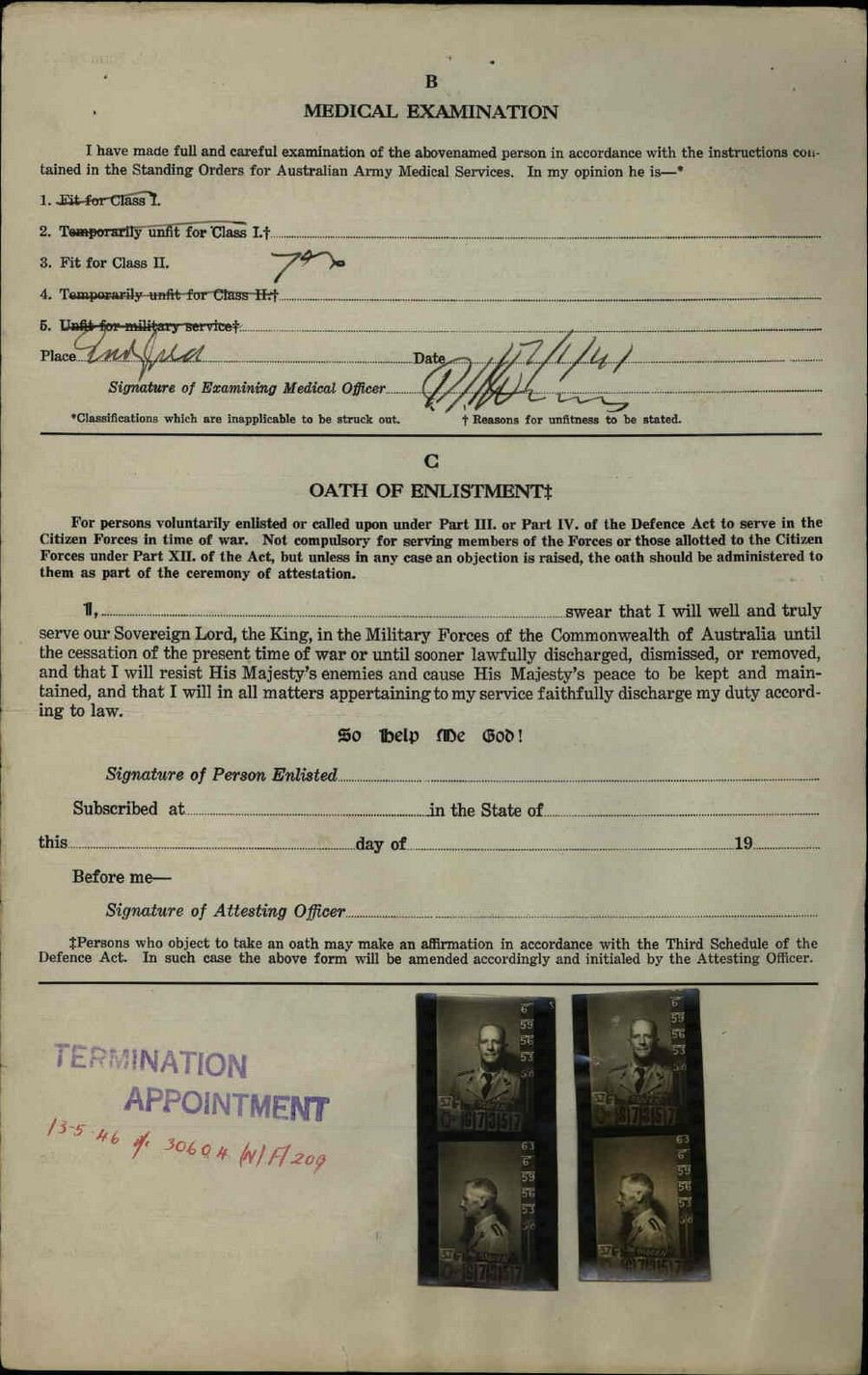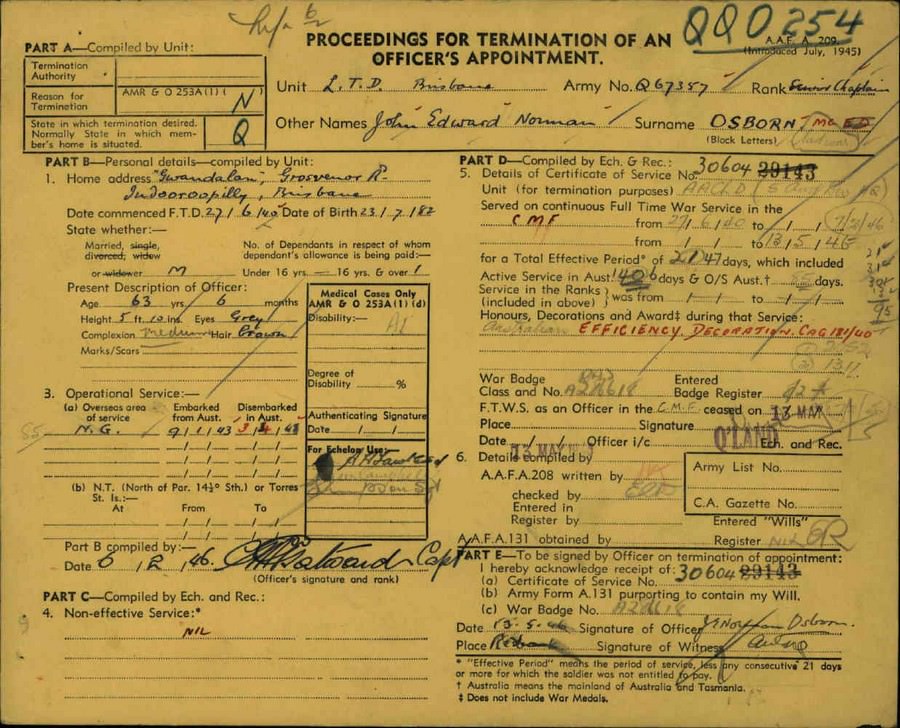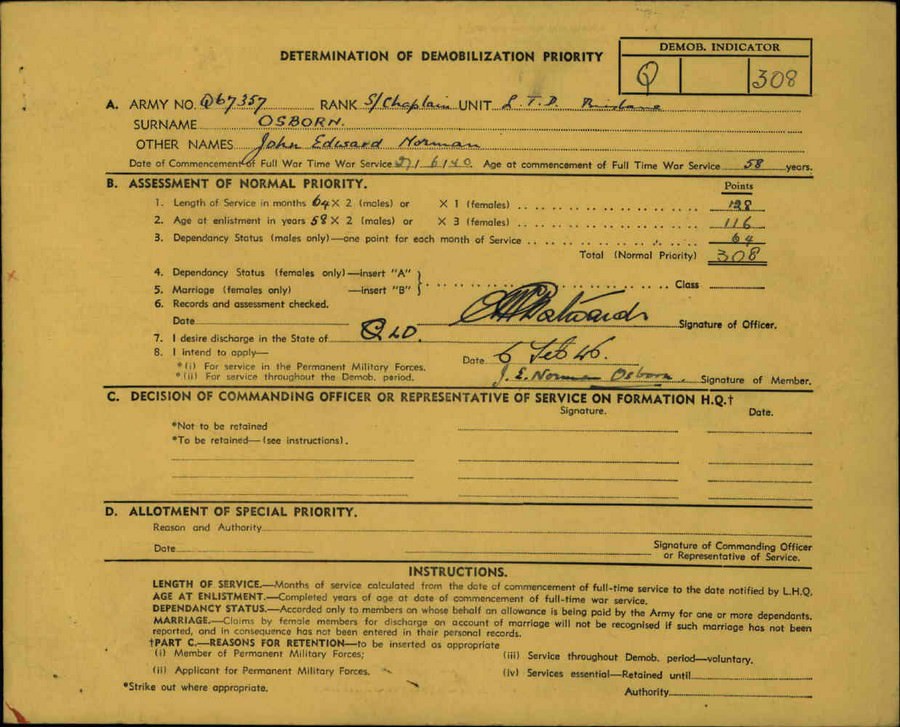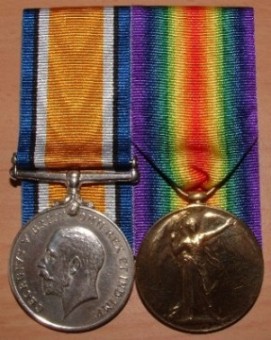
34th BATTALION - 9th INFANTRY BRIGADE A.I.F.
Lieutenant: 24 Arthur Edward COLLINGS.
Born: 12 Jun 1875. Marylebone, Middlesex, London, England.
Married 1: 1917. Sevenoaks, Kent, England.
Wife 1: Kathleen Mary Collings. nee: Fitch. (18..-1918) Died, England.
Married 2: 21st December 1918. London, England.
Wife 2: Violet Eleanor Cates. nee: Horley.
Died: 1951. Isle of Wight.
Father: Arthur Christopher Collings.
Mother: Eliza Collings.
INFORMATION
Arthur Edward Collings enlisted with the 34th Battalion AIF on the 4th of January 1916 and was an original member and left Sydney on board HMAT A74 "Marathon"

HMAT A74 "Marathon"An interesting Great War Australian Officer's medal group to Lieutenant A.E. Collings, 34th Battalion, Australian Imperial Force, who had previously served with Robert's Horse in the Mashonaland Campaign of 1896 and the Boer War of 1901-02, and most unusually with the German New Guinea Expedition,. presumably having volunteered his services with the German forces! British War Medal & Victory Medal both named to: (LIEUT. A.E. COLLINGS. A.I.F.).
Arthur Edward Collings was born in London. A farmer by trade when he enlisted into the Australian Imperial Force, he is also shown as having led an eventful colonial military life. He had previously served with Robert's Horse in the Mashonaland Campaign, during 1896, and later in South Africa in 1901-02 fighting in the guerrilla war against the Boers. On his discharge at the end of his service, he is then shown as having gone on to serve in the German New Guinea Expedition. He was presumably farming out in Australia at the outbreak of the Great War, and attested for the AIF on 4th January 1916, at Marrickville, New South Wales, being initially allocated to the 5th Reinforcements for the 5th Field Artillery Brigade as a Gunner, he was rapidly promoted to Acting Sergeant on 15th January 1916 and was commissioned as a 2nd Lieutenant with the 34th Infantry Battalion, AIF, on 12th August 1916. In mid 1916 he had served with the 9th Infantry Brigade Headquarters, until his commission, and with the 34th Battalion he served in France. He was discharged as a Lieutenant in England on 20th December 1918. He is known to have been wounded in action on 26th May 1918.
20th December 1918 Arthur was discharged at his own request as a Lieutenant in England on 20th December 1918. His letter of resignation says that he needs to sort out the matter, and that there is no reason for him to return to Australia as he was "only visiting" when war broke out. He gives his home address as 12 Edith Rd, West Kensington.
There appears to be a number of discrepancies about Arthur's previous war records. There is no mention of any service during the Boer War as he does not appear on any medal rolls during this period. There is also no record of any service with the Expeditionary Forces either.
Family Information
1881 census the Collings family lived at at 46 East Street, Marylebone, London.

Kathleen Mary Collings died in November 1918 with no will and a large debt. Arthur re married only a few weeks later to the daughter of a retired Bank Manager.

Marriage Certificate 2nd December 1918 between Arthur Edward Collings a Farmer from the Auto club, Pall Mall, London and Violet Eleanor Cater nee: Horley, a widow.
There appear to be two children Katharine J Collings, b1921 and Gustave R Collings b1925.(he must be Gustave Rex Collings, commissioned 2nd Lt in 1945)
1919 Jul 15. London Gazette reports that a Receiving Order was rescinded. Arthur Edward Collings, Railway Transport Office, Waterloo Station, in the county of London, an Officer in His Majesty's Army.
1920 Jul 27 Joined. The Auxiliary Division of the Royal Irish Constabulary. Service no 19.
1920 Nov 3. Resigned from ADRIC at his own request
1939 Register Living at 9 Dewhurst Road , Hammersmith, London,. He is single "Retired Dominion Service" Born 12 Jun 1880.
1951 Oct/Dec Died Isle of Wight ?
David Grant
Roberts' Horse
In the dispatch of 6th February 1900 Lord Roberts, after referring to the organisation of the Colonial Division under Brigadier General Brabant (see Cape Mounted Rifles), said: "Two other regiments, designated, at the particular request of the members, Roberts' Horse and Kitchener's Horse, have also been formed, chiefly from men who have found their way to South Africa from various parts of the world". These corps were at first intended to be called 'The second and third regiments of the South African Light Horse', but the names were changed as a compliment to the new Commander-in-Chief and his chief of the staff.
Appended to the dispatch of 16th February, written after Lord Roberts had commenced his great movement for the relief of Kimberley and the advance on Bloemfontein, there is a list of the troops taking part in the movement, and among these is Roberts' Horse, set down at a strength of 550. Before this the corps had been doing some work on the western railway, and a detachment had taken part in an expedition to Prieska, but the regiment was attached to General French's Cavalry Division before it set out for Kimberley. They joined General French at Ramdam before midnight on 11th February, and at 2 am on the 12th started off with the cavalry division to seize the fords on the Riet. French did not carry the whole of his mounted infantry with him in his rush to Kimberley: he had to leave strong bodies on the 13th and 14th to keep touch with the infantry divisions who were following. On the 15th part of Roberts' Horse was in the Mounted Infantry Brigade under Colonel Hannay when Cronje was discovered to have left Magersfontein and to be trekking through the gap which, on 15th February, existed between the cavalry heading for Kimberley and the main army. As it was, the gallant Hannay's Mounted Infantry, although but very recently raised and mounted, did splendid work from the time Cronje was discovered until he was surrounded at Paardeberg. Mr Goldmann, in his 'With General French and the Cavalry', gives a fine description of the rush to Kimberley, the heading of Cronje, and the many engagements on the way to Bloemfontein. At page 77, speaking of the seizing of the drifts on the Riet, he tells how General French manoeuvred so as to deceive the enemy as to the point of crossing: "Finding that his bait had taken, General French at once made for Dekiel's Drift with the first Brigade, the mounted infantry, and Roberts' Horse. The banks of the river were very steep and difficult, but by following the track a fordable place was discovered. Some Boers, seeing the cavalry make a dash for the ford, also had a race for it, and attempted to dispute the passage, but, out-manoeuvred by a boldly handled party of Roberts' Horse, came up too late to offer more than a show of resistance. Captain Majendie of the Rifle Brigade, attached to Roberts' Horse, was the only man killed, and but two were hit". One man of Roberts' Horse was killed. On the 15th Lieutenant Gray was wounded near Kimberley. On the 16th some of the corps were in the fighting round Kimberley. On the 18th a portion of the corps were assisting Brigadier General Gordon to the north of Paardeberg. Gordon had left Kimberley that morning about twenty-four hours after Broadwood's Brigade, which, it may be remembered, headed Cronje on the 17th. On the 19th Roberts' Horse did good work in seizing Koedoesrand Drift and the hills south of it, and part of them were at the taking of Kitchener's Hill next day. This was an important position two miles south of the Boer laager, which, if held by the enemy, made it possible for them to send help to Cronje. The regiment had casualties several times between the 15th and 28th February, including Lieutenant Grant wounded. This officer died in Kimberley shortly afterwards. During that period they had suffered severe hardships: the work had been incessant, and the rations for officers, men, and horses most scanty.
In the despatch of 15th March it was noted that Roberts' Horse had, about 2nd March, been put into the brigade of mounted infantry under Lieutenant Colonel Alderson, along with the first and second regiments of regular mounted infantry, the New Zealand Mounted Rifles, and Rimington's Guides. At the seizing of the positions commanding Bloemfontein on the evening of 12th March Roberts' Horse had again a prominent place. On their arrival at Bloemfontein the strength of the regiment was 35 officers, 358 men, and 387 horses.
After the occupation of the capital Alderson's Mounted Infantry, including Roberts' Horse, accompanied Major General Broadwood on an expedition to Ladybrand. Broadwood, thinking the enemy was in too great force beyond Thabanchu to allow of his small body remaining long so far from a base, decided to retire on Sannah's Post. On 30th March he fought a rear-guard action. On the 31st his camp was shelled from the east or rear at daybreak, and he decided to push on to the west. In his report he said: "Roberts' Horse and 'U' Battery moved off on opposite sides of the baggage column, which was clearing rapidly out of the shell-fire, and before they had cleared the column came to a deep spruit about 2000 yards west of the bivouac. This spruit was occupied by about 600 of the enemy, who seized five guns of the battery and the convoy, and opened a heavy fire on Roberts' Horse and the main body of the cavalry which was following: these retired out of fire”. 'Q' Battery wheeled into action about 1200 yards from the spruit, and the Durham Mounted Infantry formed up on its flank. This checked any intention of the enemy to come out of the spruit. General Broadwood ordered the Household Cavalry and 10th Hussars to move to the south, crossing Koorn Spruit above the Boers, and to press down the gully on their right flank. The cavalry got across, but do not seem to have made any determined attempt to press or enfilade the Boers. To Alderson's Mounted Infantry, including Roberts' Horse, was allotted the post of honour—that of rear-guard—and to the splendid stand which they made was due the fact that any of the guns were saved. When Alderson was finally ordered to retire he was holding his position with comparatively little difficulty. A regular officer who saw their work that day has told the writer that nothing could have been finer than the conduct of Roberts ' Horse throughout the trying hours after the first outburst of fire from the spruit. 'Q' Battery had to leave two guns, for which no horses were available; indeed the guns saved were only got out by hand and with the greatest difficulty. Lieutenant Maxwell, DSO, 18th Bengal Lancers; Sergeant J C Collins; Troopers T Murphy and V D Todd, all of Roberts' Horse, were mentioned by Brigadier General Broadwood. Lieutenant Maxwell got the Victoria Cross for heroic efforts made in the saving of the guns, and the others got the DCM. In his telegraphic despatches of 1st and 2nd April Lord Roberts mentions that Roberts' Horse and some regular mounted infantry covered the retirement of the guns, first from the proximity of the spruit and again from the position taken up by 'Q' Battery.
The approximate losses of the regiment were Lieutenant Growler and about 30 men killed, Major A W Pack Beresford, Captain H C Smith, Captain P D Bray, Lieutenant Darley, Lieutenant Kirkwood, and Lieutenant and Quartermaster Hawkins, and about 50 men wounded. About 70 were made prisoners. Notwithstanding the losses at Sannah's Post the corps was soon in action again, taking part in the operations under Generals French and Rundle for clearing the south-east of the Orange River Colony and effecting the relief of Wepener. On 23rd April, at Kariefontein near Leeuwkop, they were sharply engaged and had some casualties. Several correspondents spoke of the regiment as doing their work exceedingly well and taking a prominent share in the attack on a strong position. On 1st May Lord Roberts inspected the corps and complimented them on the good work which they had done.
Roberts' Horse were with Ridley and Ian Hamilton in the next advance from Bloemfontein to Pretoria. The regiment was now in the 5th Mounted Infantry Corps under Lieutenant Colonel Dawson, along with the 5th Mounted Infantry Regulars and Marshall's Horse. Frequently during the advance Roberts' Horse was heavily engaged and suffered sharp losses. The regiment was in action to the south of Pretoria before the occupation; at Diamond Hill, 11th-12th June; and in other fighting immediately after that battle. They took part in the initial operations for the surrounding of Prinsloo, and again had sharp fighting near Heidelberg on the north side of the Vaal on 23rd June. The day was a disastrous one for the officers of the corps. Captain Whitaker was mortally wounded, Captain M Browne and Lieutenants C L Learmonth and Rex King were wounded, while there were about 20 casualties in other ranks. Broadwood's Cavalry Brigade and Ridley's Mounted Infantry were detached by Sir Archibald Hunter to pursue De Wet when he broke out of the Brandwater Basin, and between 16th and 20th July Roberts' Horse were frequently engaged with the Boer rear-guard, having Lieutenant J C Collins wounded, and about half-a-dozen other casualties. On the 24th, at Stinkhoutboom, 150 of the corps boldly pursued and captured some waggons, but the detachment was in turn attacked, and only managed to withdraw their booty by the prompt assistance of Kitchener's Horse. They took part in the pursuit after De Wet and his men had broken across the Vaal on the night of 6th August, and thereafter they operated in the Krugersdorp district under Ridley and Clements. The regiment was present in Pretoria as representing the South African forces at the ceremony of proclaiming the annexation on 25th October 1900.
In November the regiment was with Hart in the Gatsrand, and frequently had fighting, as on 23rd and 24th November, when they had one killed and two wounded. Their good work at this period was referred to by the General. After Clements' mishap at Nooitgedacht, 13th December 1900, a large force was employed to clear the country west of Krugersdorp. Roberts' Horse took part in these operations under Brigadier General Cunningham, and was engaged at Olifant's Nek on 22nd January 1901, and in the action at Middelfontein, 23rd. January. During February and March they were often in action, and on 17th March Lieutenant F C Montgomery was killed near Lichtenburg, in the Western Transvaal. On the 18th, Lieutenant A F Todd and some men were wounded.
In the second phase of the war—that is, after Lord Roberts had handed over his command to Lord Kitchener—the regiment had one signal opportunity of gaining distinction. In the dispatch of 8th May 1901, Lord Kitchener, dealing with operations in the Western Transvaal, said: "A night march across the hills south of Kaffir's Kraal resulted in the surprise of the Boer camp at dawn of the 14th April, the larger being rushed by the men of Roberts' and Kitchener's Horse under Lieutenant Colonel Sir Henry Rawlinson. The enemy, numbering some five or six hundred, fled in haste, pursued by our troops. The enemy's losses included 6 killed, 10 wounded, 23 prisoners, 1 12-pounder gun, 1 pom-pom, 2 ammunition wagons", and an immense amount of ammunition. "Our casualties were 3 men wounded". To have accomplished so telling a victory with such a light casualty list reflected the greatest credit on Sir Henry Rawlinson and the officers and men of the two regiments.
Roberts' Horse continued to do good work in the Western Transvaal under Sir Henry Rawlinson and other leaders. For a time they were in the column of Colonel Hickie (see dispatch of 8th July 1901). On 8th and 9th July, Roberts' Horse had 6 wounded, and Kitchener's Horse 3 wounded. They were afterwards employed in the Eastern Transvaal under General Bruce Hamilton, and took part in some of his very successful movements by which large numbers of prisoners were taken. To the close of the war they maintained the splendid reputation which they had gained in the first six weeks of their service.
The Honours and Mentions gained by the regiment were as follows:— Lieutenant F A Maxwell, 18th Bengal Lancers, attached Roberts' Horse, gained the Victoria Cross. Lieutenant Maxwell was one of three officers not belonging to 'Q' Battery, RHA, specially mentioned by Lord Roberts as having shown greatest gallantry and disregard of danger in carrying out the self-imposed duty of saving the guns of that battery during the affair at Koorn Spruit (Sannah's Post), March 31, 1900. This officer went out on five different occasions and assisted to bring in two guns and three limbers, one of which he, Captain Humphreys, and some gunners dragged in by hand. He also went out with Captain Humphreys and Lieutenant Stirling to try to get the last gun in, and remained there till the attempt was abandoned. During a previous campaign—Chitral Expedition, 1895—Lieutenant Maxwell displayed gallantry in the removal of the body of Lieutenant Colonel F D Battye, Corps of Guides, under fire, for which, although recommended, he received no reward".
Mentions were gained as follows:— LORD ROBERTS' DESPATCH: 31st March 1900, for advance to Bloemfontein.—Colonel H L Dawson, 9th Bengal Lancers, attached, awarded CB; Captain A W Pack Beresford, Royal Artillery; Troopers L Chadwick and C H Worrod. For Sannah's Post, the names already quoted.
LORD ROBERTS' FINAL DISPATCHES.—Captains E R King, F C Vignolles, and J B J Baumgartner; Sergeant Major (Lieutenant) Montgomery; Lieutenants R Singer, C Ross; Doctor Leslie; Farrier-Sergeant Robinaus; Corporals. A Hayne, R Thurston, E D Patterson; Troopers L H T Apel, J M'K Chadwick, G Cullen, P Fitzherbert, T Jones, H Hilton, T Murphy, V D Todd.
LORD KITCHENER'S DISPATCH: 8th March 1902.—Brevet Major H C Smith, Royal Dublin Fusiliers, for conspicuous good service in General Bruce Hamilton's operations in Ermelo district, December 1901 and January 1902. Sergeant Brown, for great dash and energy on occasion of capture of Boersrermelo, December 11 and 13. Sergeant J C Collins and Trumpeter O'Hara got the DCM. Trooper Chadwick received one of the four scarves knitted by Queen Victoria, he having been selected as the South African representative. Gallant conduct in the field was the primary consideration in the awarding of these scarves.
...................................................................................................................................................................................................

The Queens Scarf awarded to A. Du Frayer15 August 1956
Alfred Henry Du Frayer was born in Victoria on 20th September, 1871, educated at Brighton Grammar School, Mellbourne, from 1864 to 1889, and after employment on Airlie Station, Queensland, the property of his uncle, he enlisted in the NSW Mounted Rifles Contingent for South Africa, entering camp at Randwick Rifle Range on 27th December, 1899, taking with him one horse.
Du Frayer embarked on transport "Southern Cross" at Sydney on 17th January, 1900 as a private in "C" Squadron, N. S.W. Mounted Rifles, arriving at Cape Town on 17th February. He saw action with his unit at Poplar Grove, Dreifontein, Karee Siding, Vet River, Zand River, near Johannesburg, Pretoria and Diamond Hill and was awarded the Queen's Medal with four clasps.
Invalided to Australia after enteric fever, arriving at Sydney per S.S. Nineveh on 17th September, 1900, and discharged from NSW Military Forces with rank of Private on 20th September, 1900. N.S.W. Military Forces General Order No. 141 of 10th October, 1900, contains a list of 24 N.C.O's and men recommended for Distinguished Service, among which appears the name of 103 Private A.H. Du Frayer for bringing in a dismounted comrade under heavy fire on 11th April, 1900, which was some days after the action at Karre Siding on 29th March. A side-note indicates that Du Frayer was "Awarded Her Majesty's Scarf".
Referring to this incident the Sydney Mail of 22nd September, 1900, quotes Capt. Hilliard (Commander of "C" Squadron, N.S.W. Mounted Rifles, of which Du Frayer was a member) as saying:- "In April last, when the regiment was on outpost duty near Karee a Reconnoitring Patrol was sent out in the early morning in charge of Capt. Legge. When approaching a farmhouse flying the white flag every precaution was taken, but seeing no-one about, the men, numbering about 12, rode within the stone fence enclosure when they were immediately fired upon from within the house and also by a party of Boers concealed in a donga on the veldt. The gateway was narrow but all succeeded in getting away safely except Private Clark of' "B" Squadron whose horse was shot and, in falling, stunned his rider. Du Frayer noticed the predicament and turning back galloped to Clark's rescue. The gateway was only about 150 yards from the farmhouse but Du Frayer dismounted, shook Private Clark into a semi-conscious state and mounting again, got Clark up behind him and finally out of danger. Private Du Frayer was exposed to a heavy fire from both quarters previously mentioned."
Dufrayer later rejoined the Forces, being appointed as 2nd Lieutenant (Supernumerary) in 1st Infantry Regiment N.S.W Military Forces on 21st December, 1900. Transferred to the Unattached List 1st July, 1903. Retaining the above rank until 10th December,1904, when placed on the Reserve of Officers as 2nd Lieutenant. He had, in the meantime, been granted leave of absence from 8th March,1902 to 30th June, 1902.
THE QUEENS' SCARF Other than the bare reference to the Scarf in General Order No. 144. of 10th October, 1900, quoted above, little was known of the existence of such an Award, but from mentions in several magazines it appeared that Her Majesty Queen Victoria had at the age of 82 personally worked four scarves for distribution to members of her Colonial Forces then serving in South Africa. Some reports indicated that one Scarf each was for British, Scotch, Irish and Colonial Contingents, while other sources stated that one scarf was to go to each of the Colonial Contingents, i.e., Canadian, Australian, New Zealand and South African.
The scarves were of thick brown wool, crocheted in a block pattern and were five inches wide, and long enough to be worn as a sash similar to a Colour Sergeant's sash of the period, which was the manner in which it was worn by Du Frayer but whether intended by Queen Victoria to be worn as a sash or a scarf it is not known. In a letter dated 8th August,1900, from South Africa to Queen Victoria, Lord Roberts informs Her Majesty of the names of the four recipients and states:
'Your Majesty will, I daresay, remember your scarves made by your Majesty to be given to your Colonial private soldiers. There was the greatest competition to become the fortunate possessor of these scarves, and it took a very long time to get the required information which would enable me to decide as to the merits of those eligible for such a coveted reward, on account of the troops being very widely scattered and so constantly on the move. It was finally settled that the following men were in all respects the most deserving of the great honour,viz:
Canadians Private R.R. Thomson, New South Wales Private Du Frayer, New Zealand Private H.D. Coutts, Cape Colony Trooper L. Chadwick.
It turns out, as your Majesty will see from the enclosed correspondence, that the Canadian recipient is an American. He is evidently a grand fellow and as he is fighting for us and was unanimously elected by his comrades in Robert's Horse as the man most worthy in all respects to receive the scarf I decided that the question of his nationality need not be considered a deterrence. I hope that this will meet with your Majesty's approval.'
Lord Roberts reference to an American recipient causes some uncertainty, because he states the Canadian soldier to be an American, whereas he also avers that the American was a member of Robert's Horse. Robert's Horse was a unit raised in South Africa, previously known as the South African Light Horse and "composed mainly of South Africans, but with a free sprinklings of other Colonials, Texan cowboys and British yeomen."
A Trooper, L.Chadwick of Roberts' Horse was mentioned in Lord Roberts' Dispatch of 31st March, 1900, and Private R. R. Thompson of The Royal Canadian Regiment was mentioned in Roberts' Dispatch of 2nd April, 1901. So it would appear that the American recipient was a member of the Cape Colony Forces and not of the Canadian Contingent. Incidentally, Chadwick and Thompson were the only ones of the four "Scarf-Holders" to be mentioned in Dispatches and there is no record that any of the four were recommended for a V.C. or any other decoration. (12) Private H.D. Coutts, the New Zealander, returned to South Africa with the New Zealand Seventh Contingent as Captain and Quartermaster.
In May, 1901, Their Royal Highnesses the Duke and Duchess of York and Cornwall (later King George V and Queen Mary) visited Australia in the course of their World Tour and for the opening of Federal Parliament. During the visit to Sydney, a Royal Review was held at Centennial Park on 28th May, 1901, and after an inspection of the troops on parade, the Duke presented Du Frayer (now a 2nd Lieutenant in 1st Infantry Regiment) with the Scarf.
Although the proceedings were reported fully in the local and interstate Press there is nothing to indicate other than that the Duke handed the Scarf to Du Frayer with "a few gracious words of compliment and congratulation", that the Governor-General, Lord Hopetoun, dismounted and assisted Du Frayer to adjust the scarf and that Du Frayer "respectfully saluted, mounted his charger and rejoined his Company". (14). The total extent of the reference in the Sydney Bulletin of the presentation is "When the Mighty Atom presented the Queen's scarf to the brave Du Frayer, the recipient didn't know how to put it on, so the Governor-General got off his charger and showed him. Until the scarf was unrolled we all thought it was a folded string bag". (15).
From close examination of the report in the Sydney Morning Herald of 29th May, 1901, it would appear that the Duchess was not actually present at the presentation but seated in the Royal Pavilion with the ladies of the Royal Party and left the ground shortly after, when the Duke proceeded to inspect the Cadets and veterans of South Africa and other wars. There is certainly nothing available to support the extravagant claims of "Promoted to Captain", "Promises from the Duchess", "Proclaimed to the populace by the Duke that whenever the Scarf was seen or worn within the British Empire it should receive the salute of Present Arms", "Public Holiday proclaimed in his (Du Frayer's) honour", (There was a Public Holiday on the following Monday, but that was on account of that day being the Duke's birthday) or that Du Frayer joined the Royal Household for the remainder of the Royal Tour of Australia. With regard to the latter claim, the papers published daily the names of those ladies and gentlemen in attendance on Their Royal Highnesses. Du Frayer's name does not appear amongst these. He is reported to have been present at a levee held at Government House on the morning of Wednesday the 29th May, 1901, but was not in the "List of Gentlemen having a card of private entry." (l6). In "The Right Hon. the Earl of Athlone" (M.E.Sara) on page 102 is the list of personnel of the Royal Household for the Tour of the Duke of York, including those who Joined and left the Household in the various Colonies.
(The Earl of Athlone, then H.R.H. Prince Alexander of Teck, headed the A D.Cs on the Tour. He was brother of the Duchess of York, later Queen Mary). There is no mention of Du Frayer in this publication nor in records, now in Archival custody, for the period under review of the Department of External Affairs and the Governor-General's Household.
Probably owing to the intense publicity given to the Scarf by the wearer, the "Sydney Bulletin" at this stage waxes somewhat satirical. In its edition of 29th June, 1901, is the following:- "Lieutenant Du Frayer and his Scarf are a much-photoed pair in this town. Sometimes the scarf is pictured without the Lieutenant. Never the Lieutenant without the scarf. It is a homely brown thing - such as any old lady might knit - but it has the merit of being entirely the late Queen's work".
The London Gazette No. 27443 of 17th June, 1902, contains the last South African Despatch of Lord Roberts dated London 1st March, 1902, which ends "In conclusion, I desire to place on record that, in April 1900, Her late Majesty Queen Victoria was graciously pleased to send me four woollen scarves worked by Herself, for distribution to the four most distinguished Private soldiers in the Colonial Forces of Canada, Australia, New Zealand and South Africa then serving under my command. The selection for these gifts of honour were made by the officers commanding the contingents concerned, it being understood that gallant conduct in the field was to be considered the primary qualification.
The names of those selected, to whom the scarves have already been presented, are as follows: Private R. R. Thompson R. Canadian Regt, Private Dufrayer N.S.W. Mounted Rifles, Private H. D. Coutts New Zealand Contingent, Trooper I Chadwick Roberts' Horse.
This is the first instance in which Du Frayer's name appears in South African Despatches. That the Scarf was not intended as an Award is suggested by Lord Roberts' use of the words "distribution" and "selection" in the above Despatch and the phrase "it being understood that gallant conduct in the field was to be considered the primary Qualification" infers that there were other considerations. This is exemplified by the phrase "in all respects the most deserving" (twice) in Lord Roberts' letter to Queen Victoria of 8th August, 1900.
In Colonials in South Africa (Stirling) p.411, under the heading "Honours and mentions gained by N.S.W. Contingents" is enumerated the names of officers and men mentioned in each Despatch and giving the date of the Despatch. Du Frayer's name does not appear until this entry. "Lord Roberts Final Despatch 1st March 1902 - Pte. Du Frayer, Mounted Rifles got one of the four scarves worked by her late Majesty for distribution among men of Colonial Contingents."
It is noteworthy that this is not the first instance of scarves being presented for service of a martial nature, as seen by the following extract from Orders of the Madras Government: "Public Consultation. Fort St. George. Thursday, 30th Decr. 1680. The Soldiers and Peons having performed a good piece of service in bringing the goods from Pullimelee which were carried there by the Mutineers it is thought fit to gratify them, to the inure Commission Officers each a silk scarfe, and a hhd arrack to the Garrison, to the Chief Peon, 21/2 yards Broad Cloth and 5 Pags amongst the Peons for a feast".
Another point worthy of note is that, without exception, in official orders up to 21st December, 1900 (when commissioned) Du Frayer's rank is given as "Private", whereas in all unofficial references (newspapers, journals etc.) he is described as "Trooper" or "Lieut. - formerly Trooper". The solitary official instance of the initials "Q S." appearing after the name Du Frayer is found in The N.S.W. Army and Navy List of 1901, where the initials "Q S." appear in one of three insertions of Lieut. Du Frayer's name. They are, however, erased from the next edition of the same List and from any subsequent List, but a footnote added denoting "Awarded Queen's Scarf for service in South Africa".
Du Fayer later settled in South Africa and married there. In the 1914-18 conflict he enlisted in the South African forces and served in South-West and East Africa. In December, 1938, Du Frayer, then living in Tanganyika, wrote to Queen Mary requesting that she forward to King George VI for consideration, the matter of a pension equal to the V.C. and the grant of a special ribbon which he contended was promised to the recipients of the Scarves. The letter was forwarded by Her Majesty's Private Secretary to the War Office. This Department informed the Private Secretary that "although there are no official records kept at the War Office, during the South African war a number of scarves made by Her late Majesty Queen Victoria were presented to certain selected soldiers as a mark of Her Majesty's personal interest in their welfare" and "There is no question, as far as I know of a special ribbon or pension being granted at the same time of the scarf". This reply was sent to Du Frayer by Queen Mary's Private Secretary, who regretted being unable to send a more favourable reply.
Du Frayer died in 1940, and was buried with military honours at Old Shinyanga in the Lake Province of Tanganyika. In November, 1951, Du Frayer's son, Mr R.G.H. Du Frayer wrote to the Prime Minister of England on the matter who acknowledged his letter and referred it to the Secretary of State for Commonwealth Relations who informed Mr. Du Frayer that "the matter is not one in which he is able to assist." On receipt of that reply Du Frayer, Junr., who was on leave in England from Tanganyika, wrote to King George VI on the matter, requesting a pension for his widowed mother and asking His Majesty's permission to exhibit the Scarf in a Charity Drive for the Church Mission Society of Tanganyika in England and Australia. His Majesty's Private Secretary acknowledged receipt and transmitted the letter to the War Office. King George VI died before a reply could be sent but in February, 1952, the War Office informed Mr. Du Frayer that the Secretary of State for War "after careful consideration regrets that he is unable to advise Her Majesty the Queen to issue any special instructions in regard thereto" and that he understood a separate reply would be sent by the Private Secretary to Her Majesty in connection with the exhibition of the Scarf. The contents of the latter reply (if any) is not known.
Du Frayer, Junr., immediately wrote to the Queen, petitioning Her Majesty for the grant of a pension for his mother and renewing his desire to exhibit the Scarf for charitable purposes. The reply from Buckingham Palace regretted that it was not possible for Her Majesty to intervene in the matter. Thereupon Mr. Du Frayer wrote to the War Oftice emphasising the hardships incurred by his late father through the necessity to dress and conform to the best traditions of the Royal House whose personal honour was symbolised by public display of the Scarf and asking for full details concerning the Scarf from the date it was first thought of, to the presentation in Australia. He also mentioned in this letter that an offer of 50,000 for the Scarf by a German in 1938 had been rejected. A month later, in March 1952, the War Office replied that it had nothing to add to their letter of 19th February, 1942, and that any application for a widow's pension in respect of his father's military service should be addressed to the Australian Govermnent. It also stated that no records would be held at the War Office of the history etc., of the Scarf.
In August, 1954, a South African visitor to Australia, Mrs. Lintott Pemberton, who knew of the existence of Du Frayer's Scarf, considered that the appropriate place for preservation of the Scarf and its history would be the Australian War Memorial and eventually the matter was brought to the notice of the Director. The subsequent correspondence between the Director of the Australian Mar Memorial and Mr. A. G. H. Du Frayer is included in the file of the subject matter. The crusade to have the Queen's Scarf considered as equivalent to the V.C. was resuscitated in January,1956, when Du Frayer approached the Administration of Tanganyika inquiring if the recipients of the Scarf or their relatives were to be included in the forthcoming V.C. Centenary Celebrations. The Tanganyikan authorities consulted the Colonial Office who in turn passed the matter on to the War Office. The reply was that "while the Queen's Scarf is regarded as a most unique and distinguished award, relatives of those who received it are not being included in the present ceremony as it does not carry equal status with the Victoria Cross."
During May and June, 1956, Mr. A.G.H. Du Frayer generously forwarded to the Australian War Memorial the papers, news cuttings etc., relating to the Scarf for perusal and photos, for retention, of his father wearing the Scarf and also of the Scarf itself. Contoura reproductions of the letters etc., forwarded by Mr. Du Frayer as well as the photographs are now contained in the records of the War Memorial.
In an endeavour to establish the status and significance of the Queen's Scarf and the conditions of its distribution, extensive and most diligent search has been made of the undermentioned orders and publications, but, apart from the foregoing, no information has been forthcoming. N.S W. Mill Forces General and District Orders 1900-1904
Commonwealth Mil. Forces General Orders 1902-1904
Correspondence and Minutes of N.S.W. Mil. Forces (Archives) 1900-1902
Australian Mil. Contingents to the war in South Africa (Official)
Sydney and Melbourne Newspapers and Periodicals of 1900-1901
The London Times, Aug. 1900 - May 1901.
London Illustrated News 1900-1901
Punch (London) 1900-1901
Black and White(London) 1900-1901
Sketch (London) 1900-1902
Sphere (London) 1900
Chats on Military Curios (S. C. Johnson)
War Medals and Decorations (Hastings Irwin)
The Medal Collector (Stanley C.Johnson)
British and Foreign Orders,War Medals and Decorations (A. A. Payne)
A.B.C. of War Medals and Decorations (Steward)
War Medals and their History (Steward)
British Battles and Medals (Gordon)
Medals and Decorations of the British Army and Navy (J.H.Mayo)
"Colonials in South Africa" (Stirling)
Official (British)History of the War in South Africa.
"The Times" History of the War in South Africa. (J. S. Amery)
"The New Zealanders in South African (Official History)
"Letters of Queen Victoria" (Buckle)
"The Rt. Hon. The Earl of Athlone" (M. E. Sara)
"Recollections of Three Reigns". (Sir Fredk Ponsonby)
"King Edward VII and His Court". (Sir Lionel Cust)
"Victoria, Her Life and Reign". (A E. Knight)
"King Edward VII." (Sir S. Lee)
"King George V, His Life and Reign" (Harold Nicholson)
"Journal and Letters of Reginald, Viscount Esher". (Esher)
"Lord Roberts". (David James)
"Life of Lord Kitchener". (Sir George Arthur)
In addition, twenty other publications dealing with the war in South Africa. The Keeper of the Queen's Archives was approached, requesting copies of the "enclosed correspondence" referred to by Lord Roberts in his letter to Queen Victoria of 8th August, 1900. Part of the correspondence mentioned proves to be a letter from Colonel Beresford, Commanding Officer of Roberts' Horse intimating that the nominee of that Regiment, who was one of the recipients of the scarf, had now proved to be an American, and stating that "owing to the peculiar nature of the gift" he felt that Lord Roberts should know of the man's nationality before he actually received the scarf.
The rest of the "enclosed correspondence" was a letter from Lord Stanley, Private Secretary to Lord Roberts, intimating to Colonel Beresford that Lord Roberts would in no way interfere with the award of scarf to the American, Trooper Chadwick. The Assistant Keeper of the Queen's Archives states that these are the only other papers in the Royal Archives which refer to this matter. He also encloses an extract from a note made in the Royal Archives 26th May, 1956.
"In a certain sense the scarves may be regarded as a greater honour* stitched as they were by the hands of The Queen herself, and strictly limited in number. But whatever their relative status, they can hardly be treated as the precise equivalent of the V.C. In the first place, they were not (so the Stationery Office informs us) gazetted. Secondly, they were awarded on a different basis from the V.C. One was to go to the bravest soldier in each of the four Colonial contingents fighting in South Africa. To be the bravest soldier in a particular contingent is not, in itself, sufficient qualification for the award of the V.C. Clearly, then, they must be treated as a separate honours" (* i.e., than the Victoria Cross).
This note to the Royal Archives was made presumably on account of the confusion arising as to the status of the scarf caused by a controversy at the time of the Centenary of the Victoria Cross Celebrations. It is learned that a New Zealander, Mr. Trevor Campbell, has been trying to find further material on the Scarves among the War Office records at the Records Office, but without success.
-------------------------------------------------------------------------------------------------
Footnotes:
1. NSW Military Forces Archives S.P. 1244 (12)
2. Official Records of Aust. Military Contingent to war in South Africa. P.57 on.
3. NSW Military Forces G.O. 133 - 21.9.00
4. NSW Military Forces G.O. 134 - 24.9.00
5. NSW Govt. Gazette 27.12.1900
6. NSW G.O. No. 12.1.1904
7. Commonwealth Gazette No. 73 of 10.12.1904
8. NSW District Order 144 of 4.4.1902
9. Illustrated London News 1.9.1900 London Sphere 19.1.1901
10. Letters of Queen Victoria (Buckle) Vol III p.582
11. Times Hist. of South African Par Vol. III P.97.
12. "Mentioned in Despatches" Published by the Army and Navy Gazette. Contains all M.I.Ds gazetted up to 6.3.02, also recommendations for V.Cs.
13. "The New Zealanders in South Africa", Official History. P.24.
14. Sydney Morning Herald and Melbourne Argus both of 29.5.01.
15. Sydney Bulletin 1 June 1901.
16. Sydney Morning Herald 30.5.1901
17. N.S.W. District Order 701 8.9.1902.
18. Medals and Decoration of the British Army and Nary (J.H.Mayo) Vol. 1 PP-54,55.
Arthur's British War Medal:1724 and Victory Medal:1724 to LIEUT A E COLLINGS AIF were acquired from England in July 2009 and now in the collection. These medals were sold at the Morton and Eden auction in June 2009 with a Princess Mary Christmas tin. They were placed up for sale a month later with an online auction were I acquired them.
Family InformationOn the 20th January 1911 Arthur Collings Arrives Sydney Australia on SS Rangatira. Arthur was a 39 year old Farmer from Glebe Avenue, Glebe, N.S.W. upon enlistment. His father lived at Earl's Court Square, London, England. After his wife died in 1918 she may have left Arthur with a large debt and she had no will upon her death.
There appear to be two children Katharine J Collings, born 1921 and Gustave Rex Collings born 1925. (Commissioned 2nd Lt in 1945)
1919 Jul 15. London Gazette reports that a Receiving Order was rescinded. Arthur Edward Collings, Railway Transport Office, Waterloo Station, in the county of London, an Officer in His Majesty's Army.
1920 Jul 27 Joined The Auxiliary Division of the RIC with service no 19
1920 Nov 11. Resigned from The Auxiliary Division of the RIC at his own request
Military Records
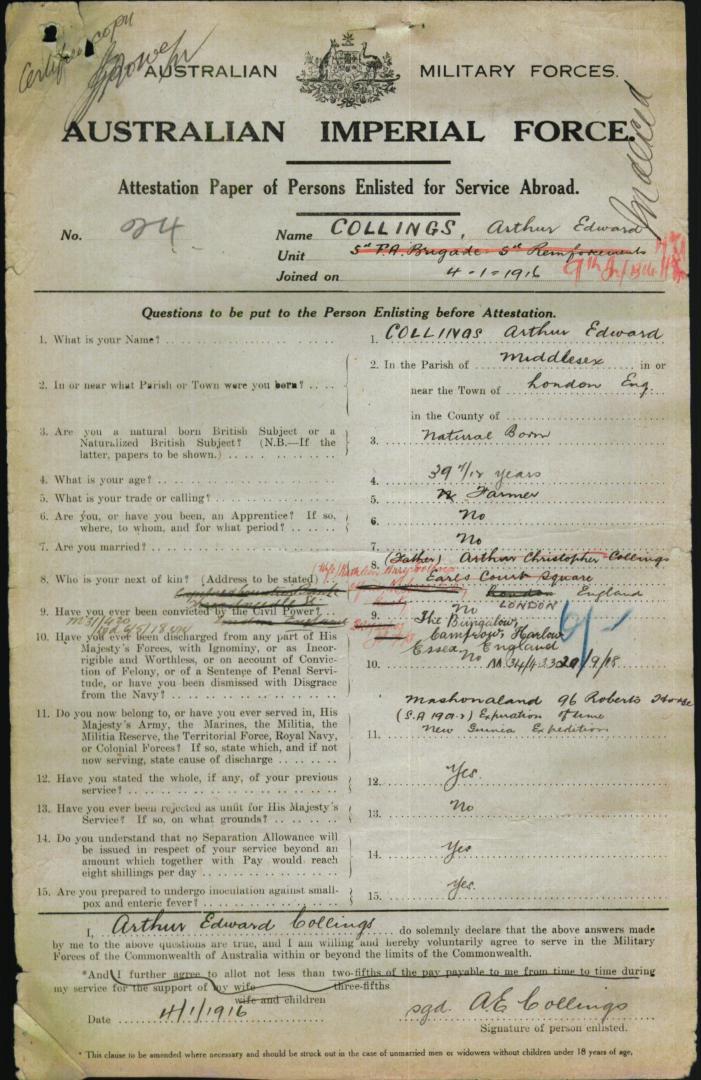
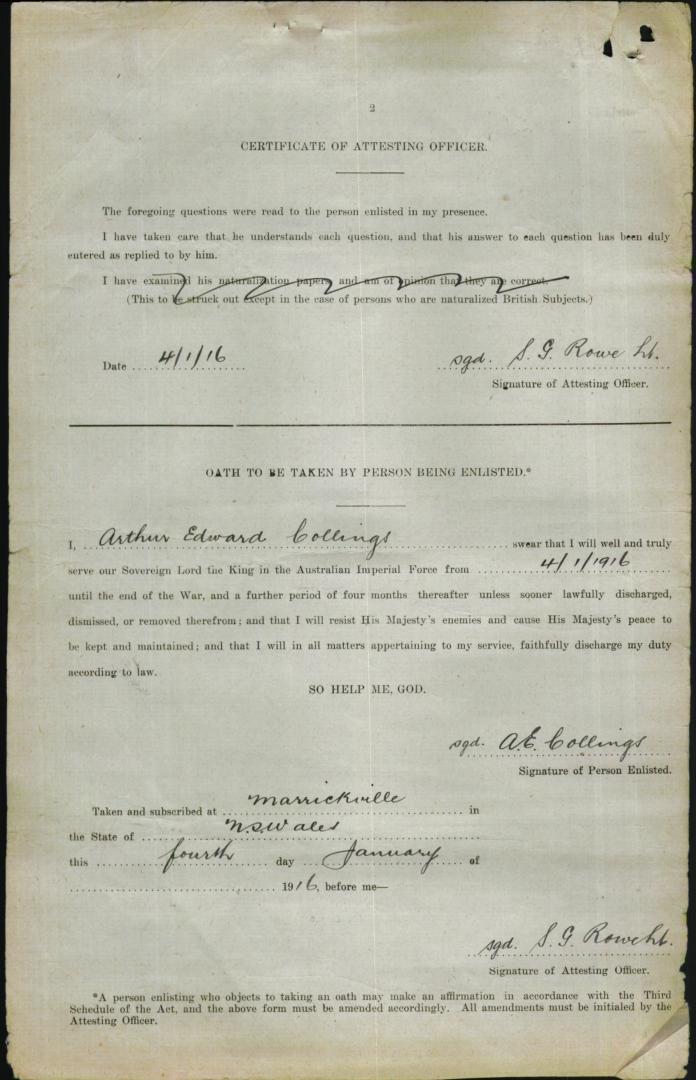
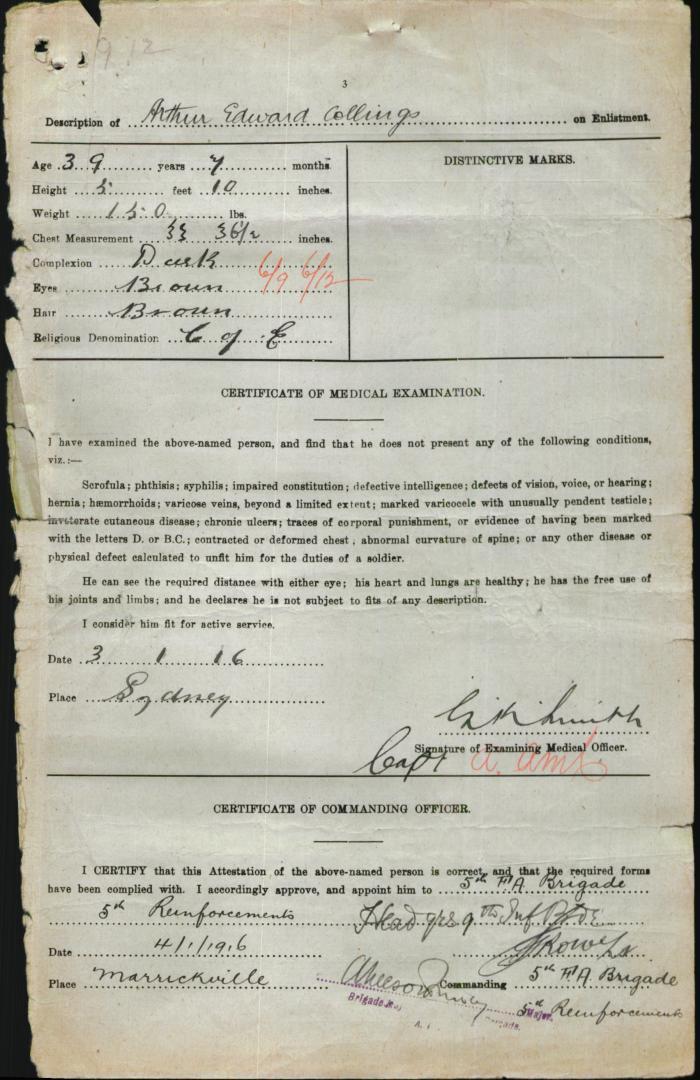
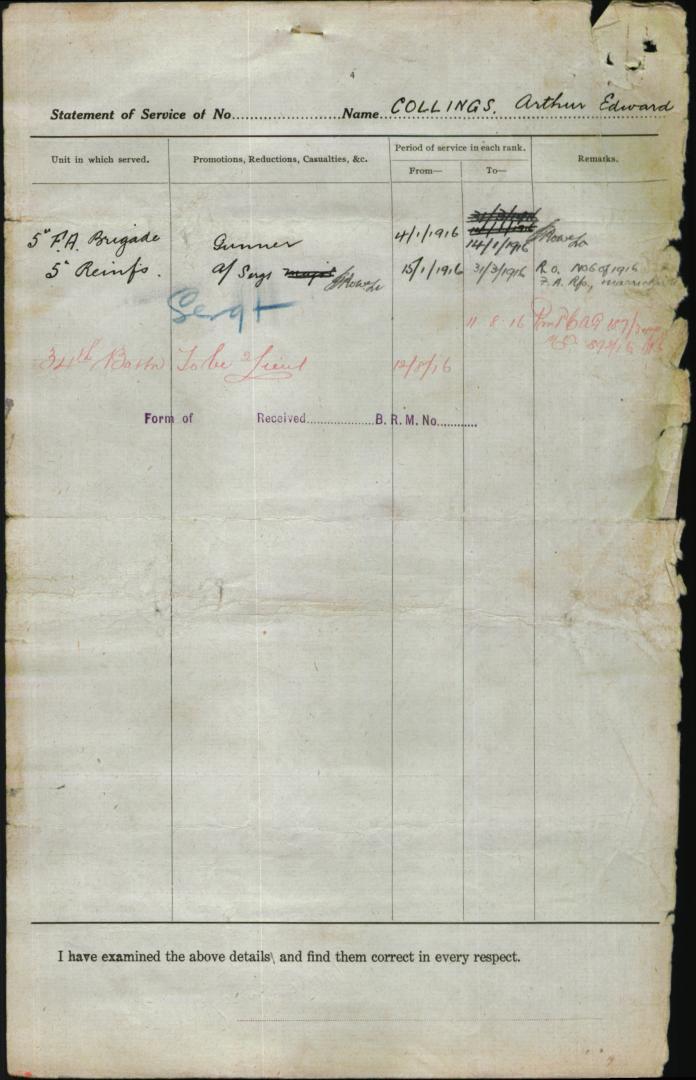

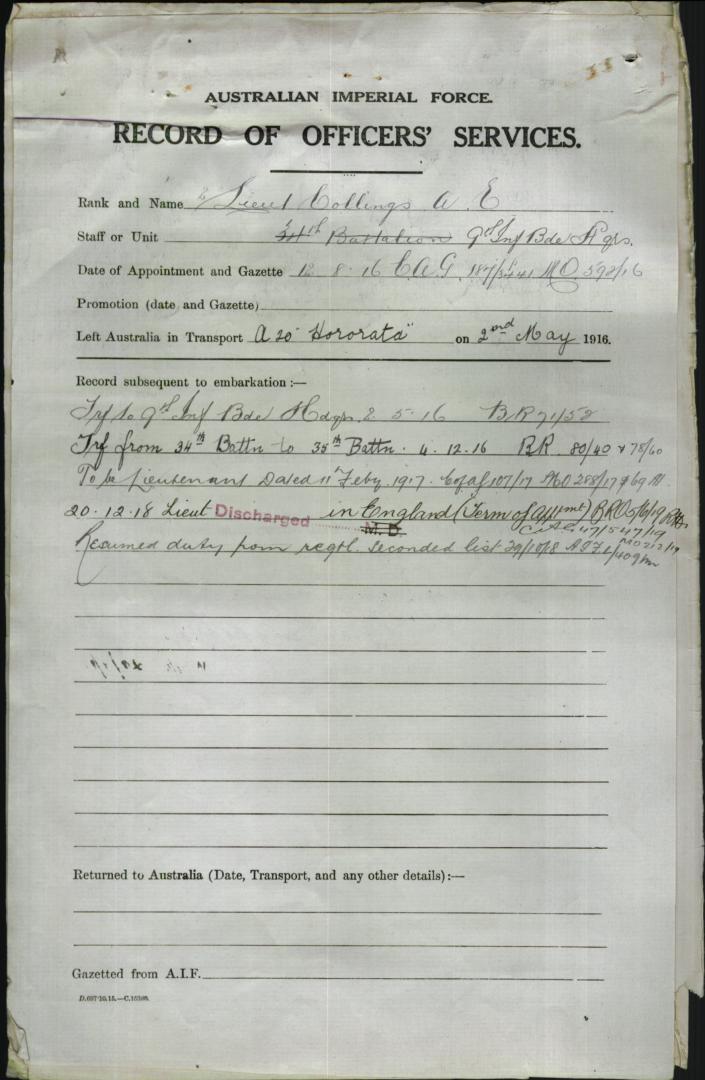
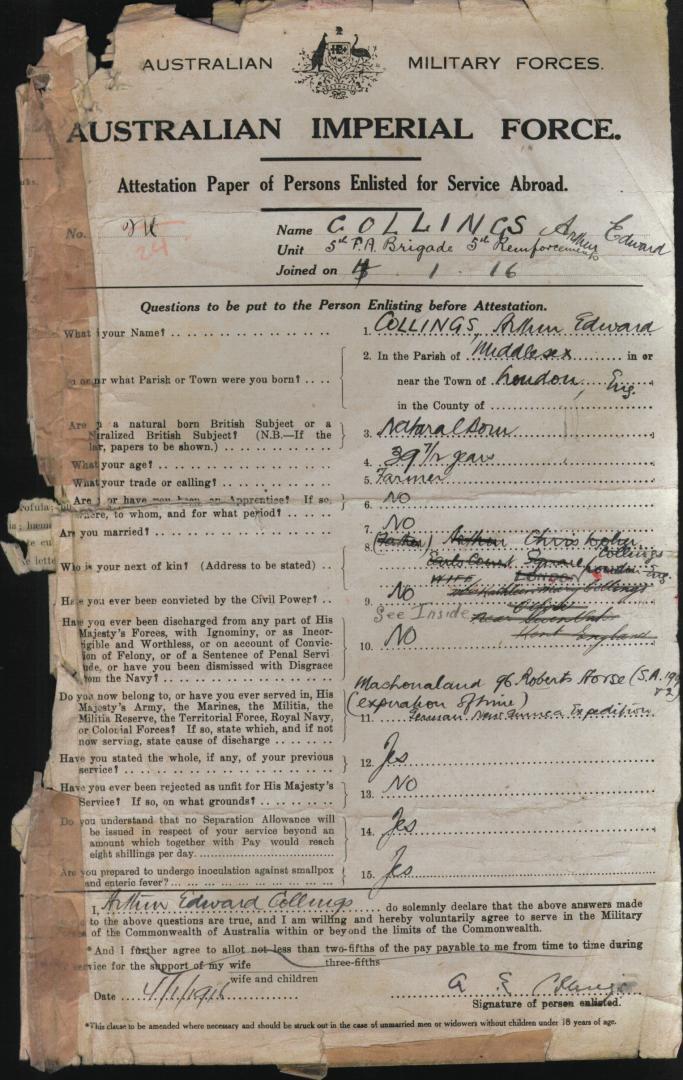

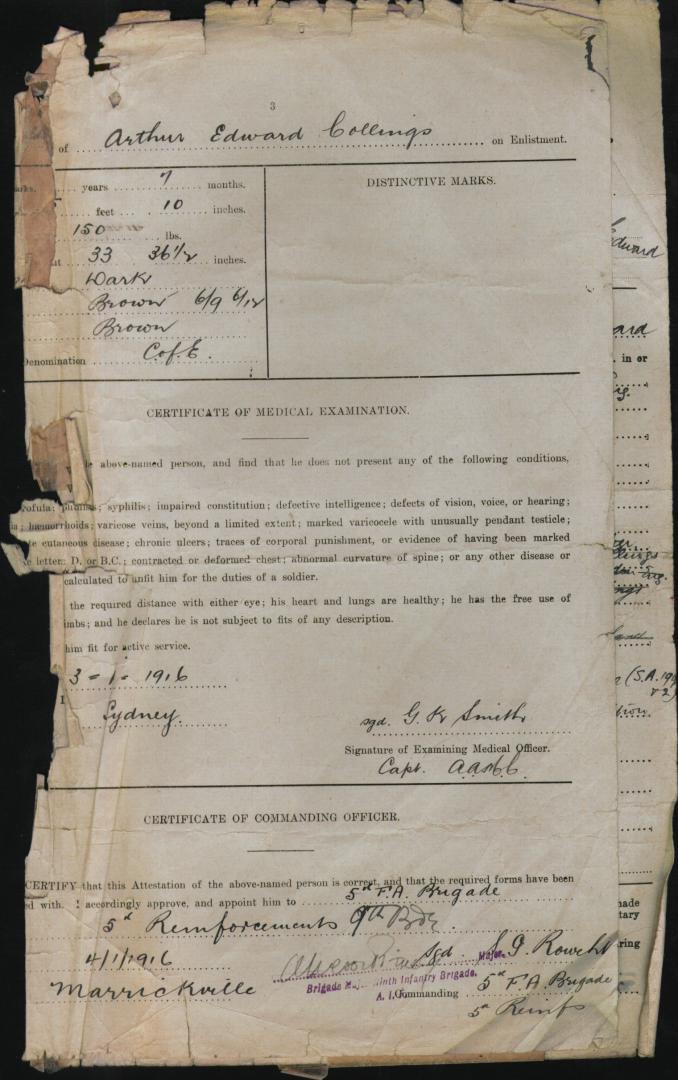
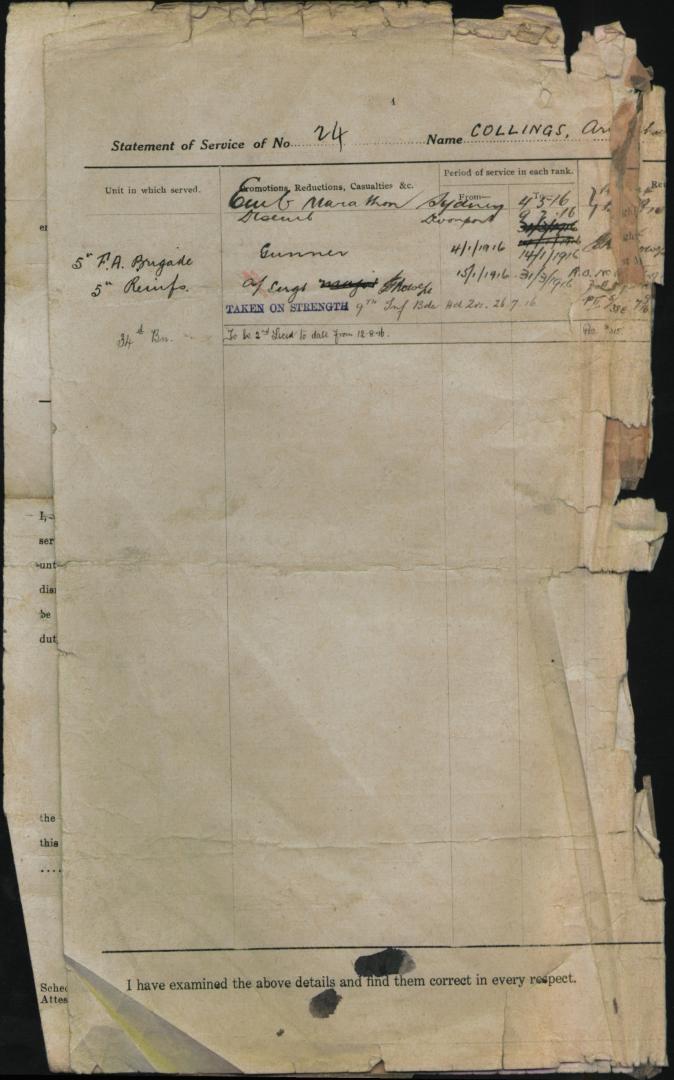

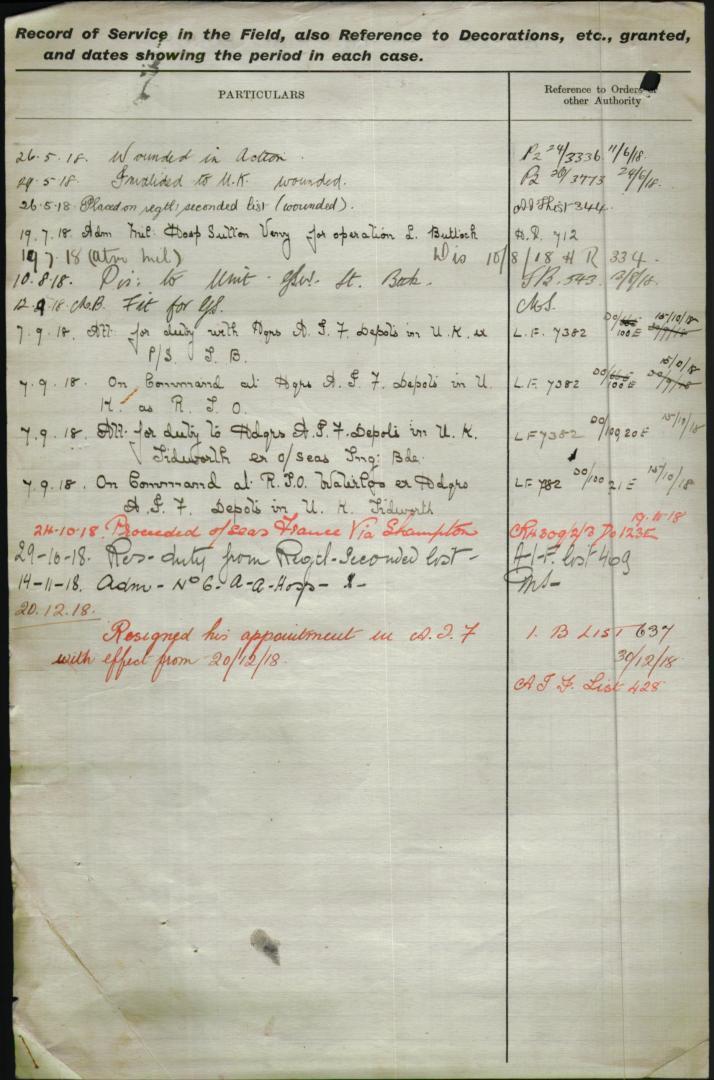


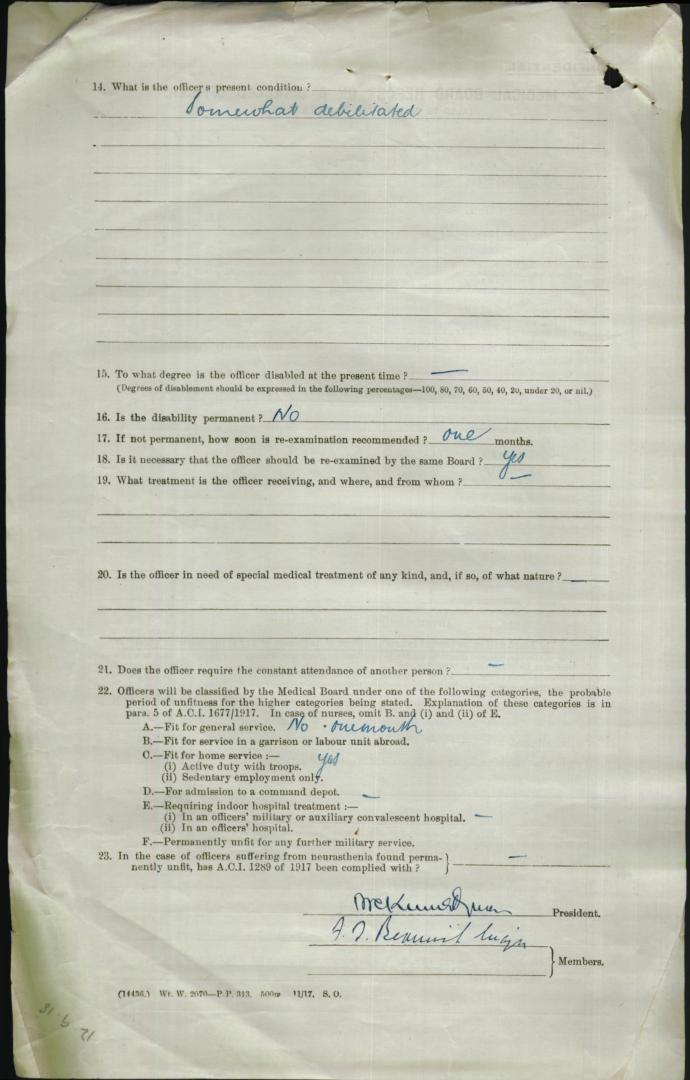
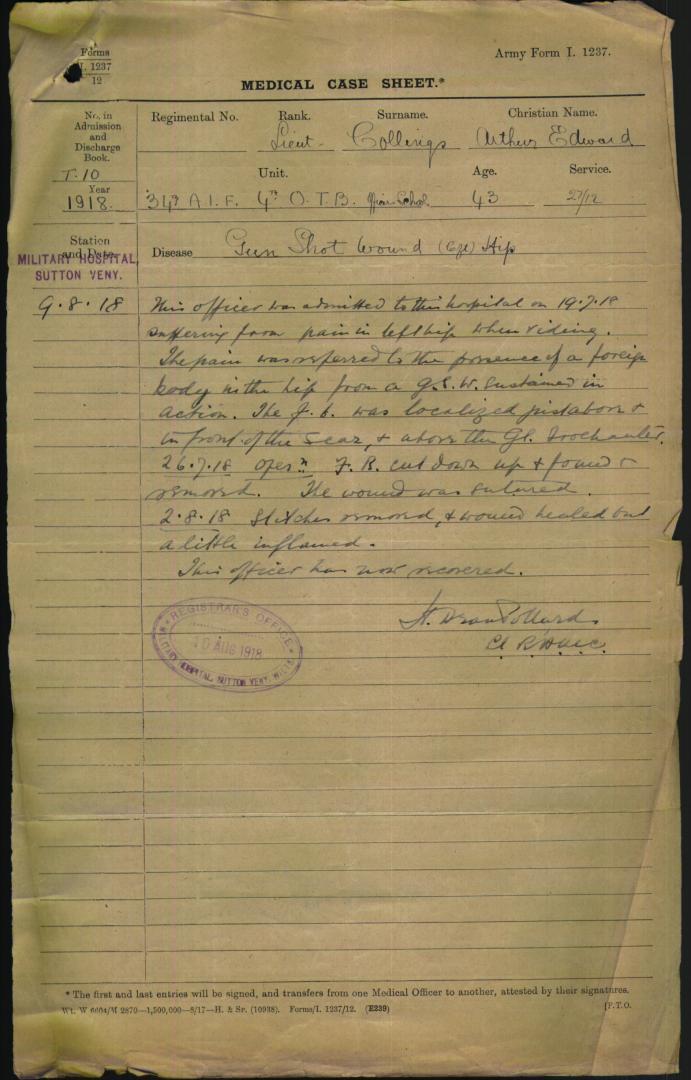
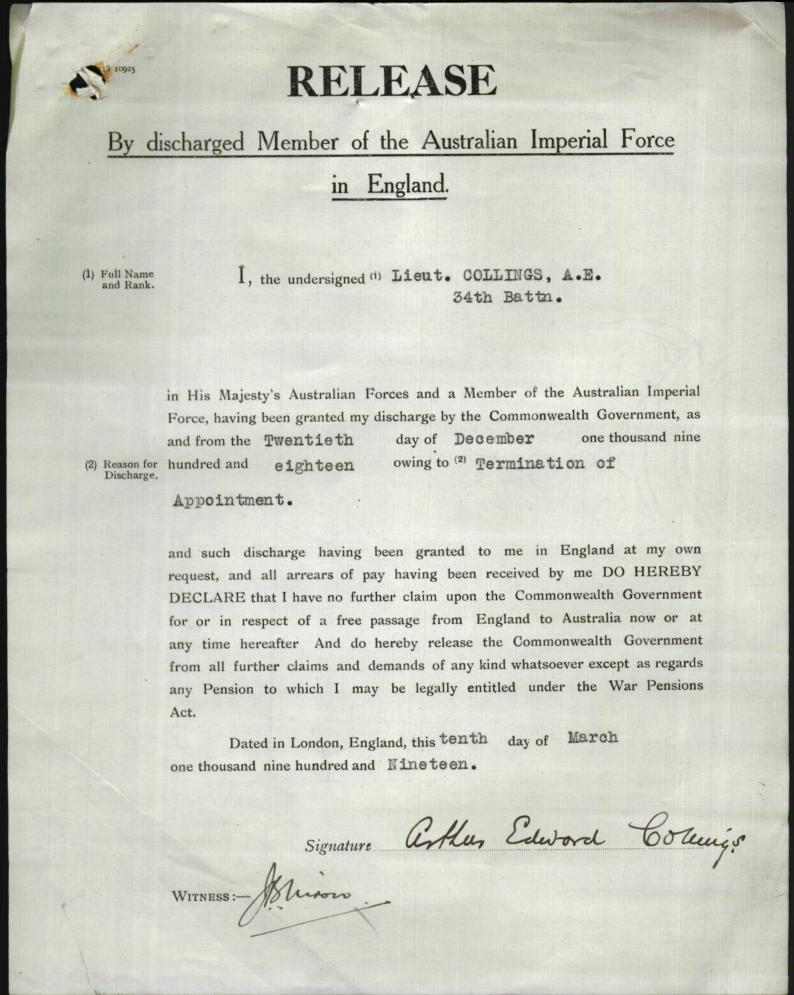

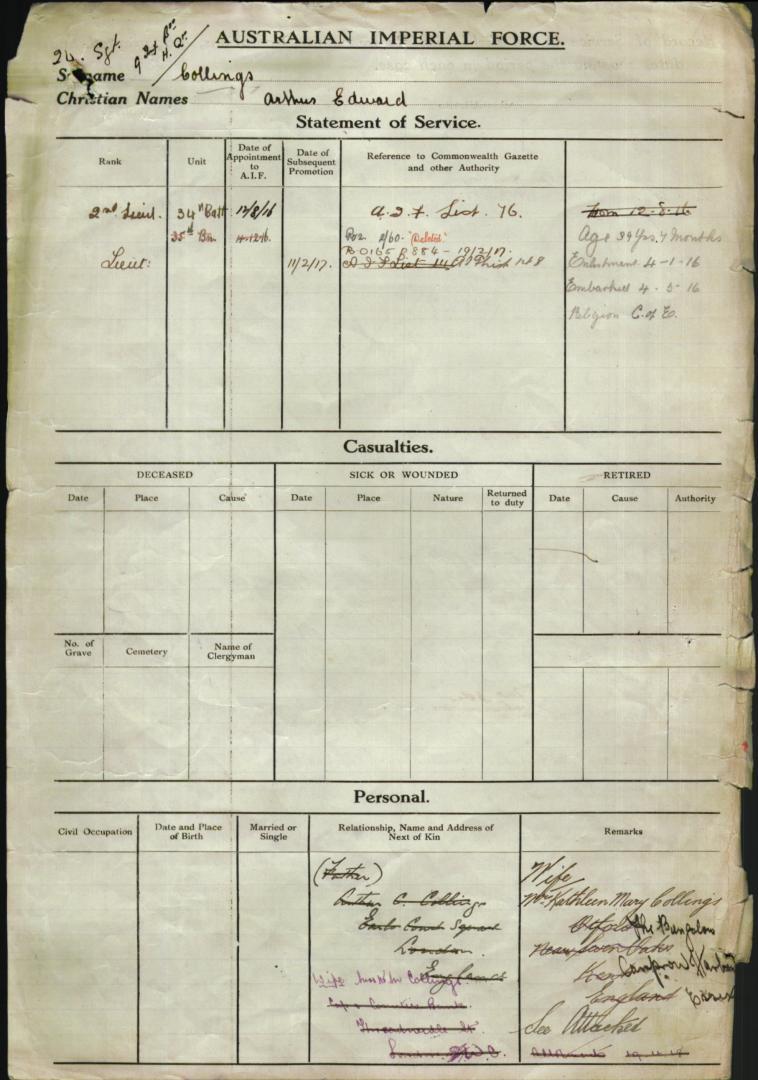
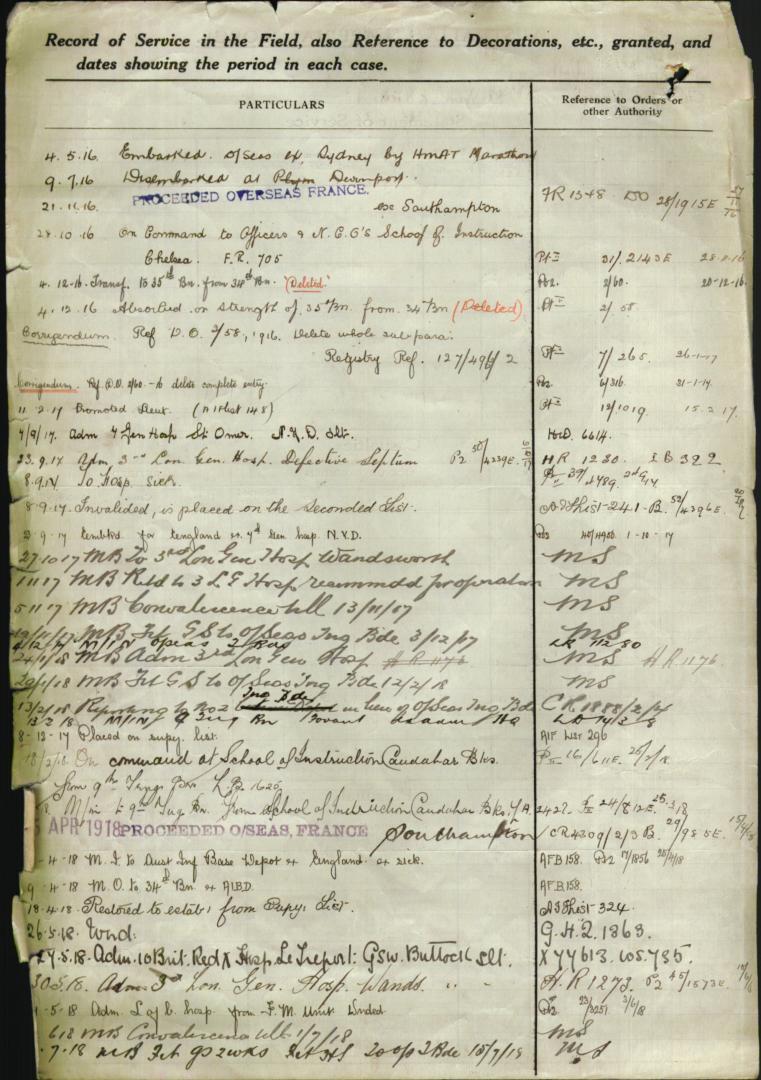
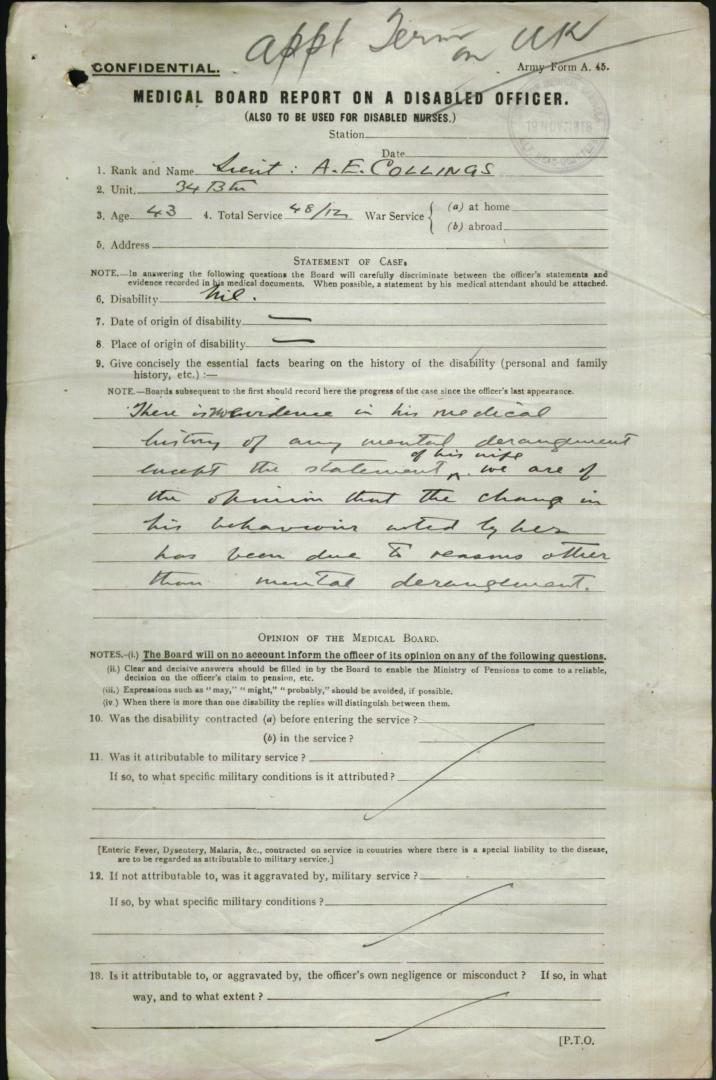
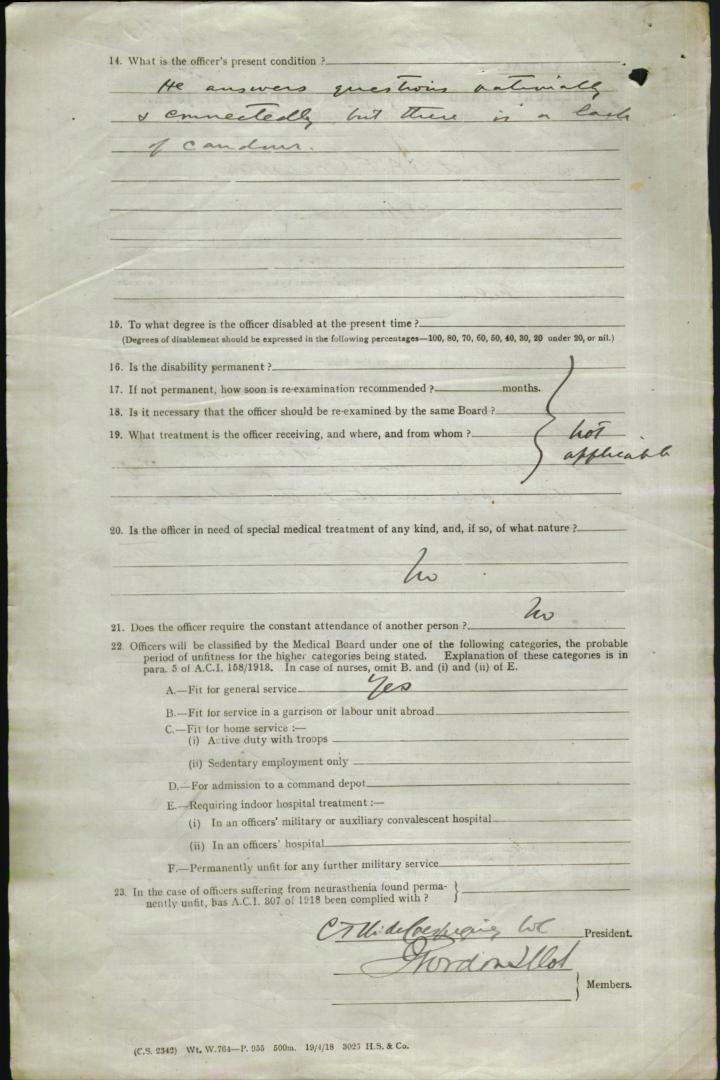
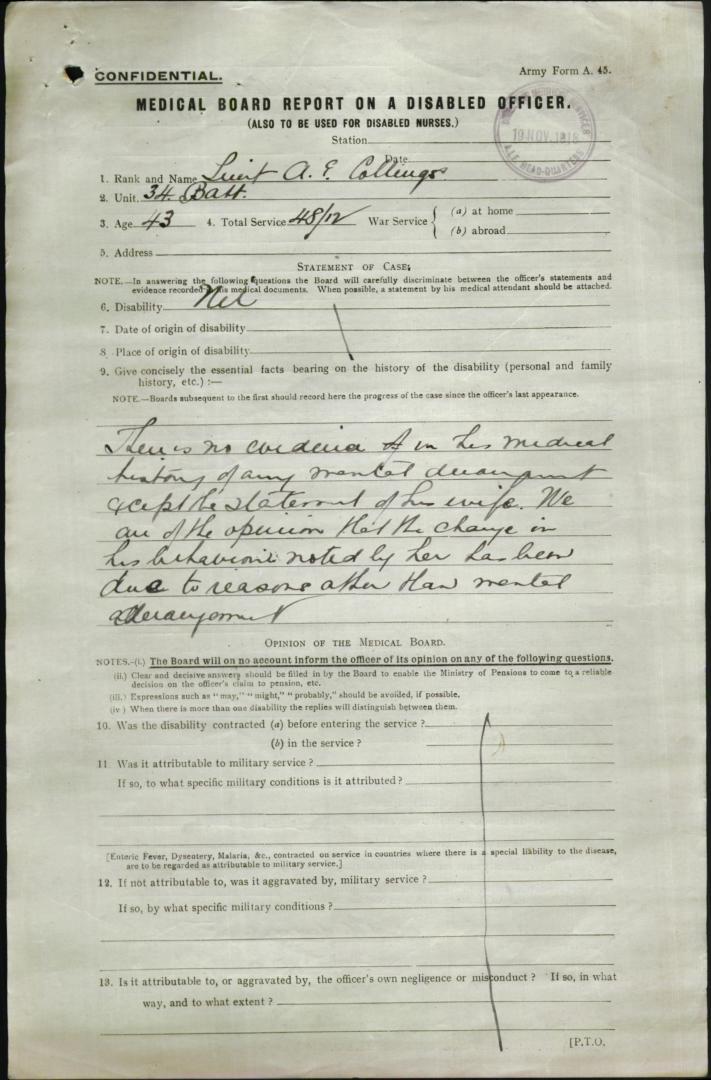

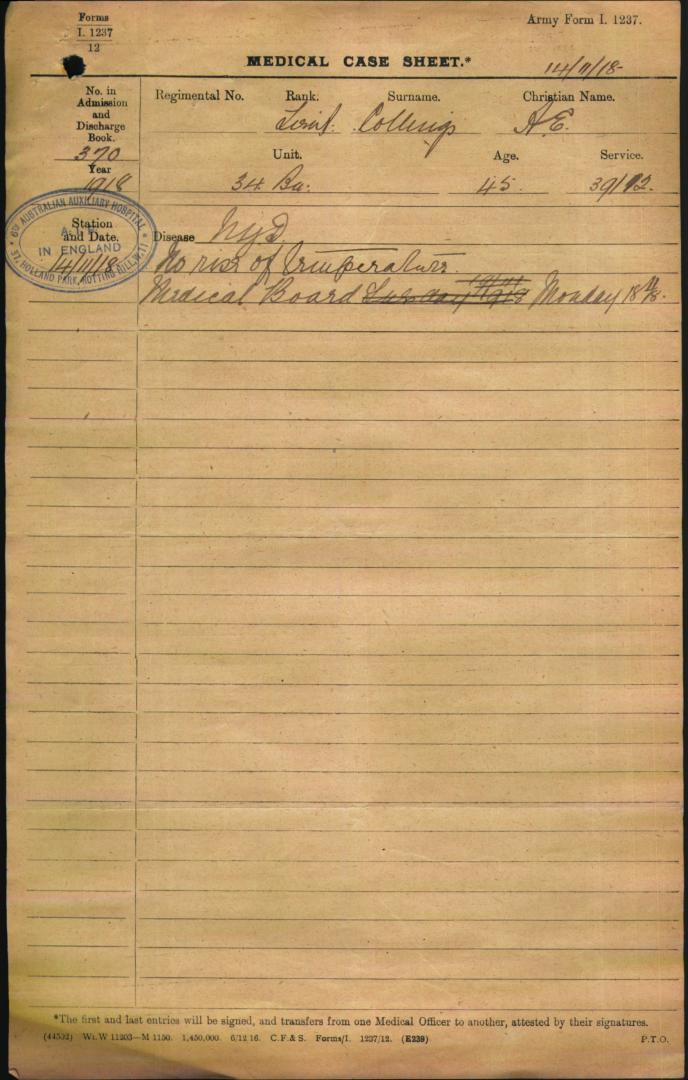

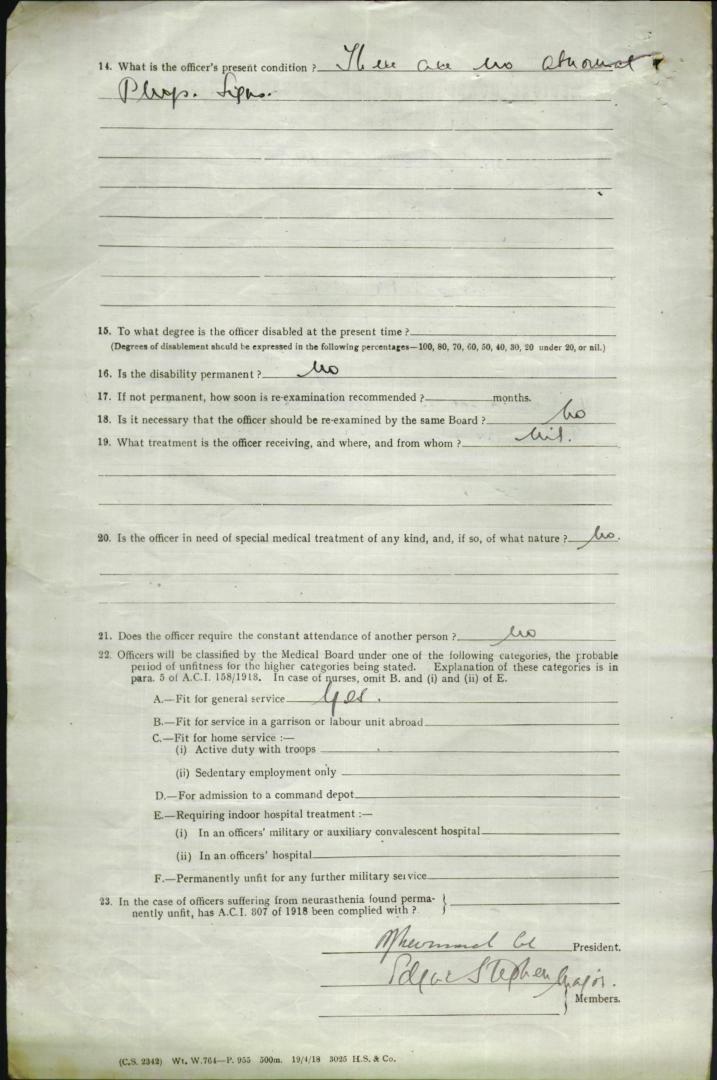


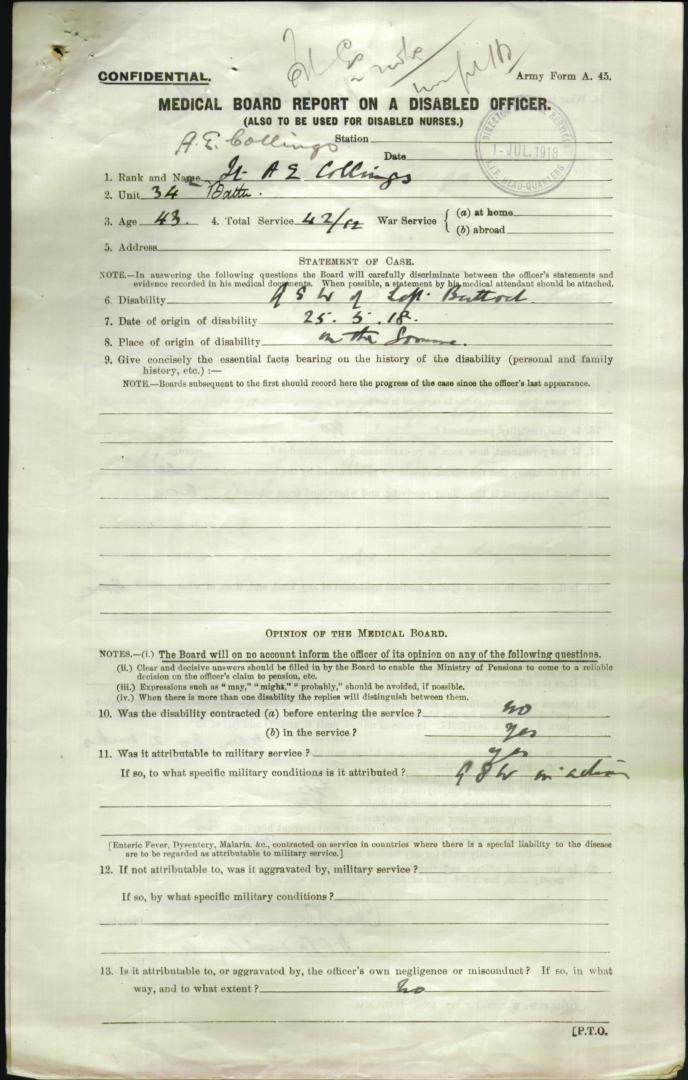
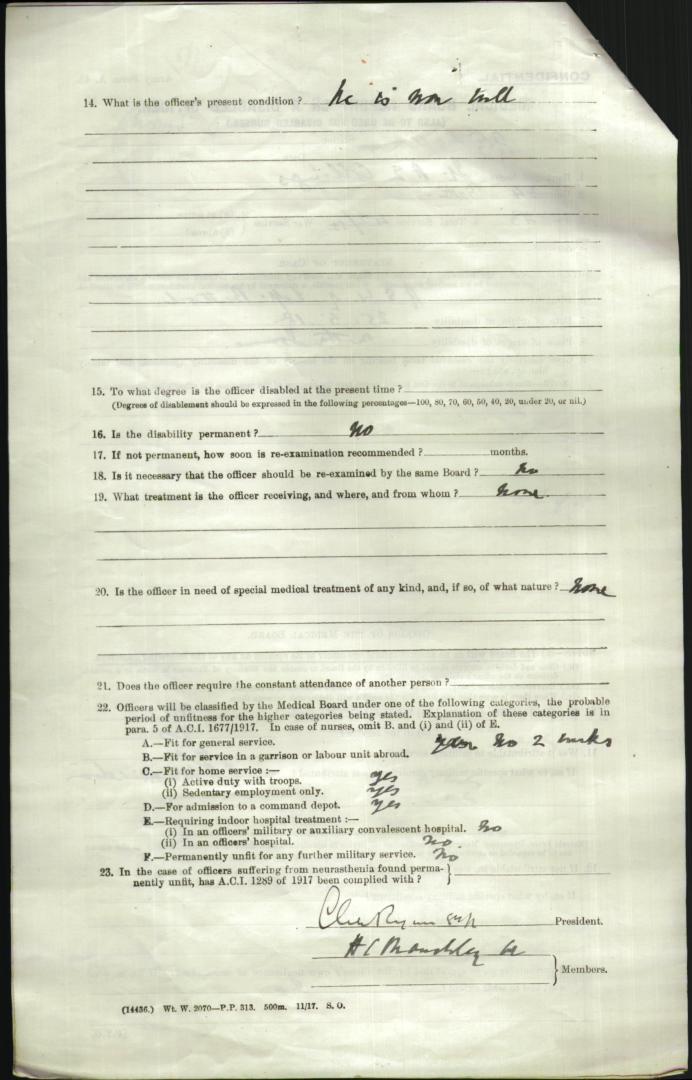
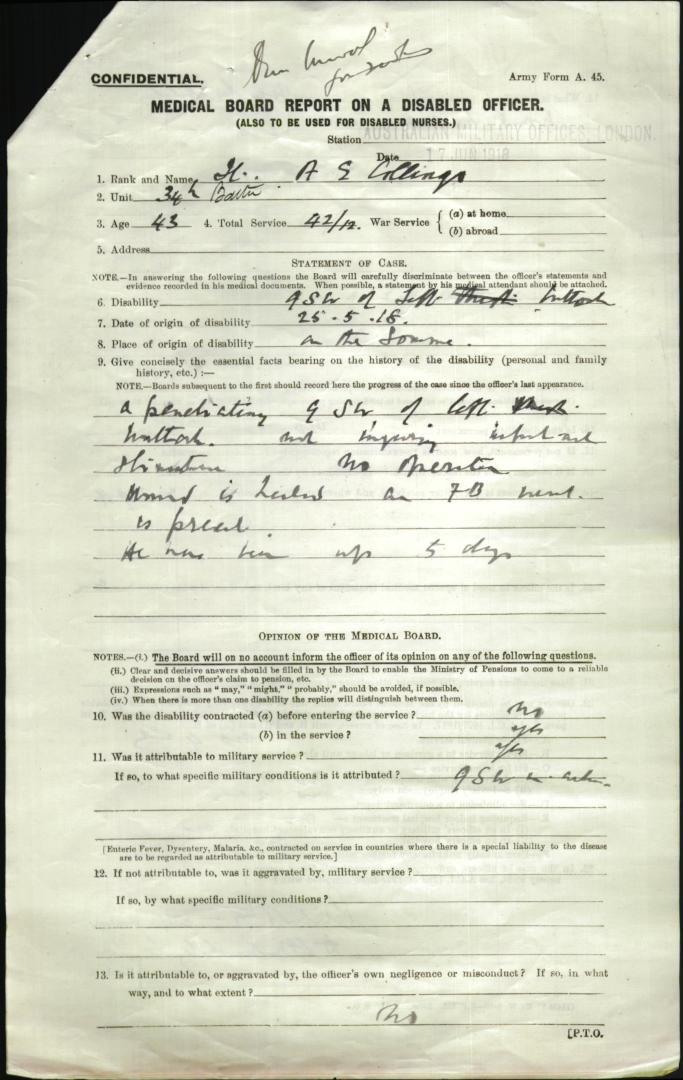
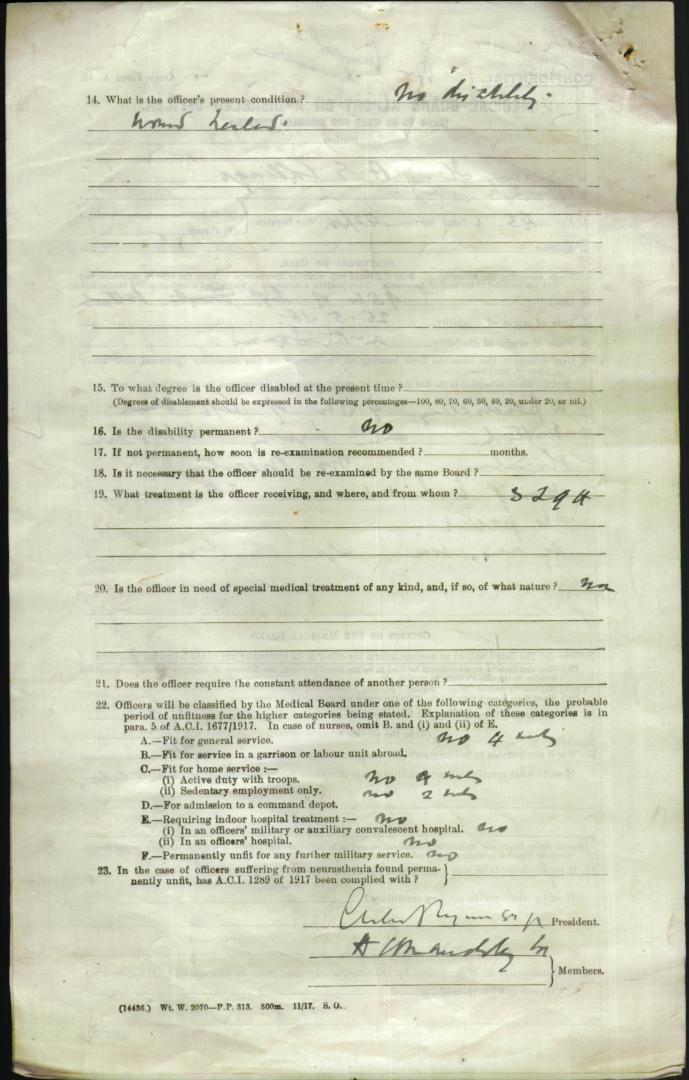


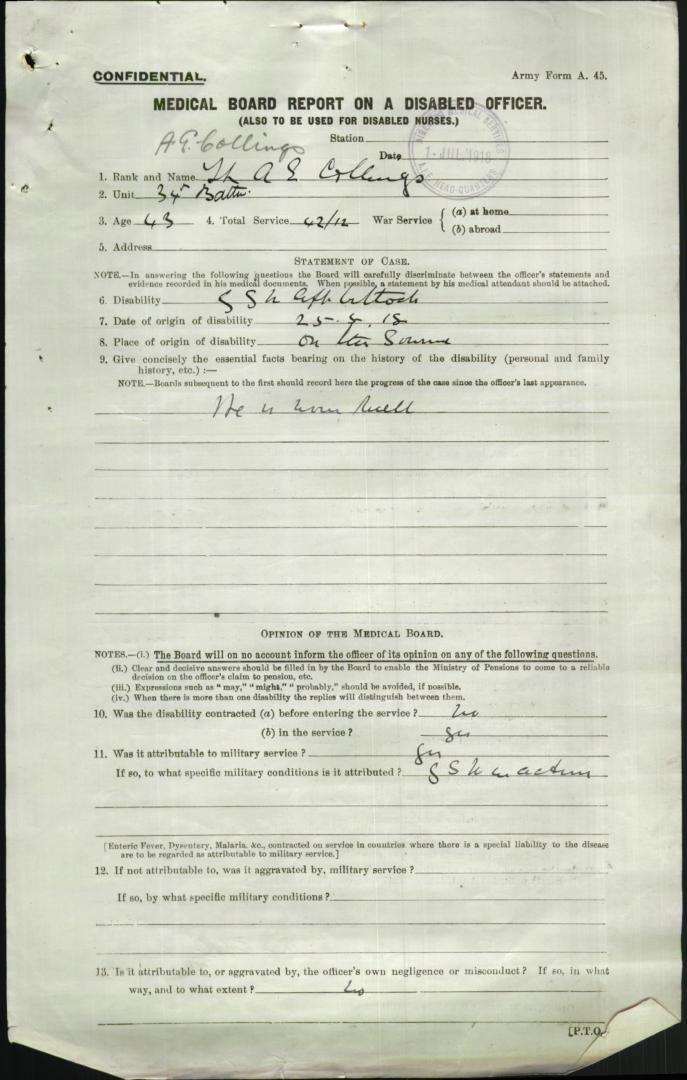
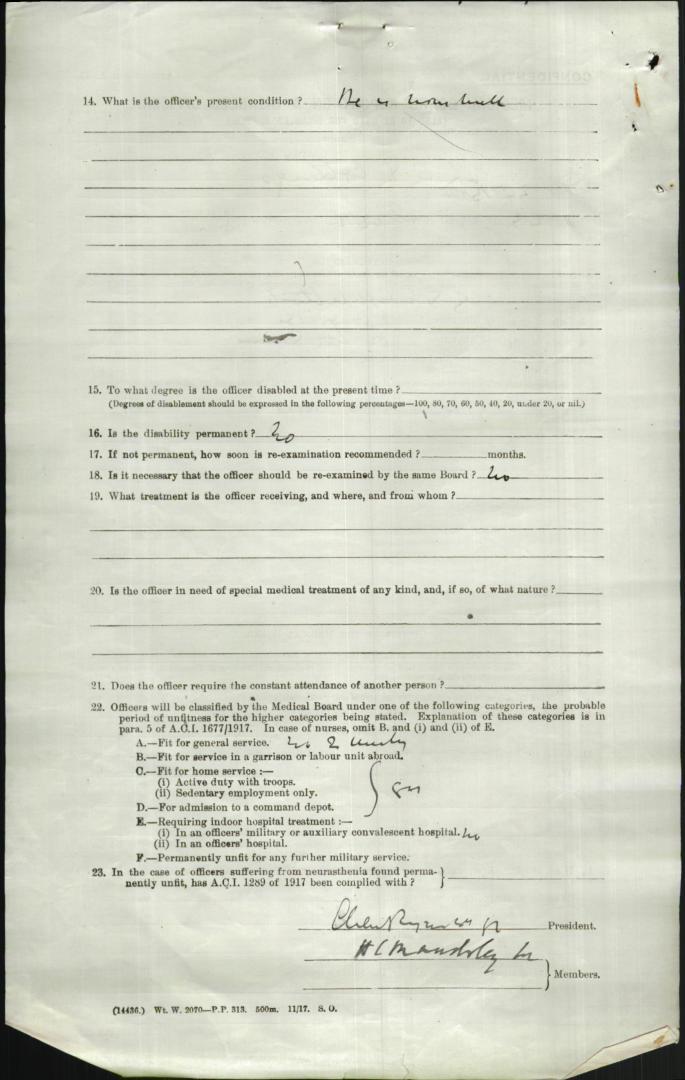
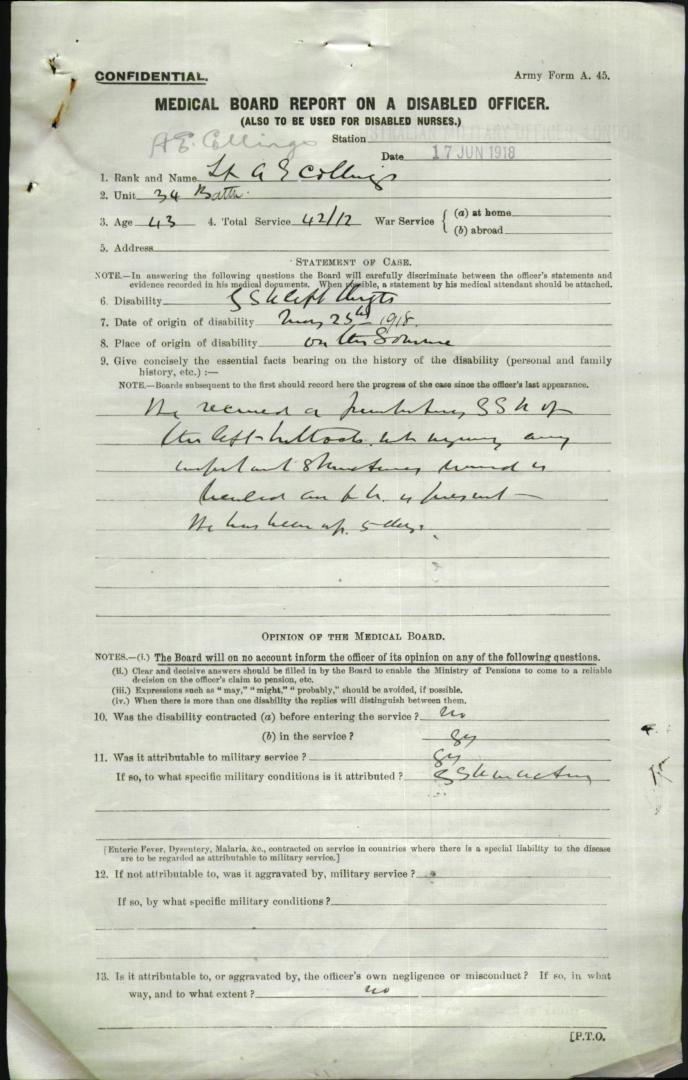
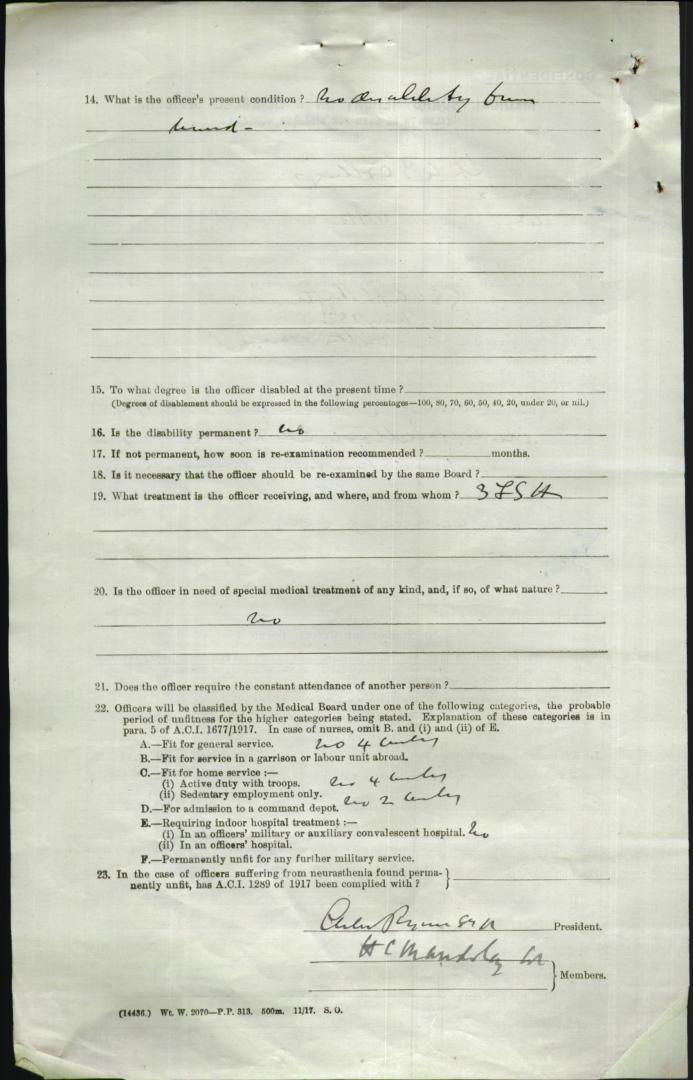

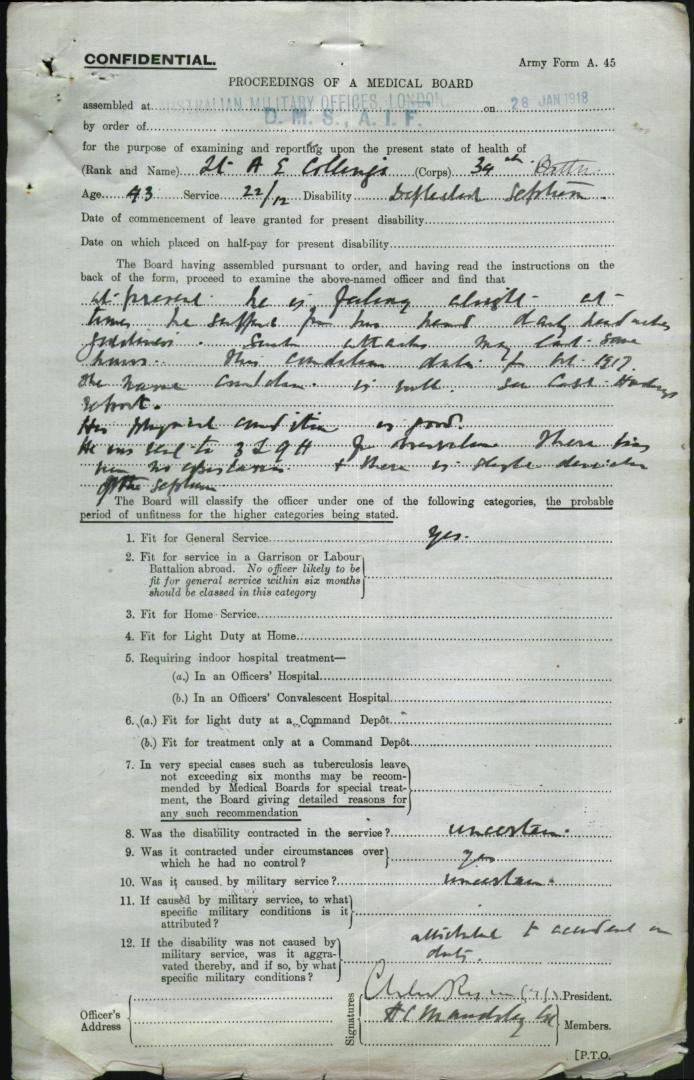
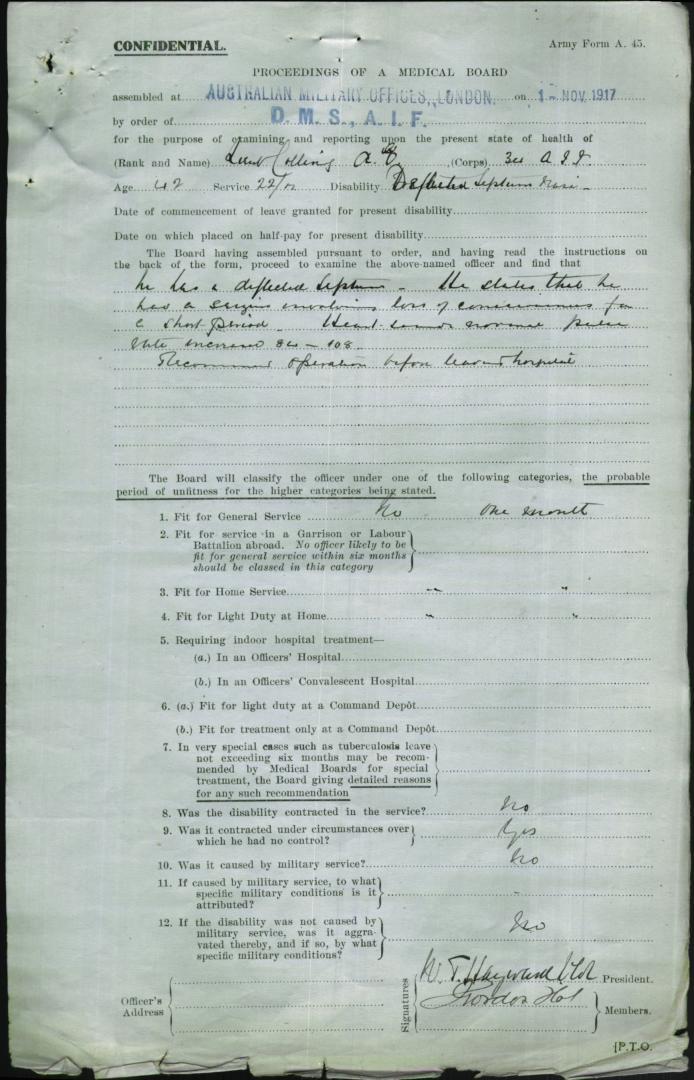
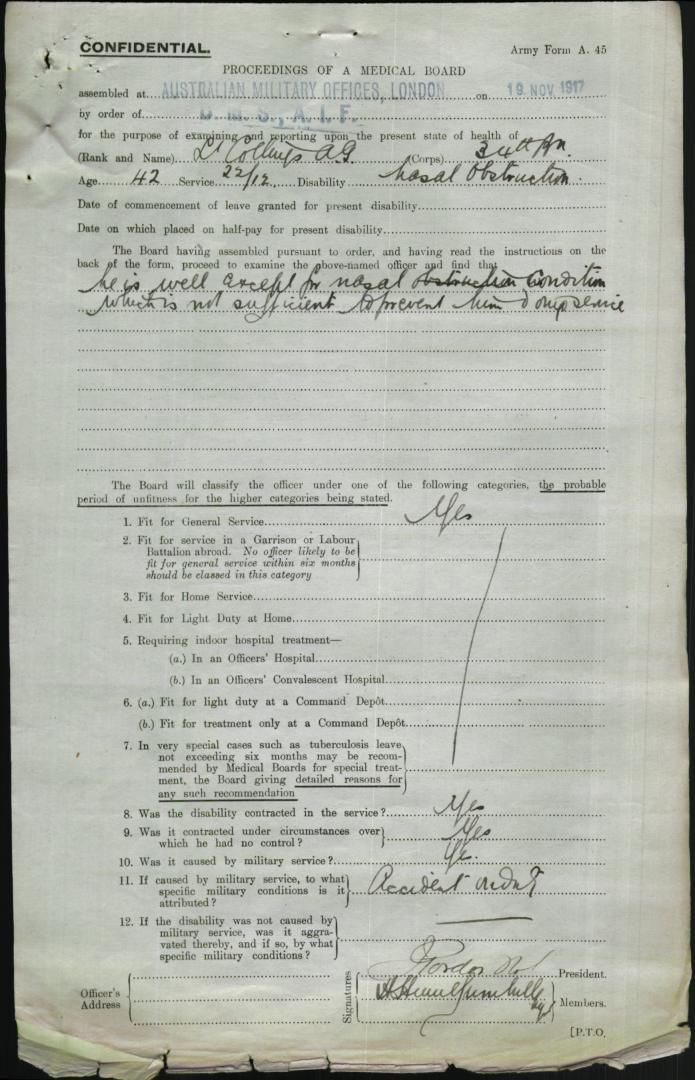



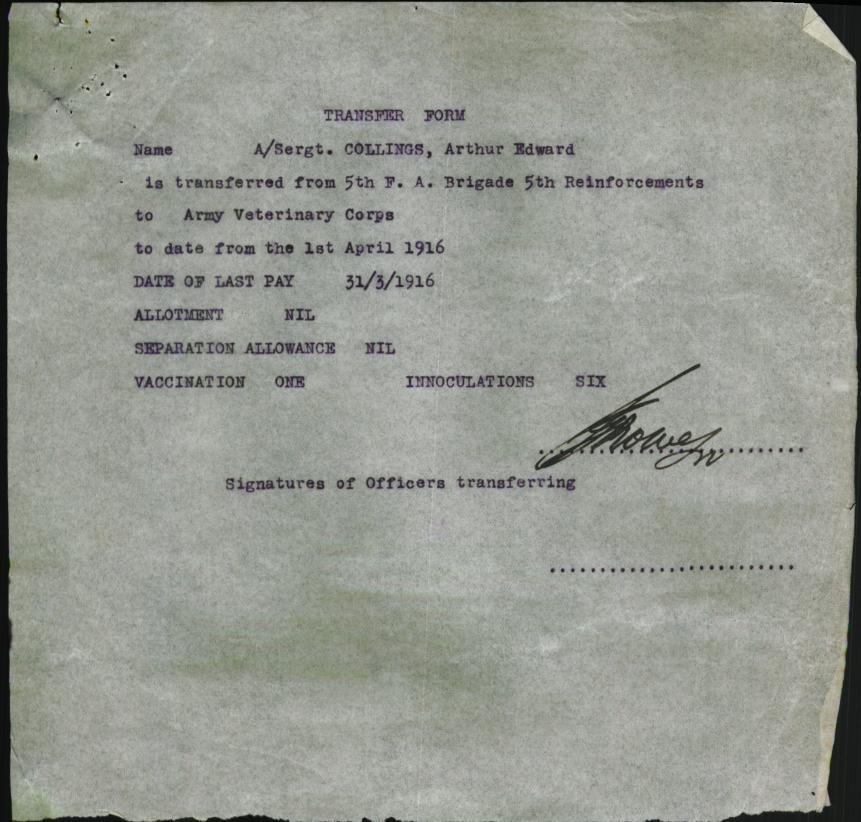
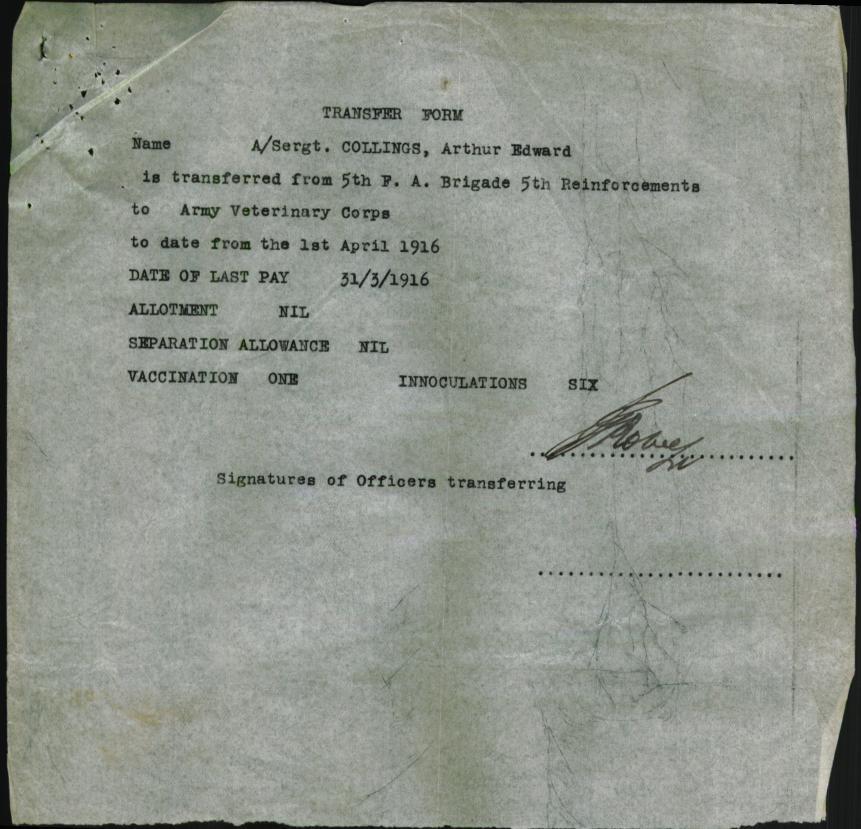

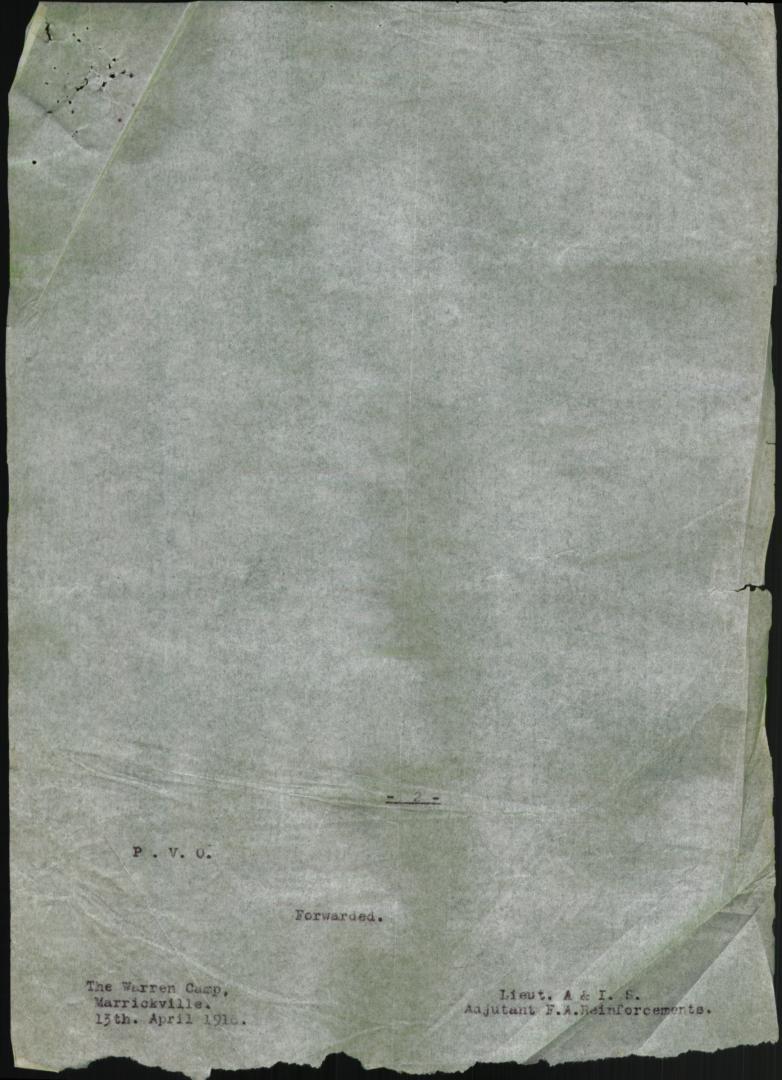

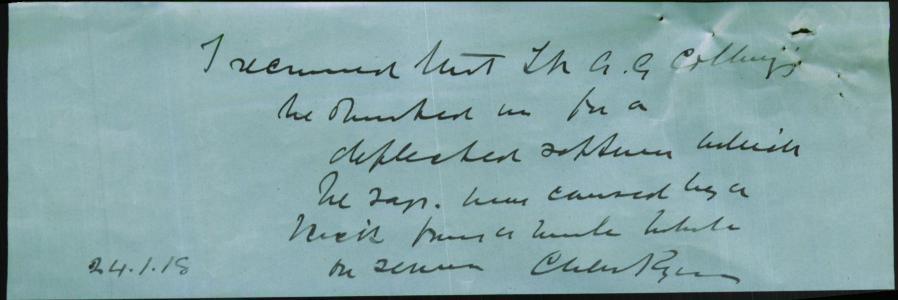
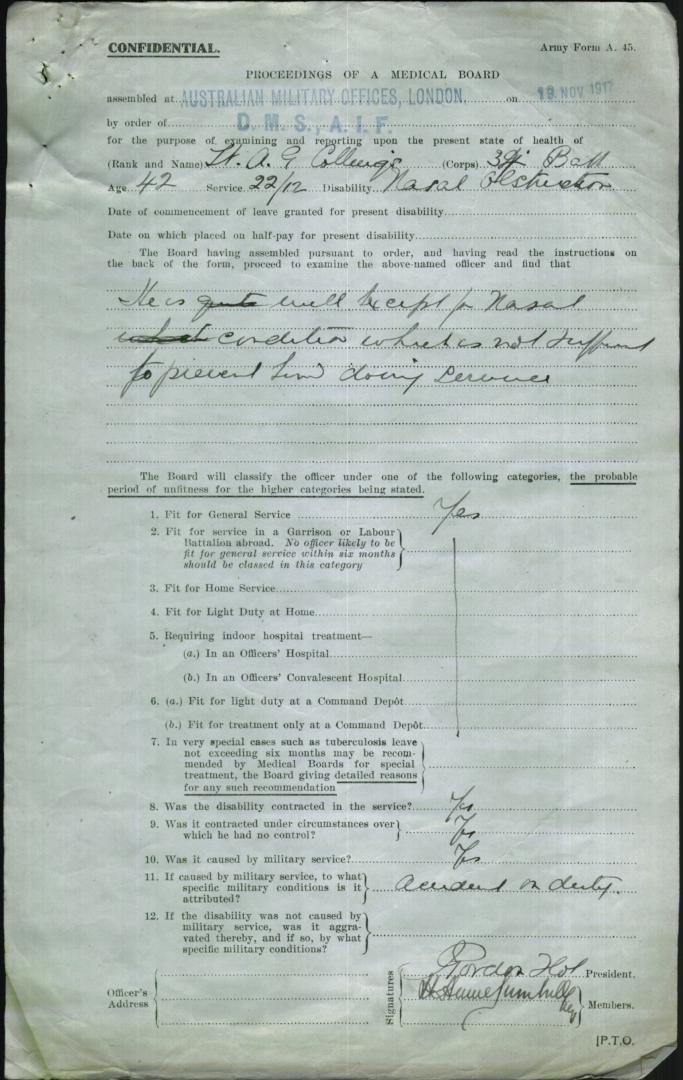
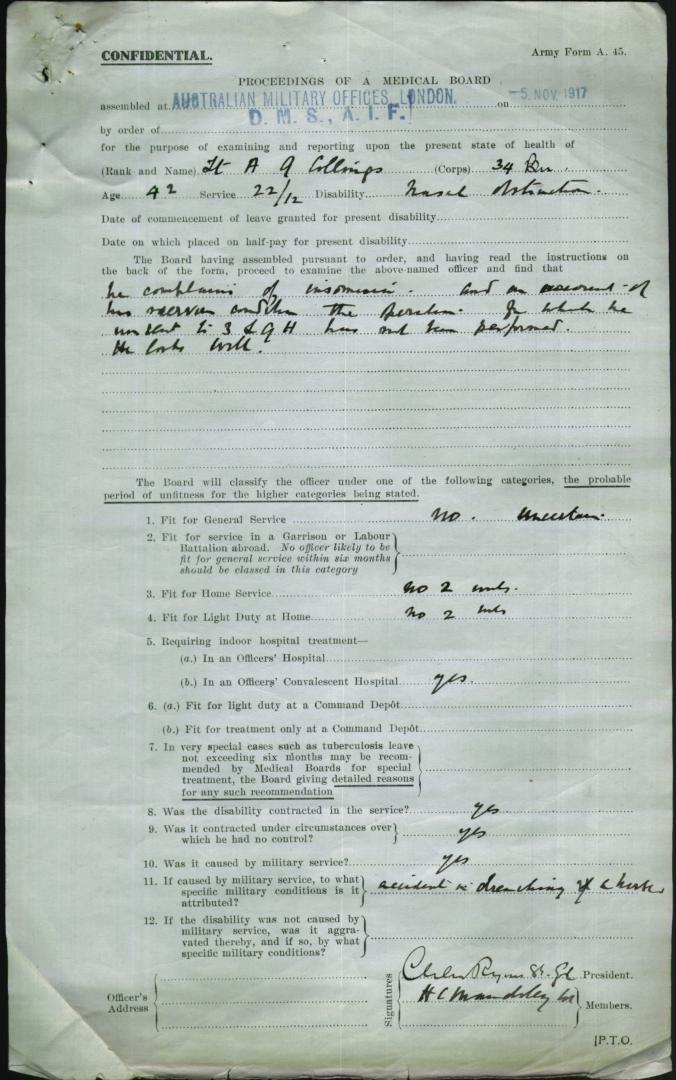
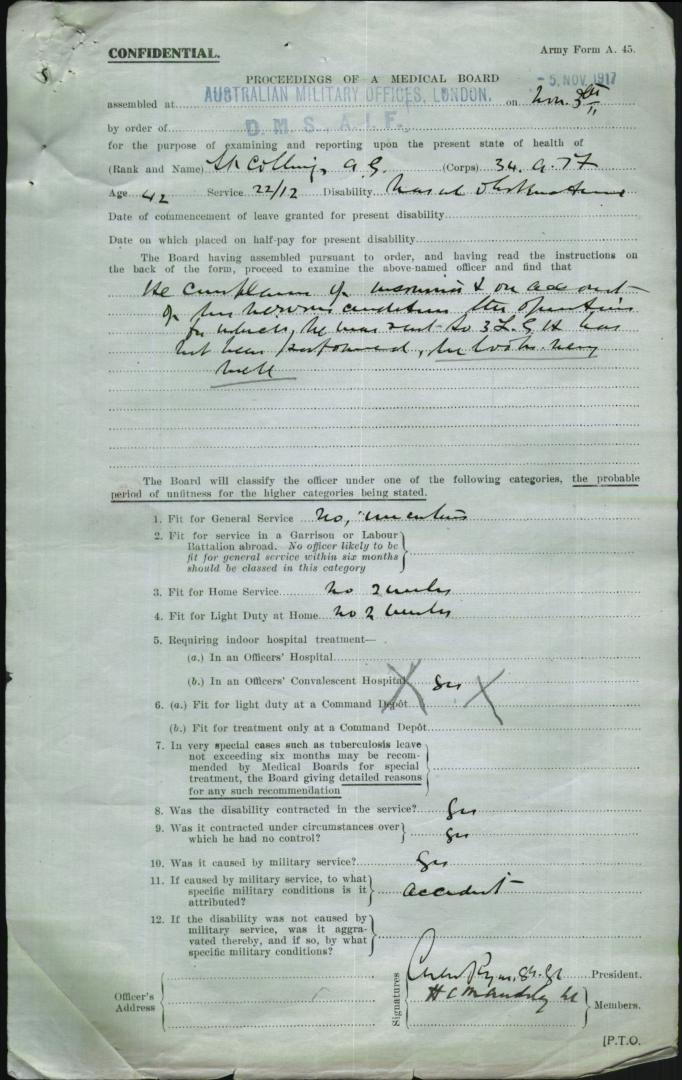
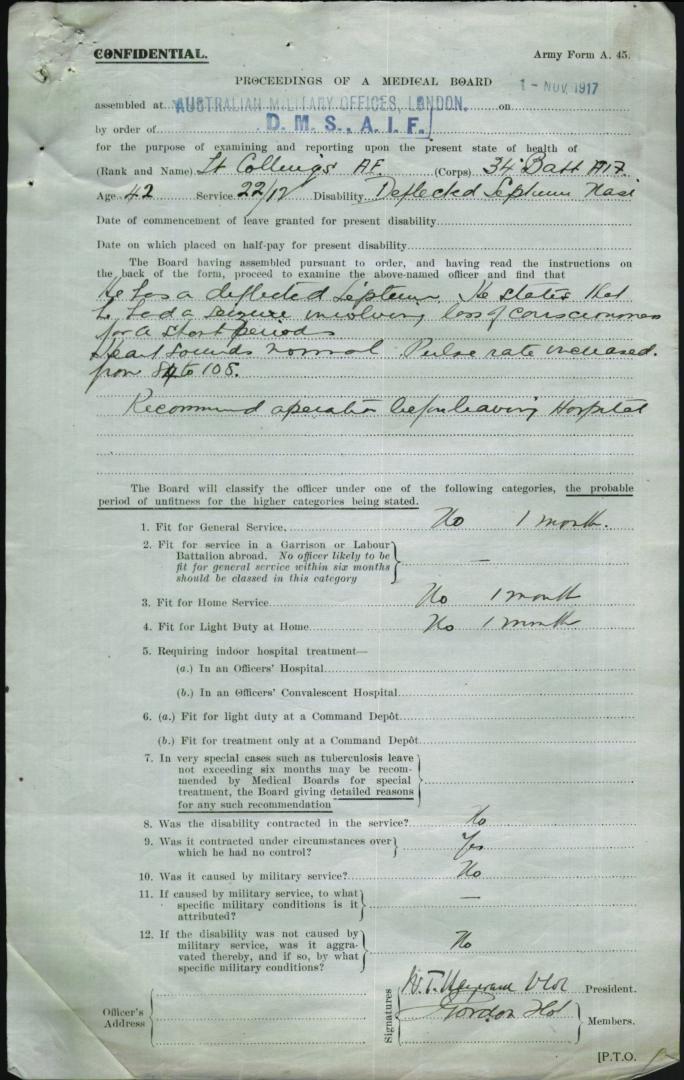
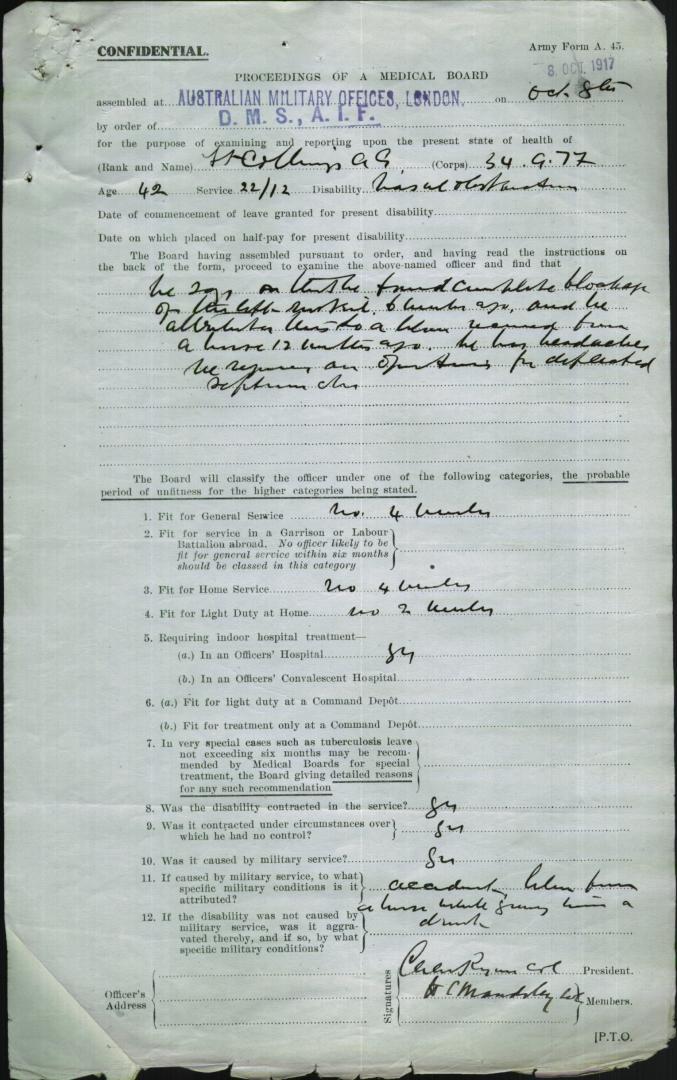
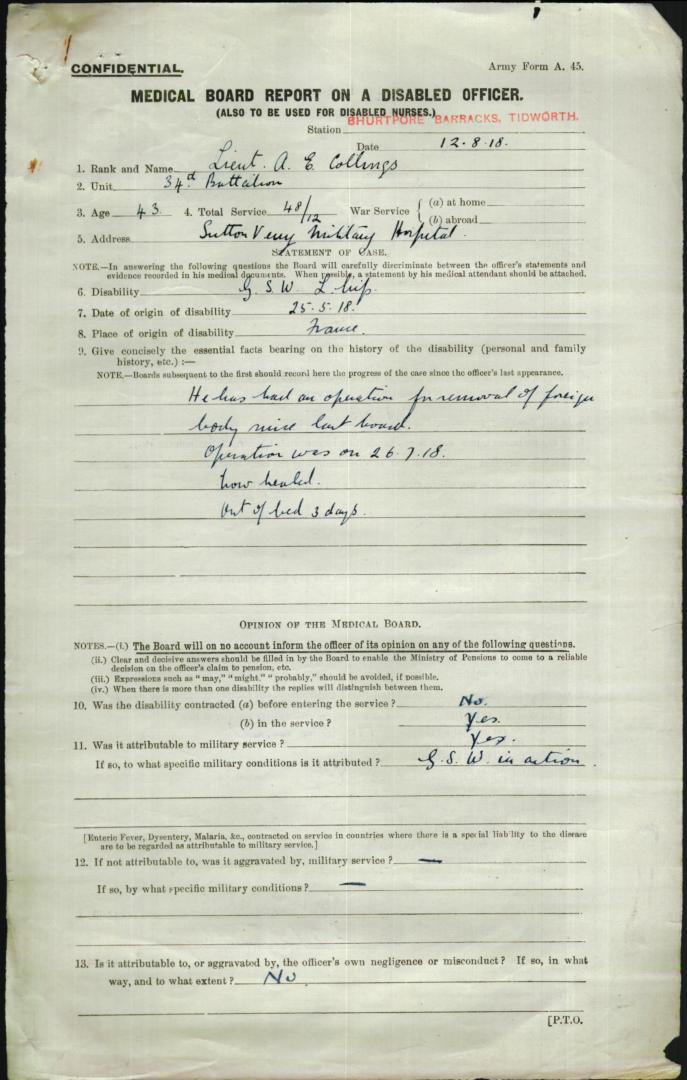
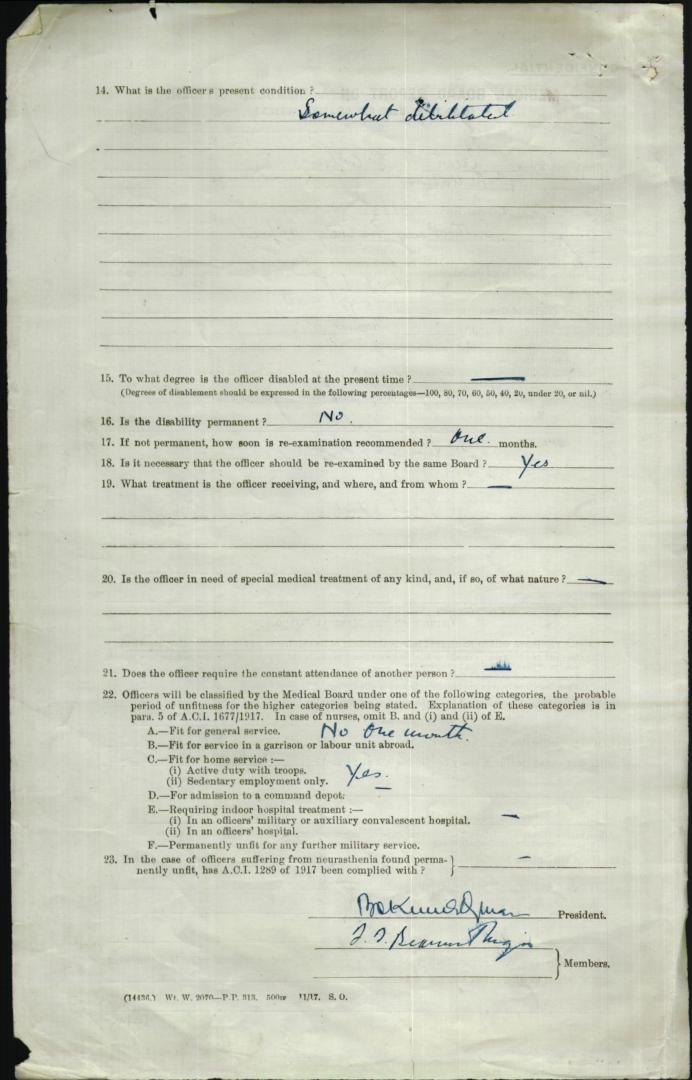
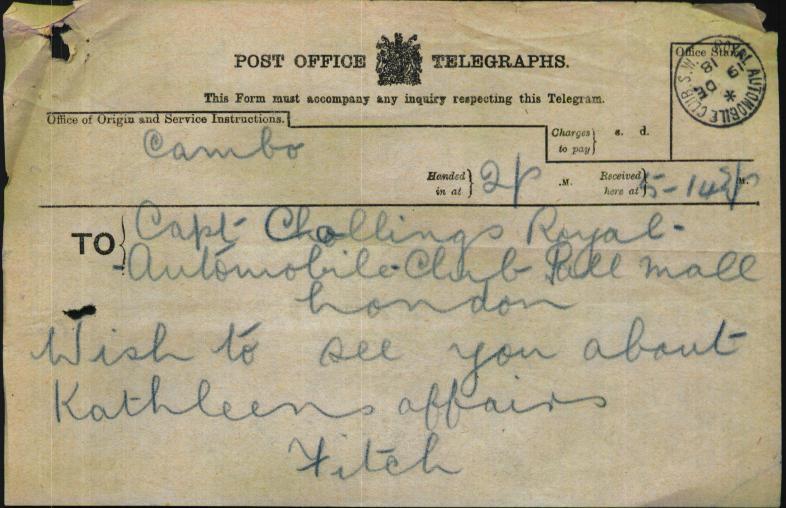
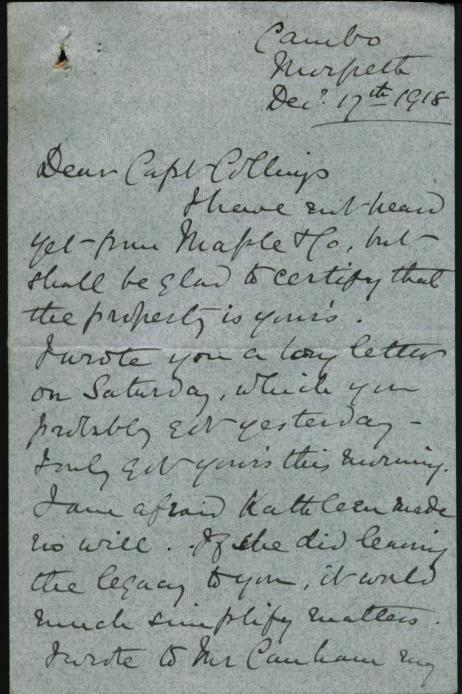
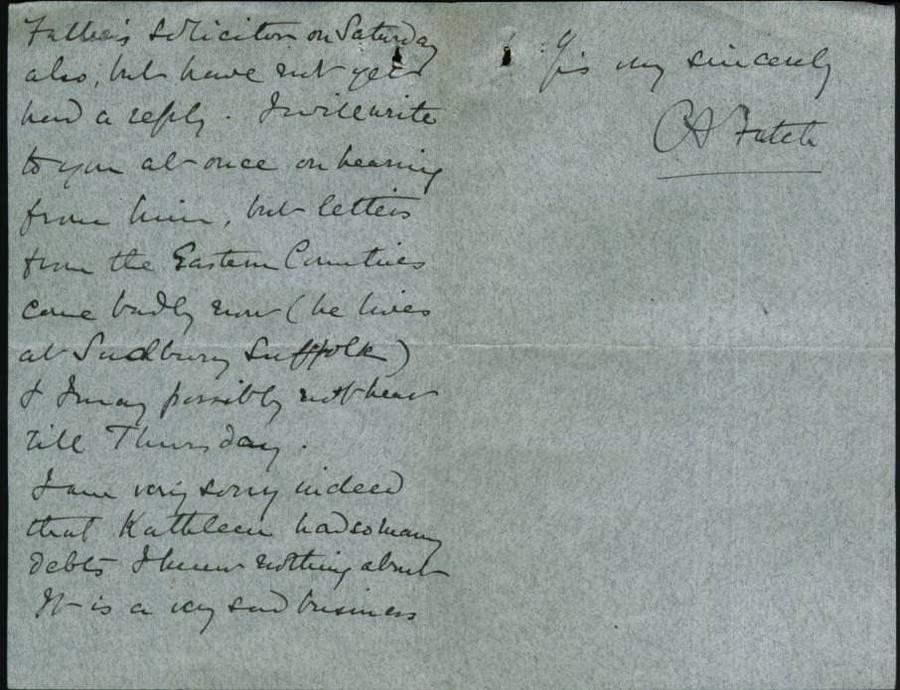
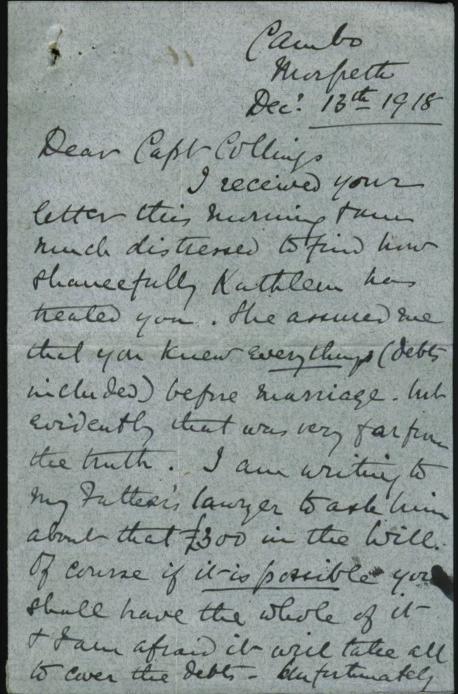
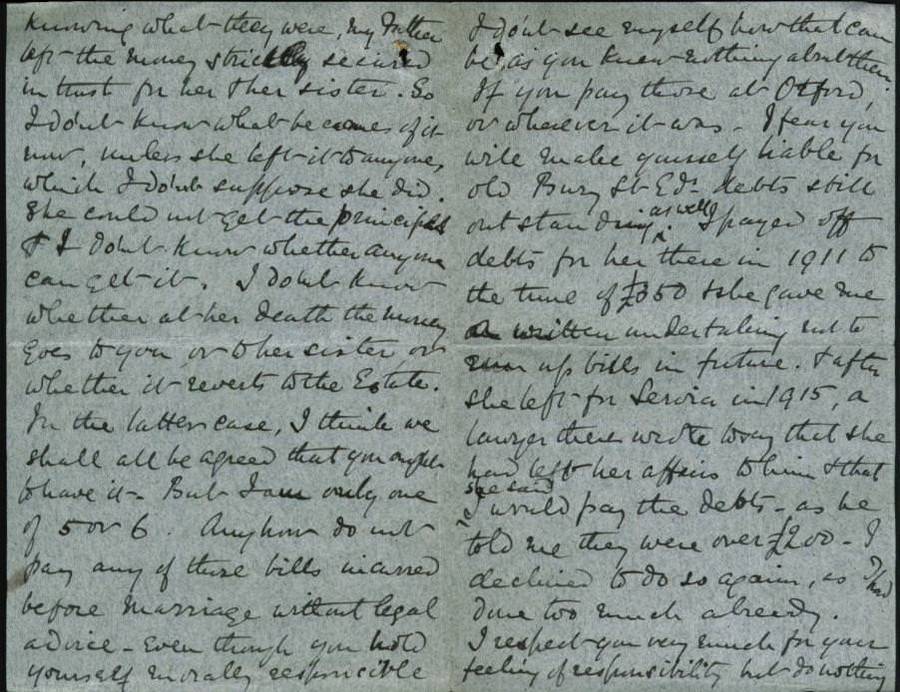
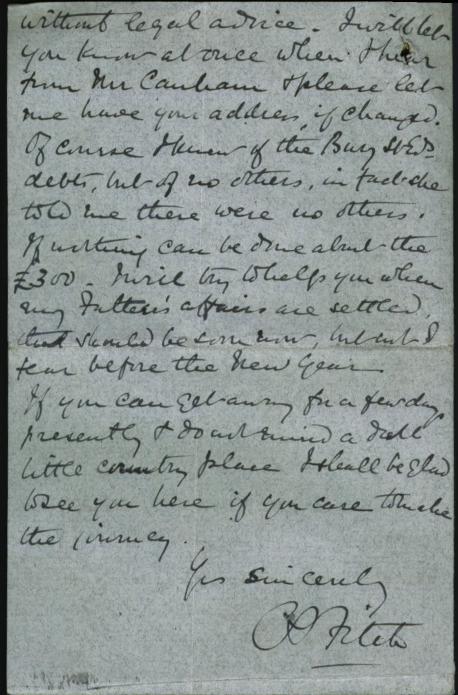

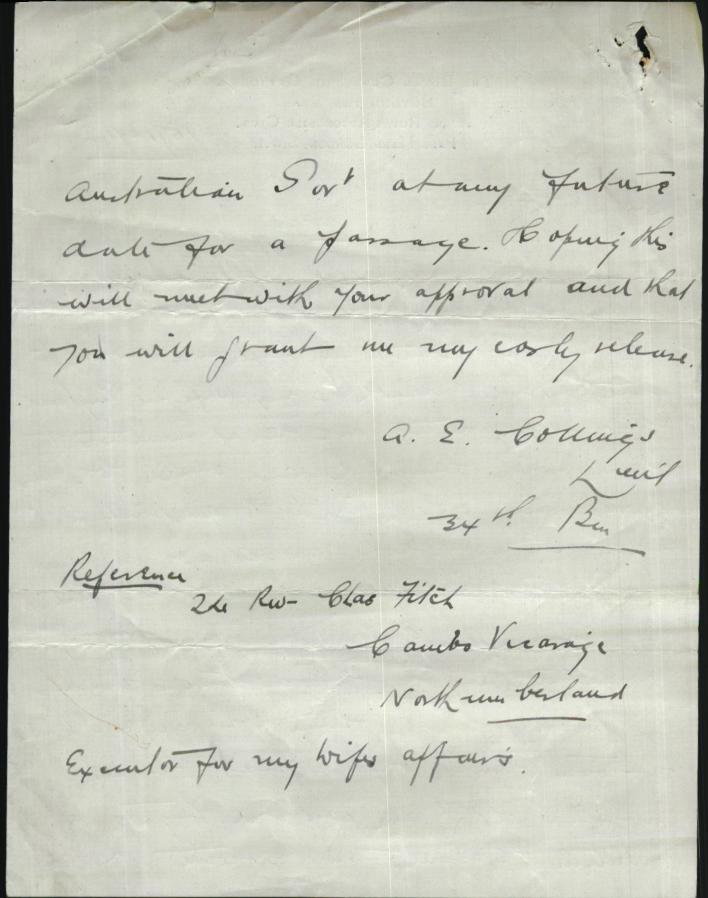
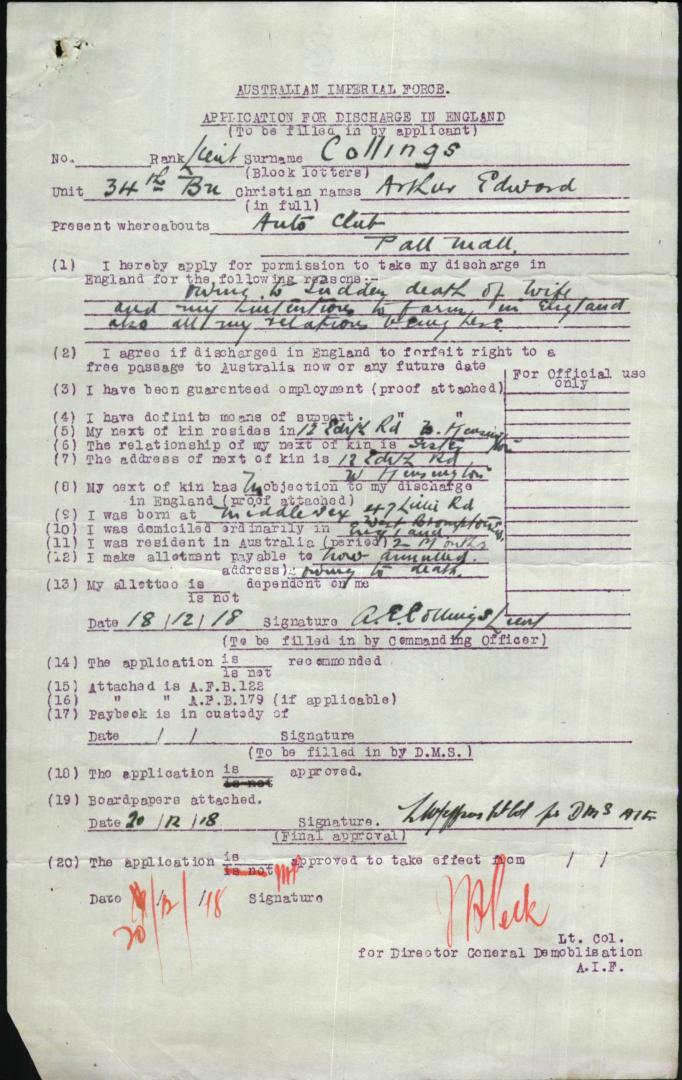
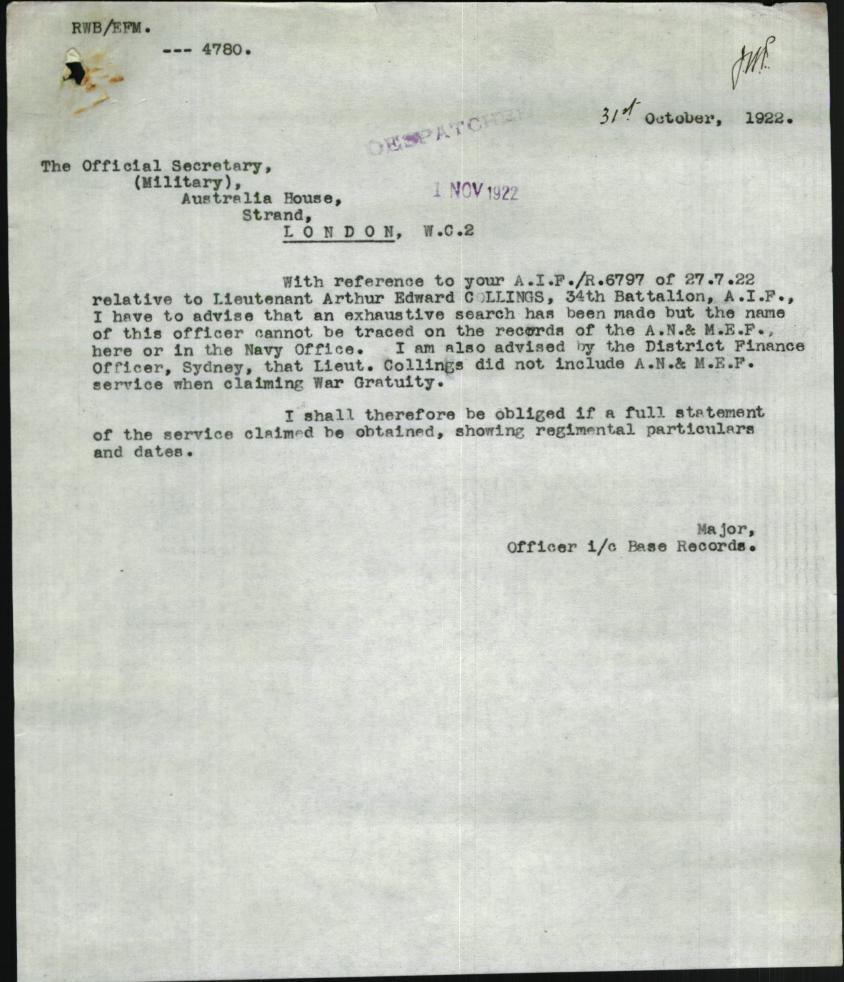
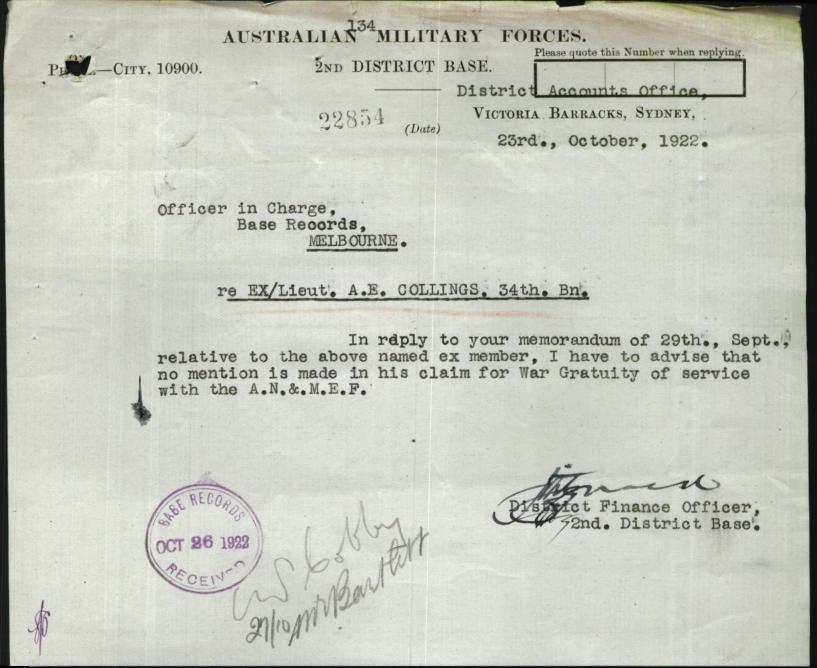
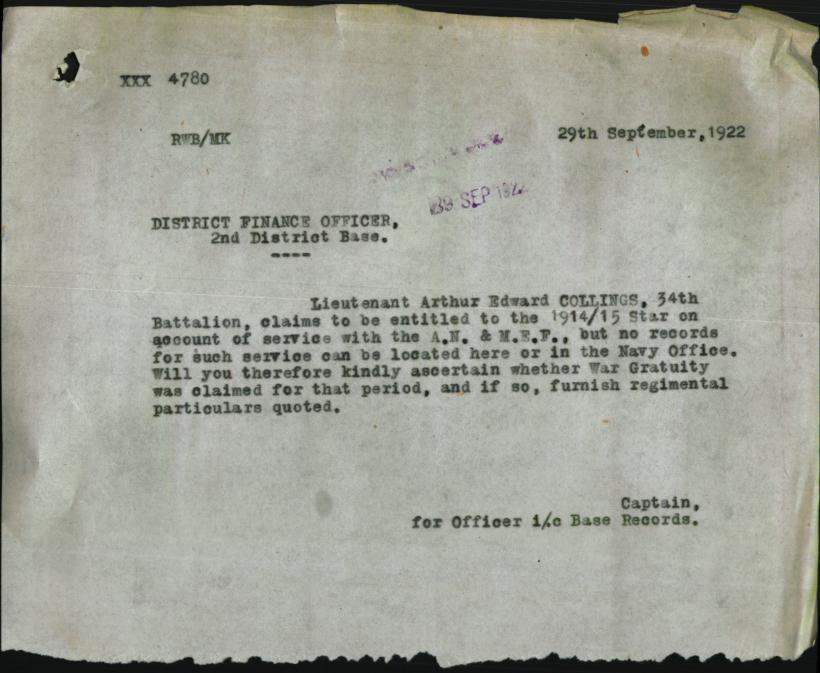

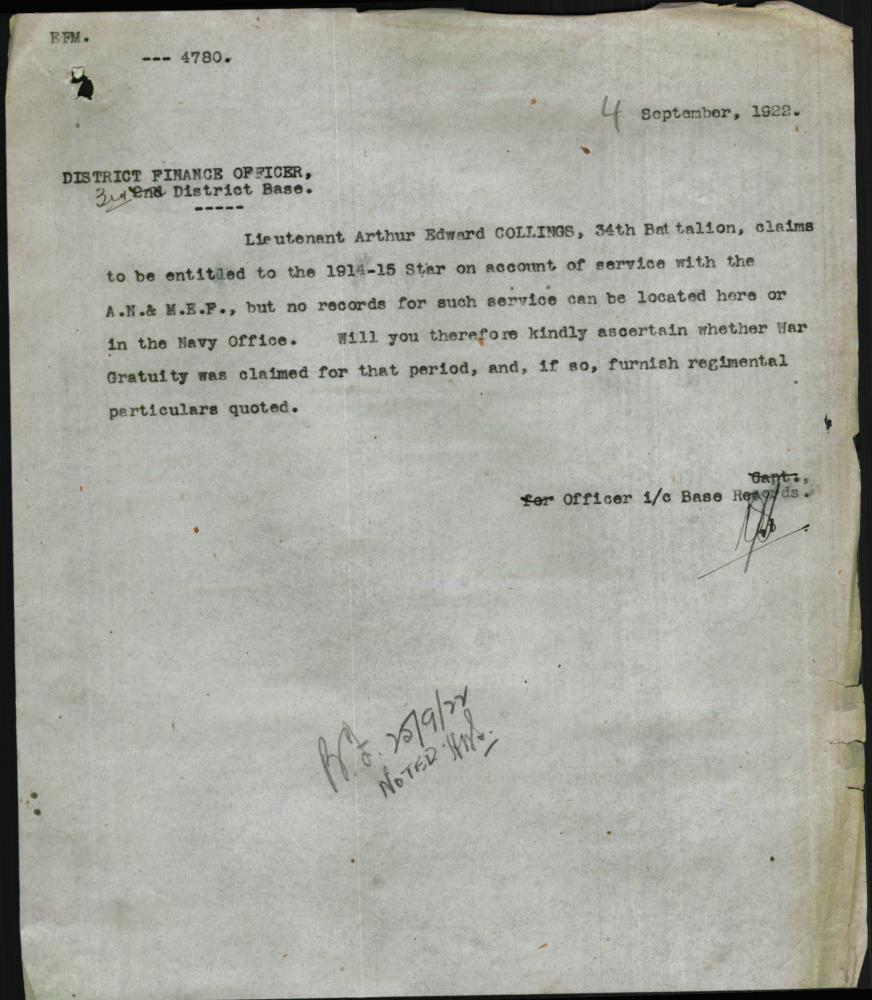
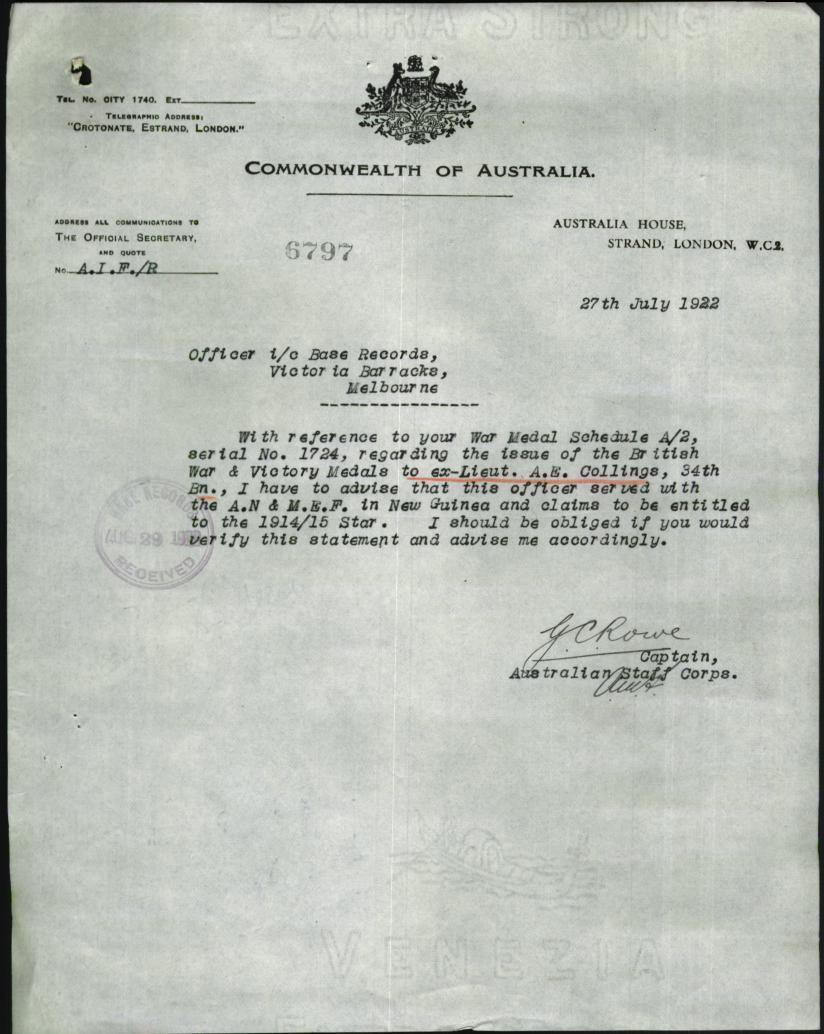
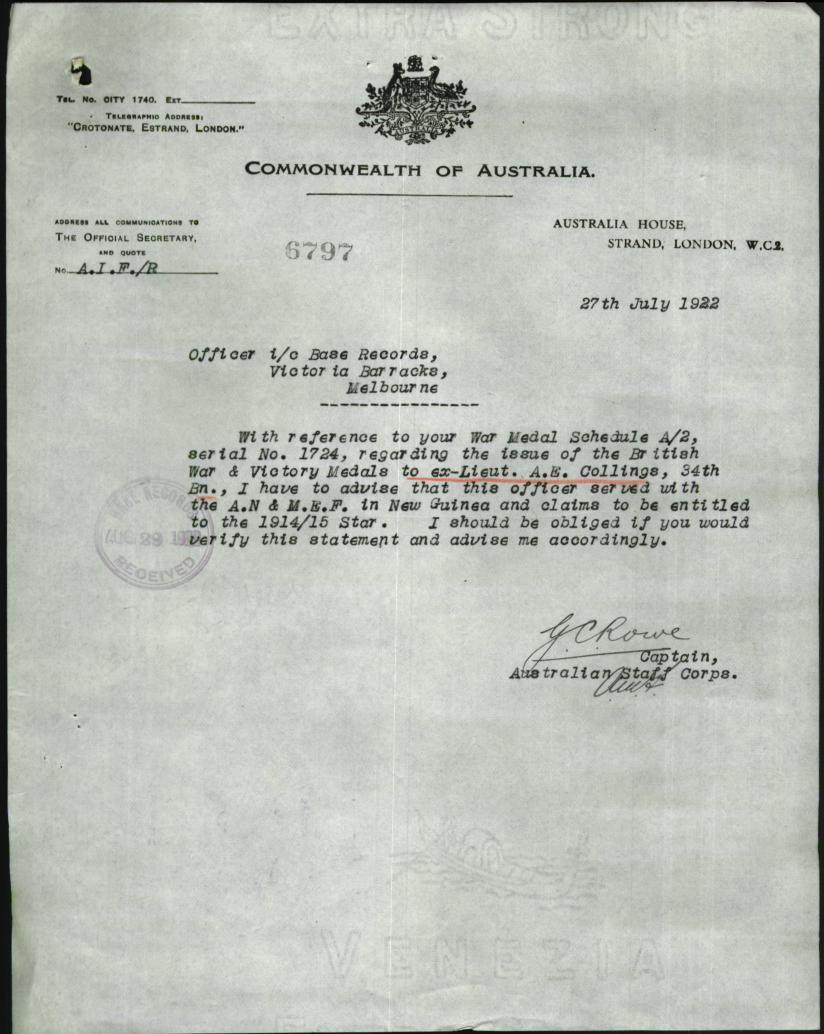
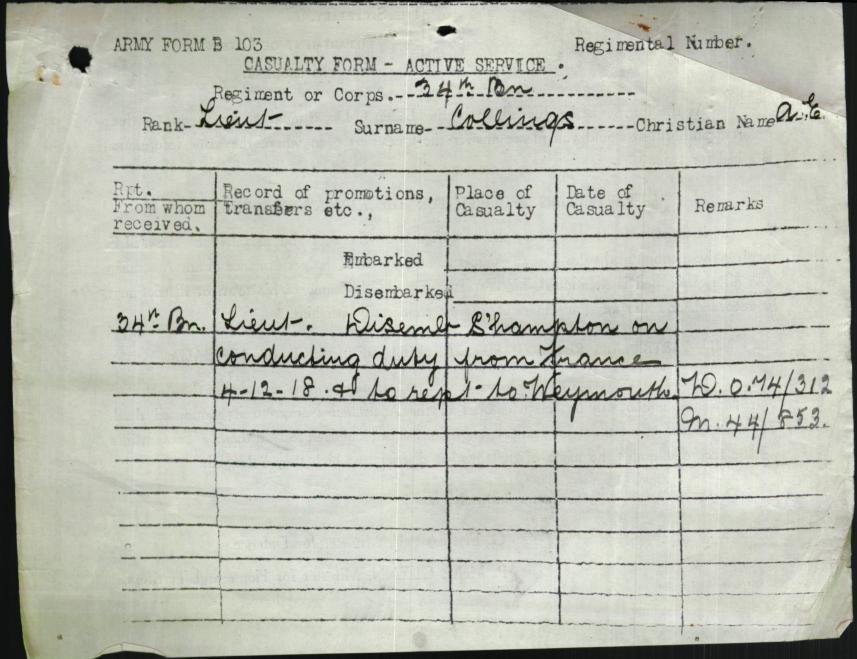
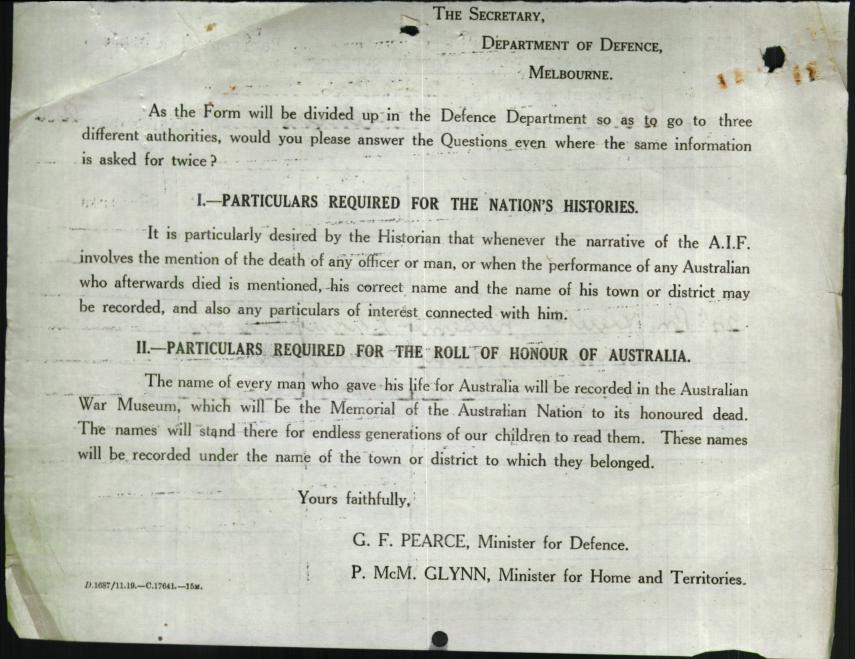
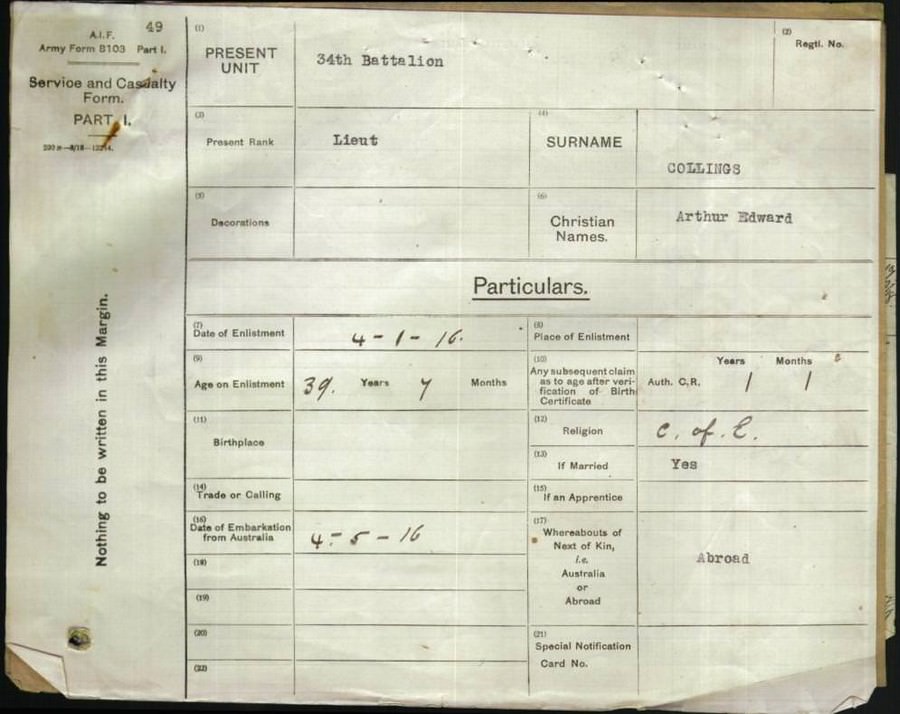
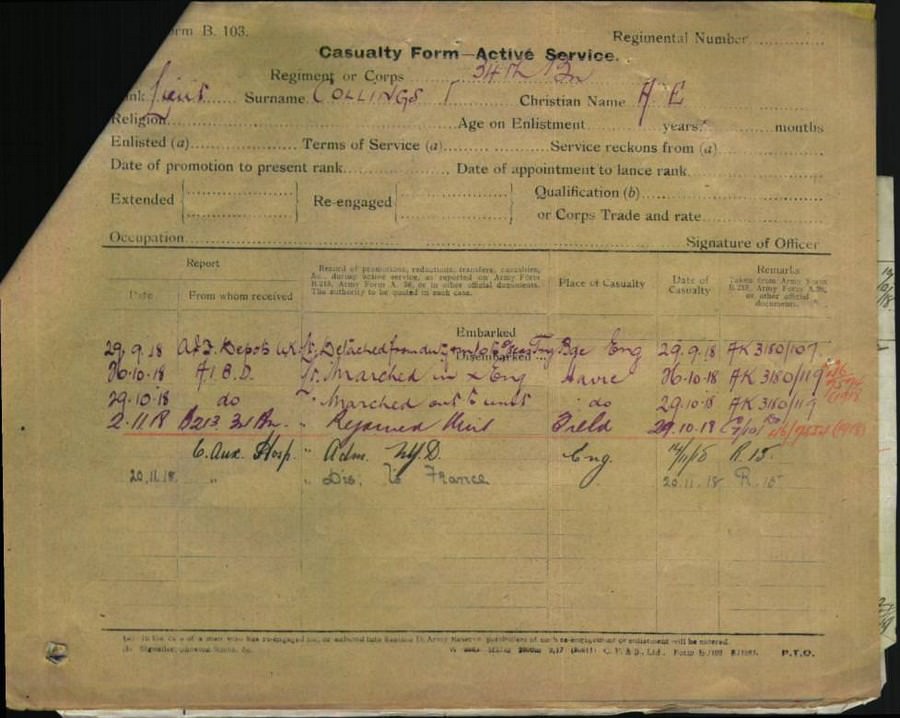

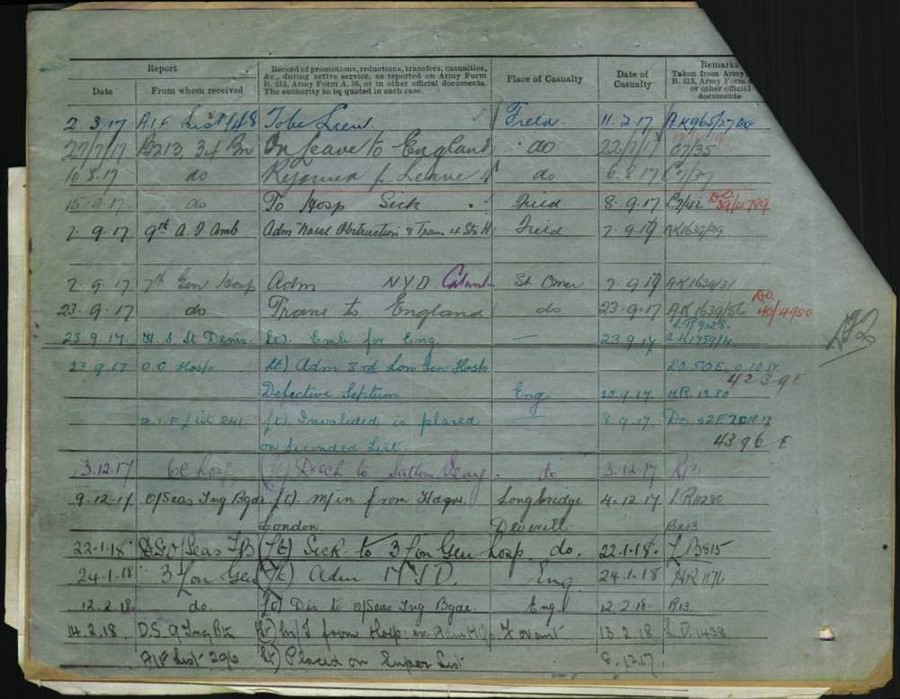

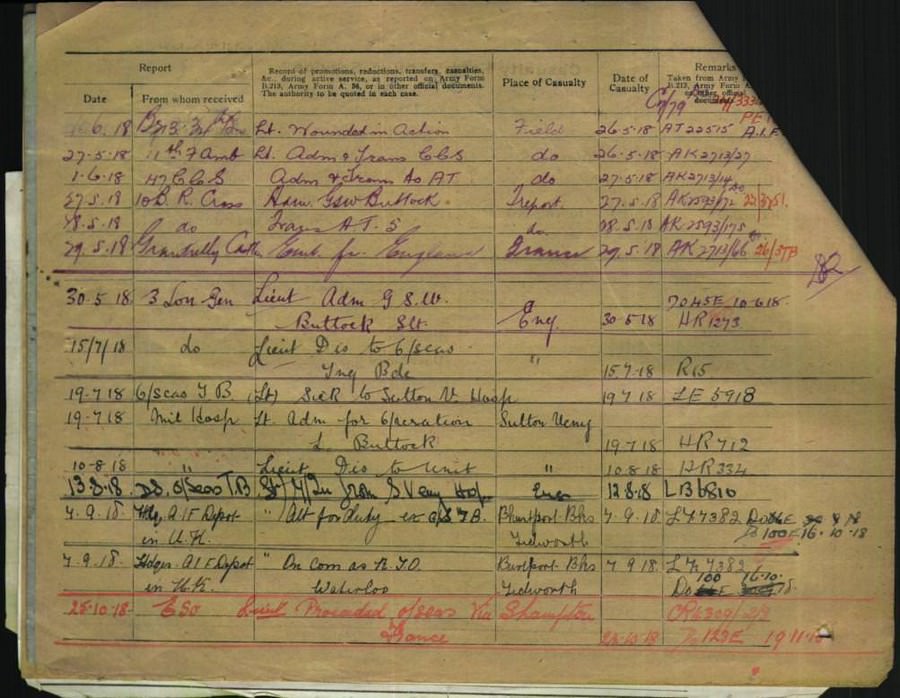
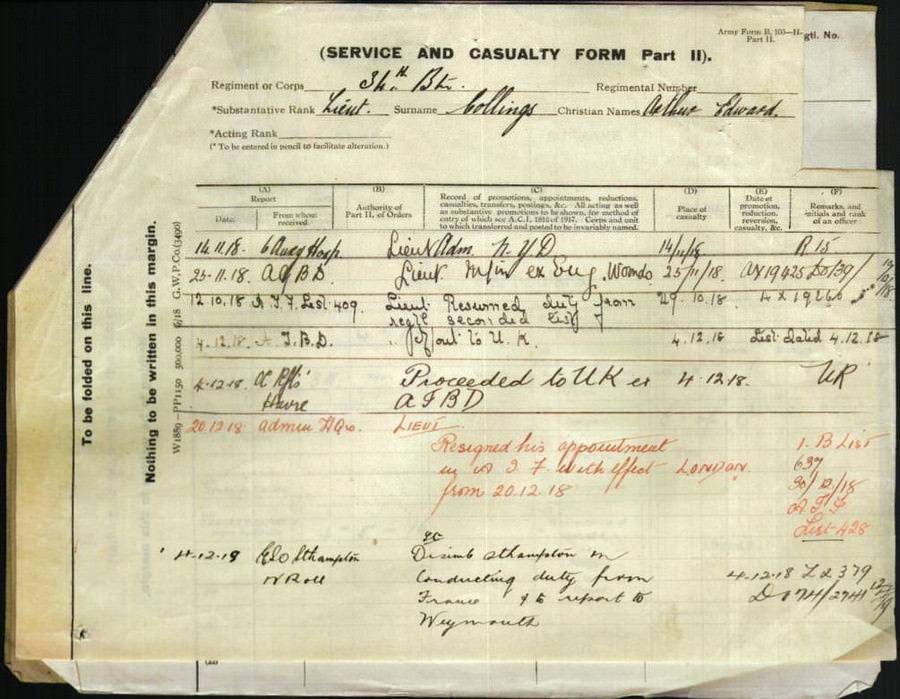
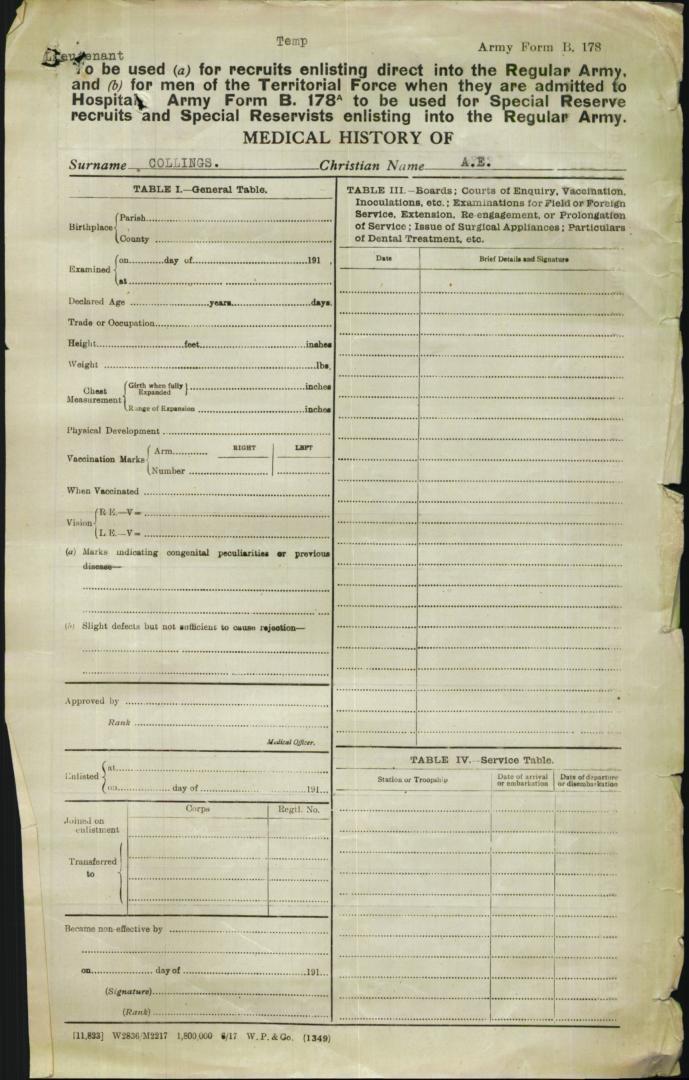
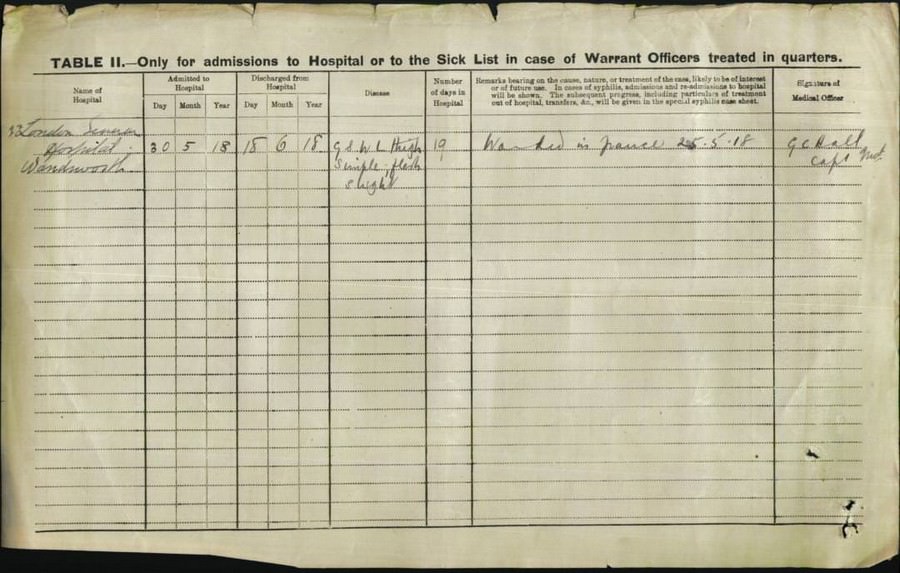

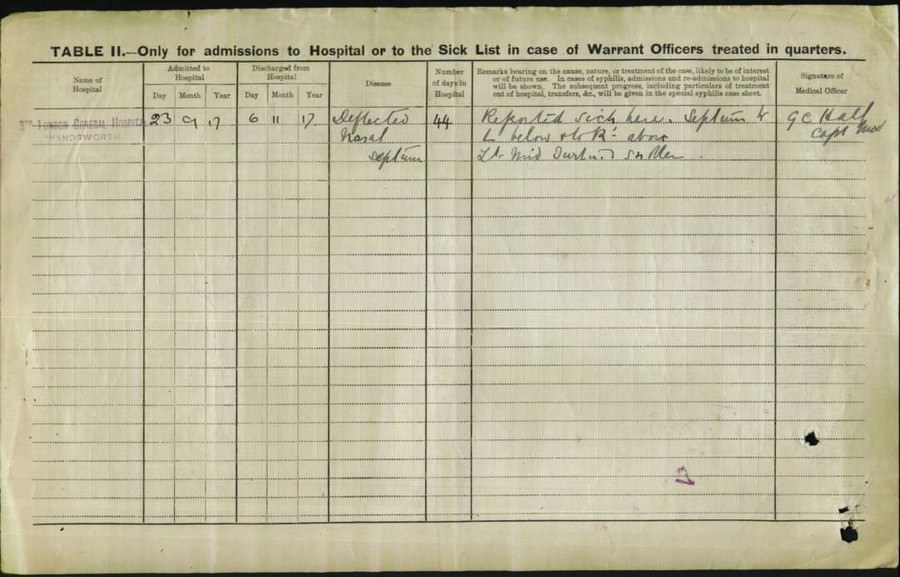
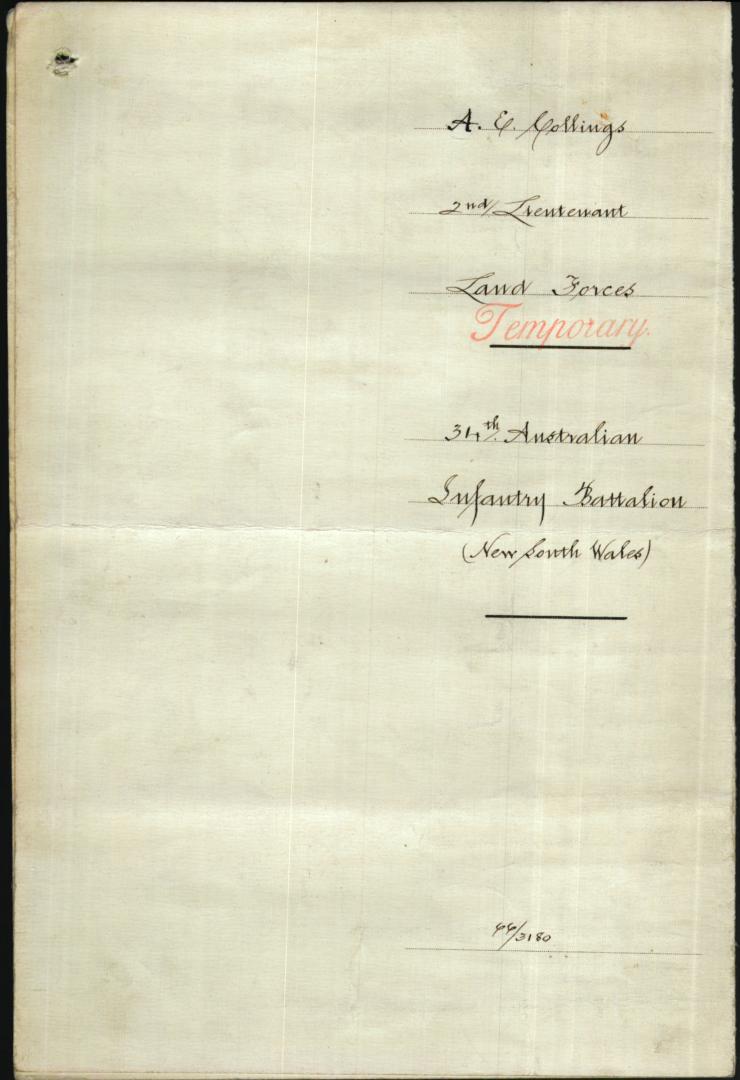
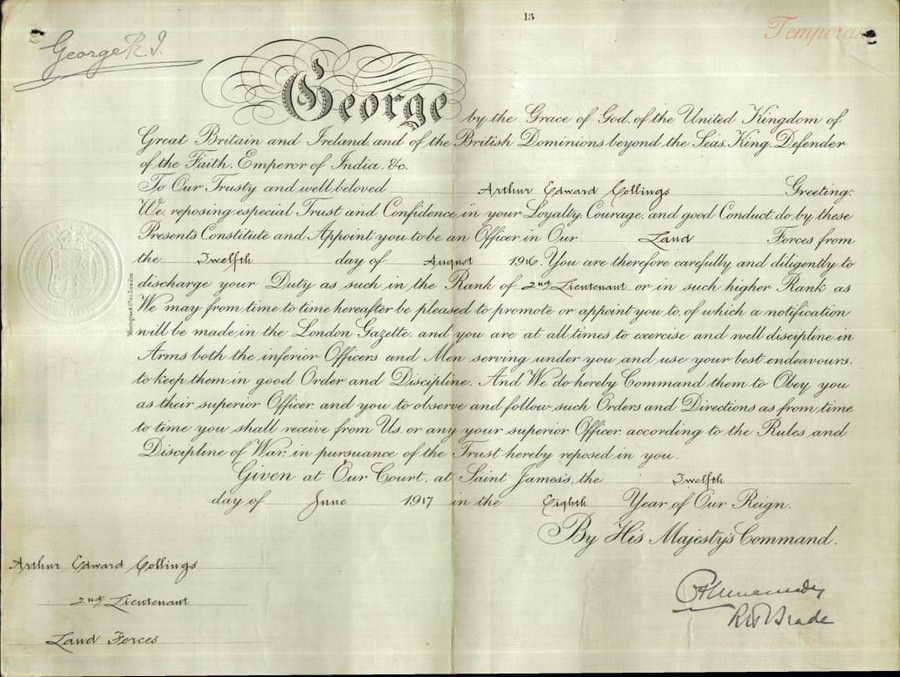
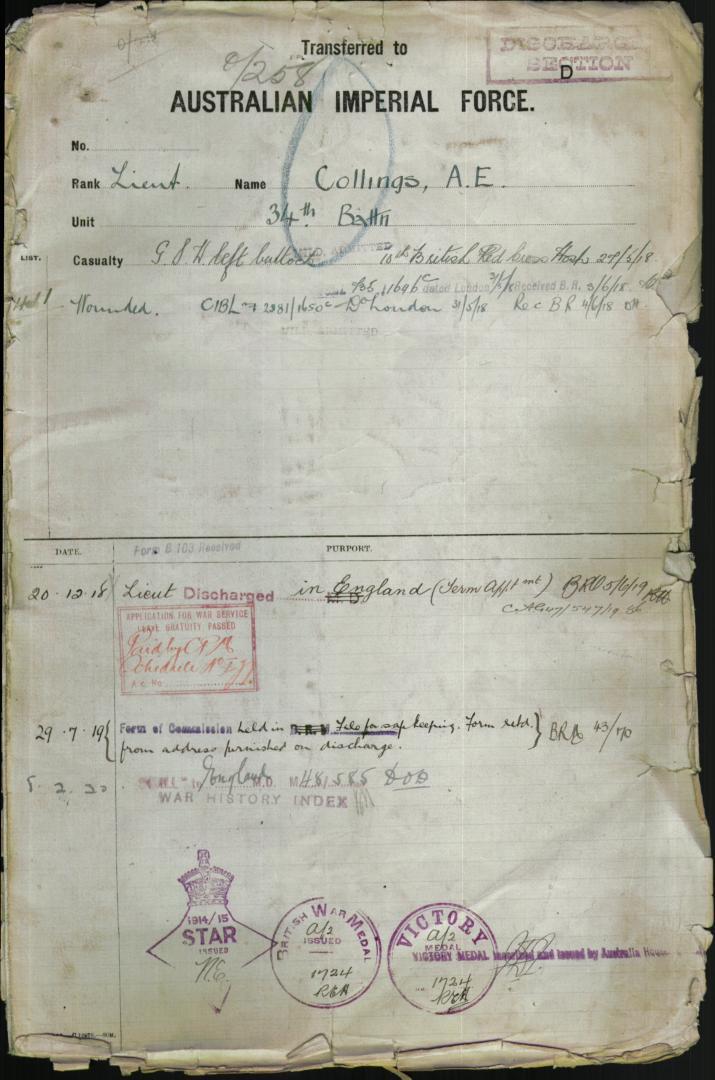
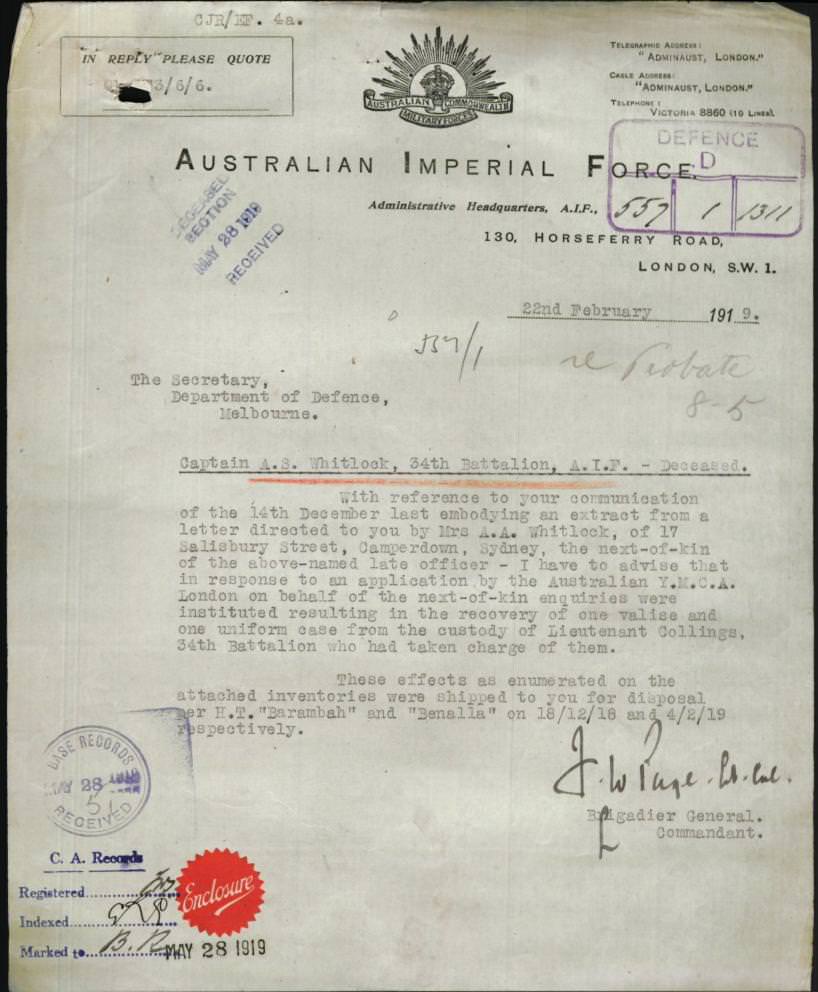
Captain: Arthur Sidney WHITLOCK (A Company) Soldier Camperdown, N.S.W.
© Commonwealth of Australia (National Archives of Australia)
Under Construction; 06/07/2009-04/02/2017.
